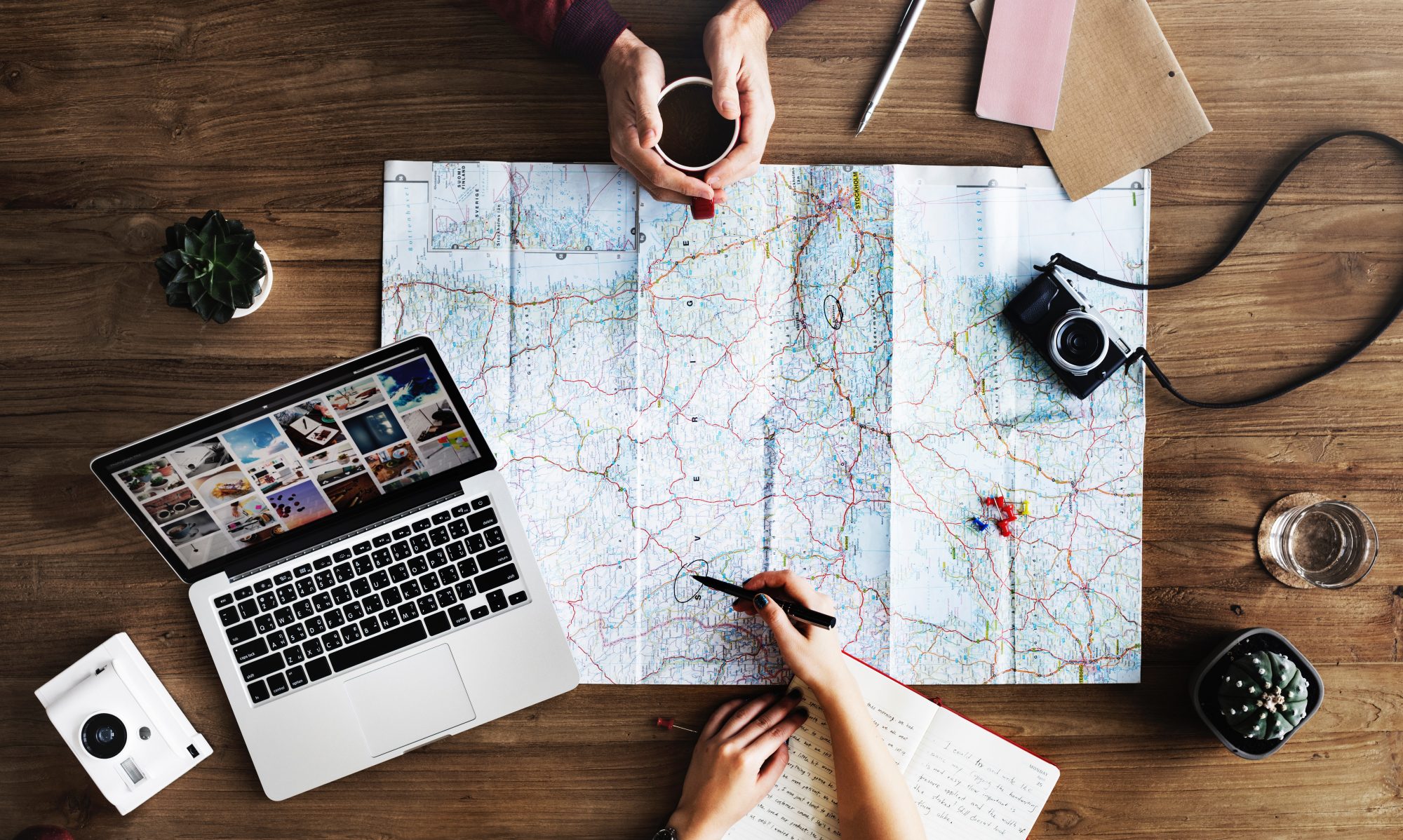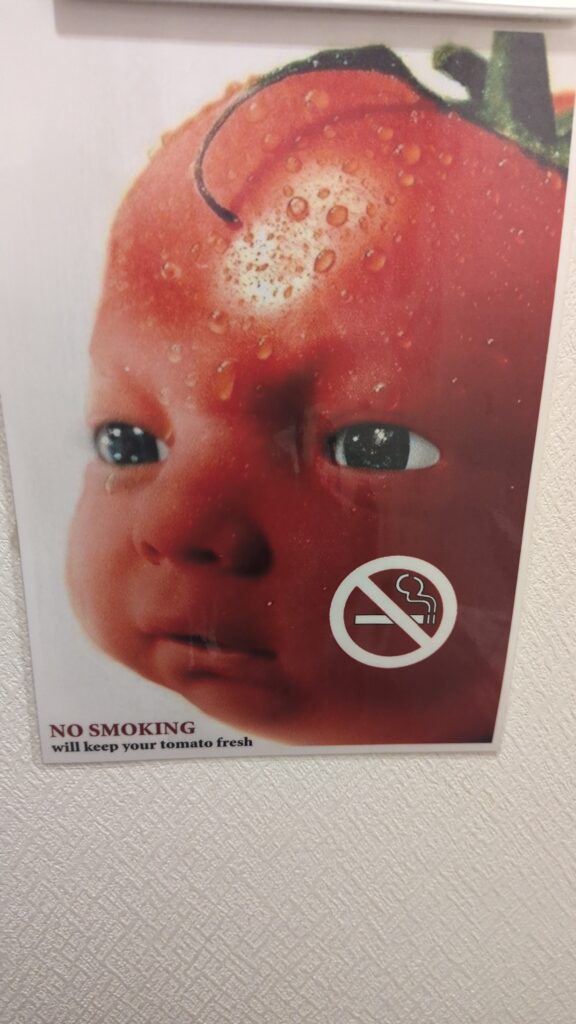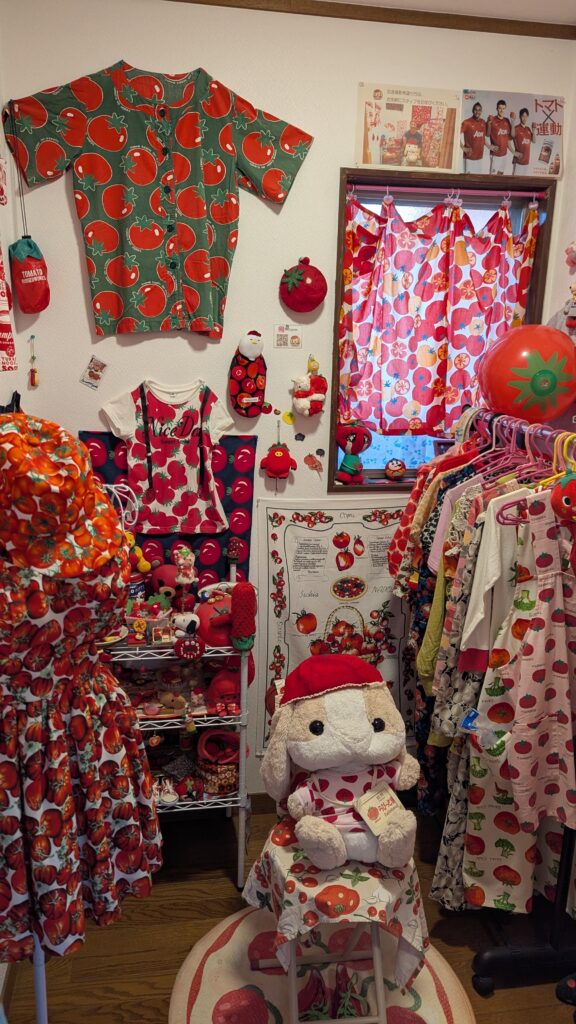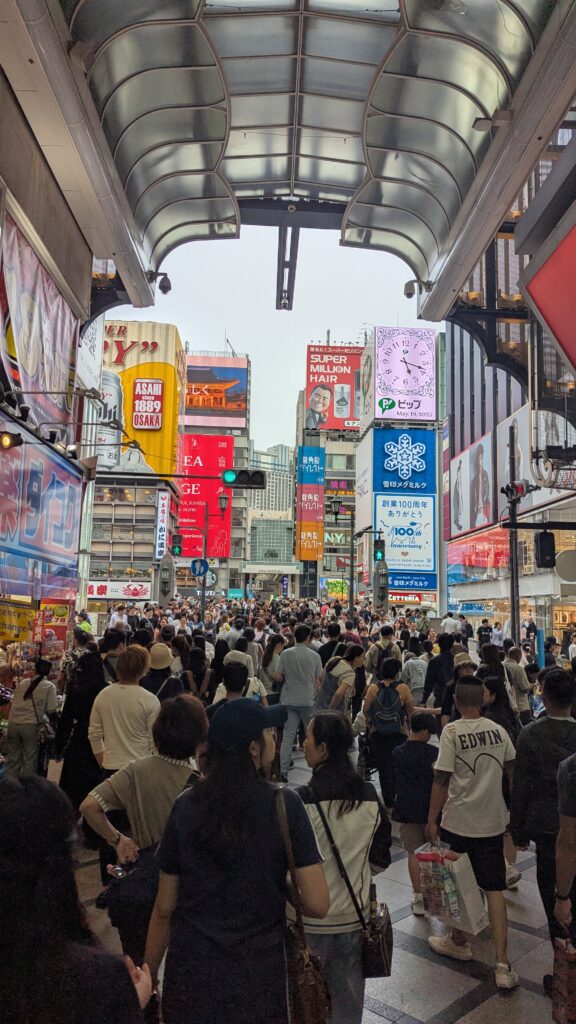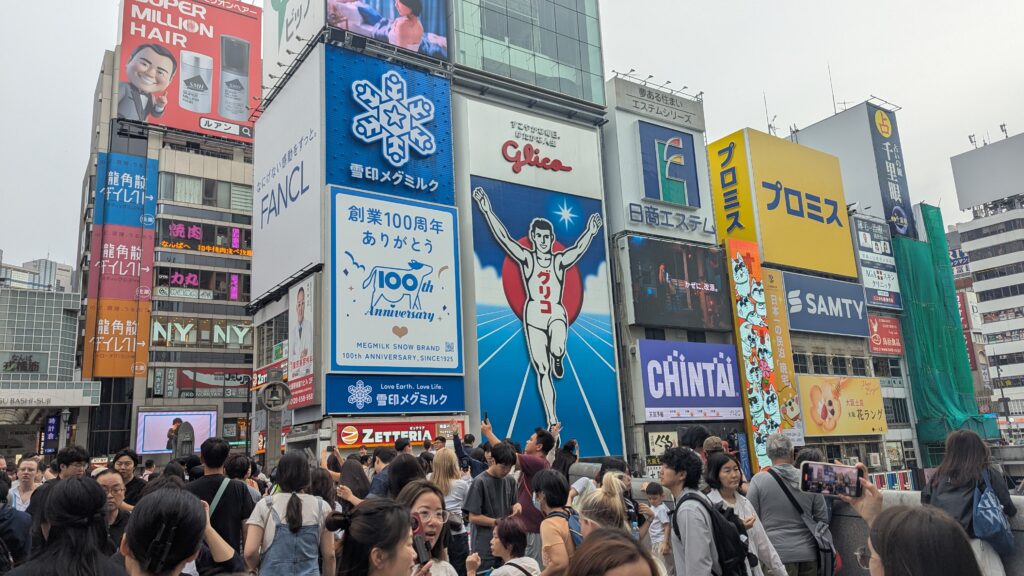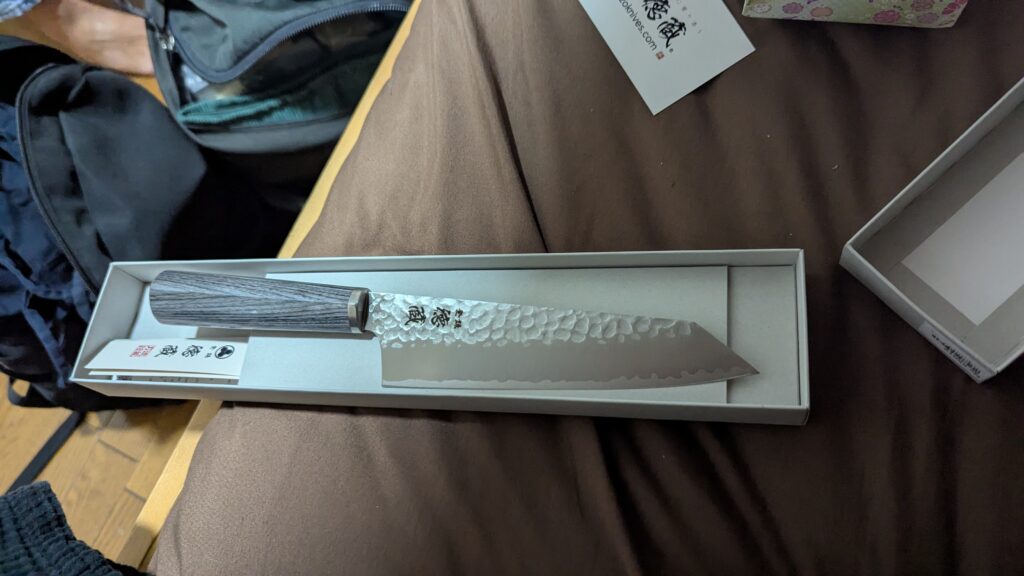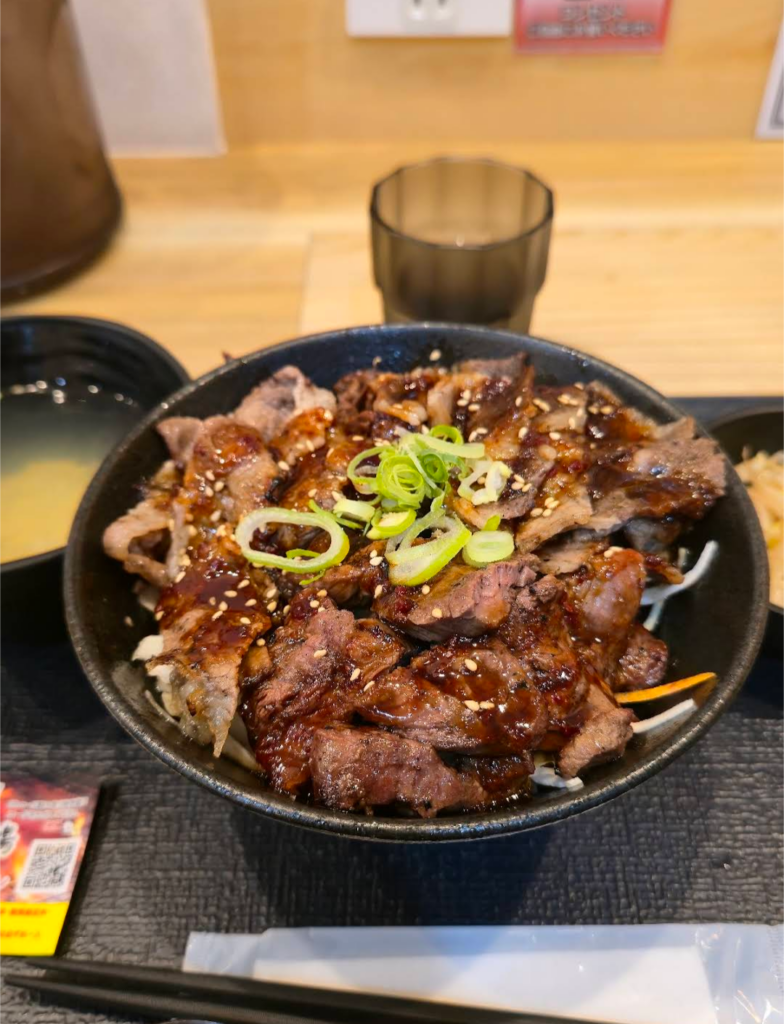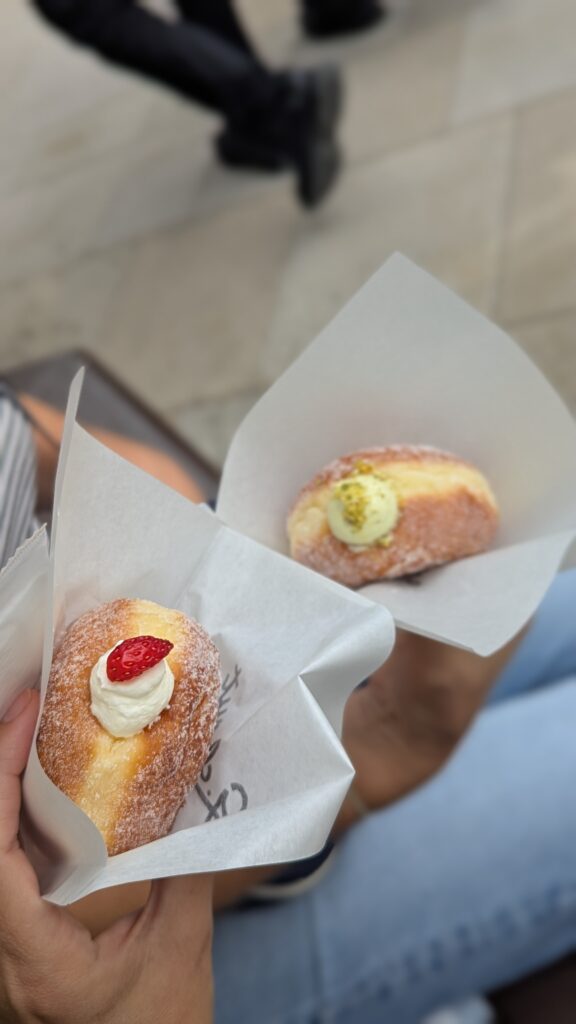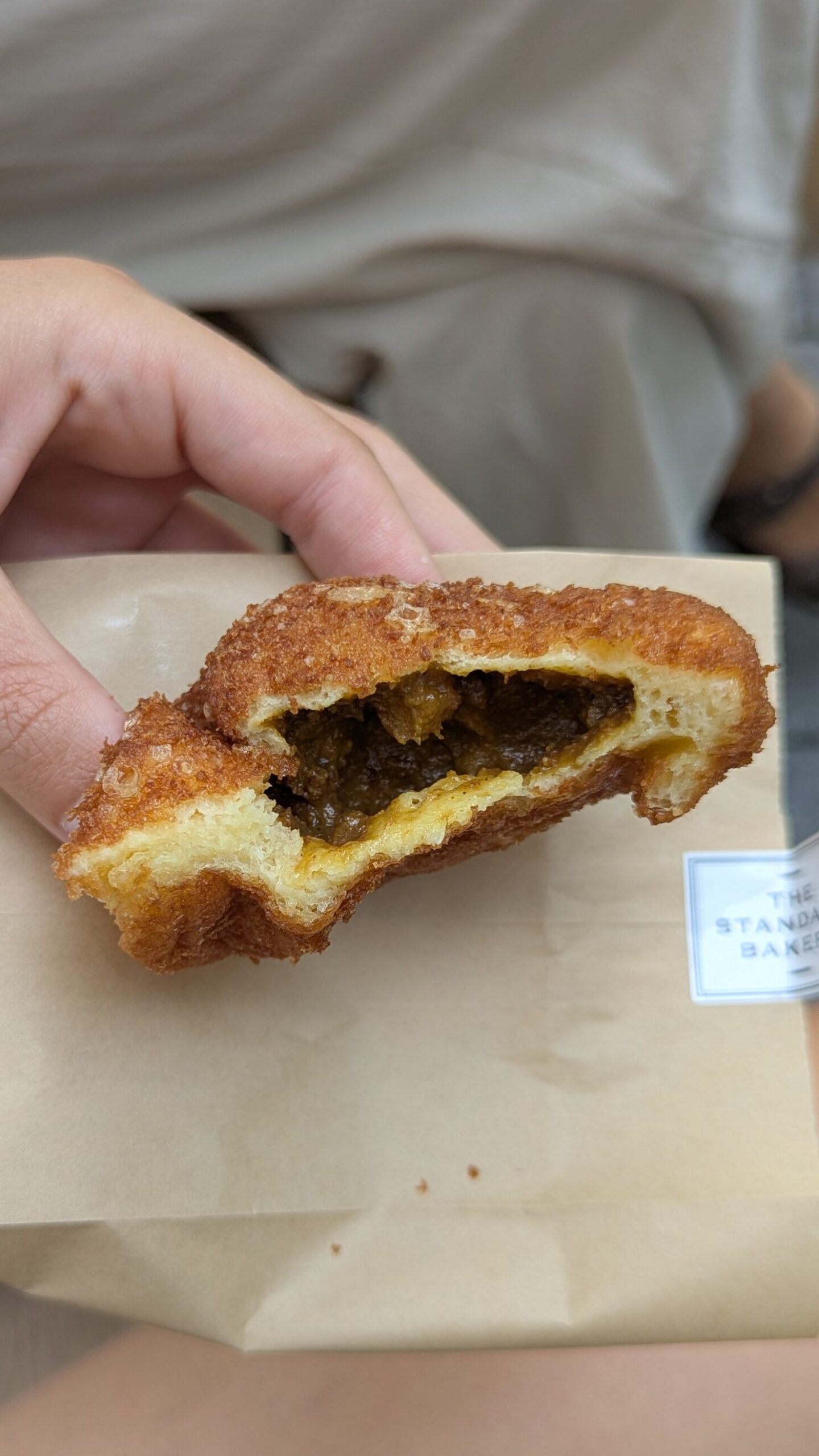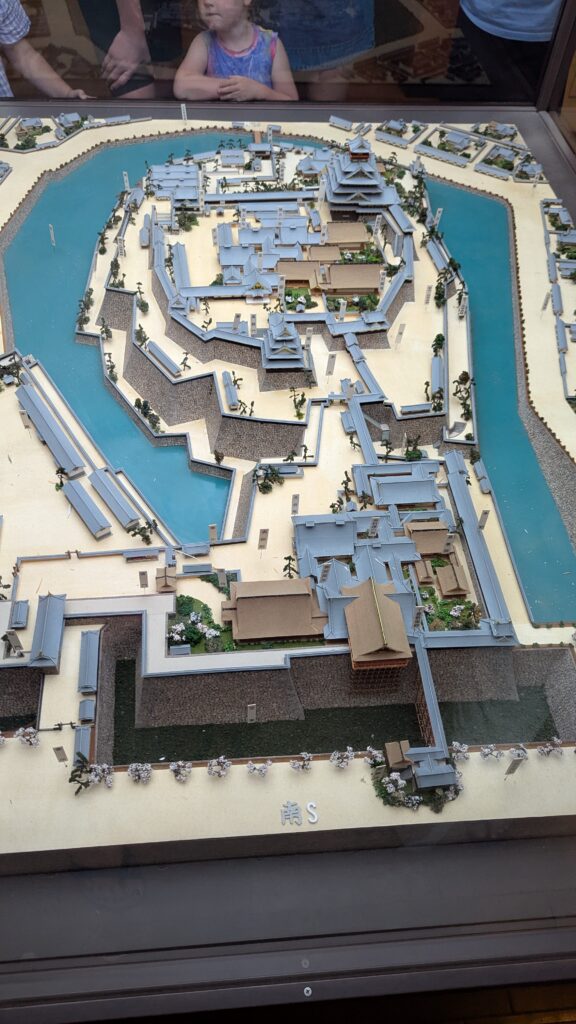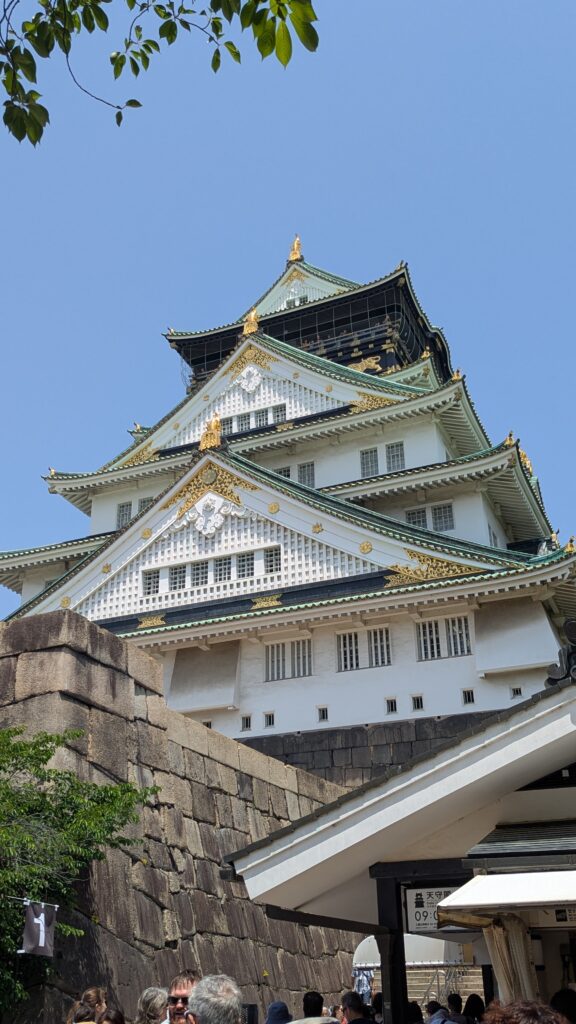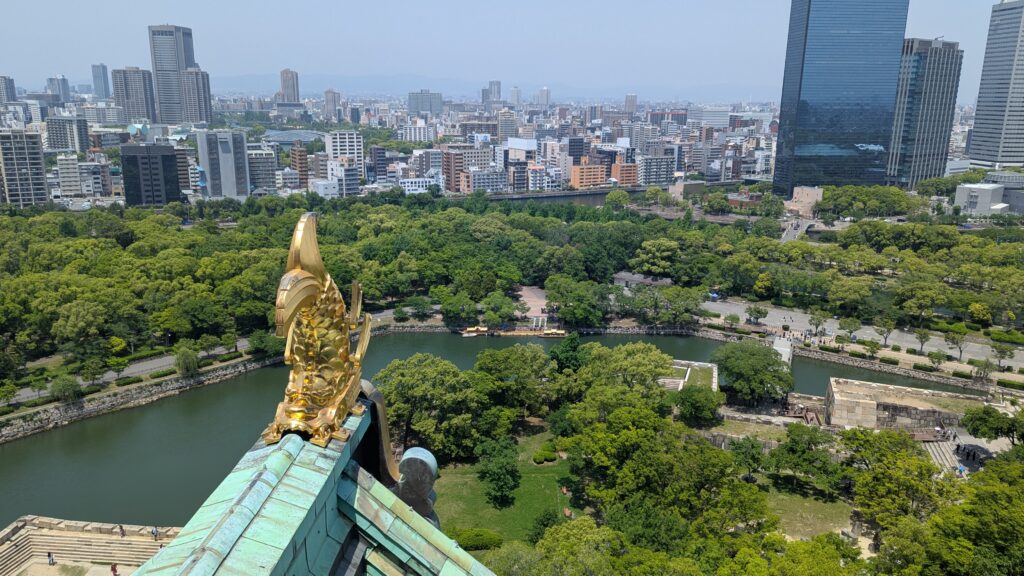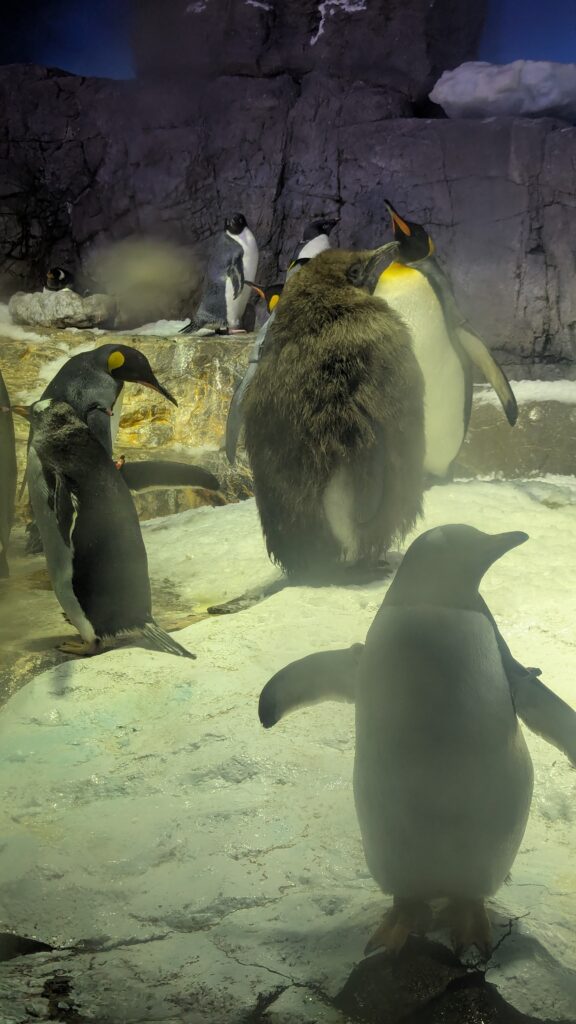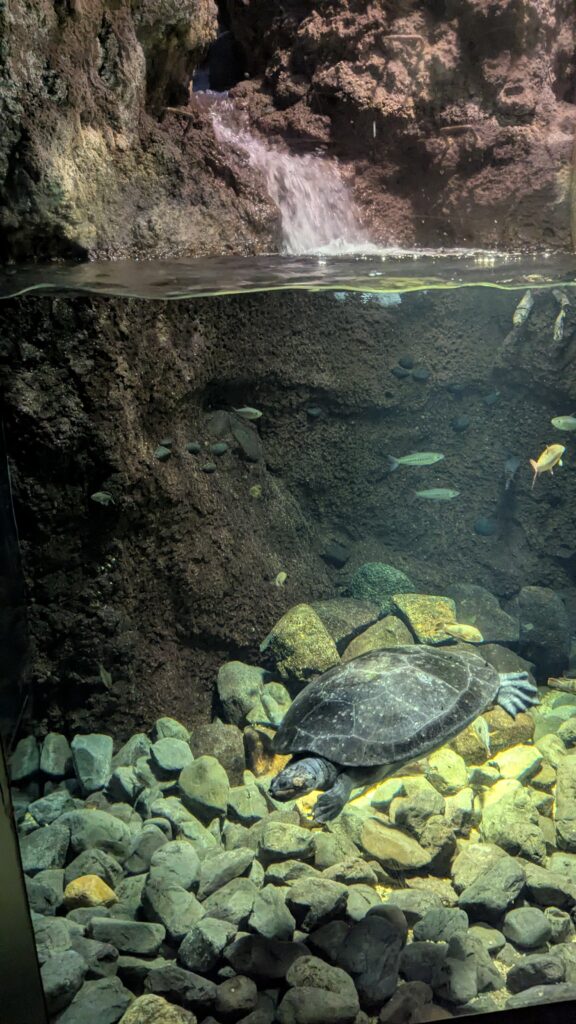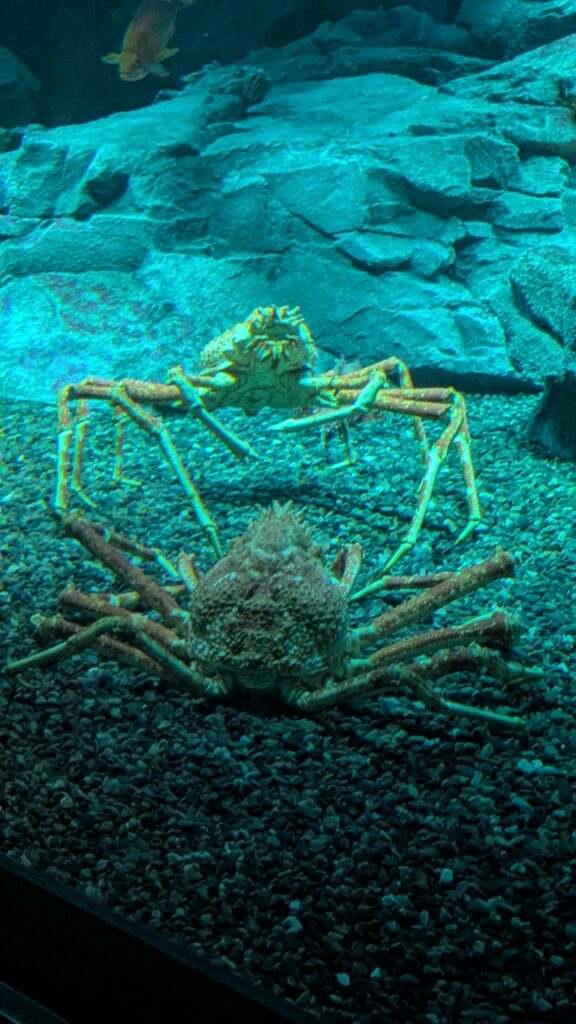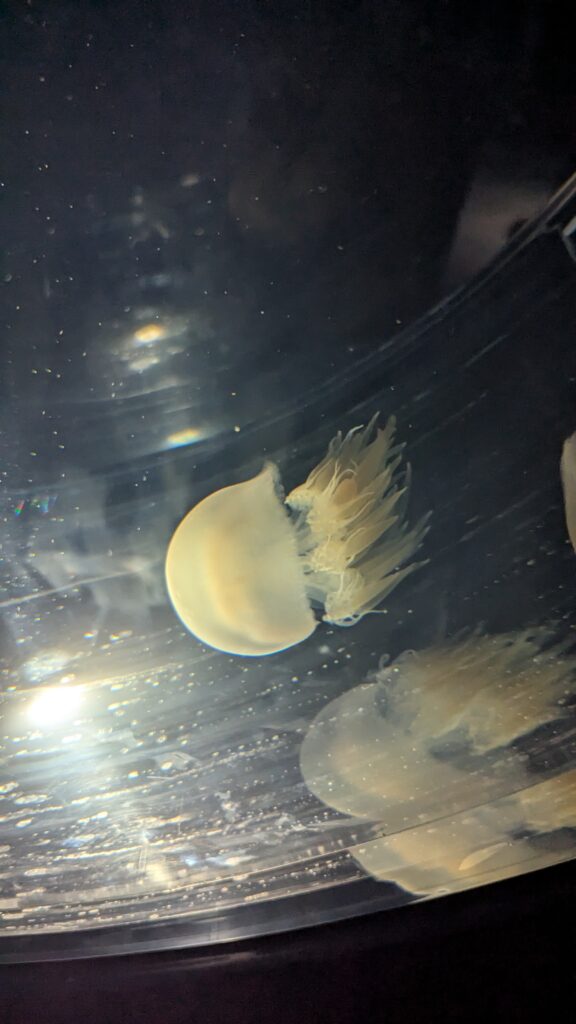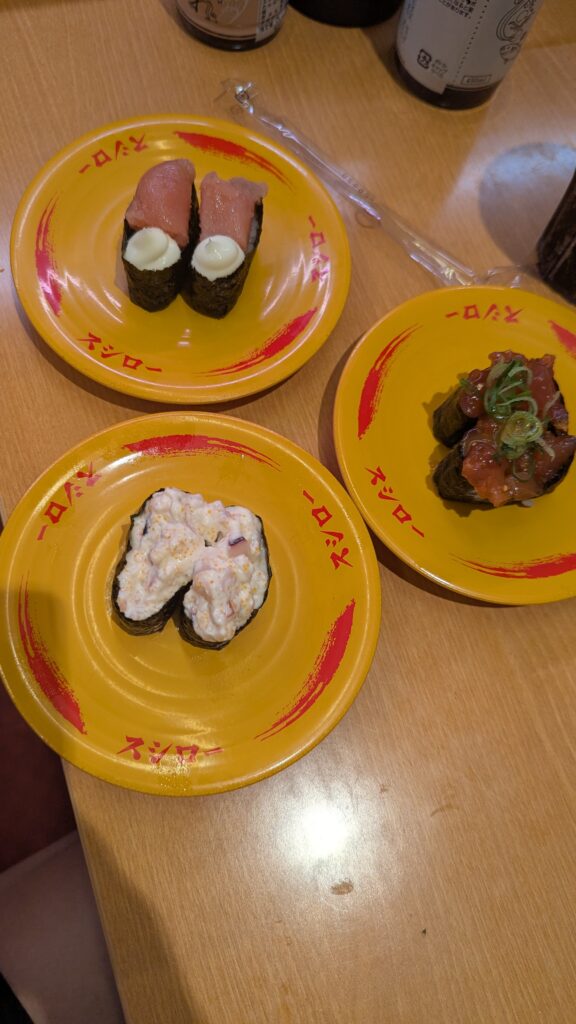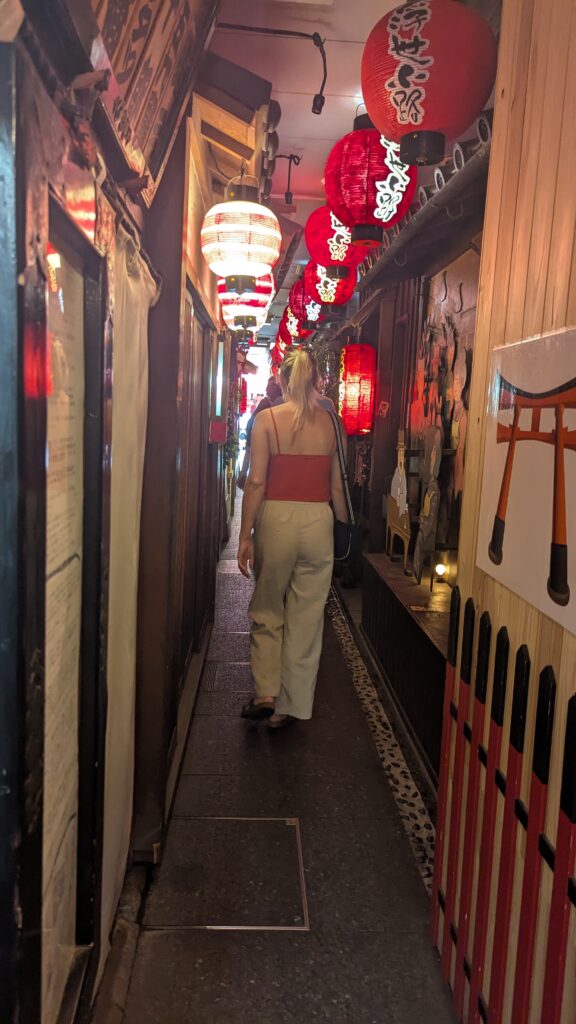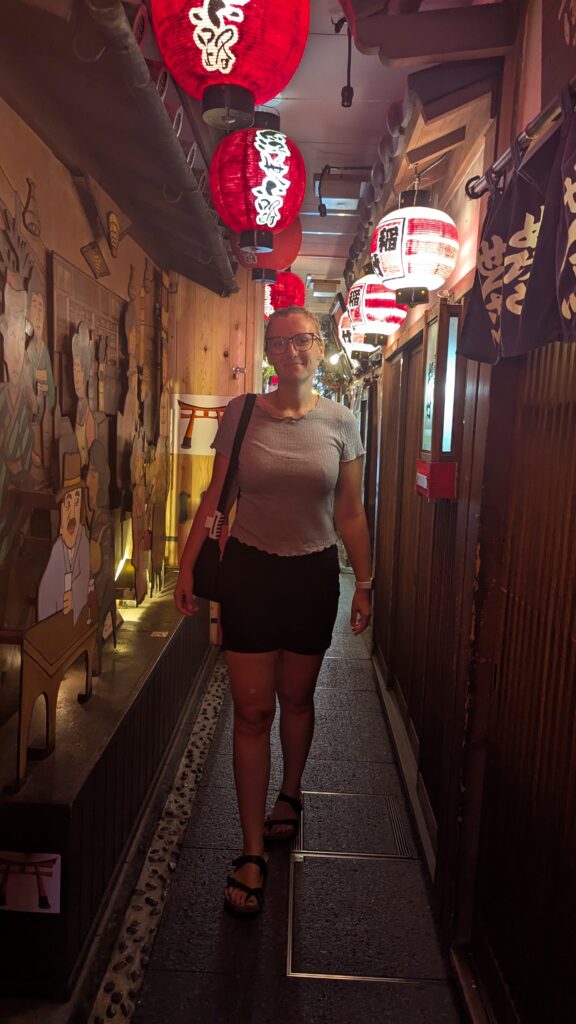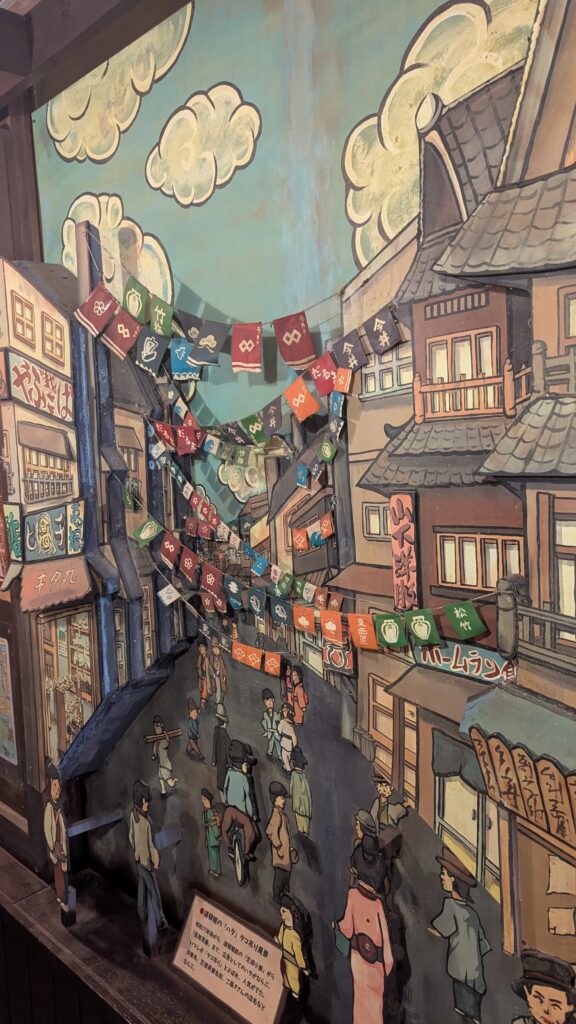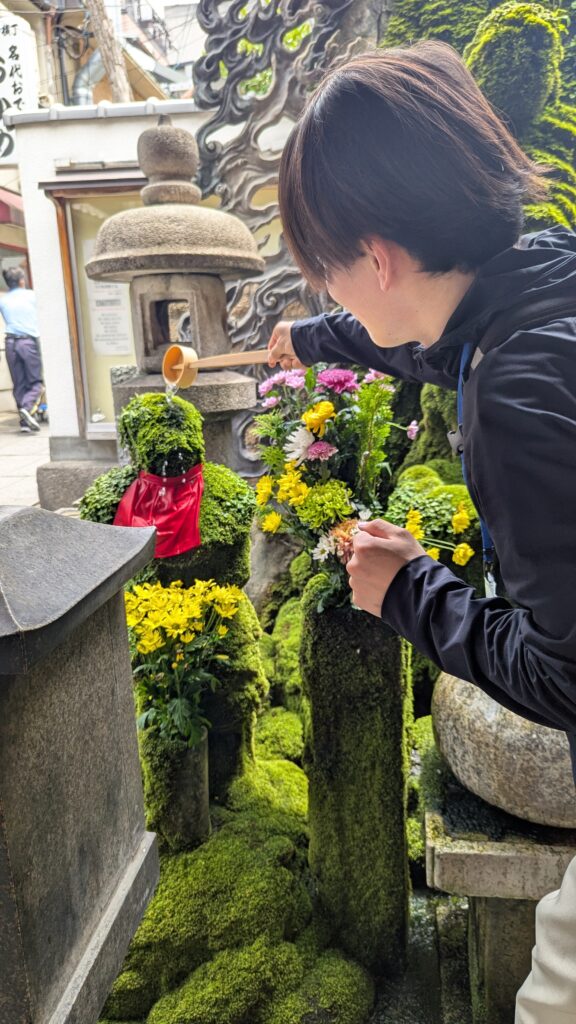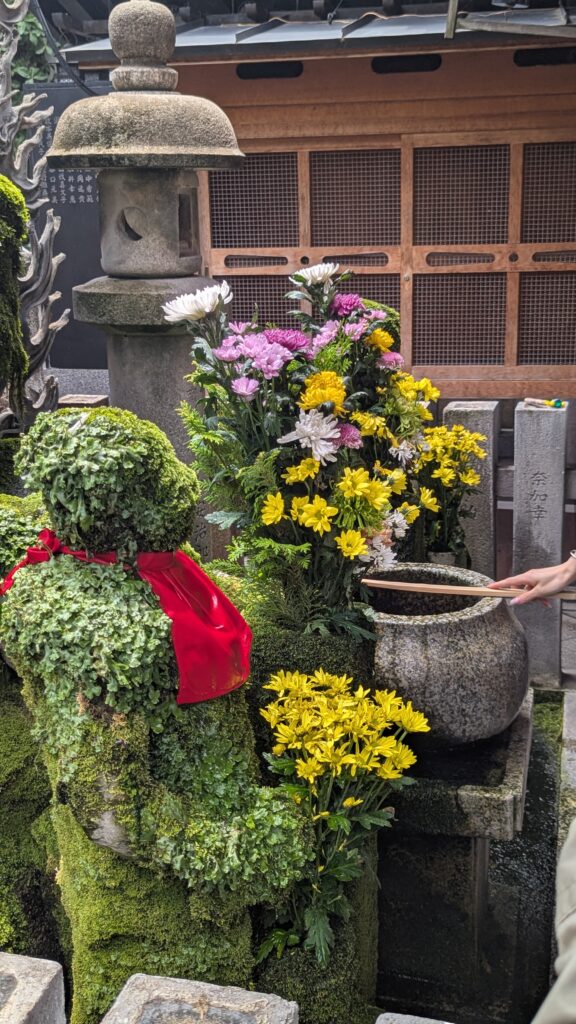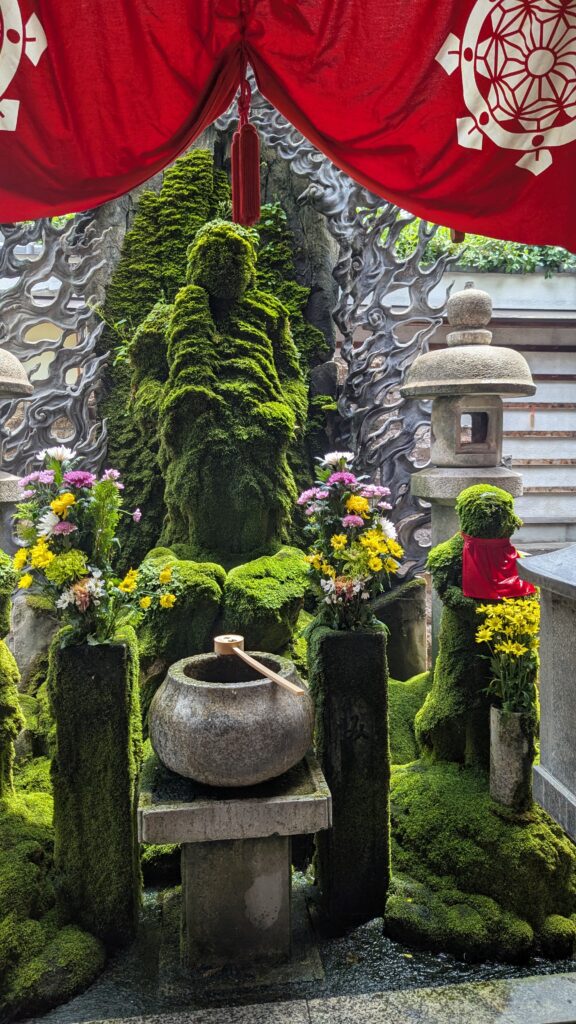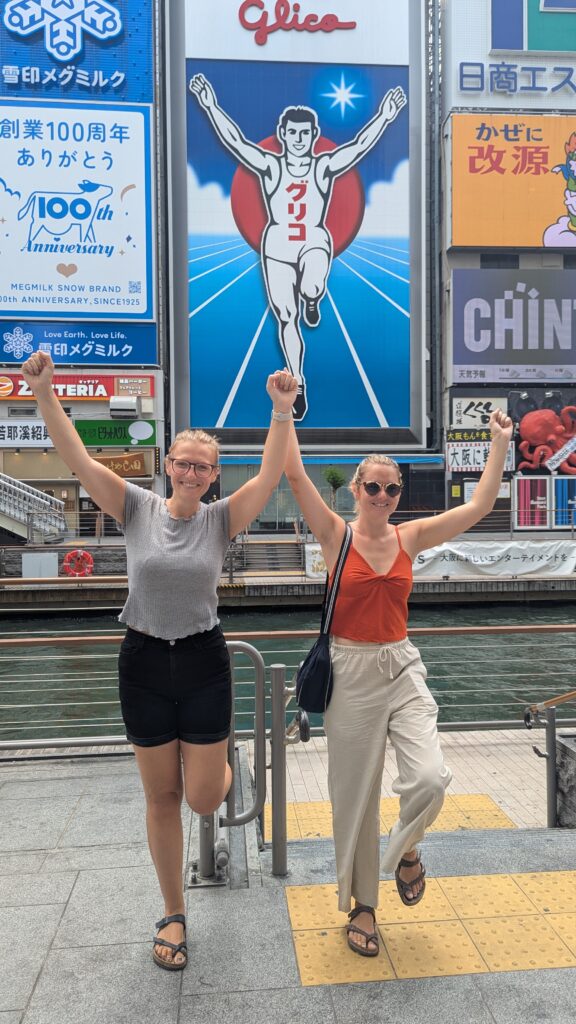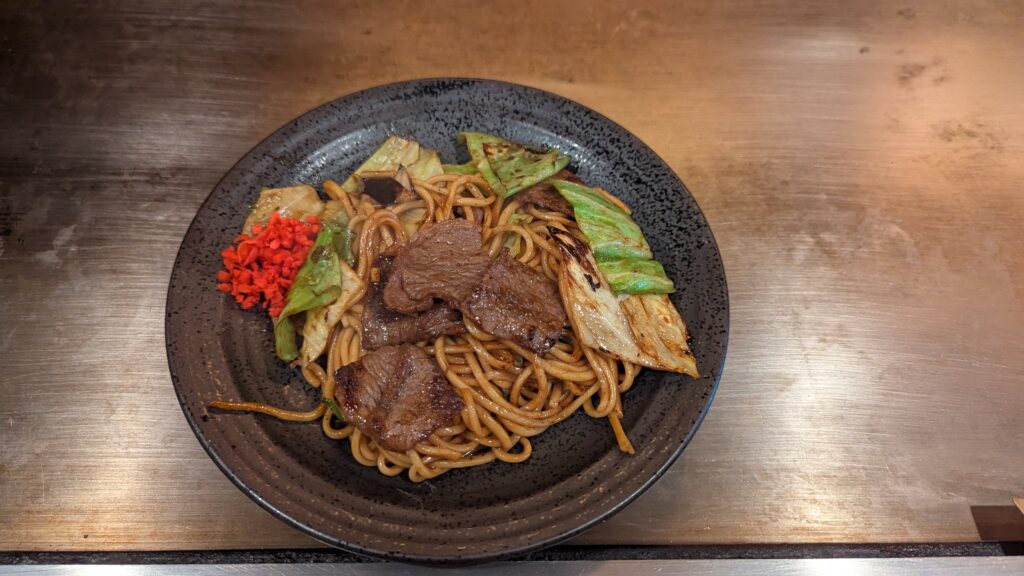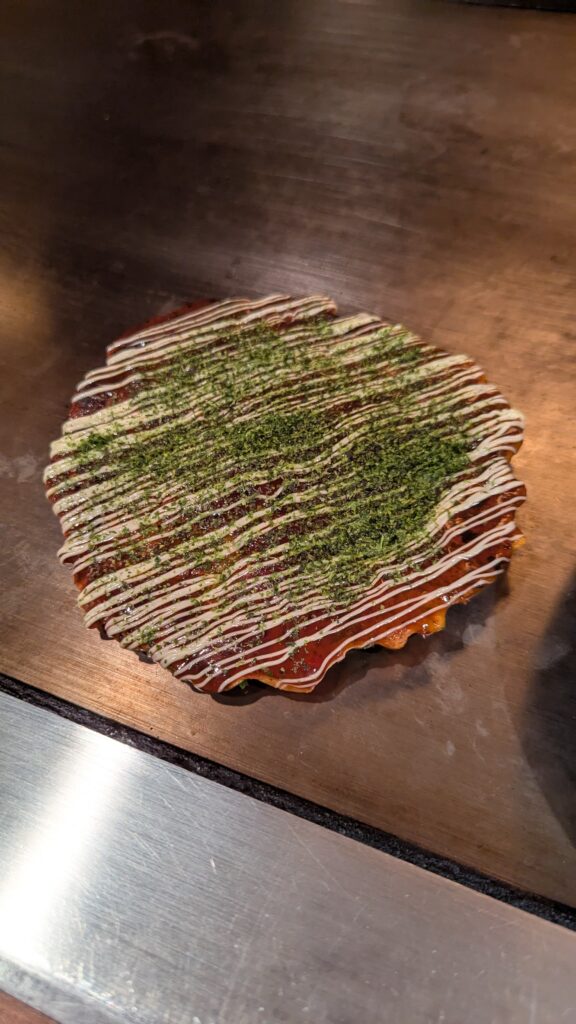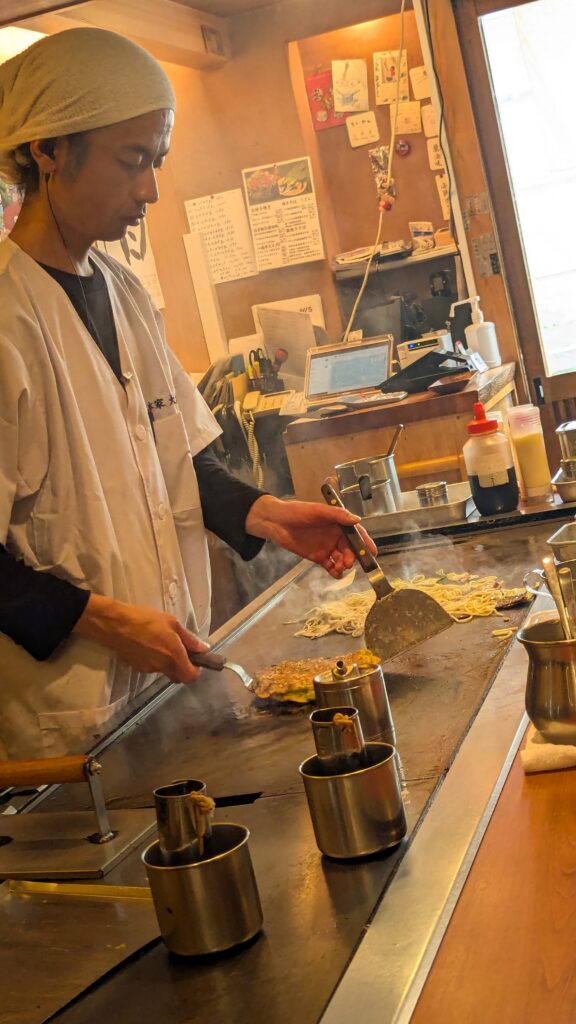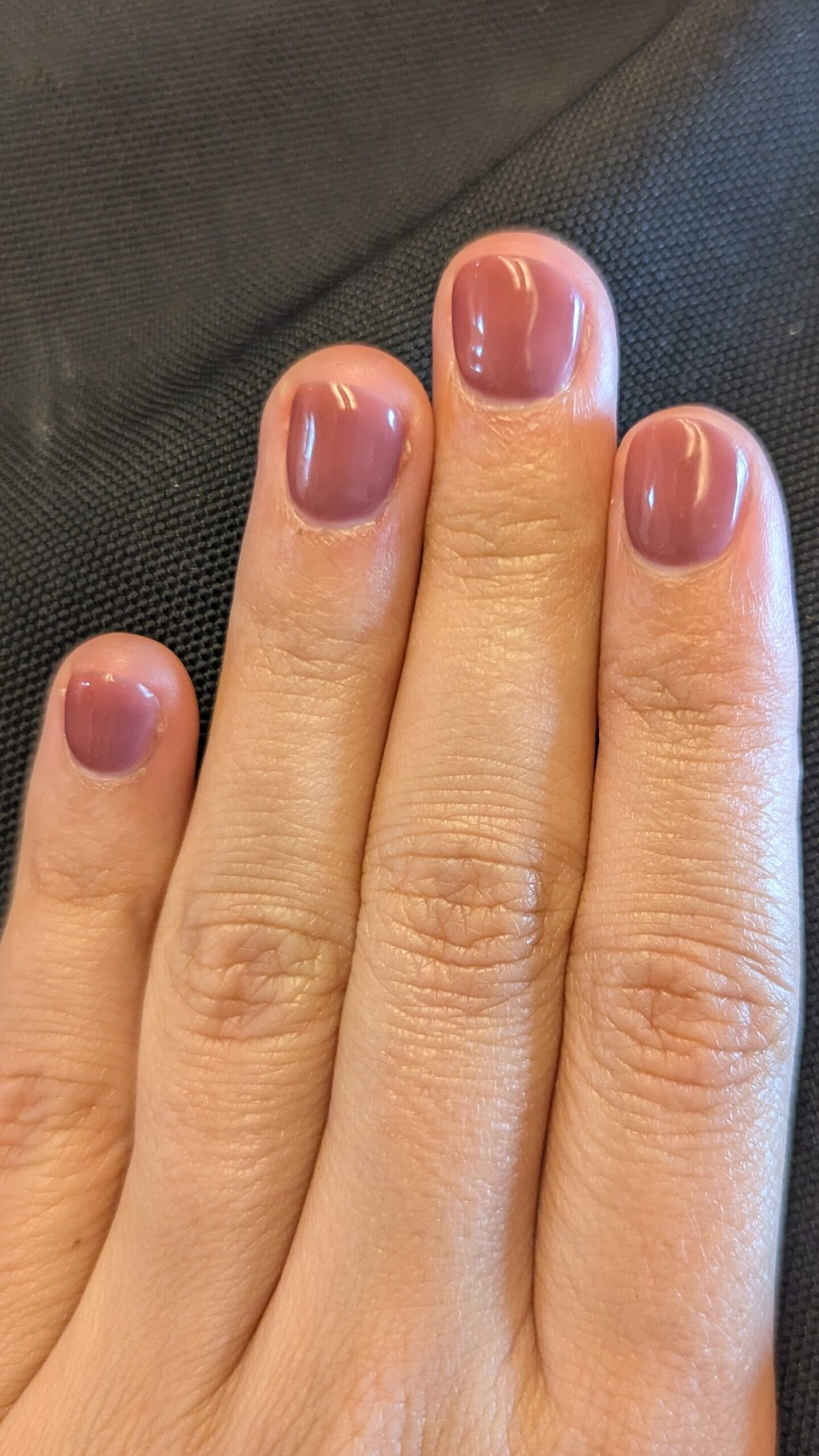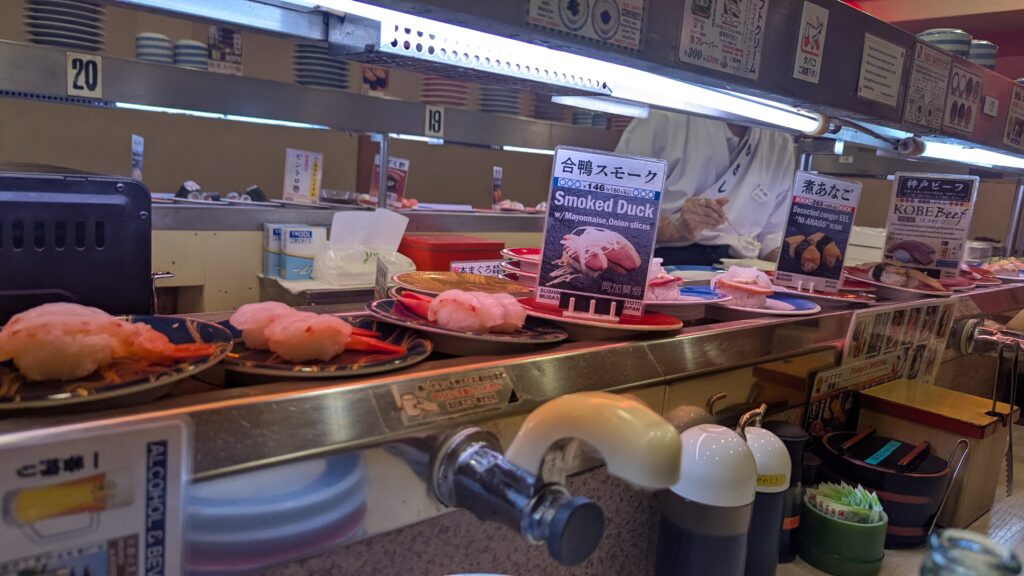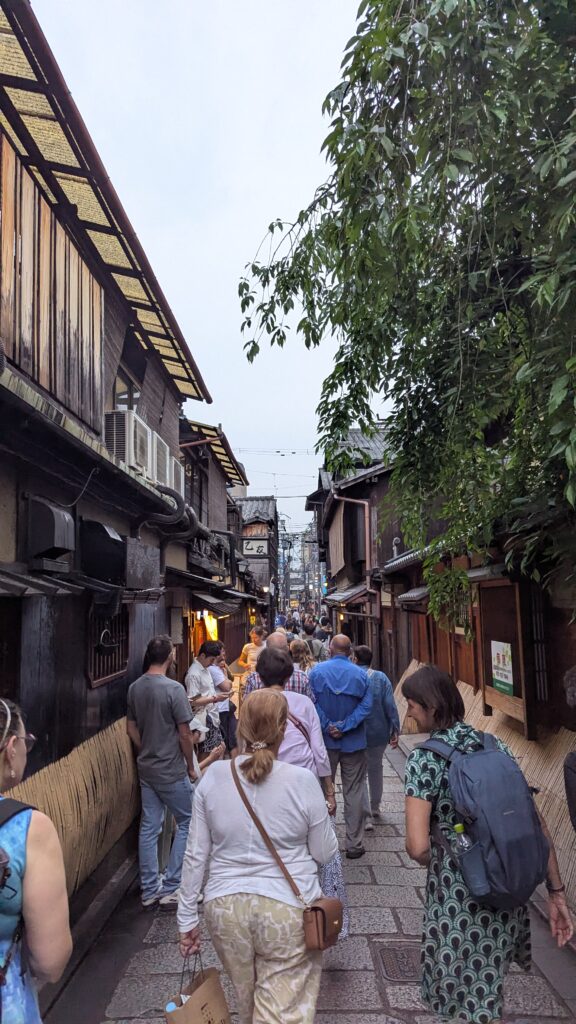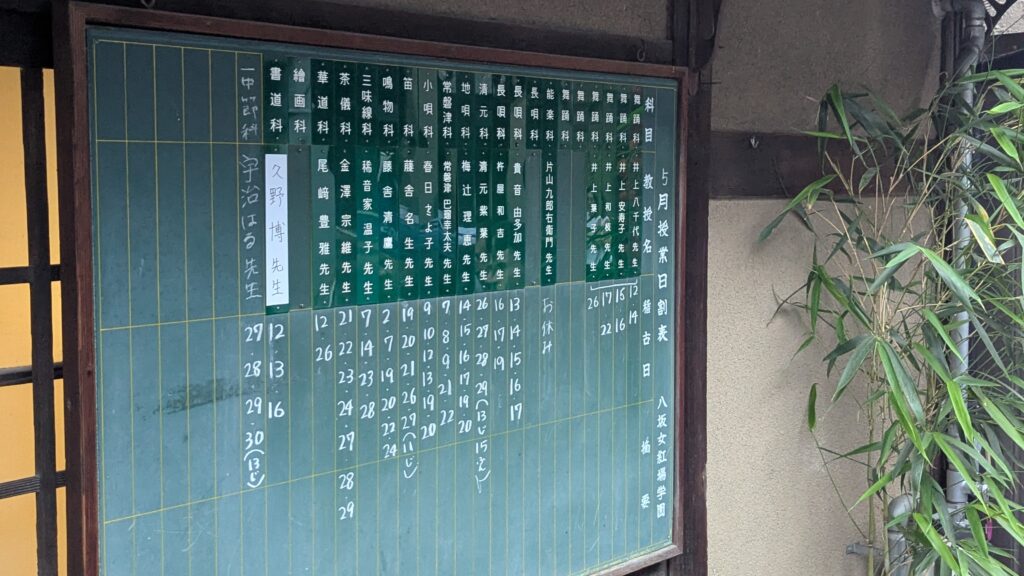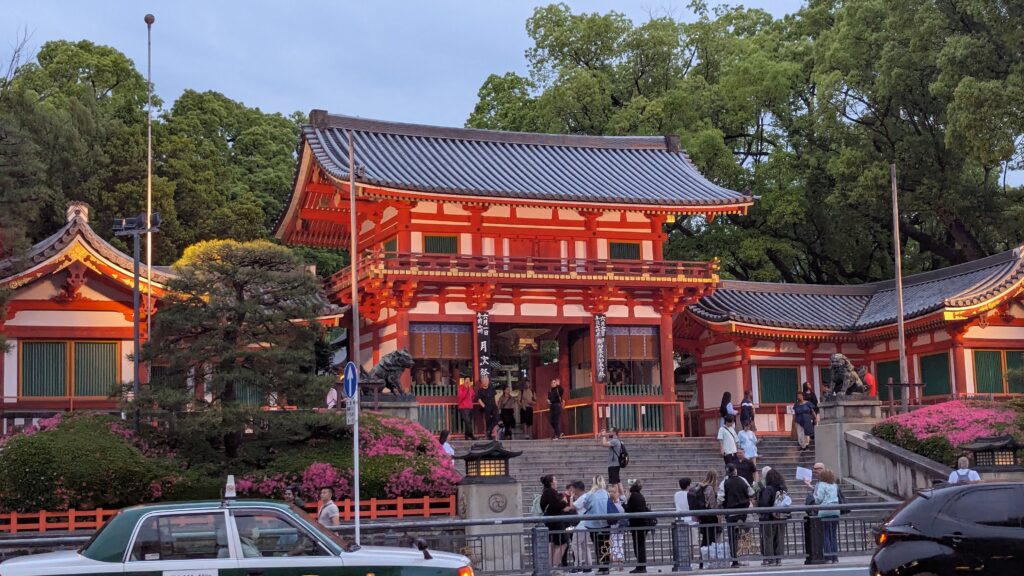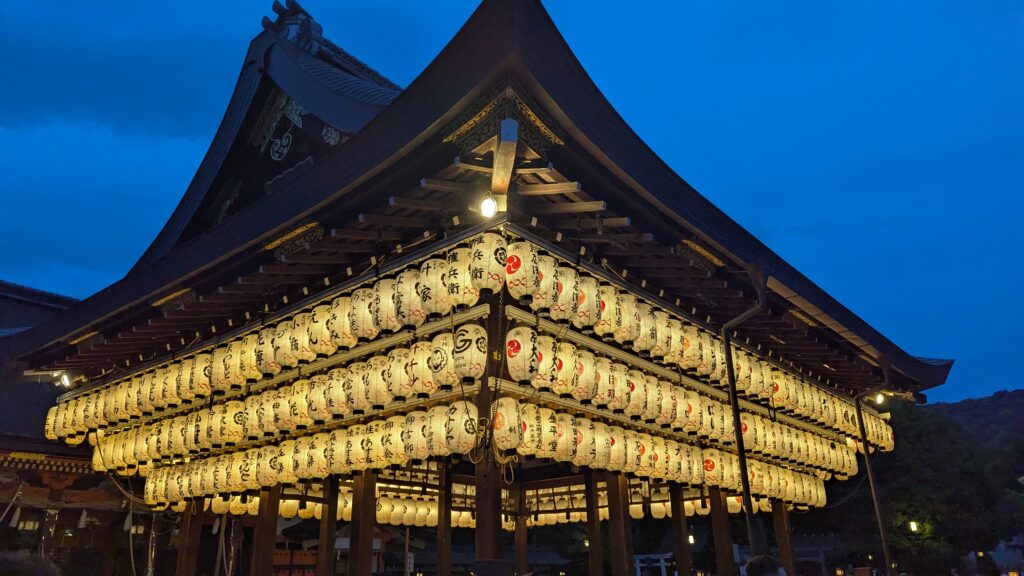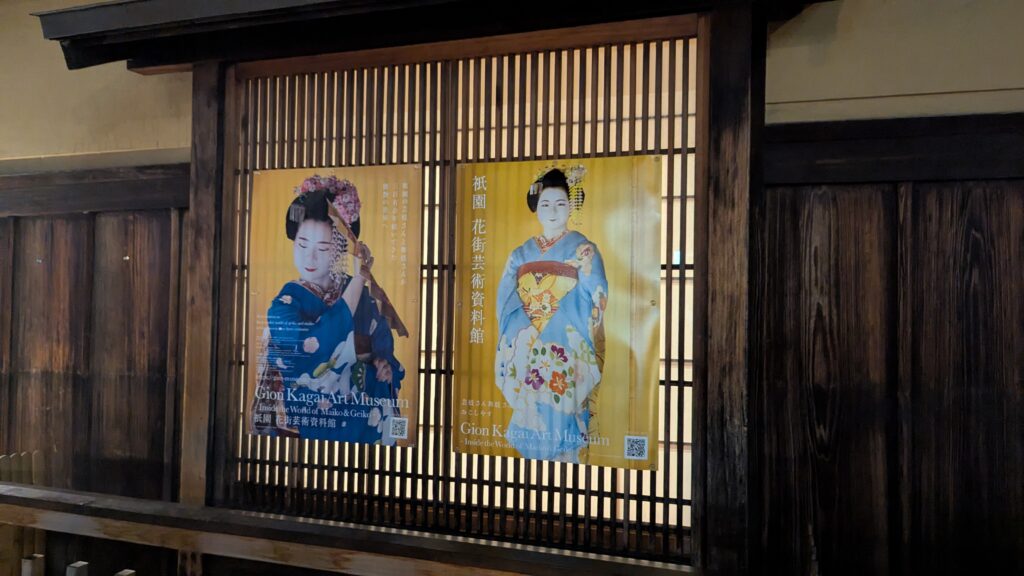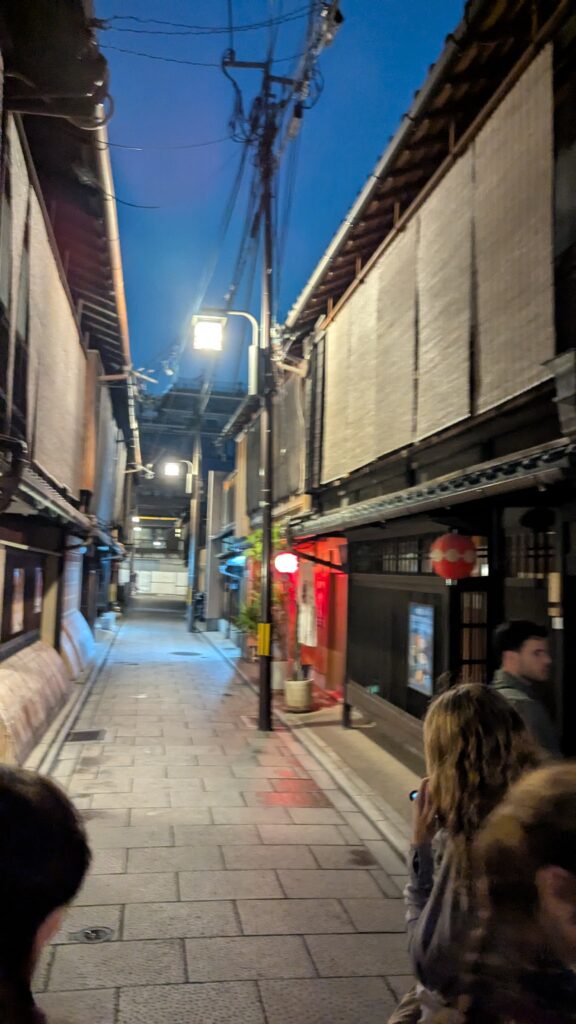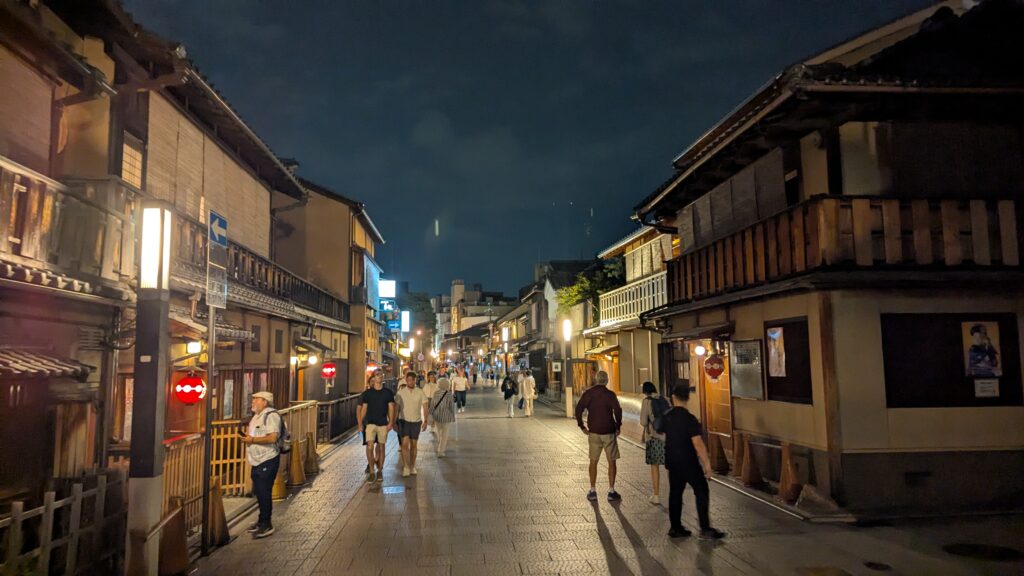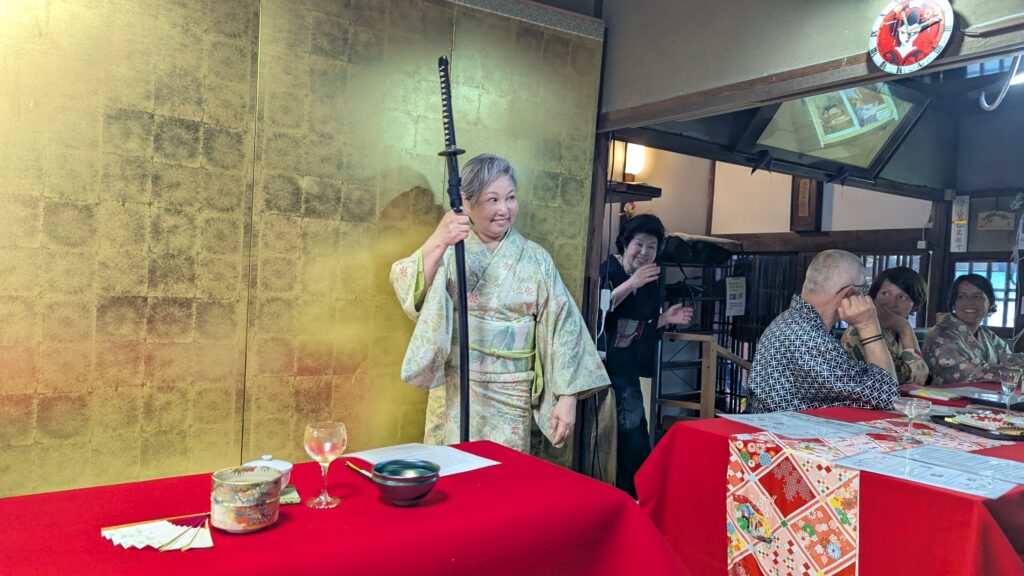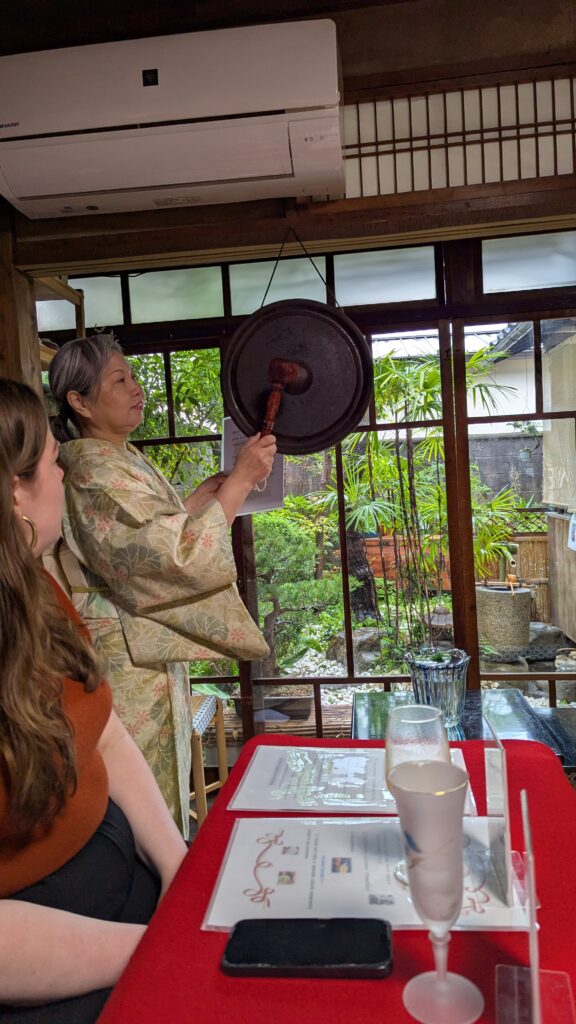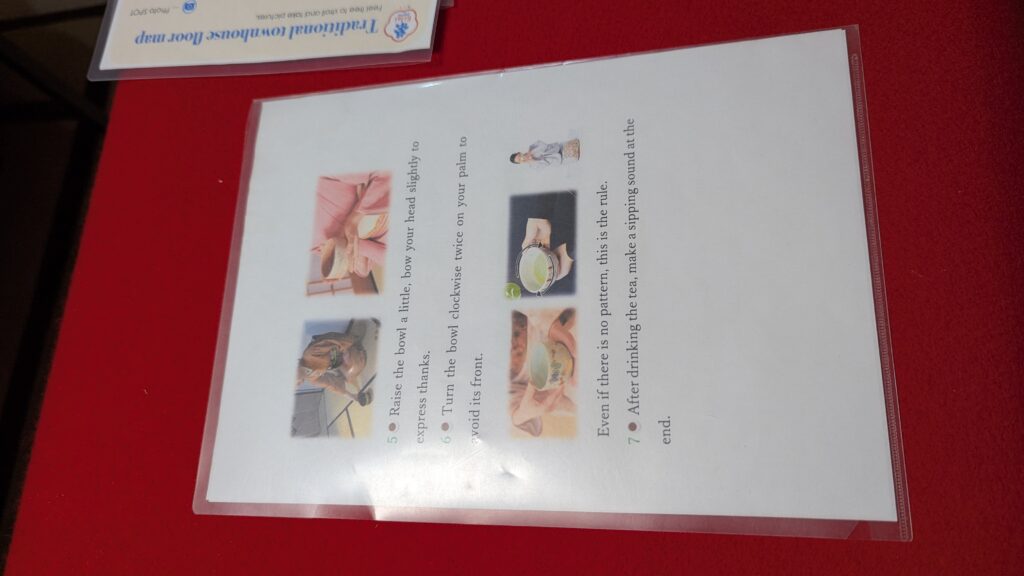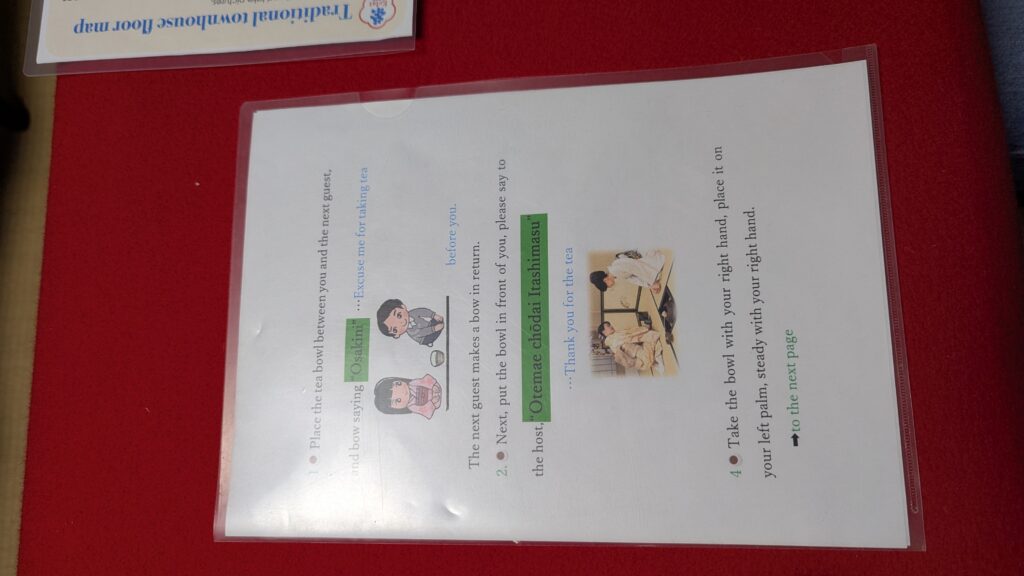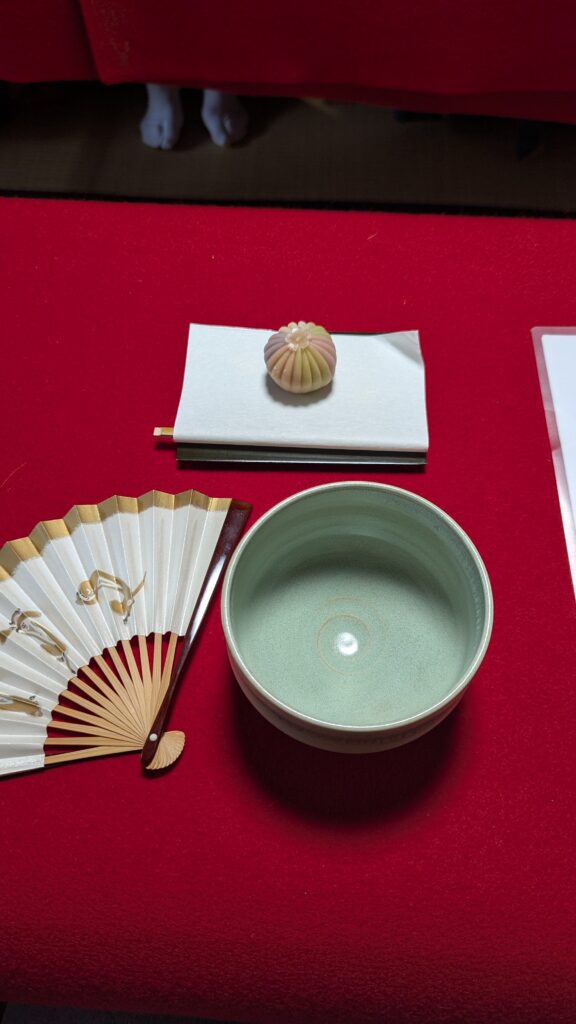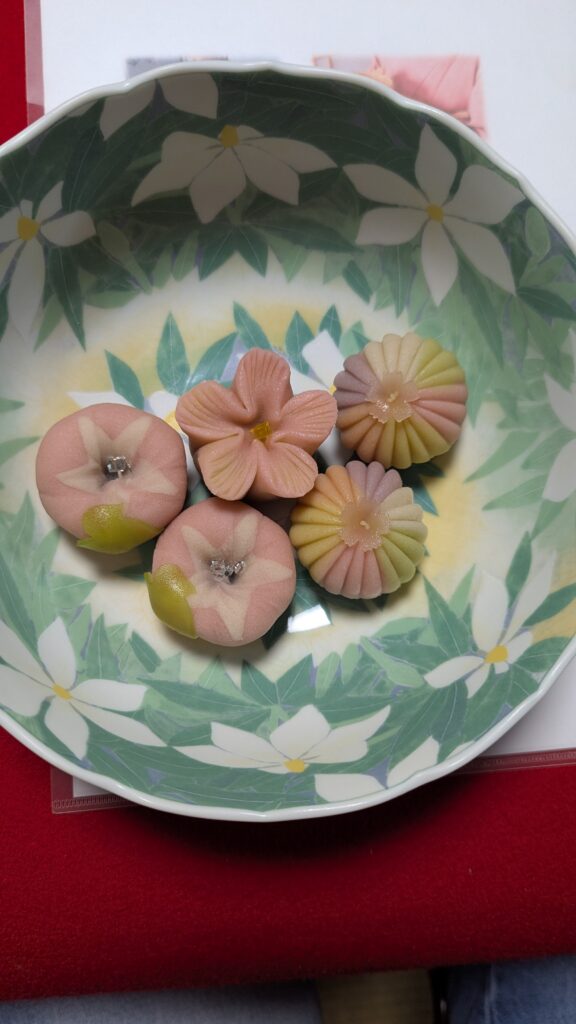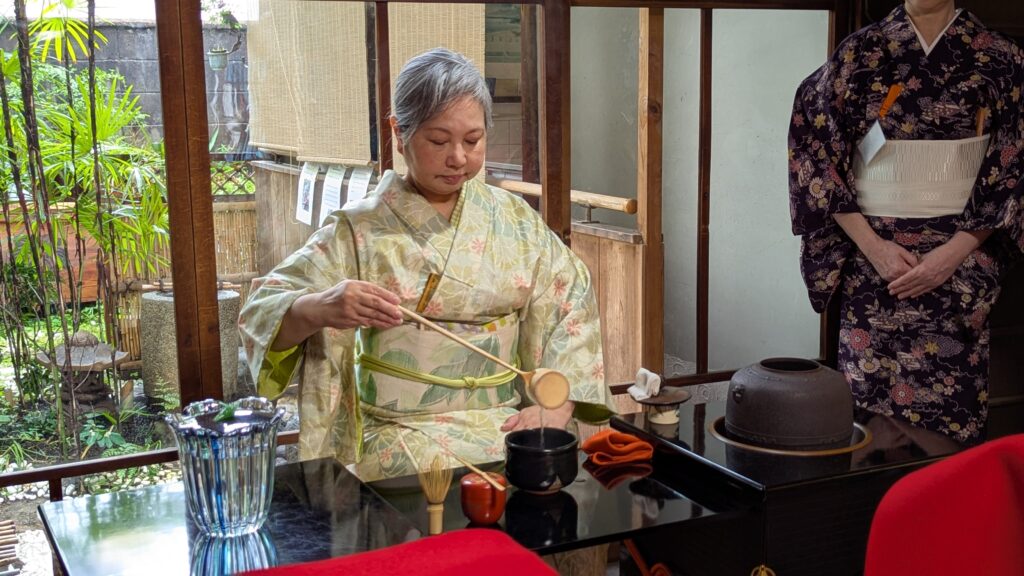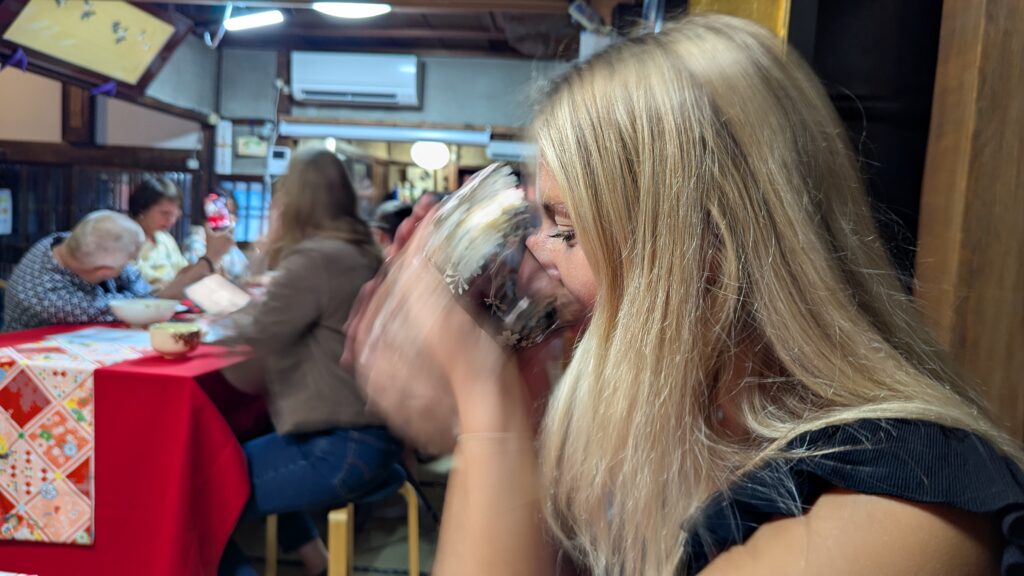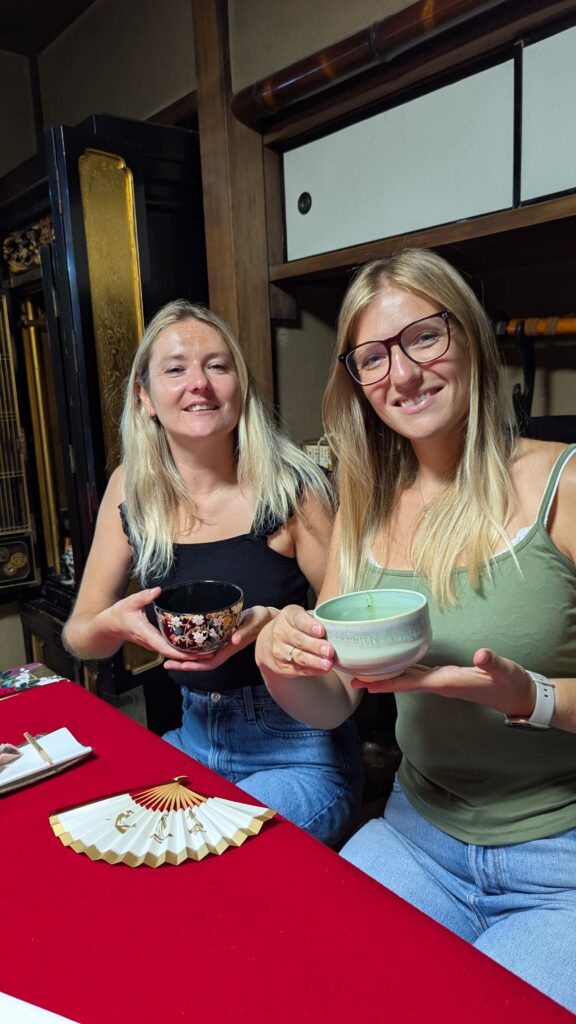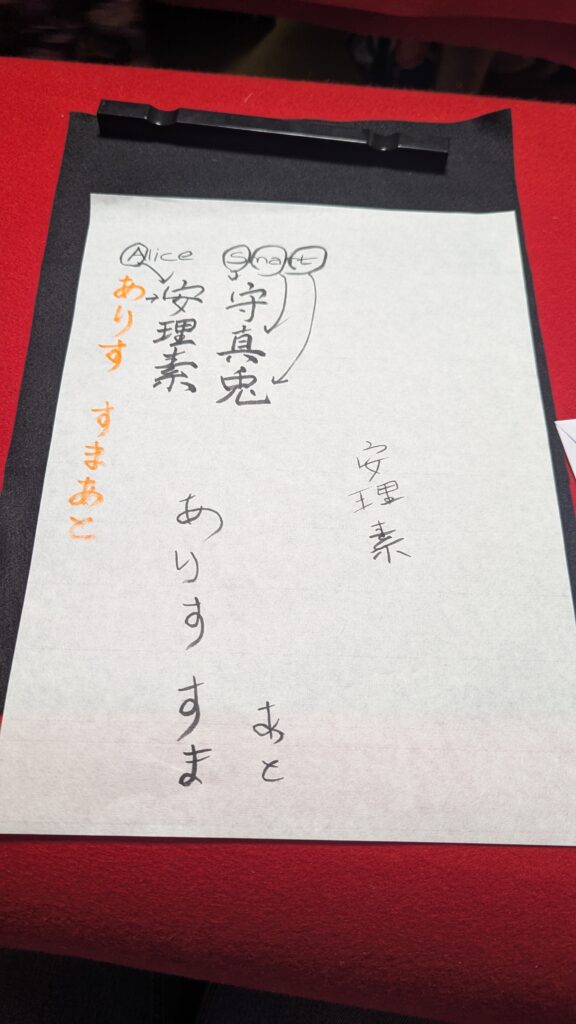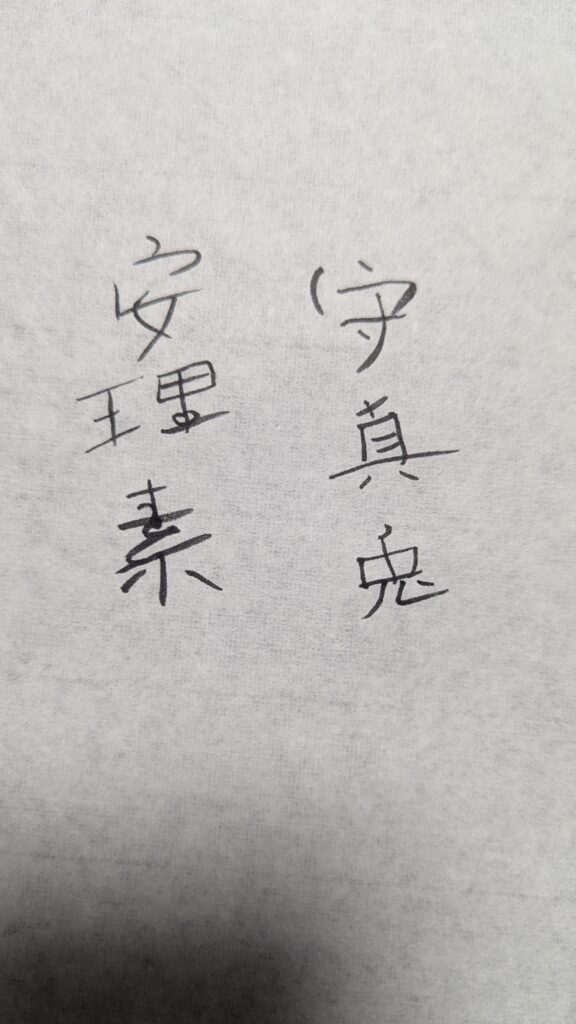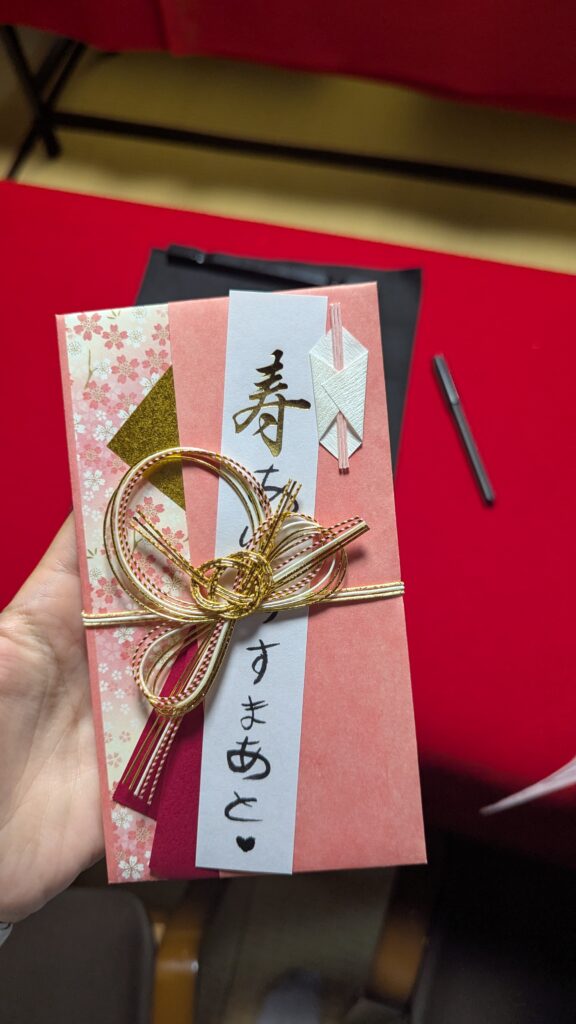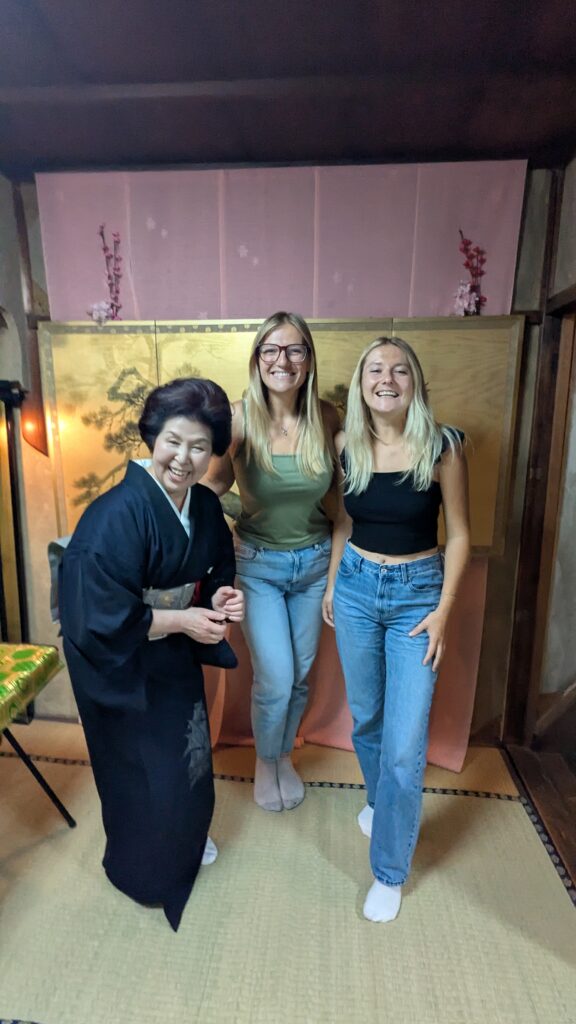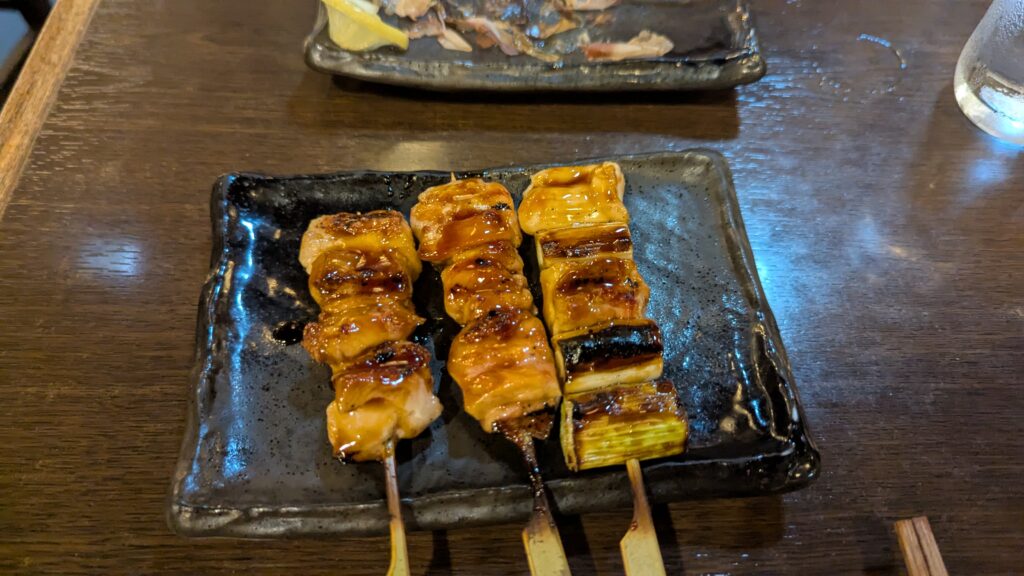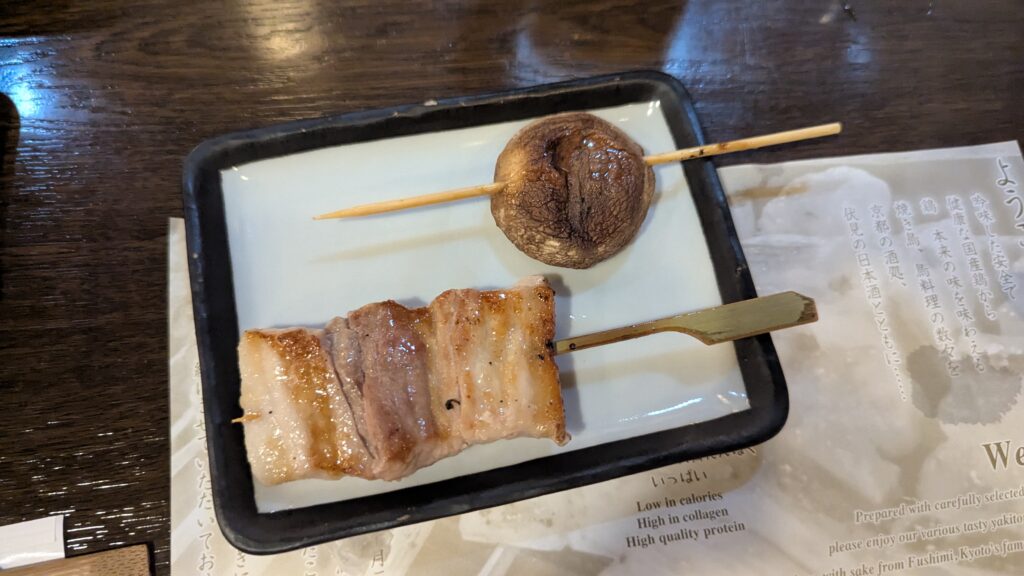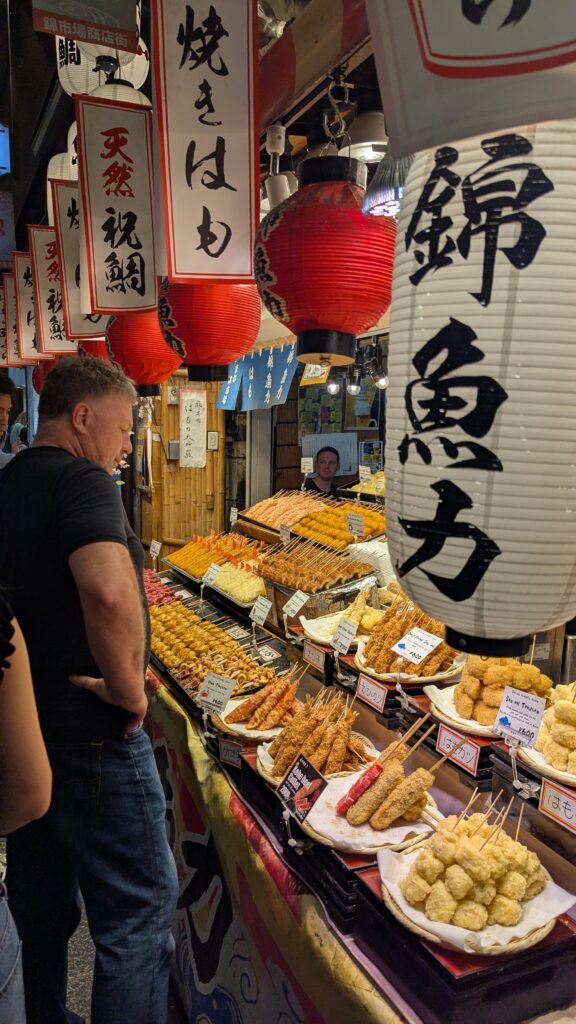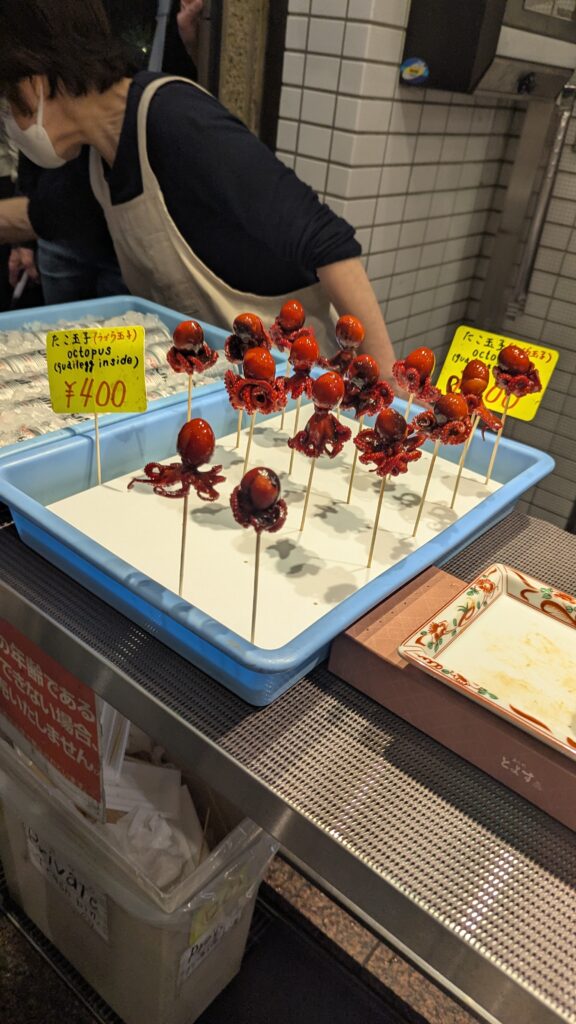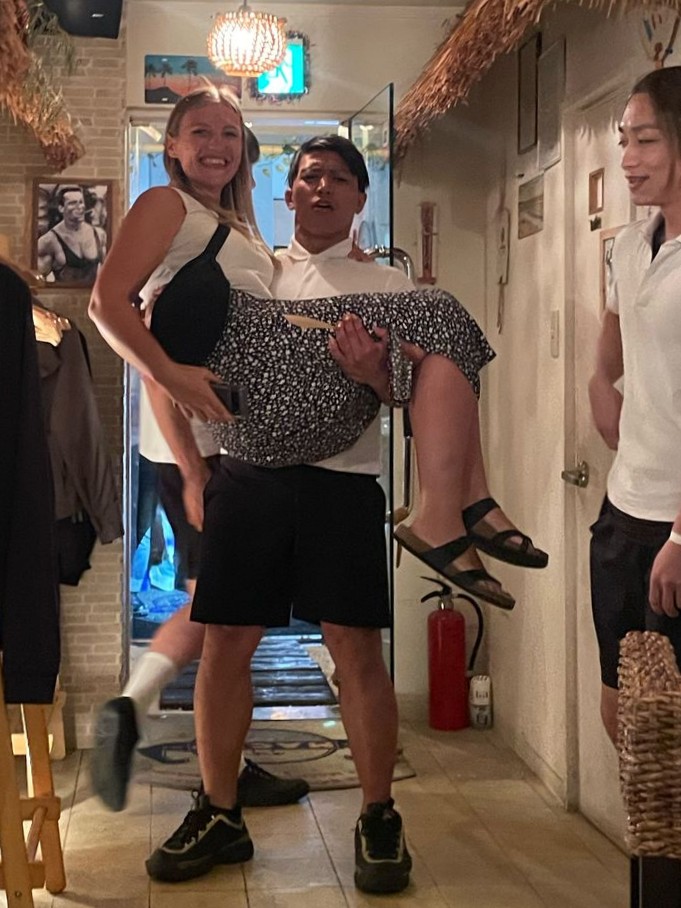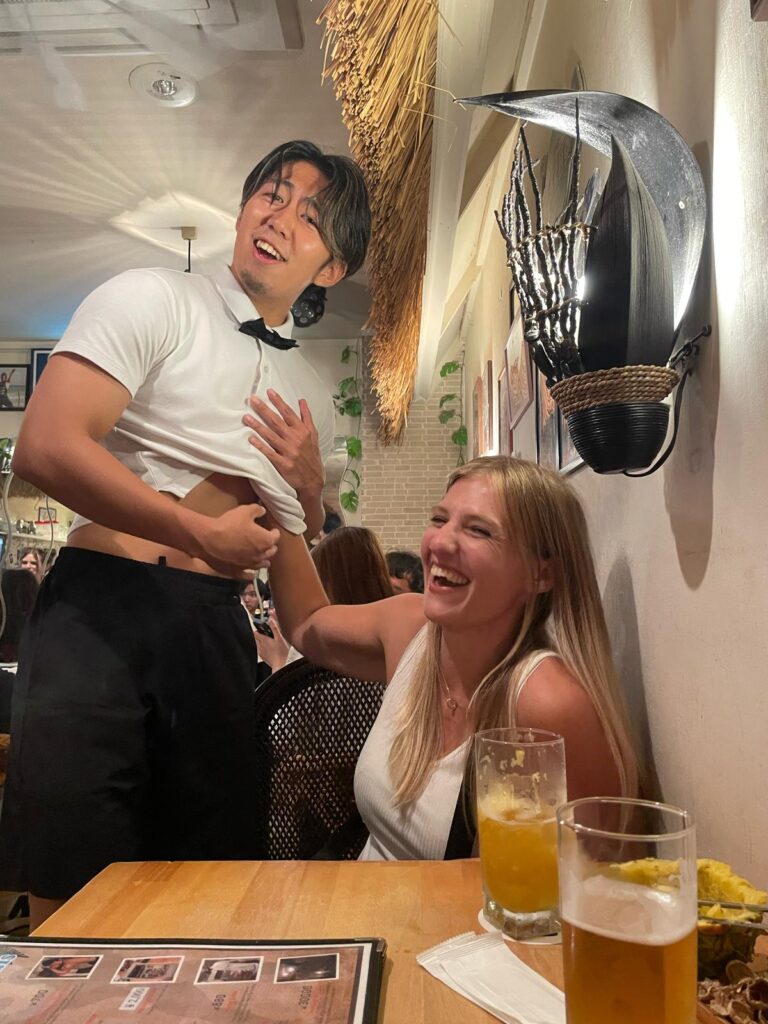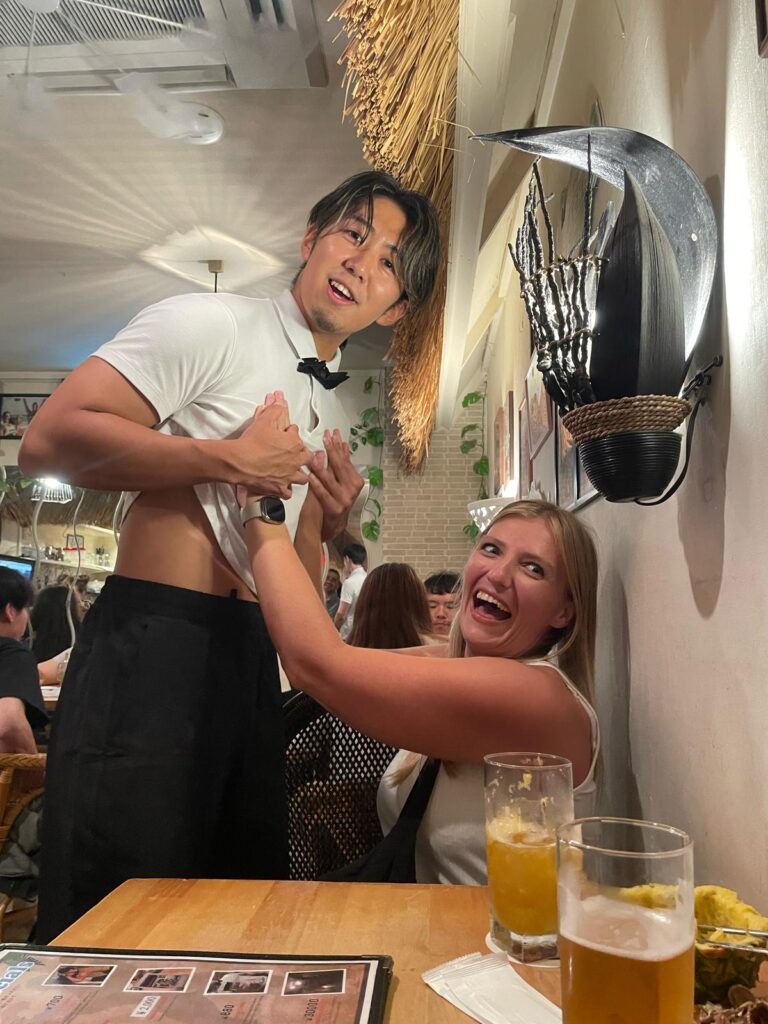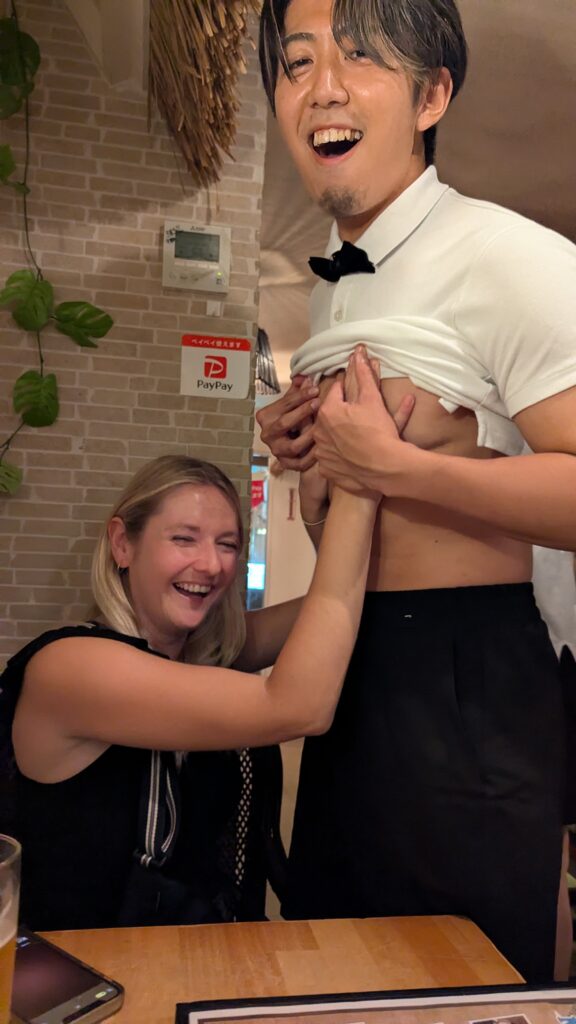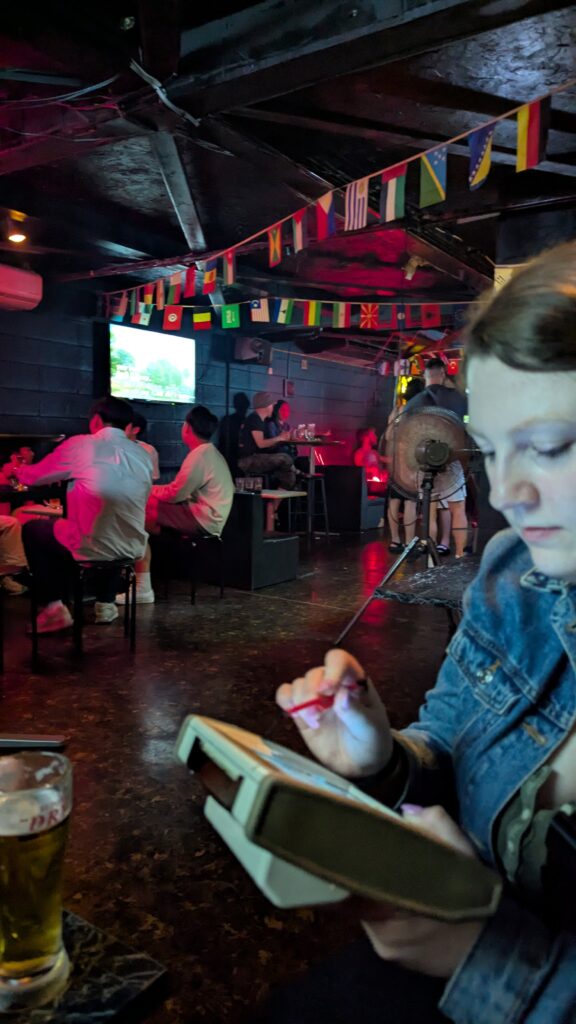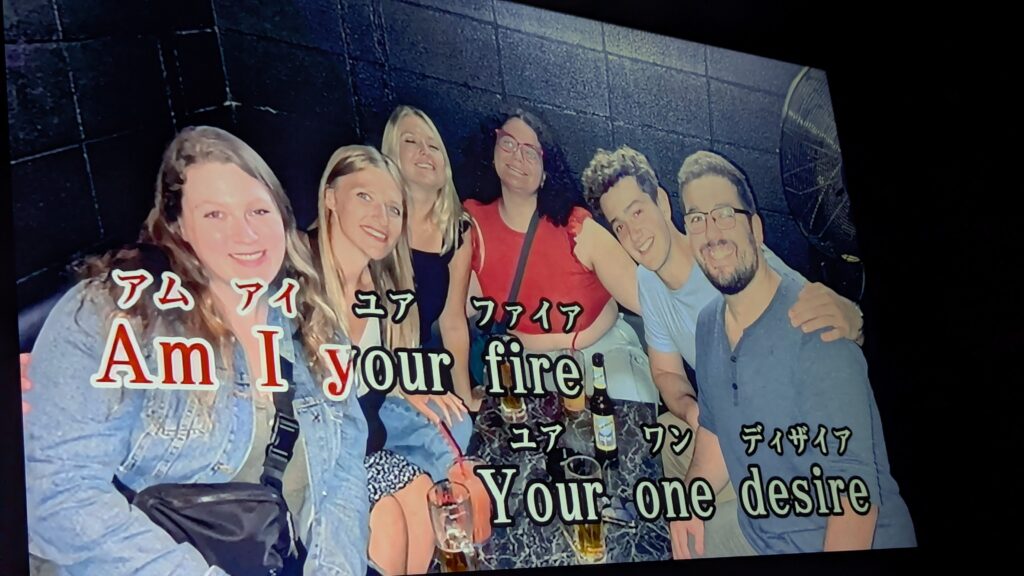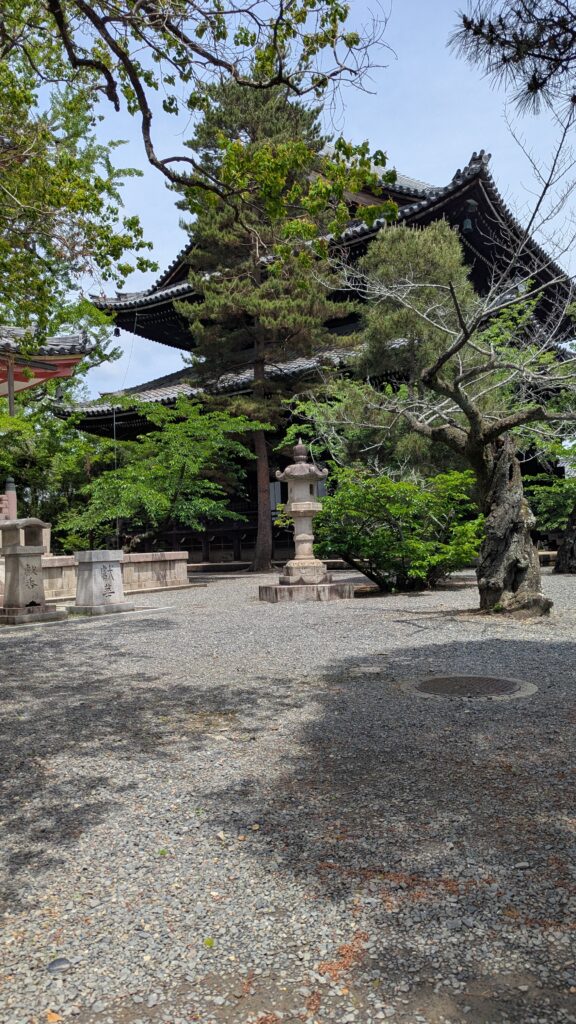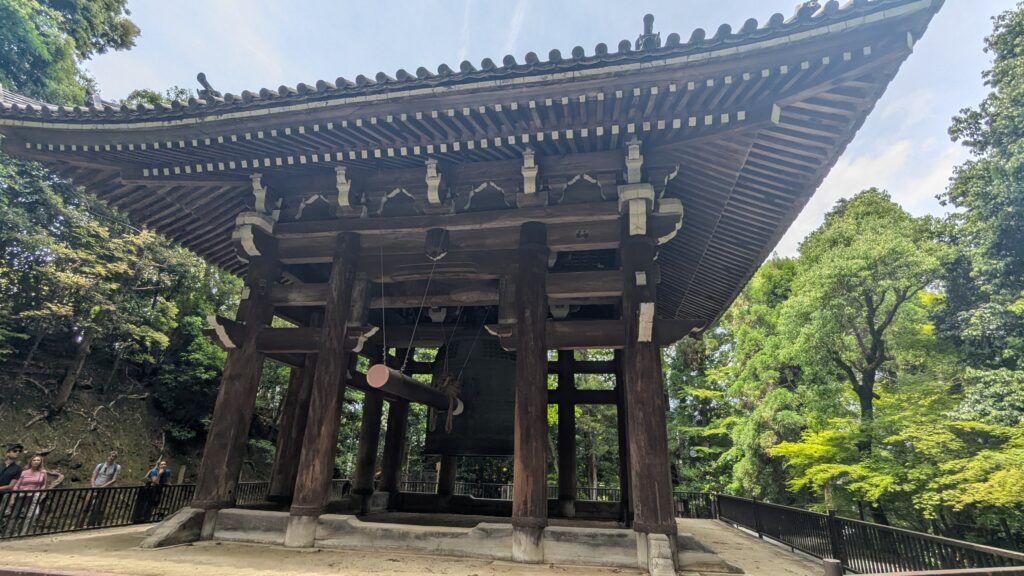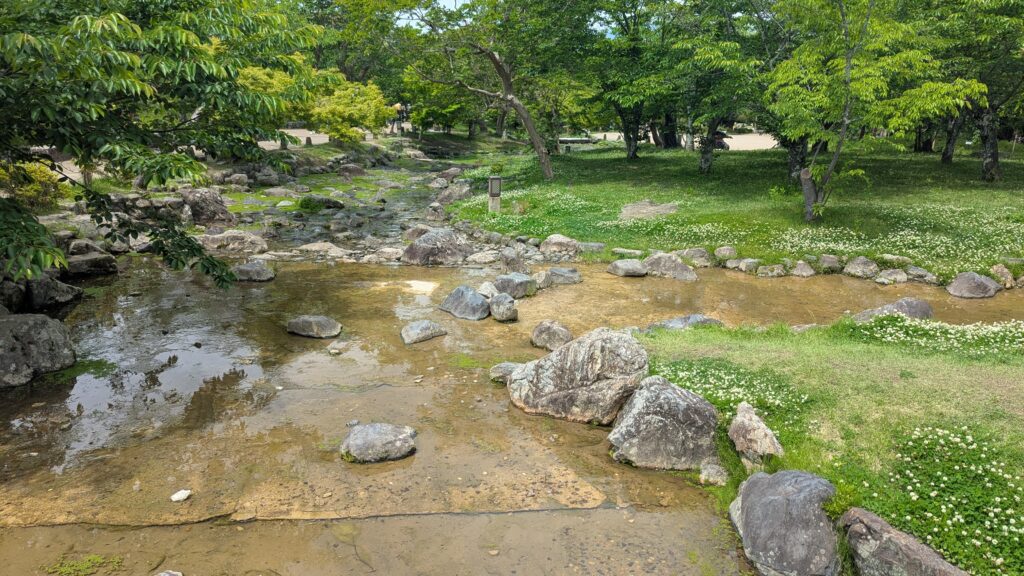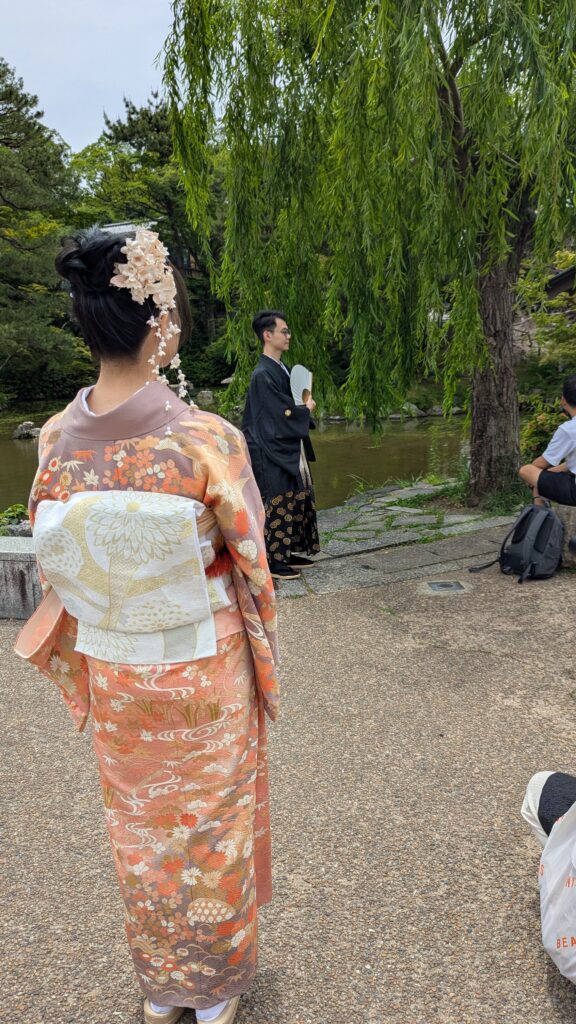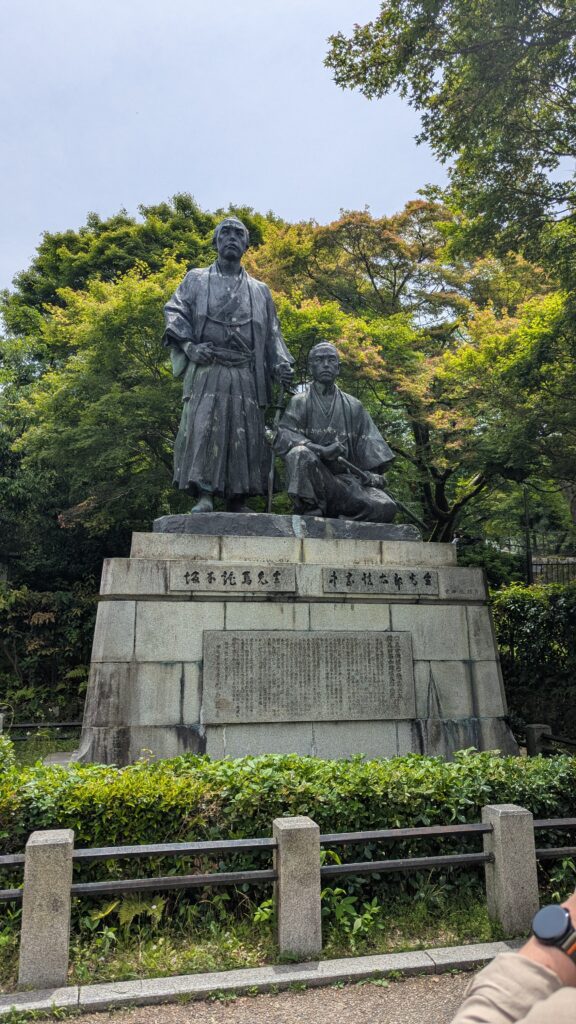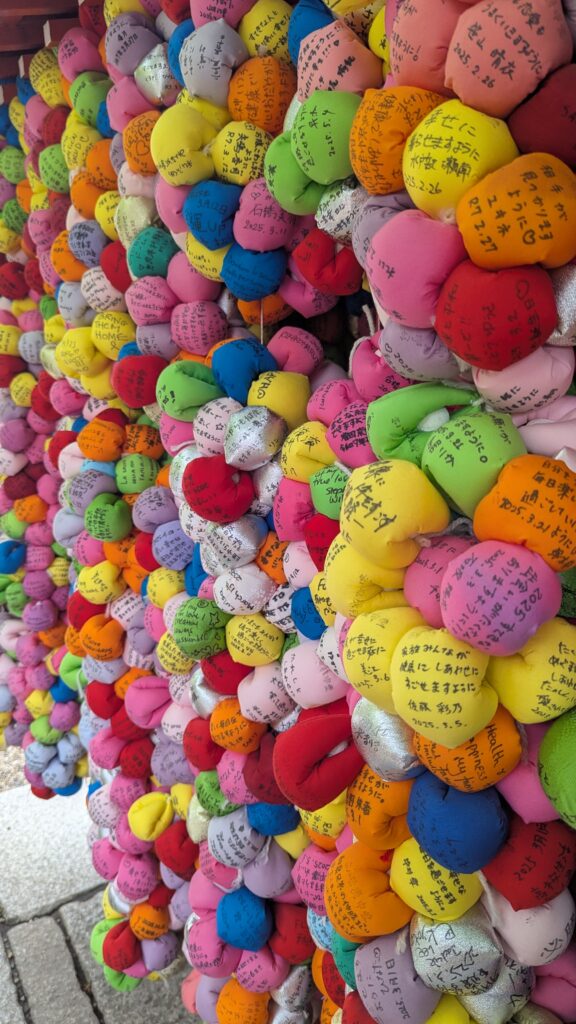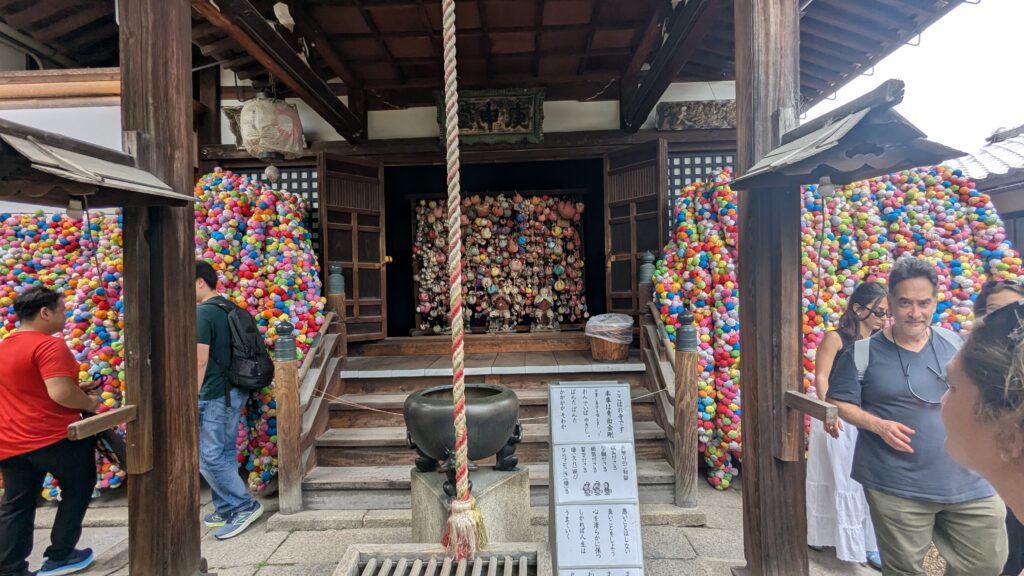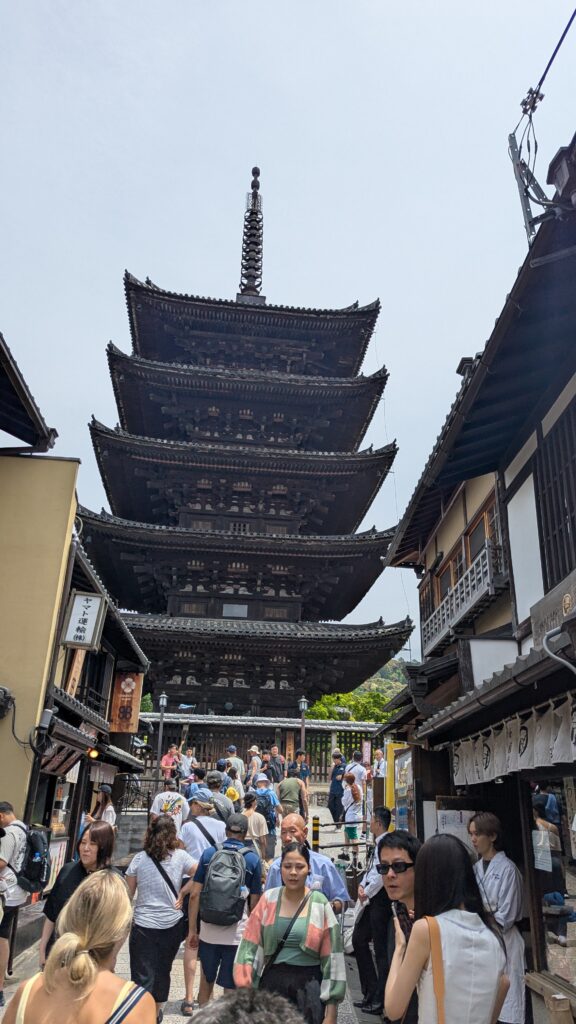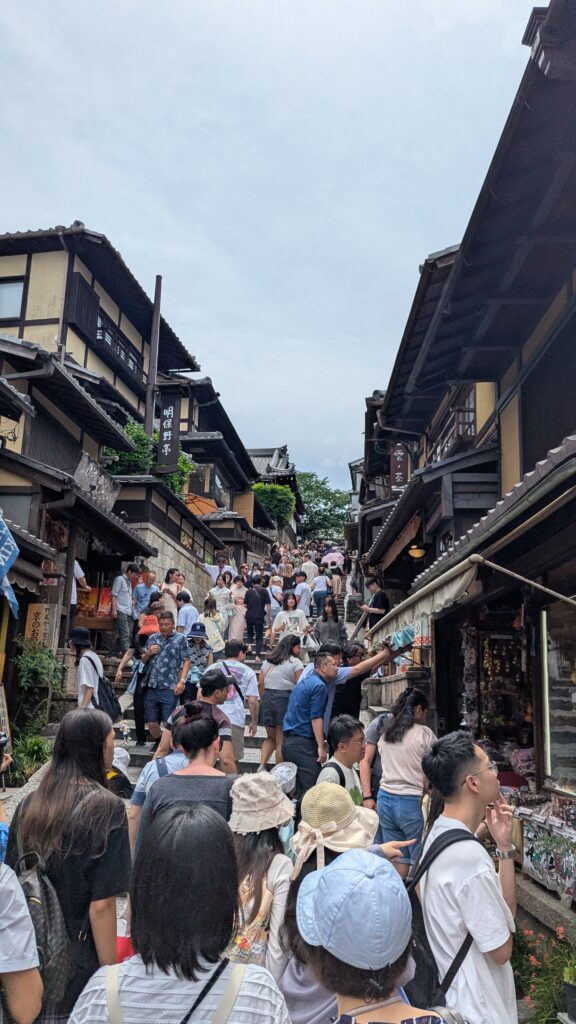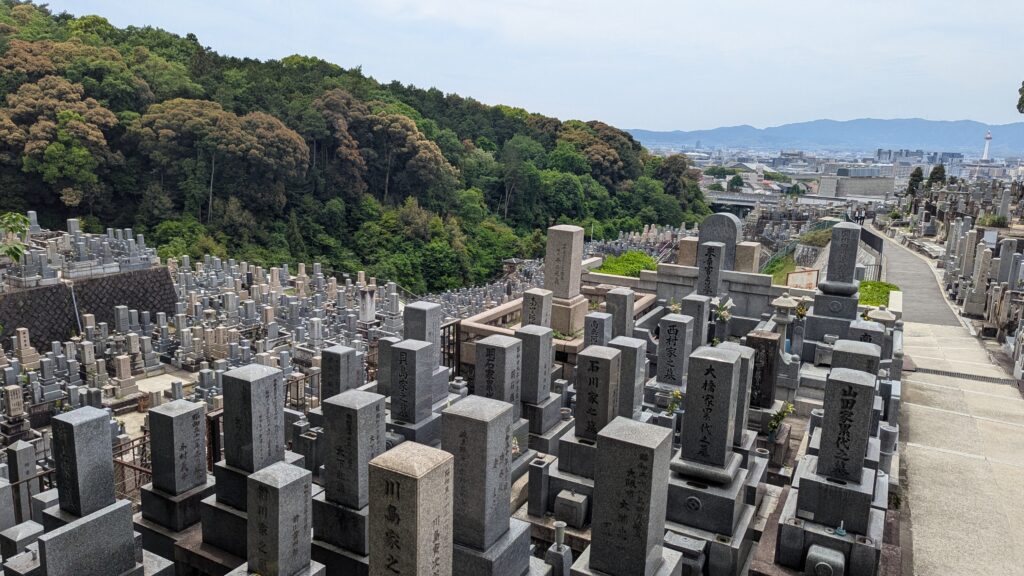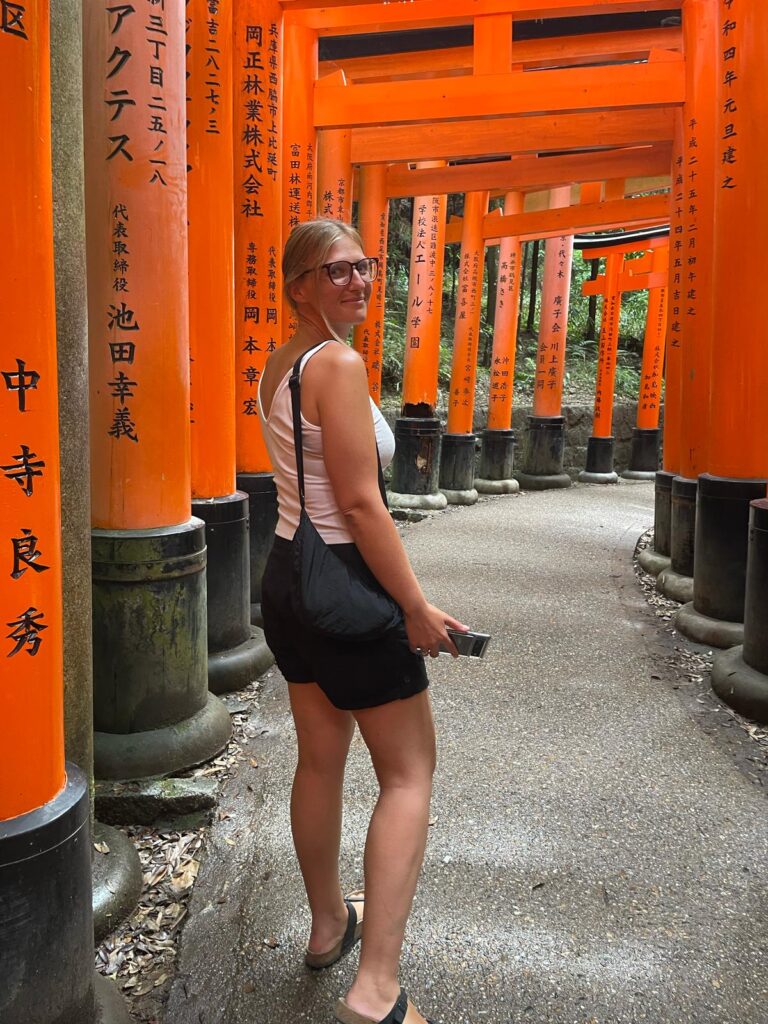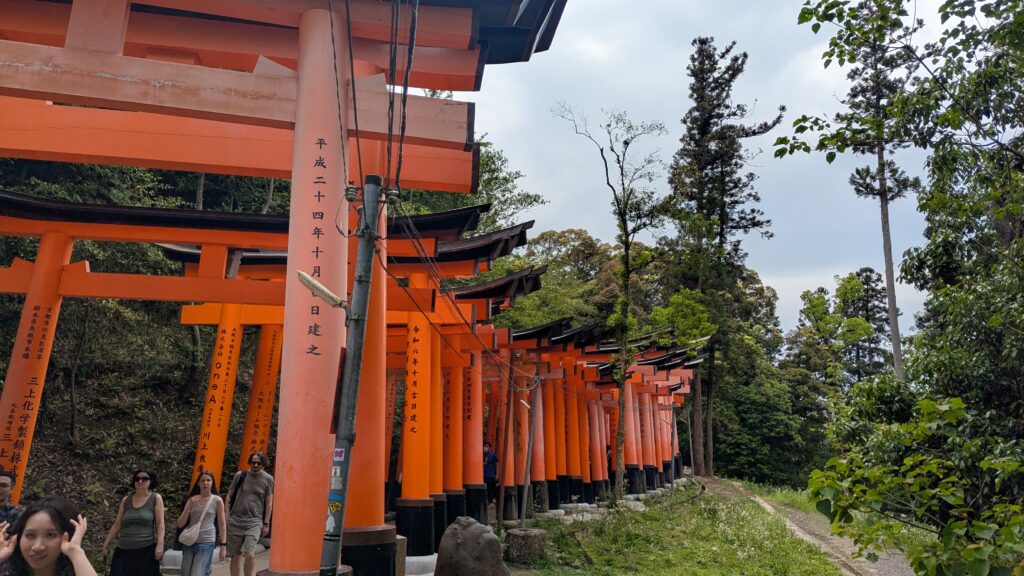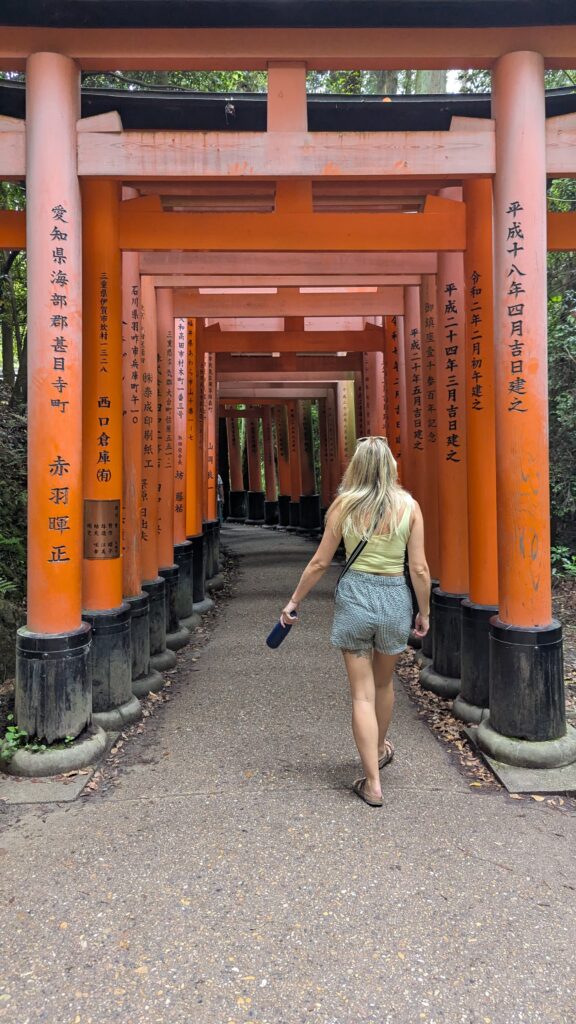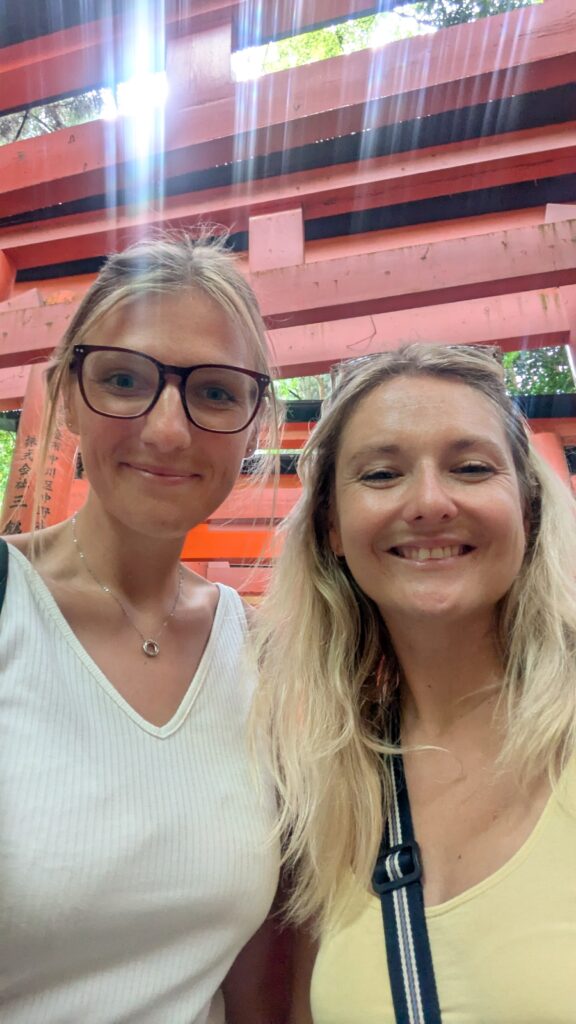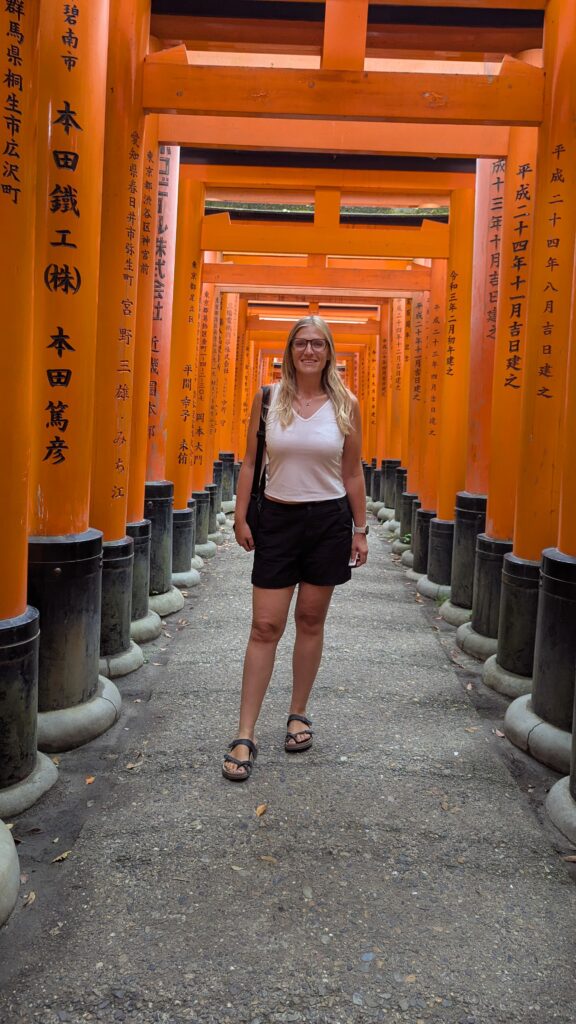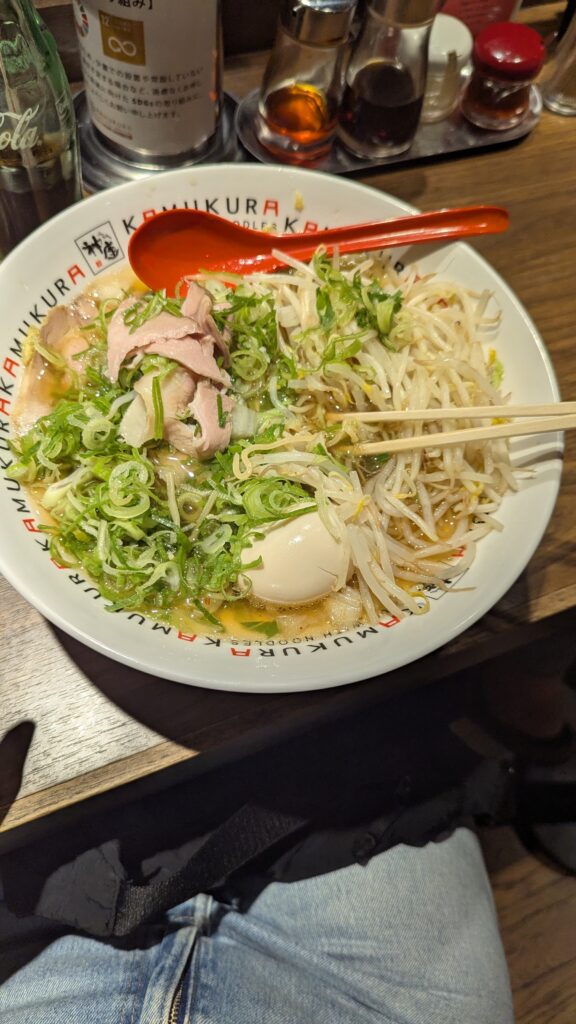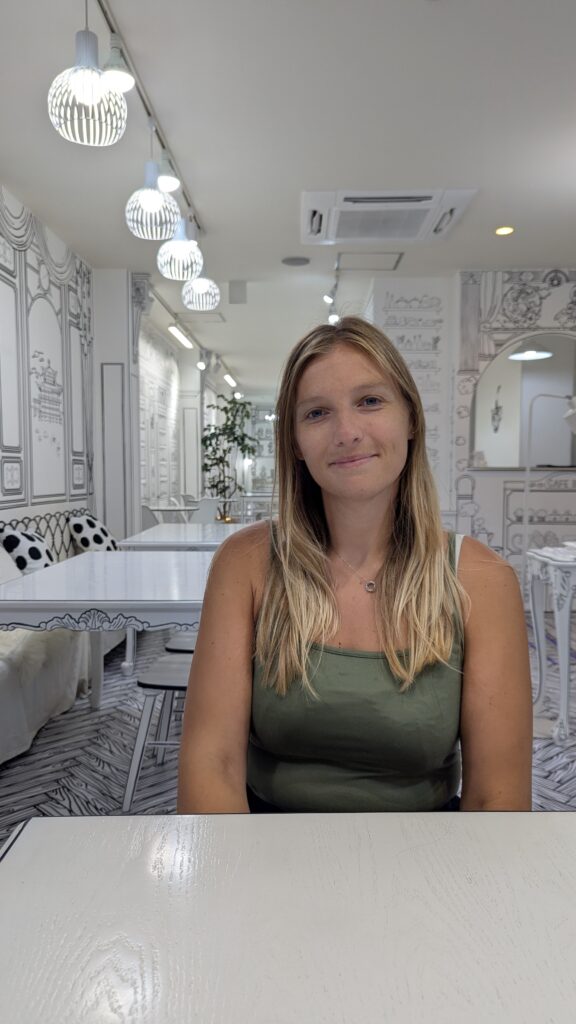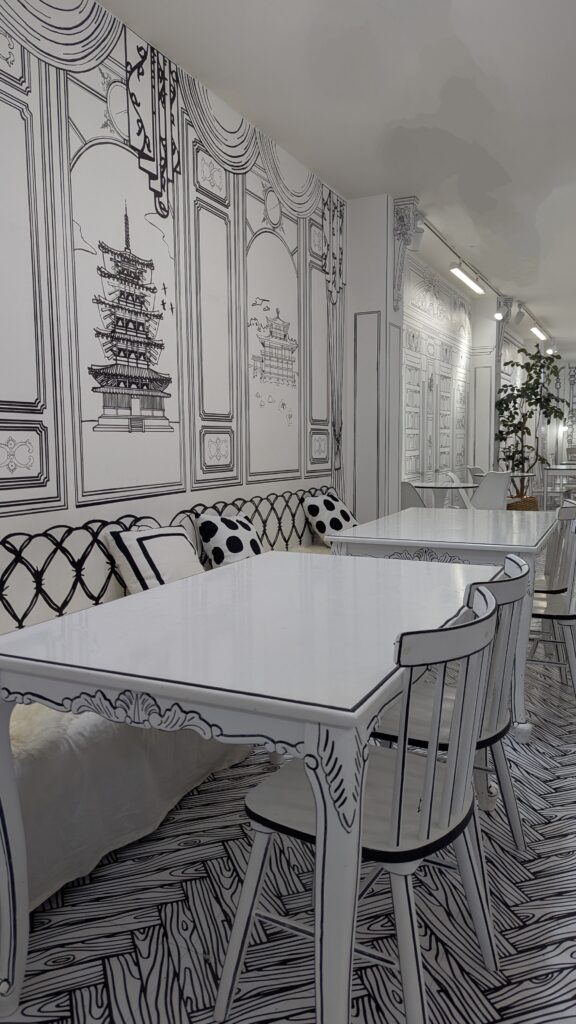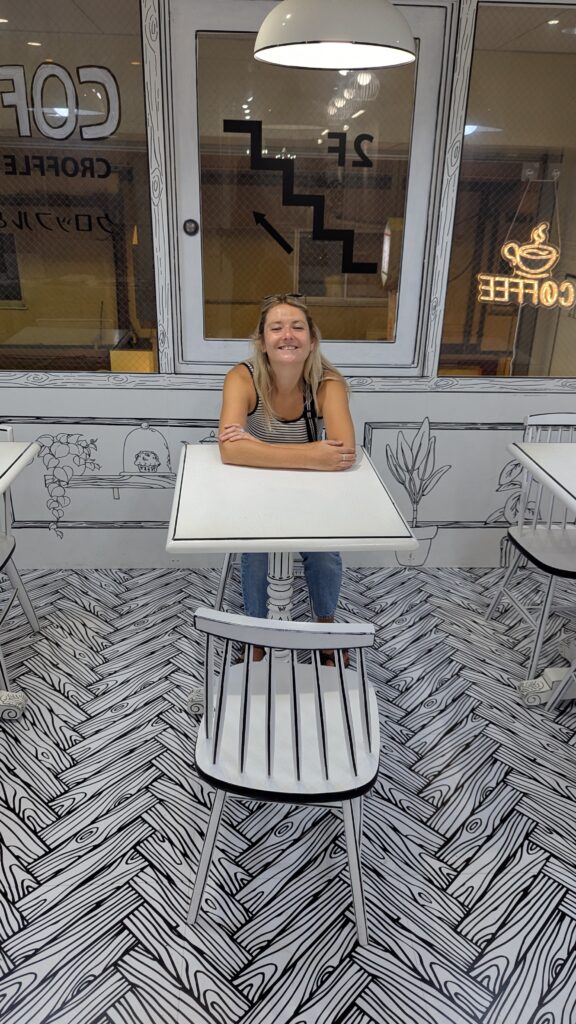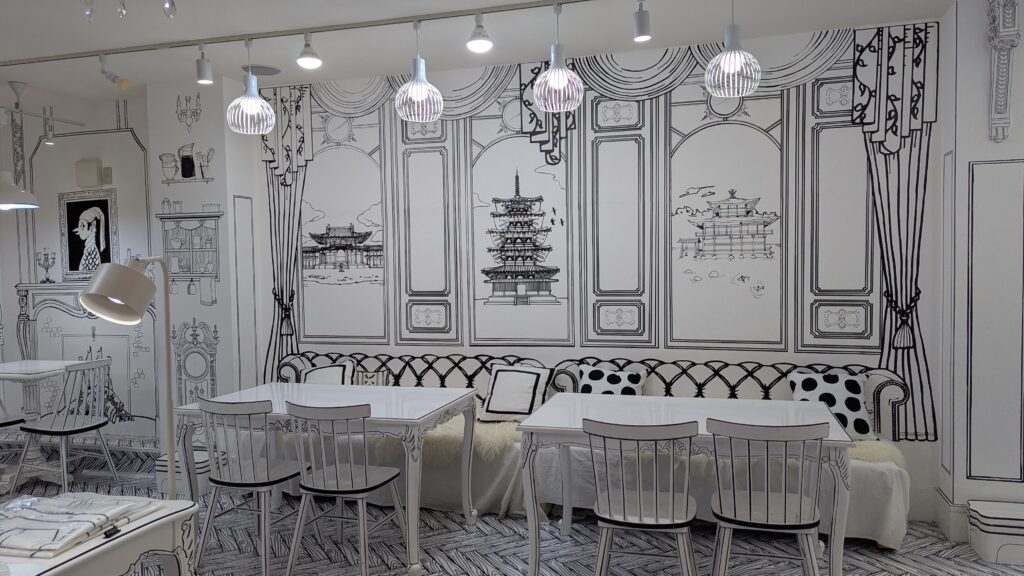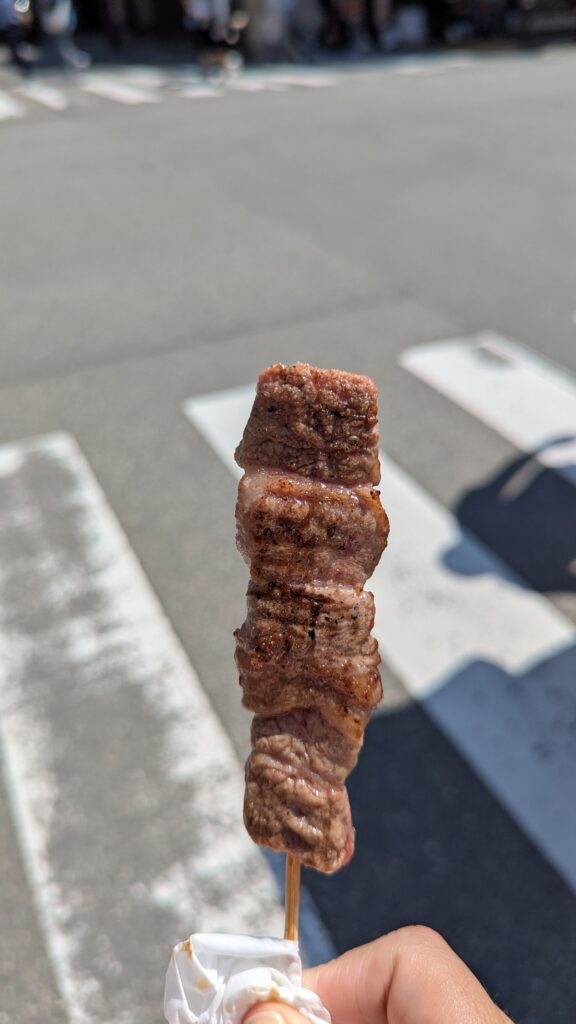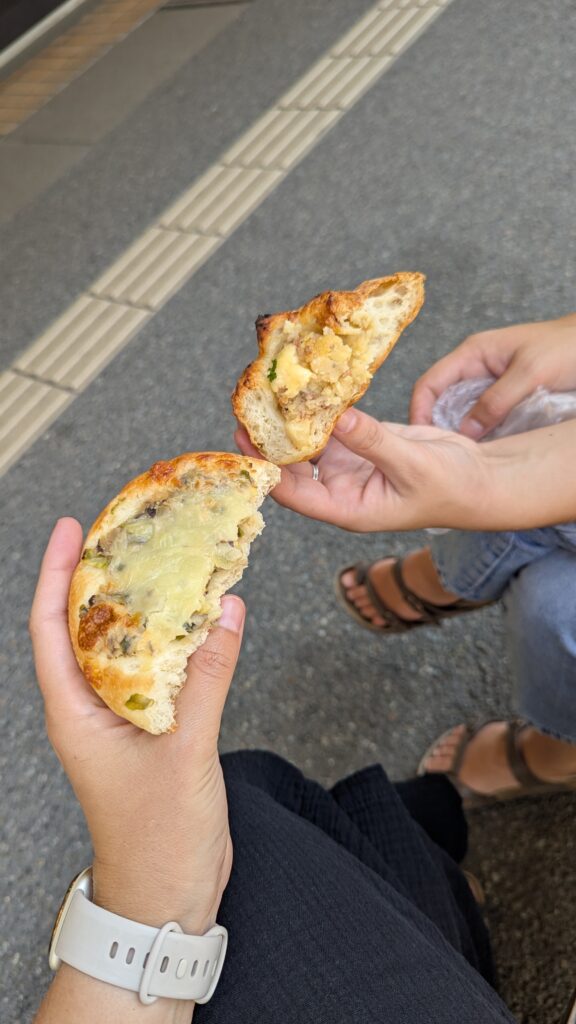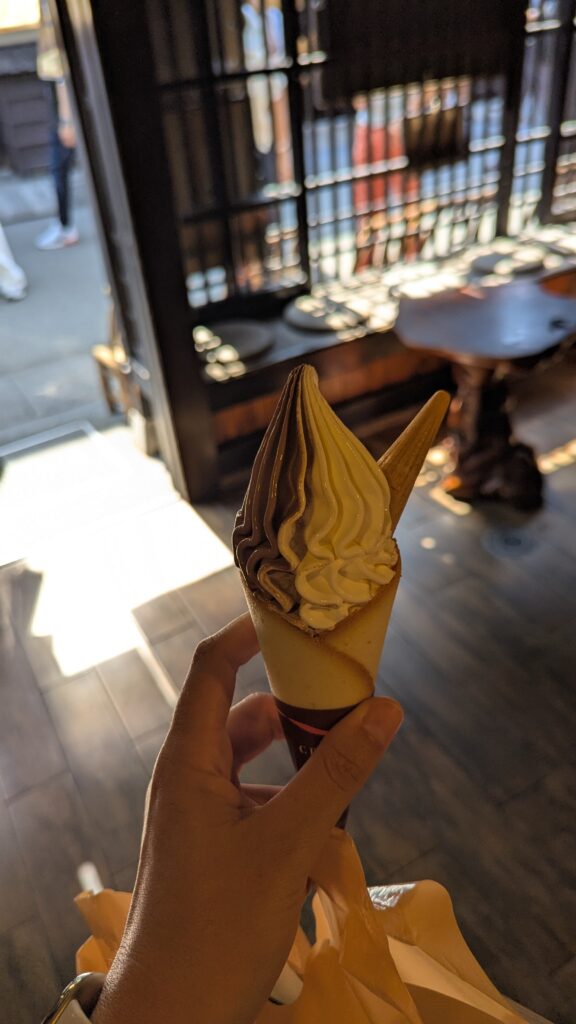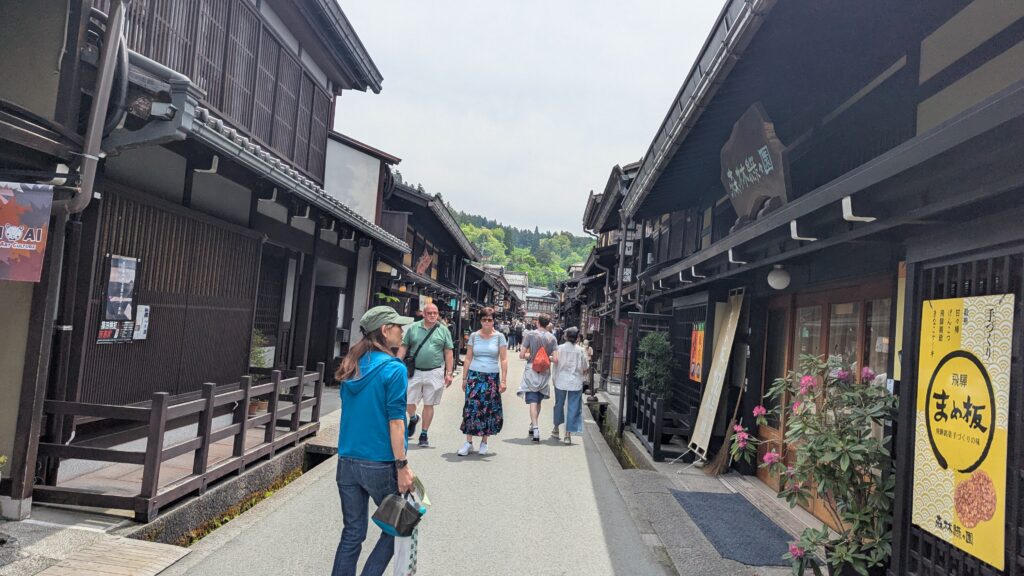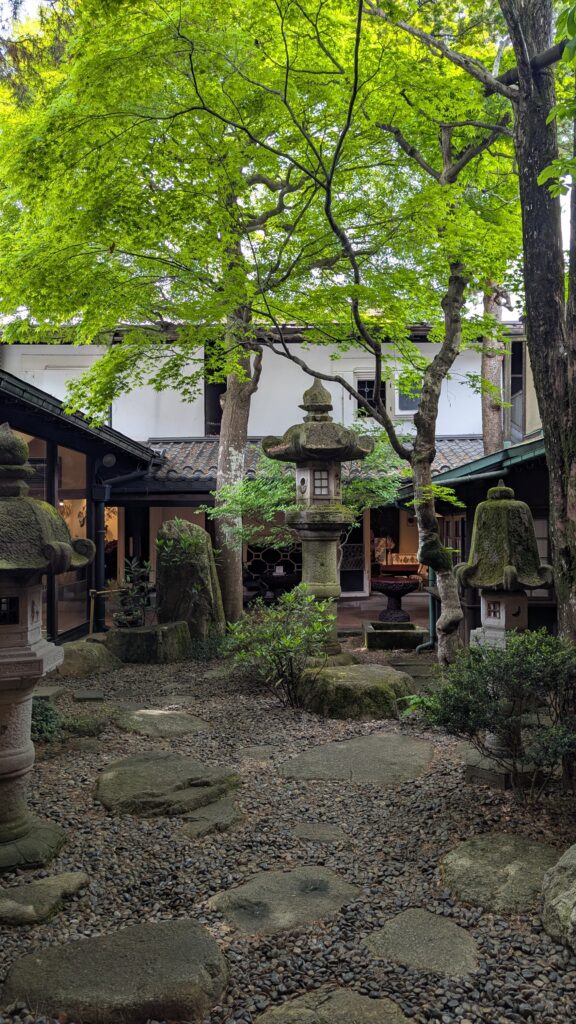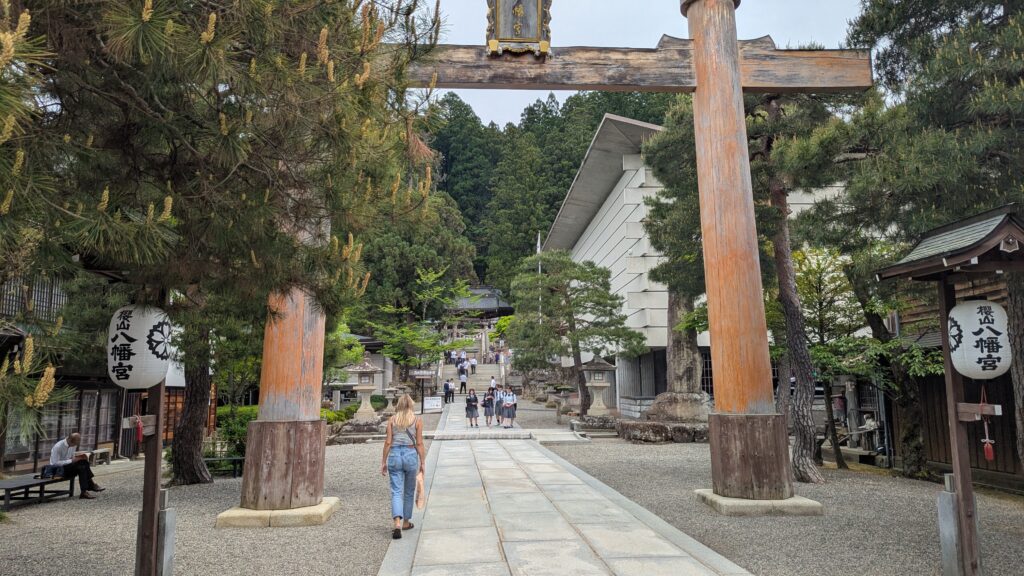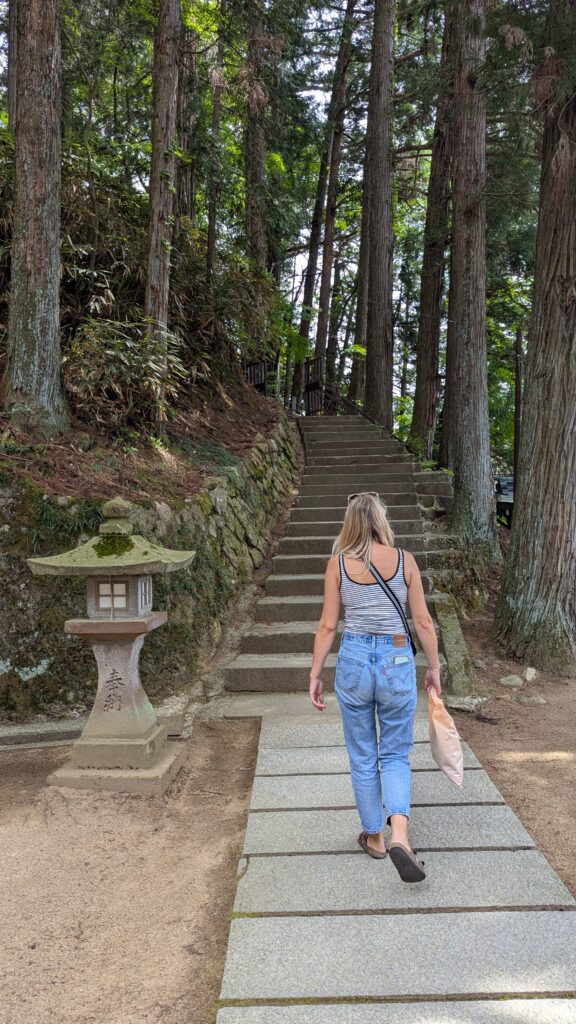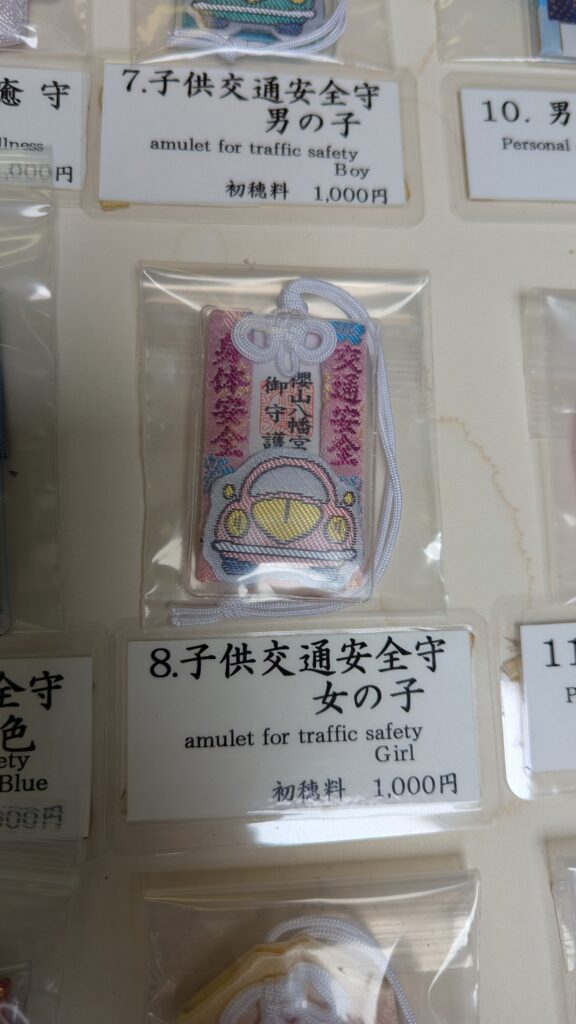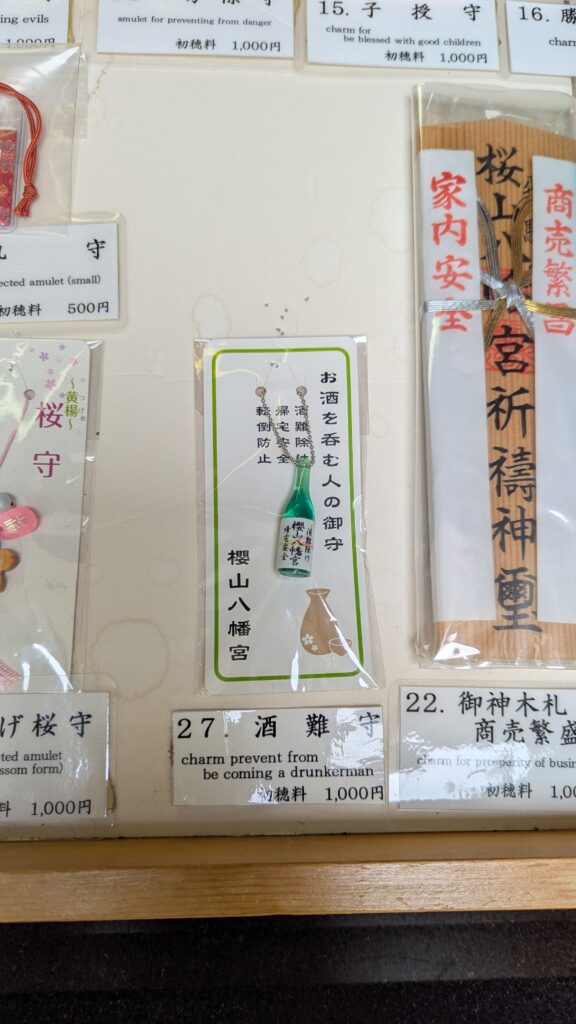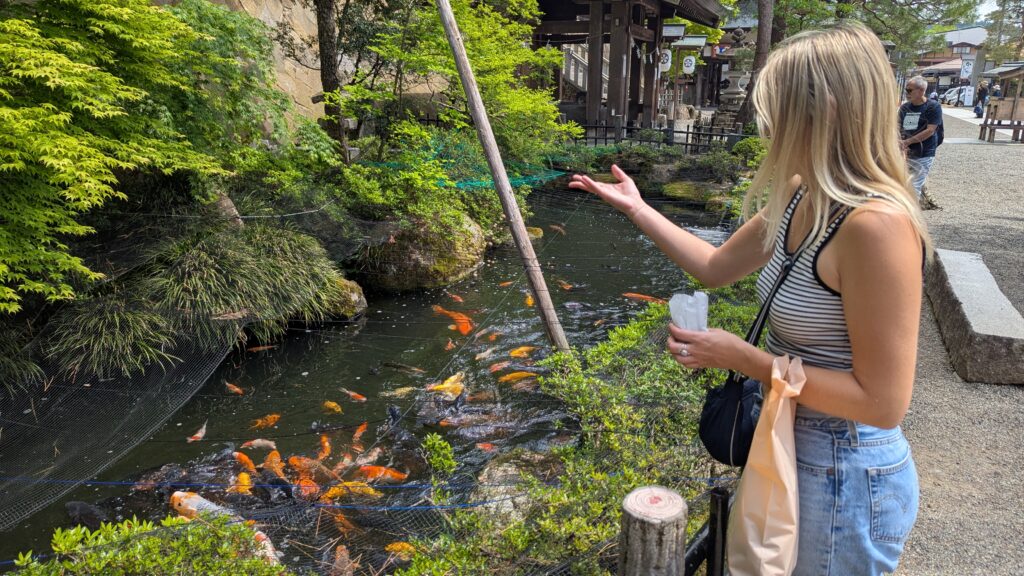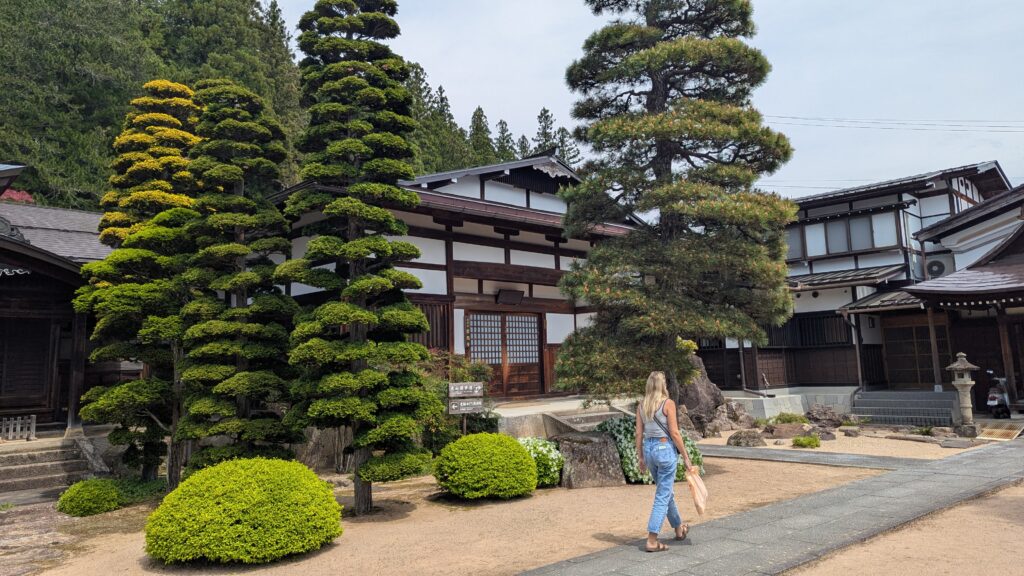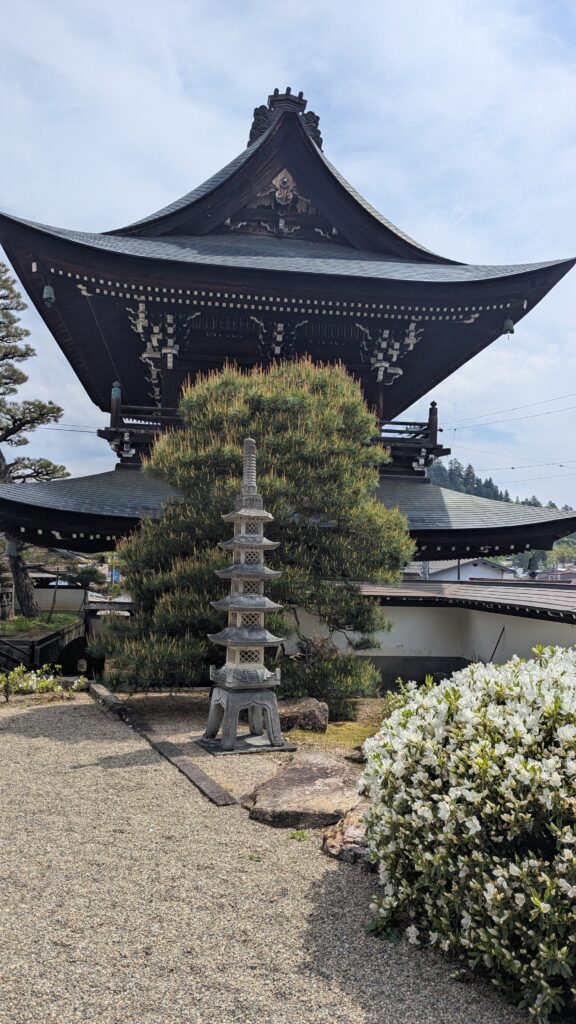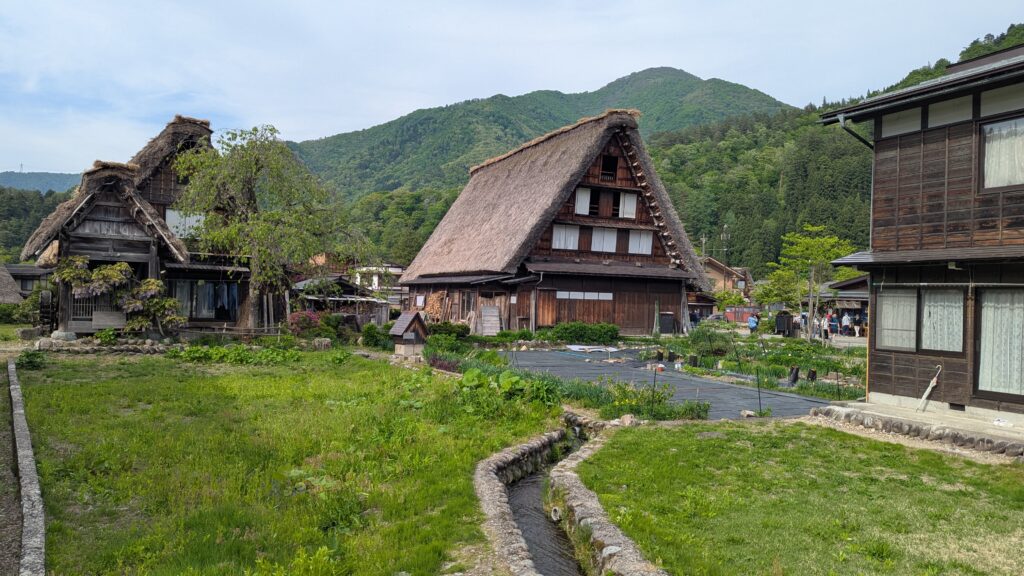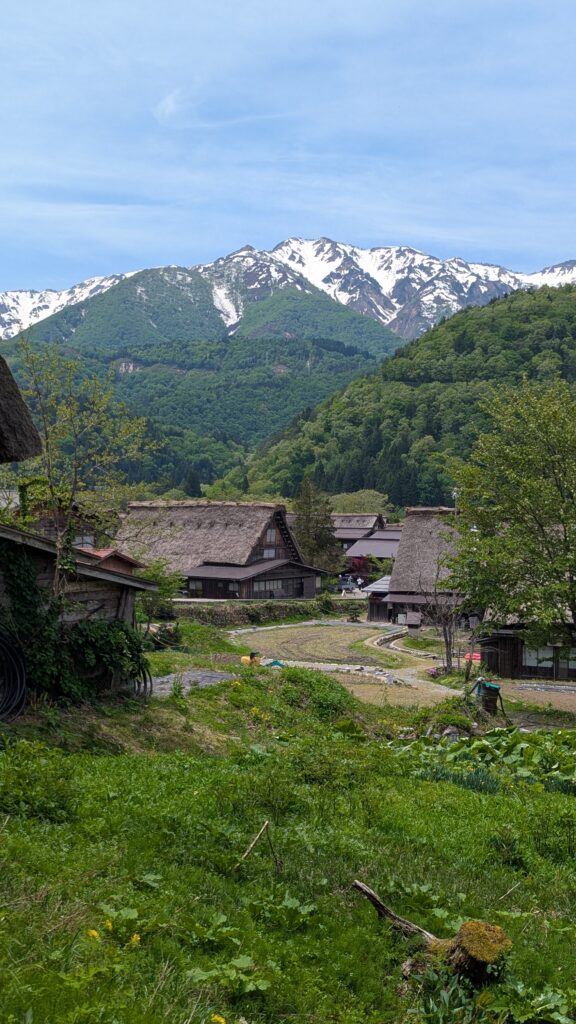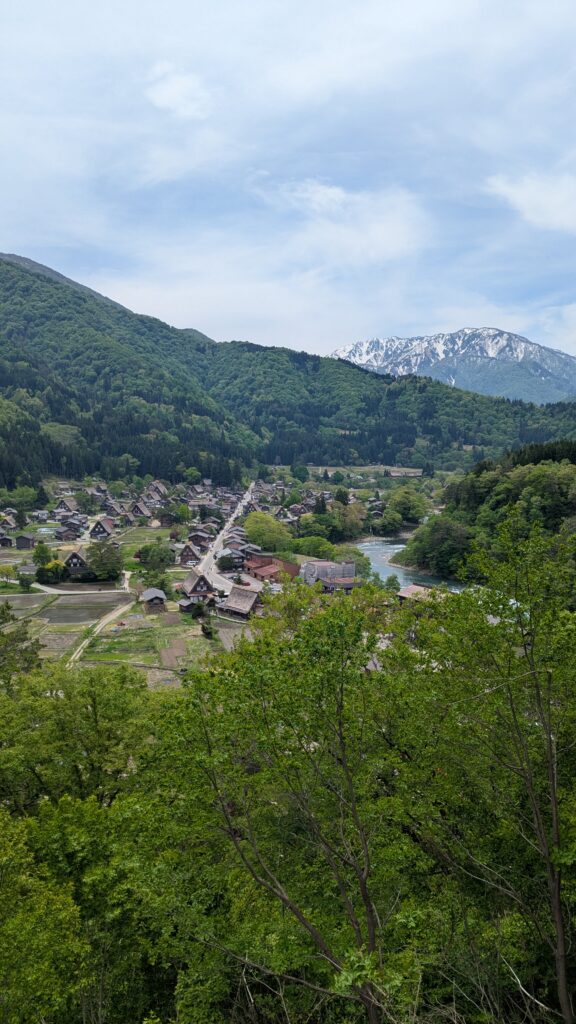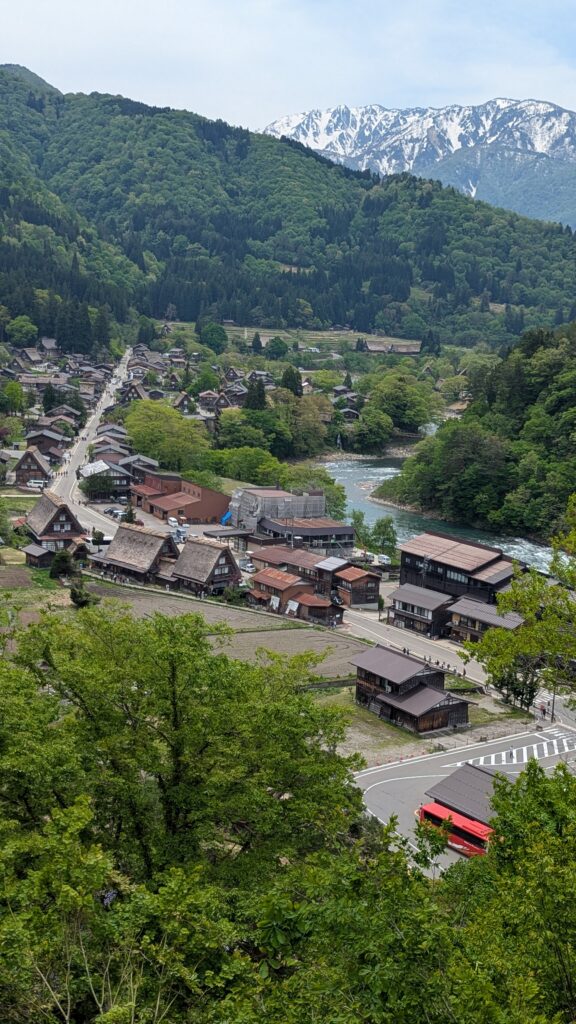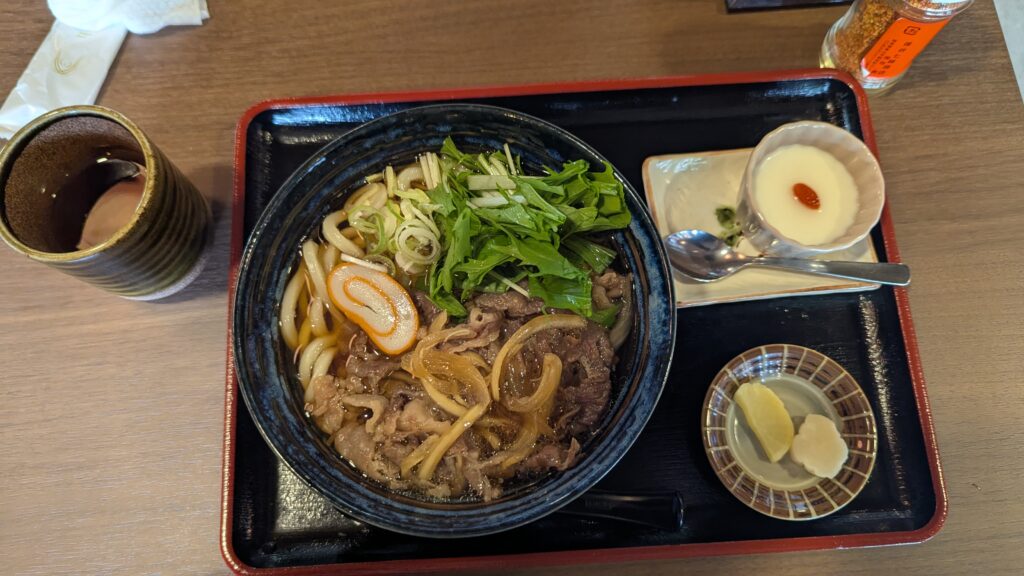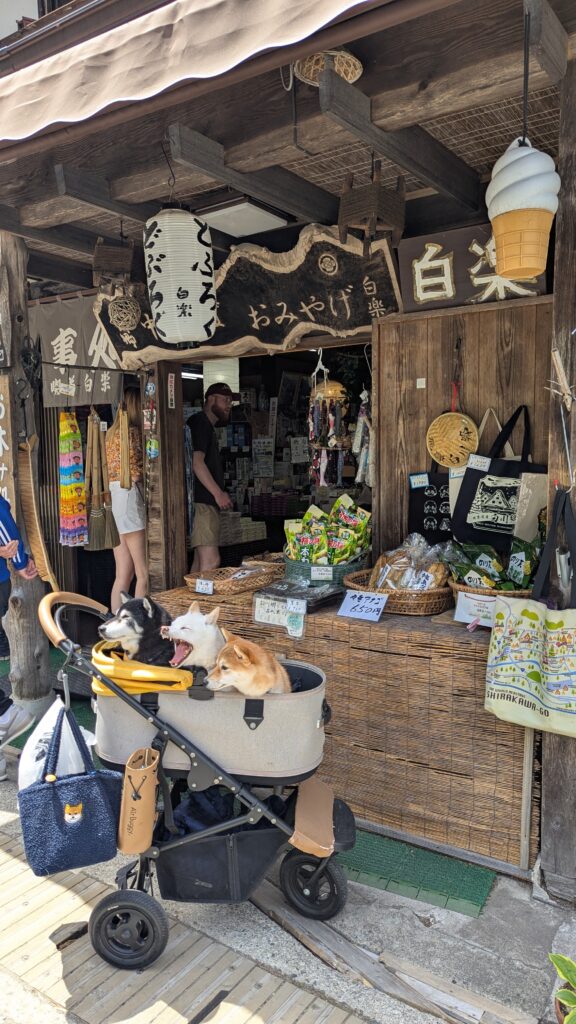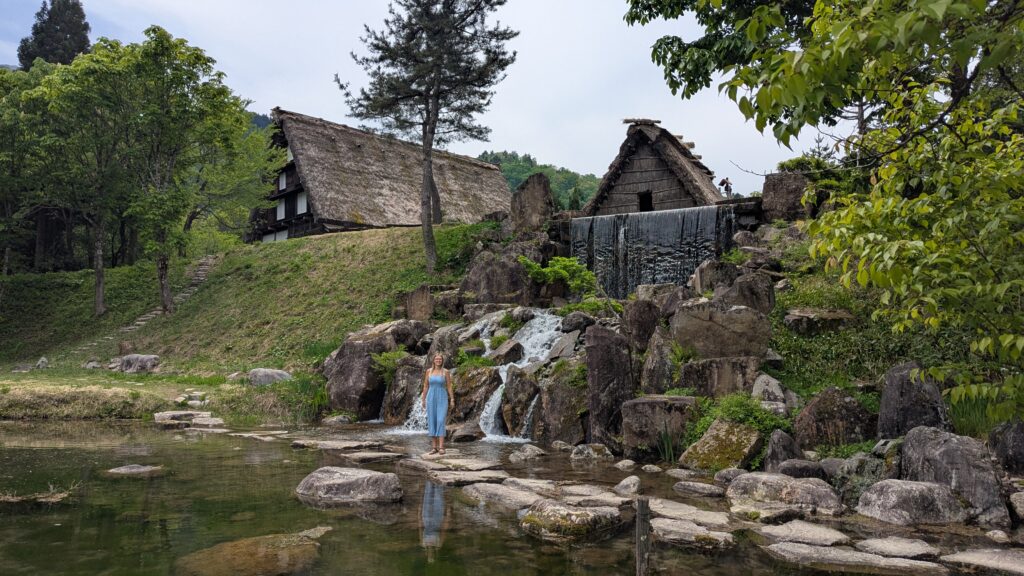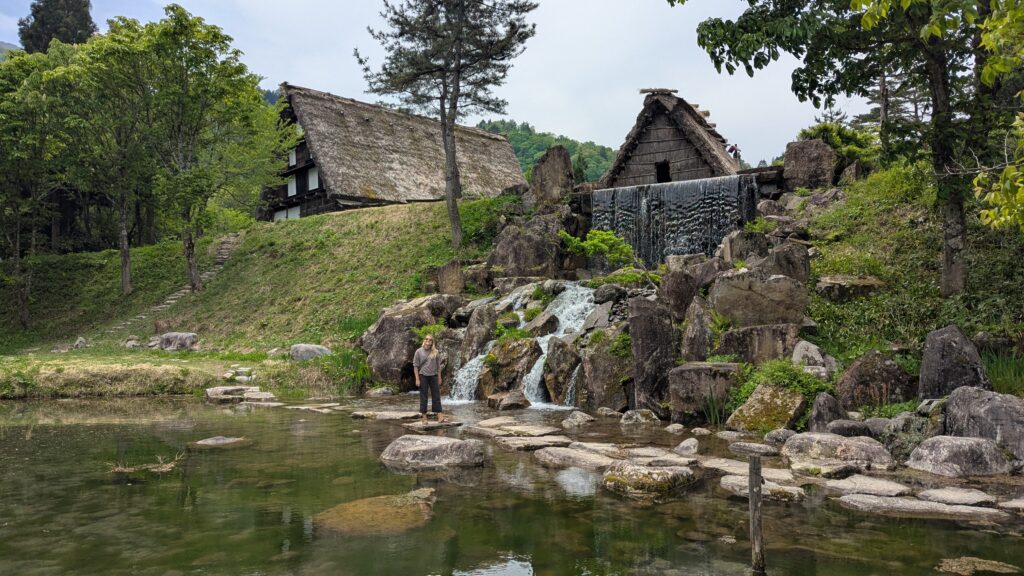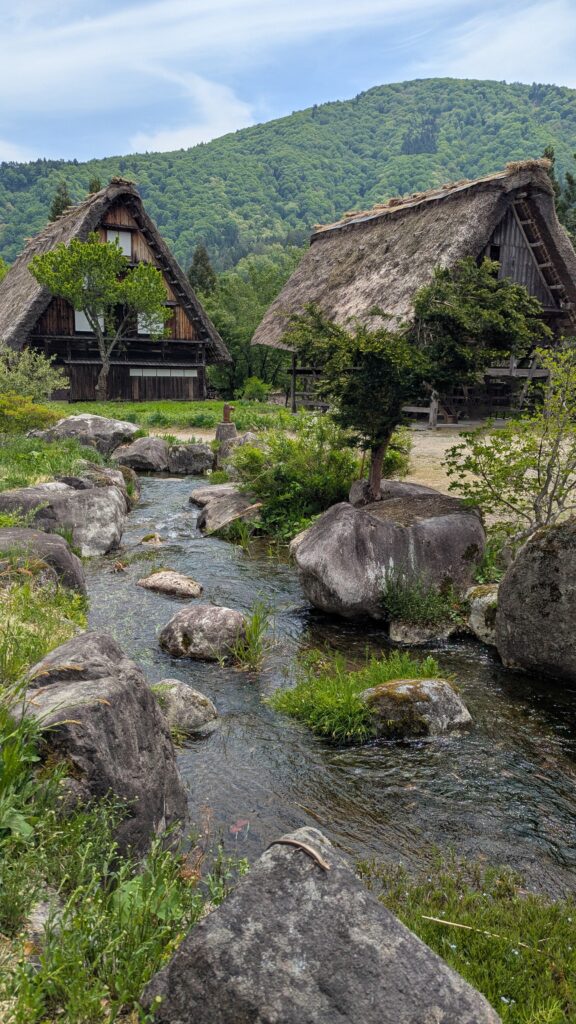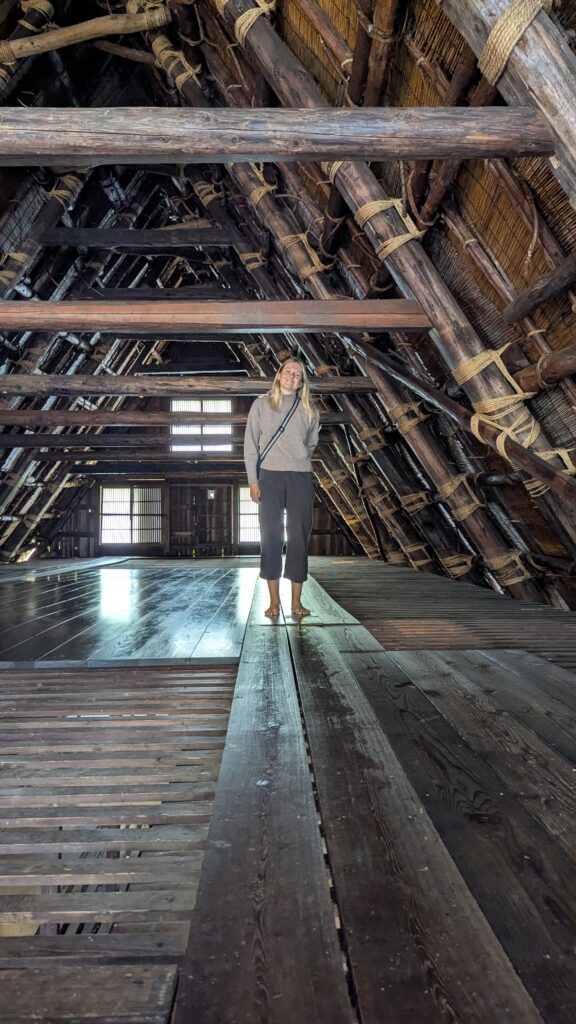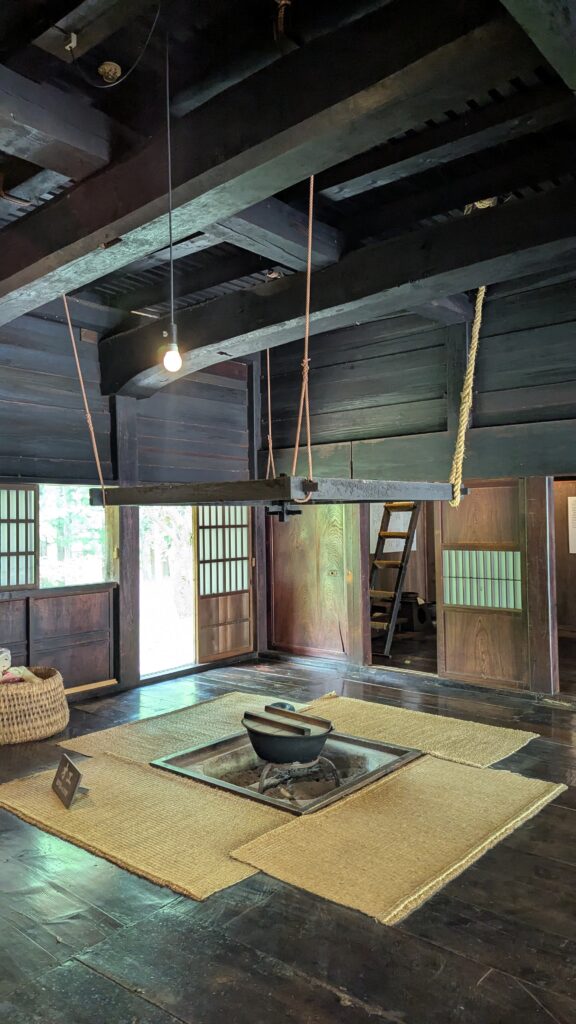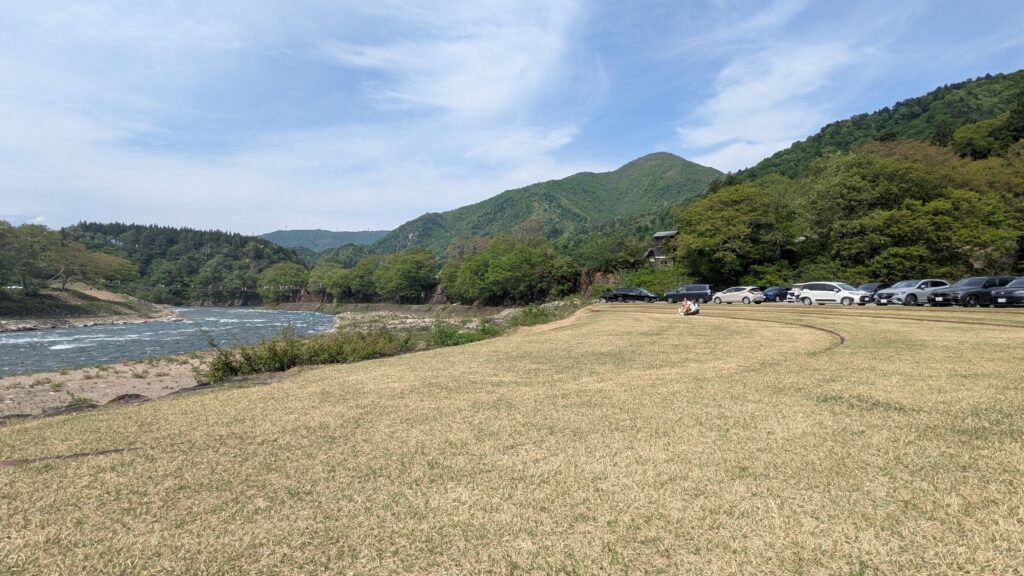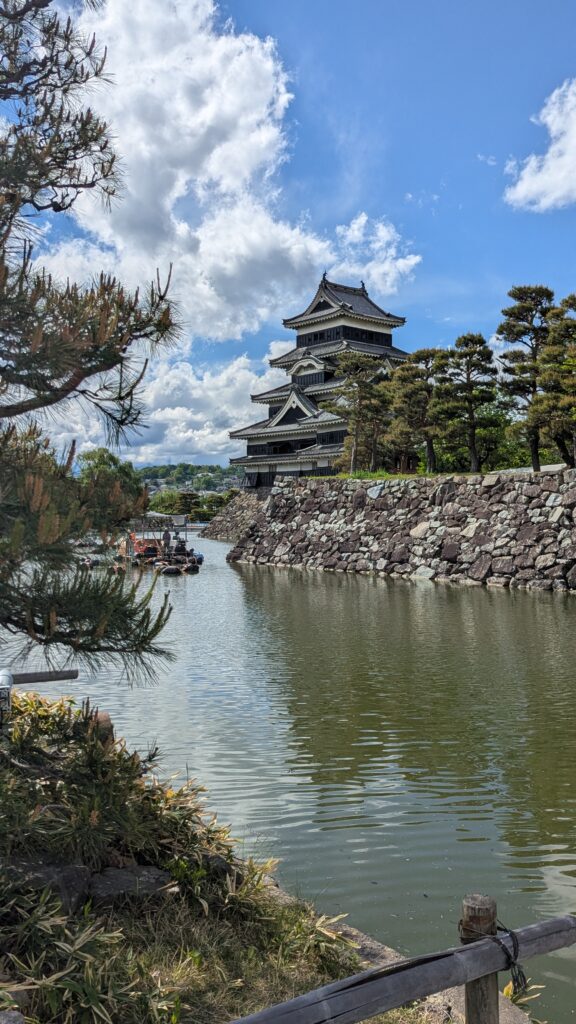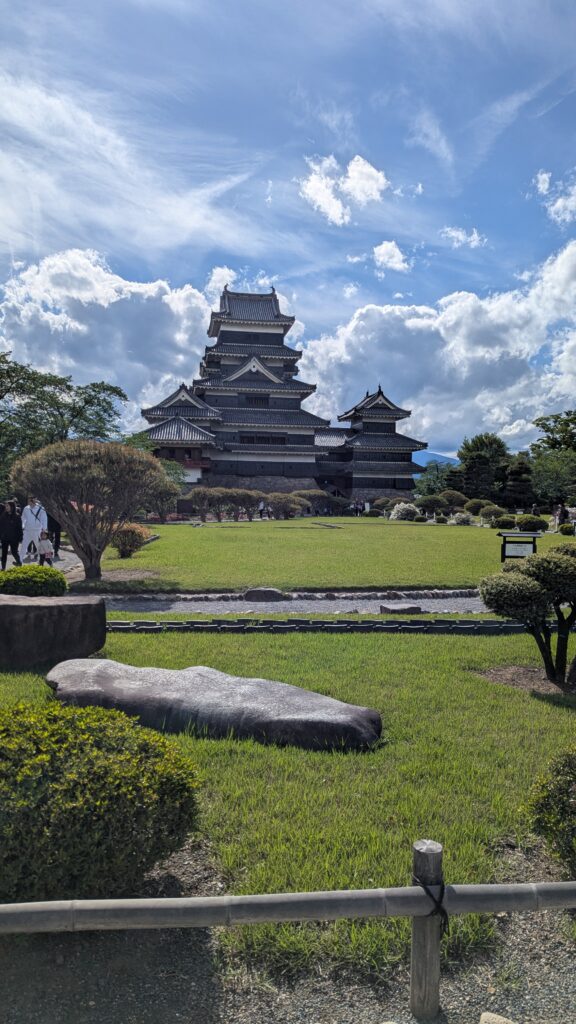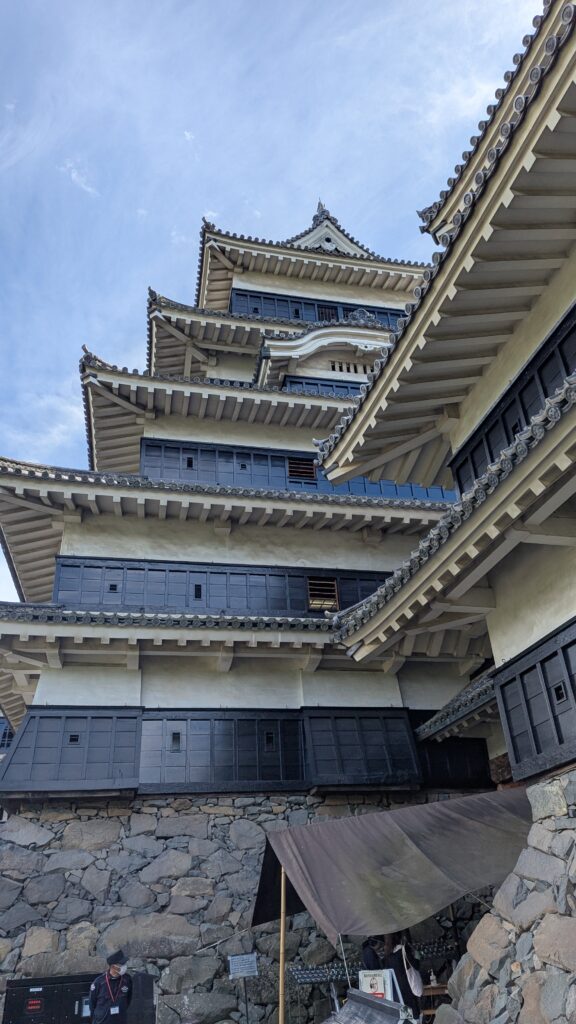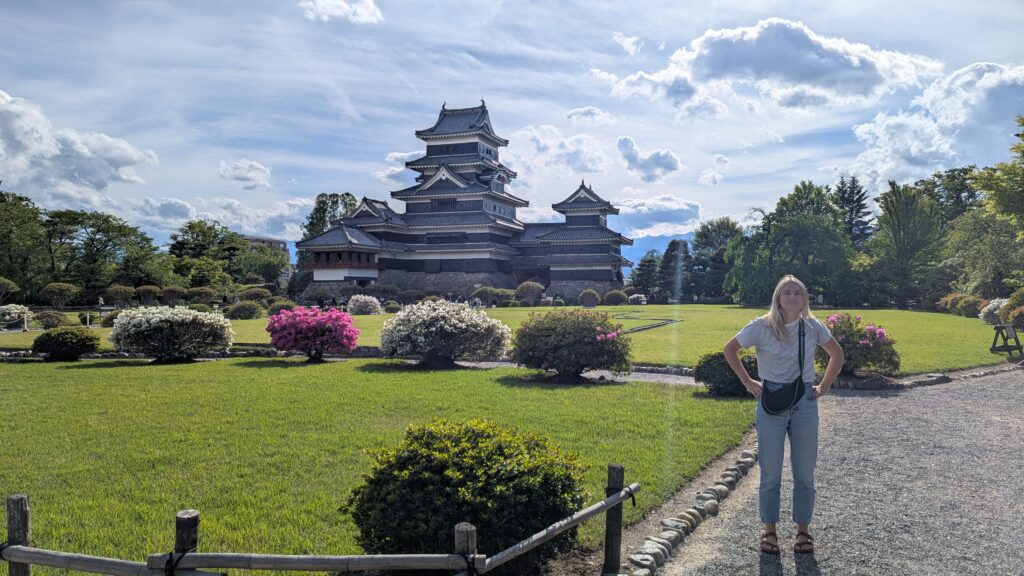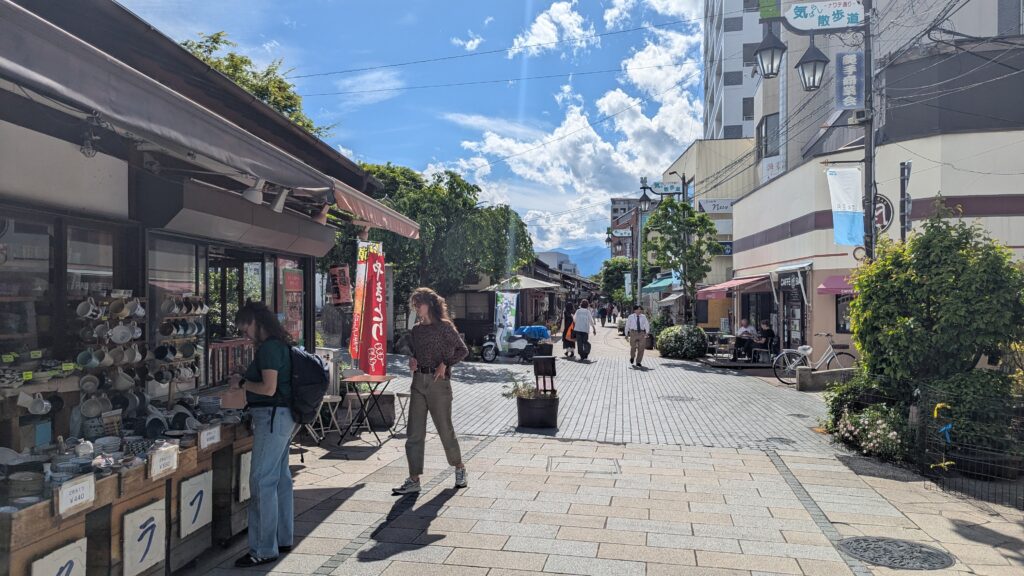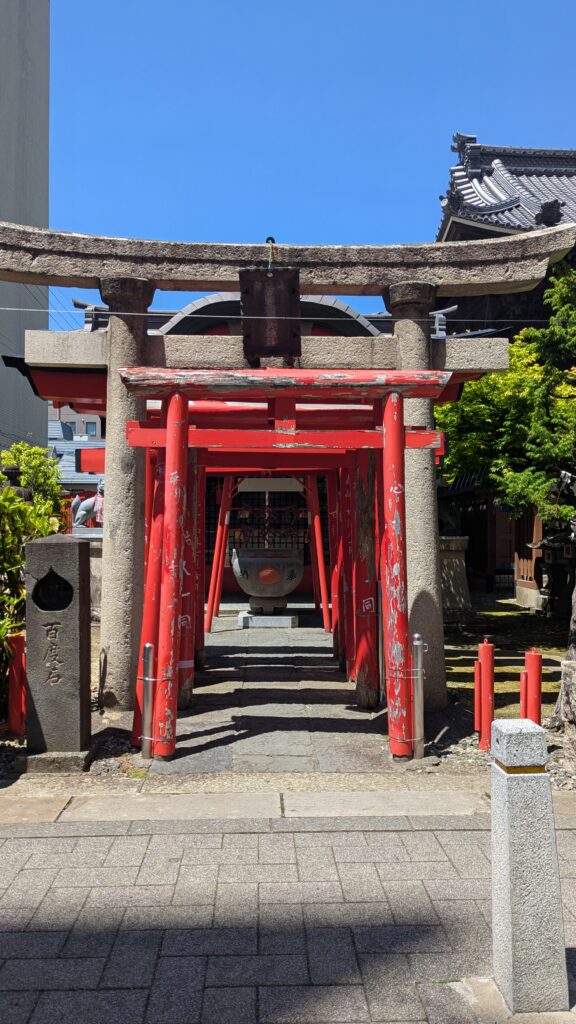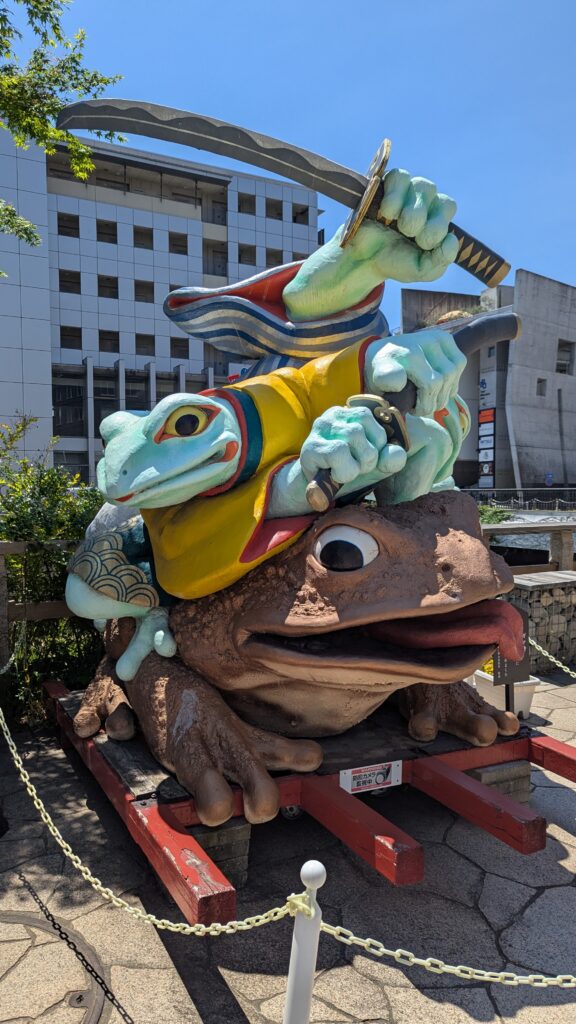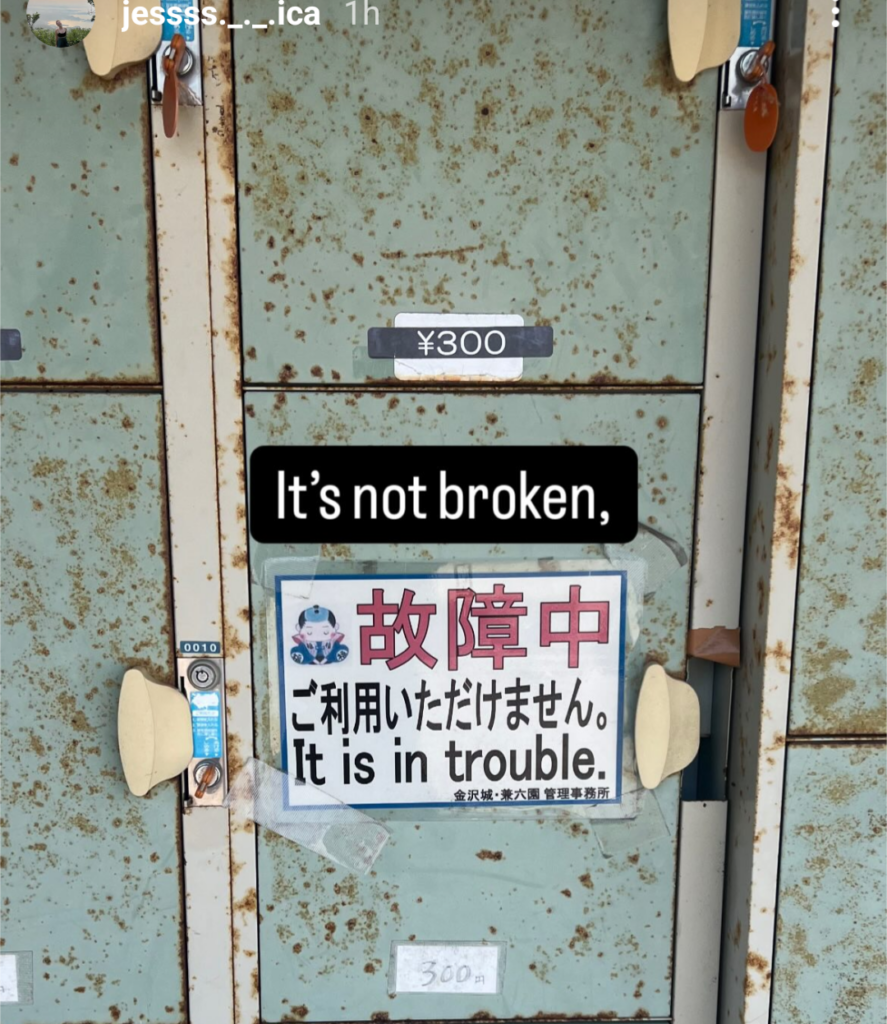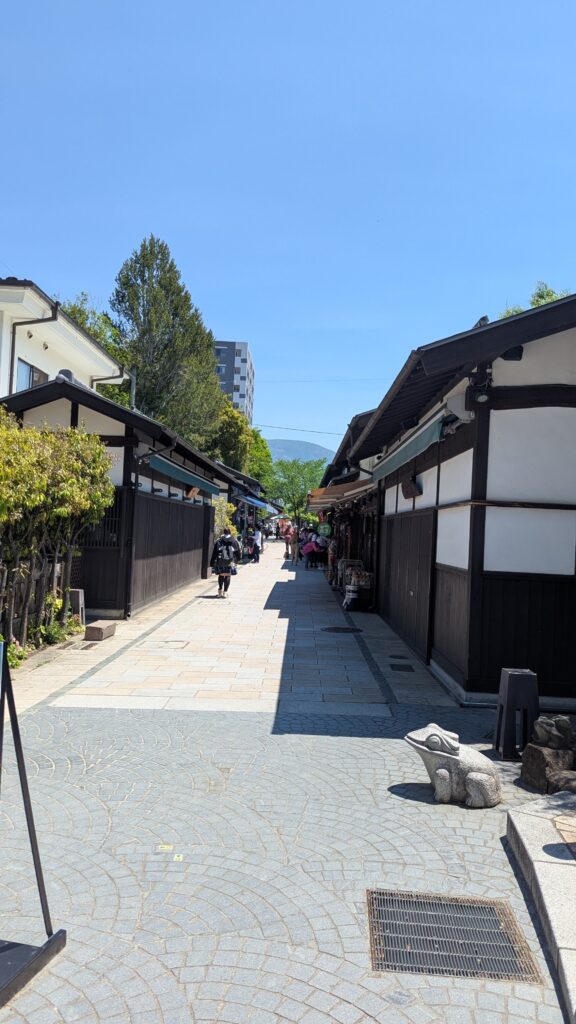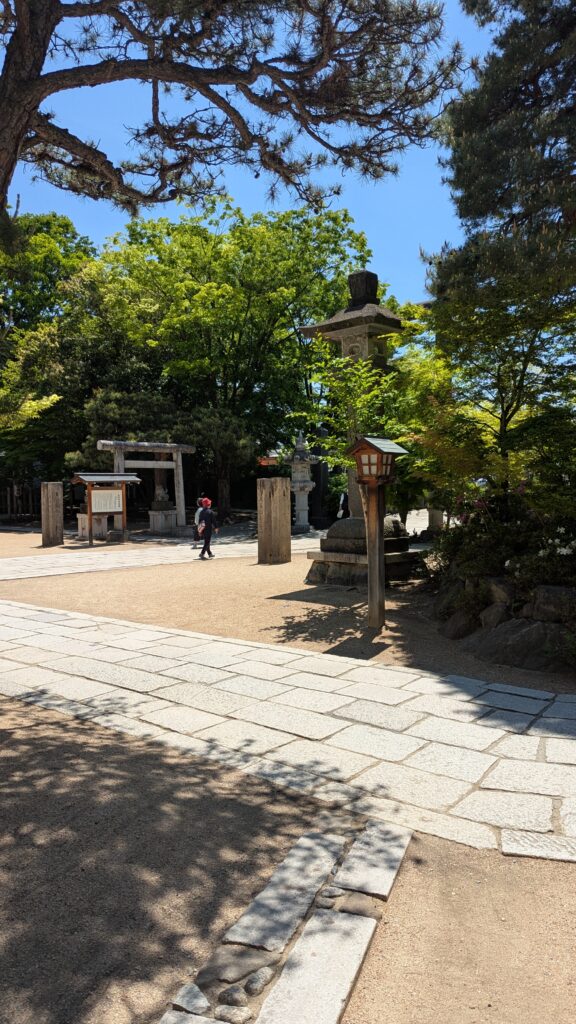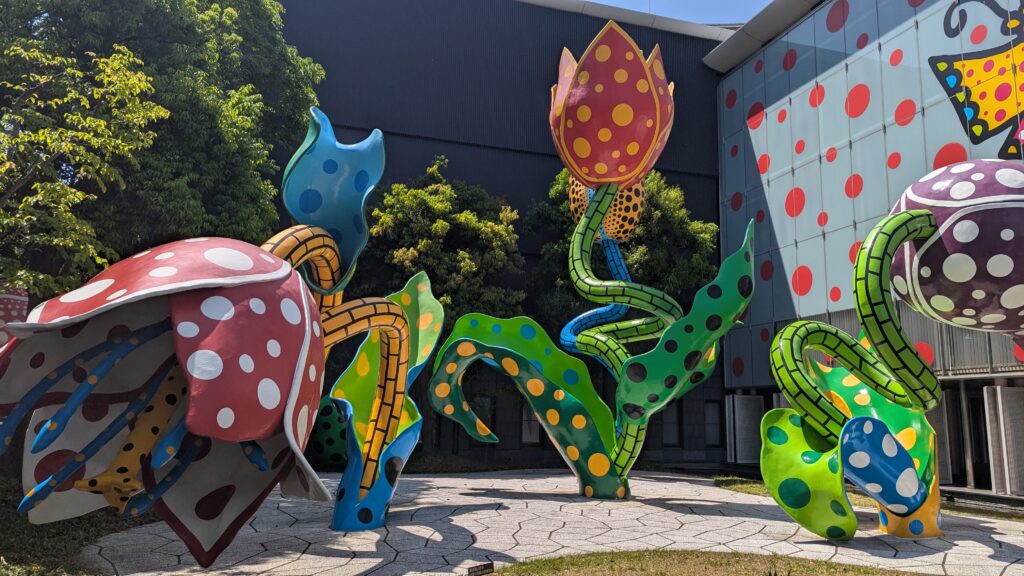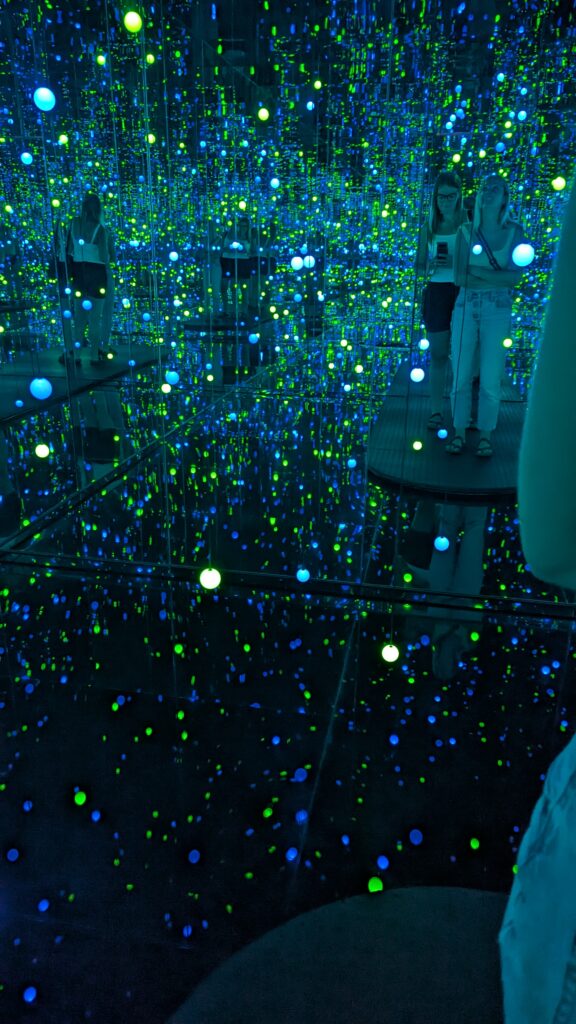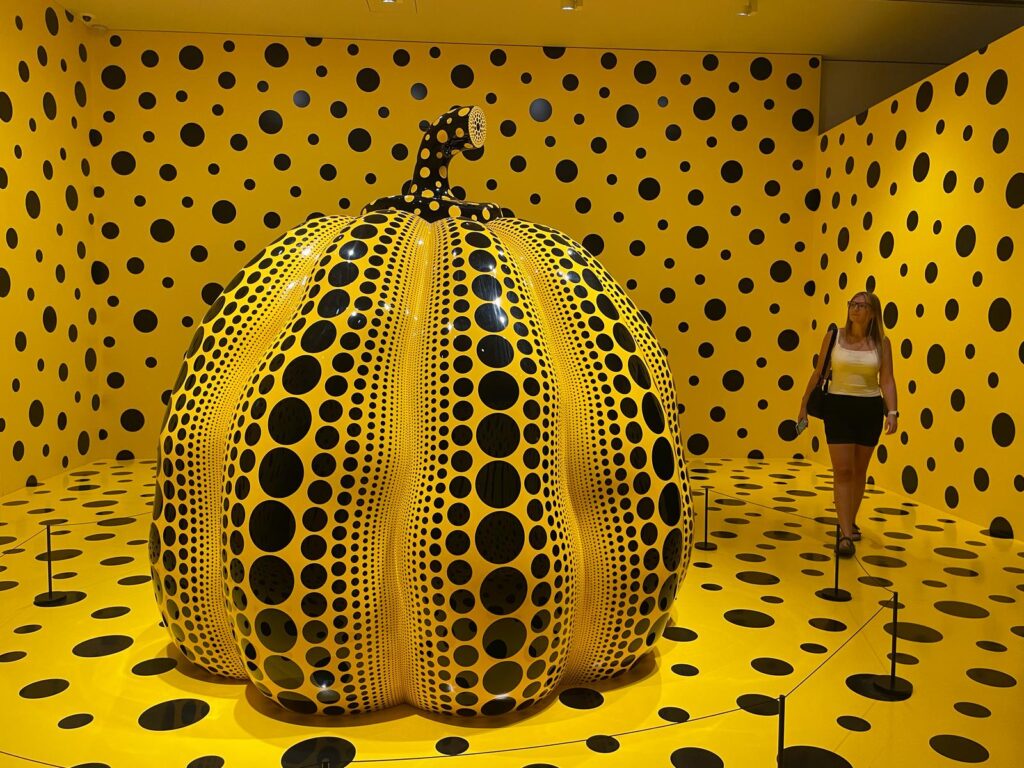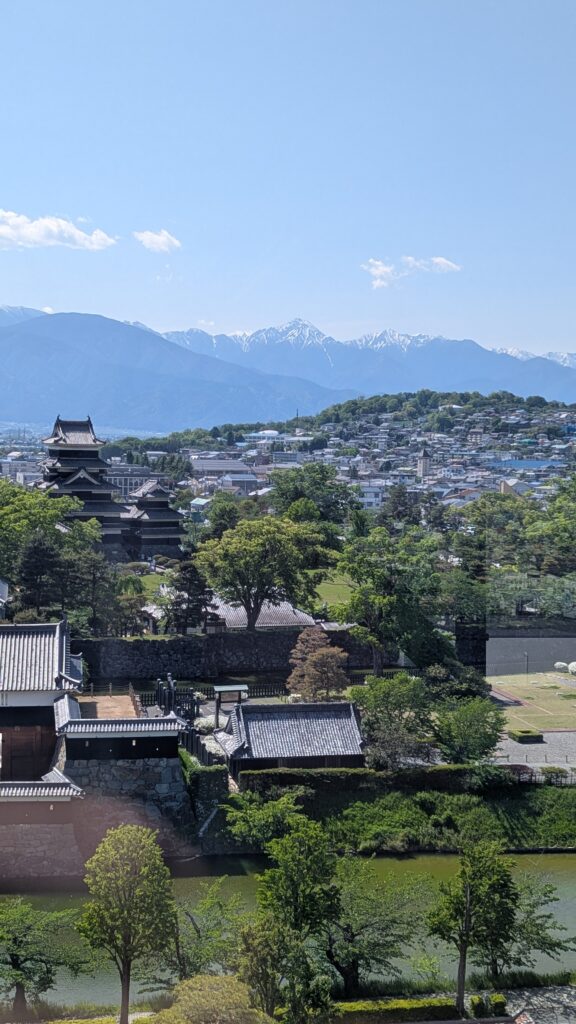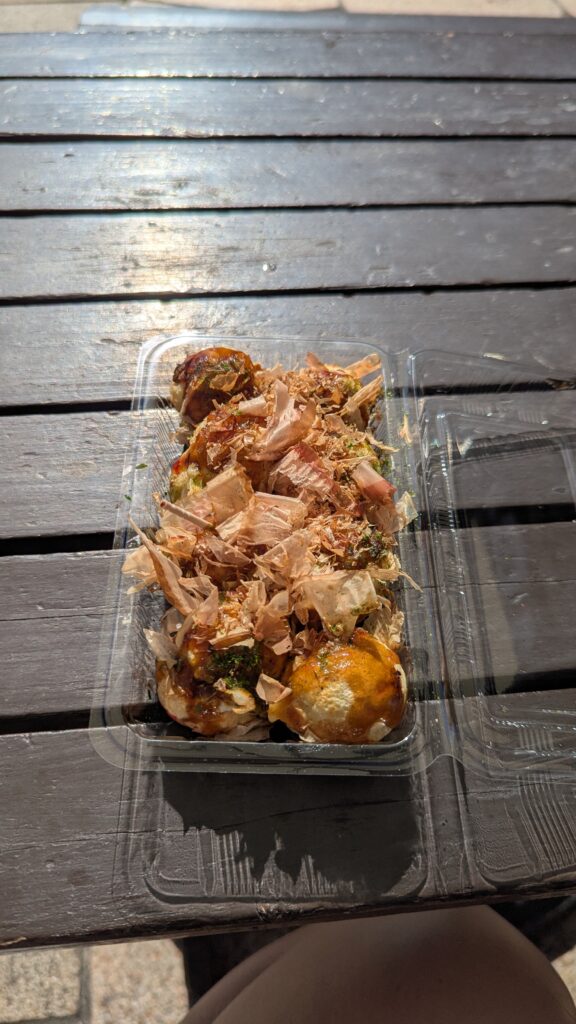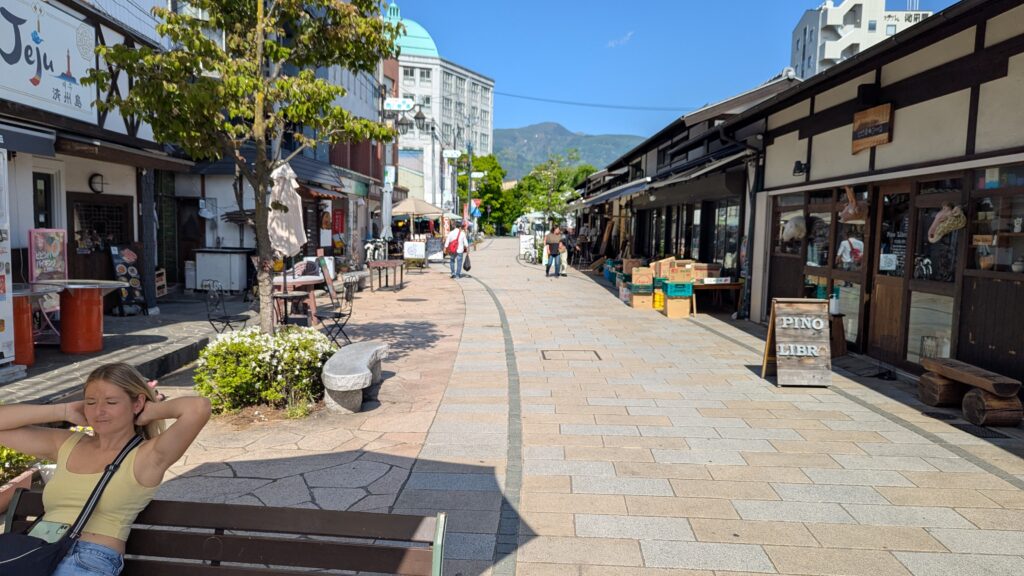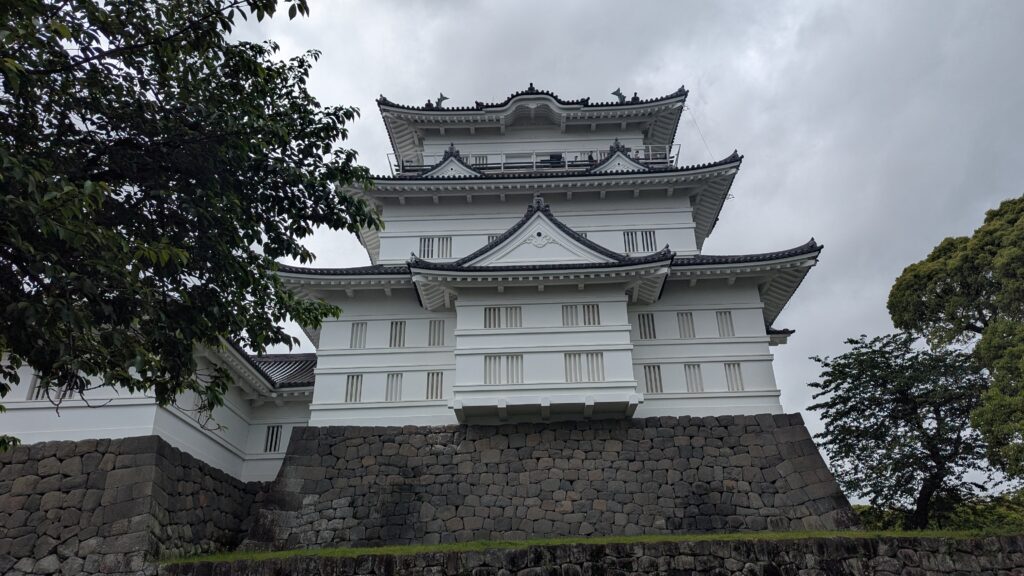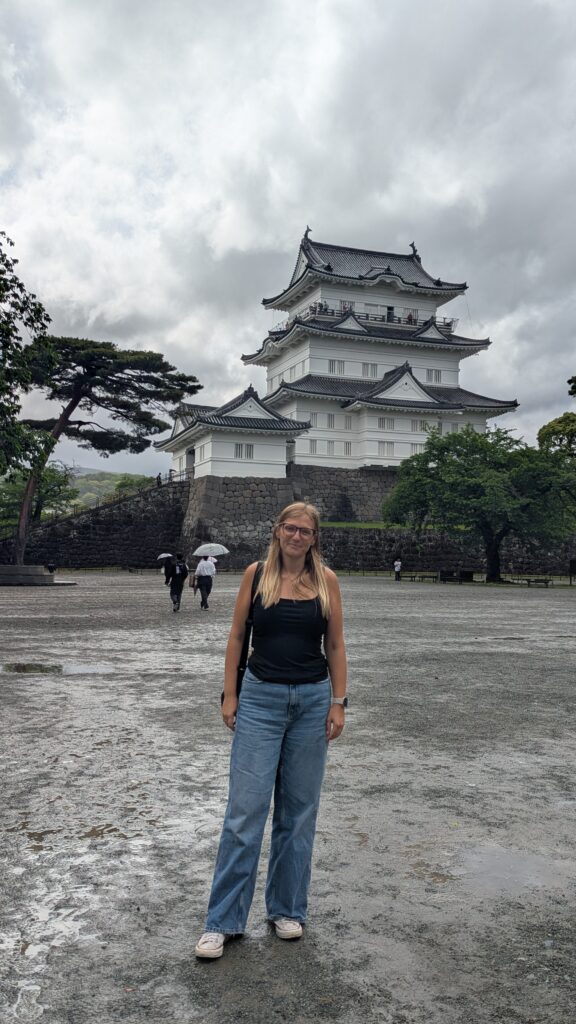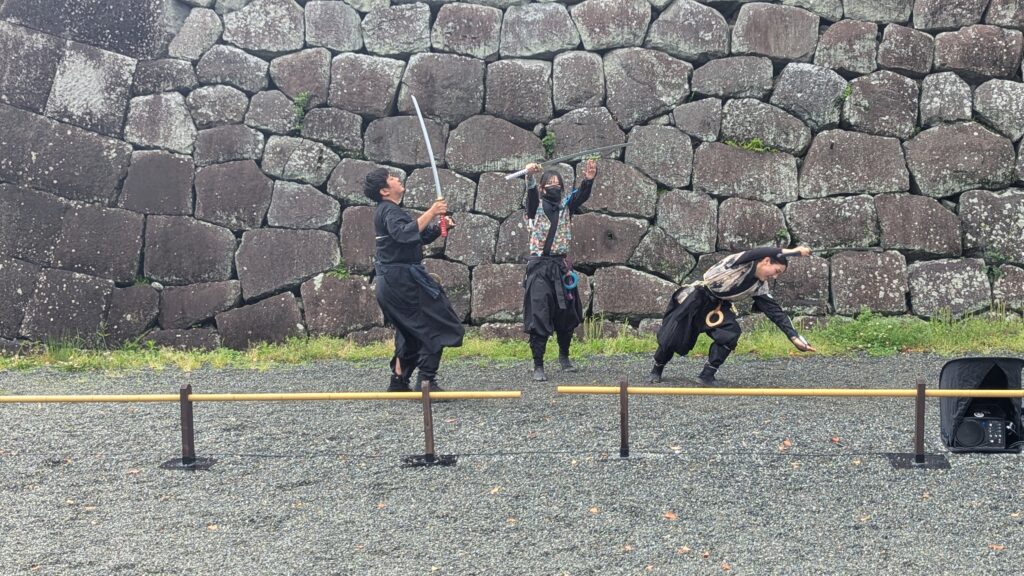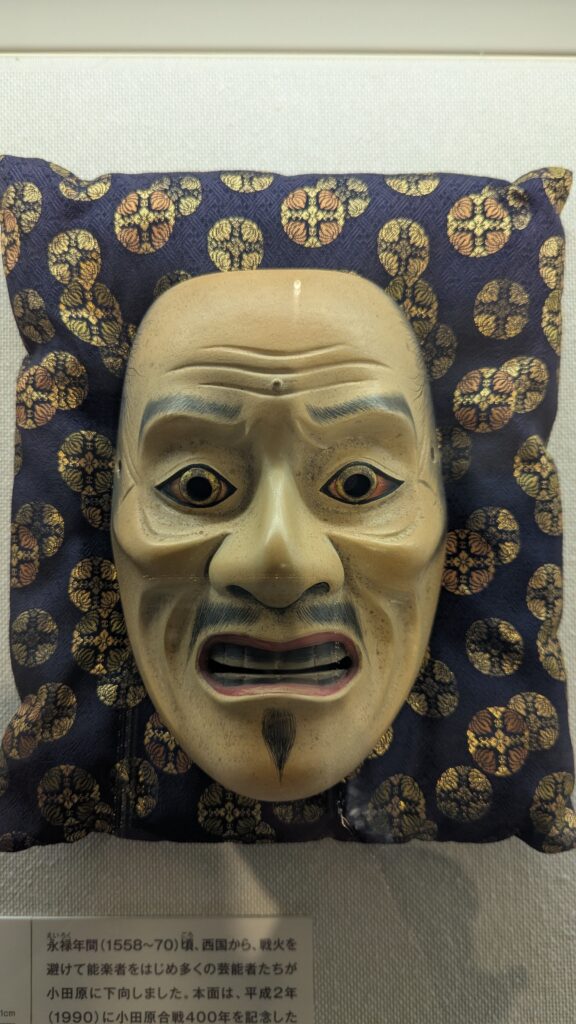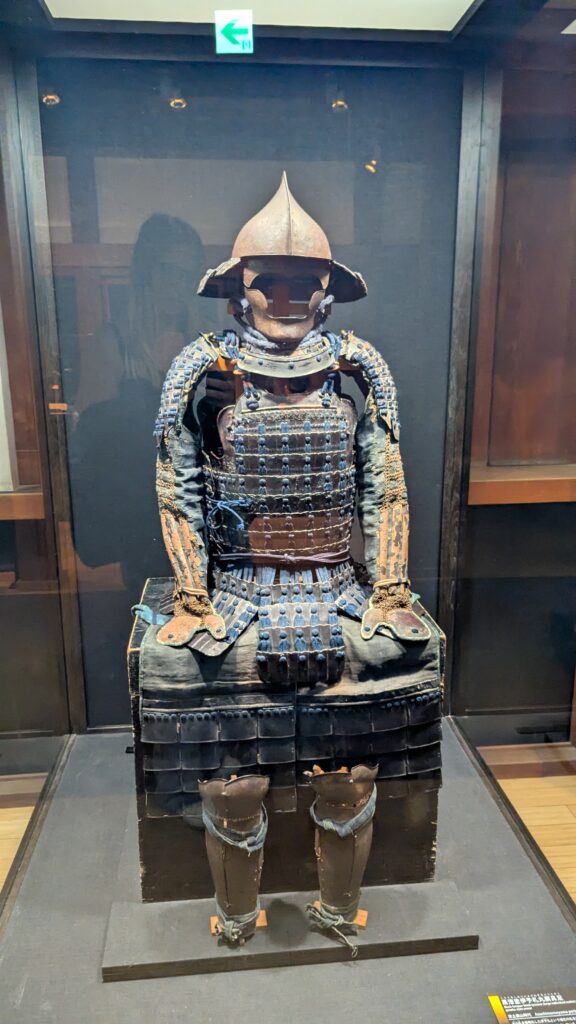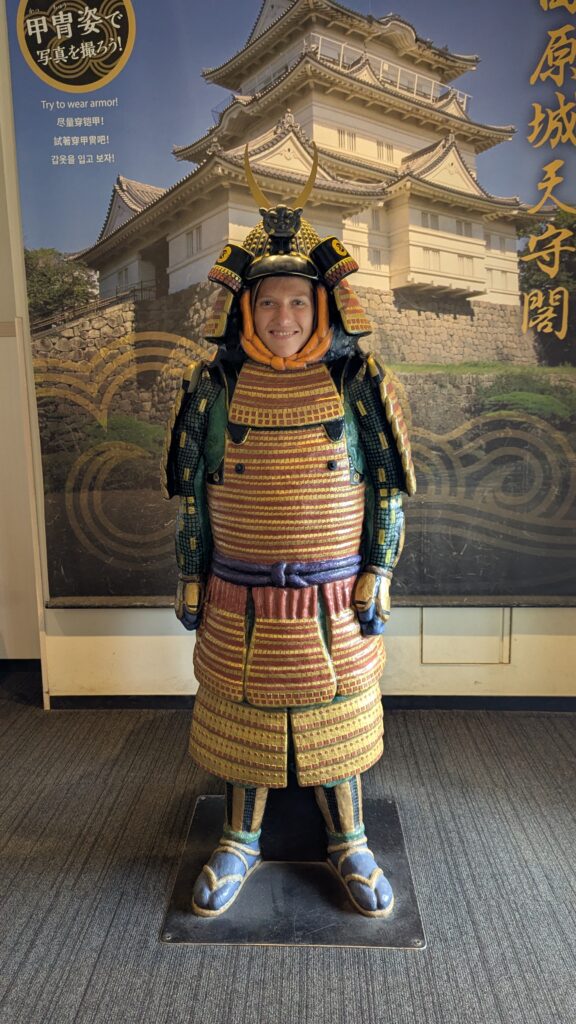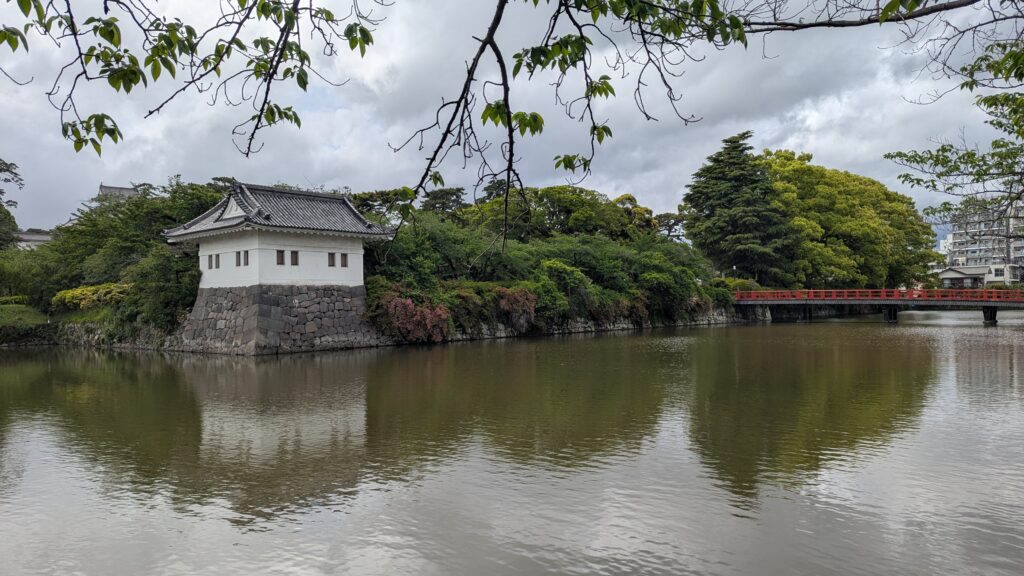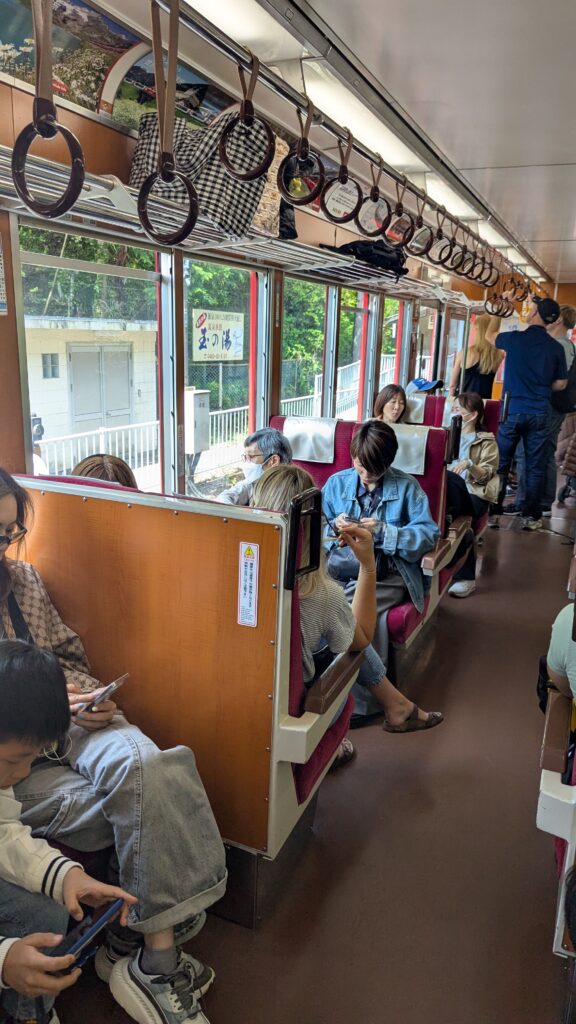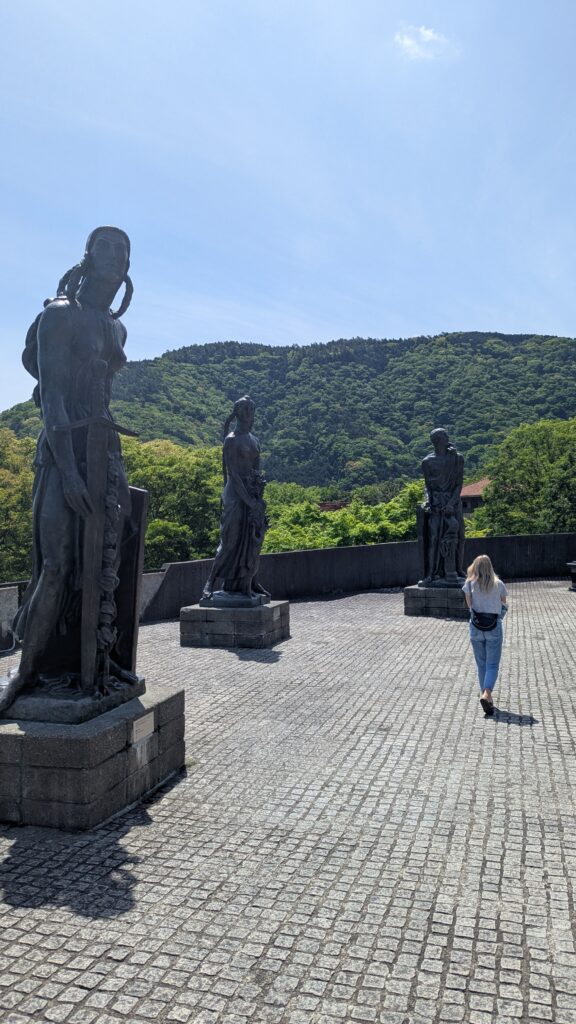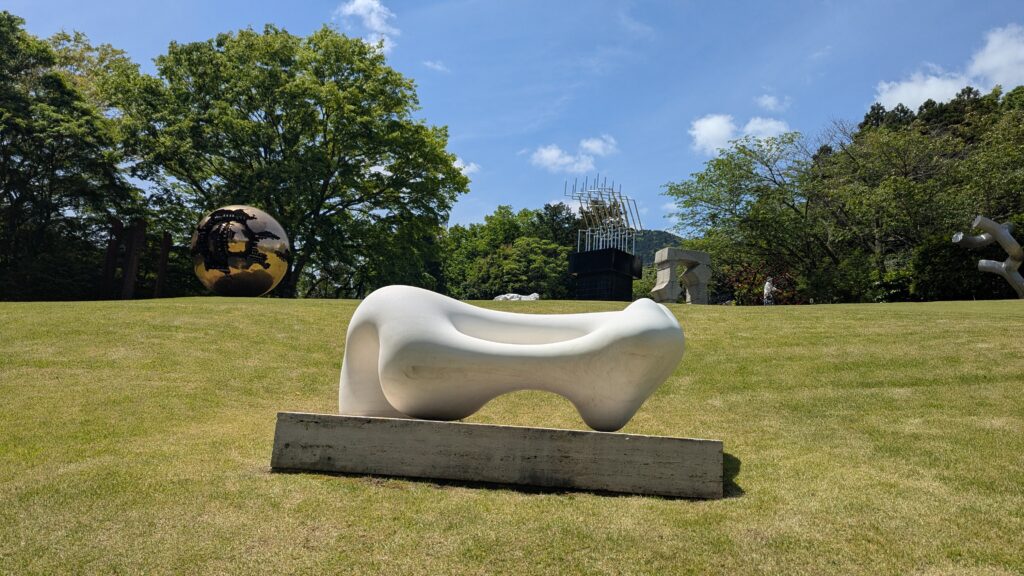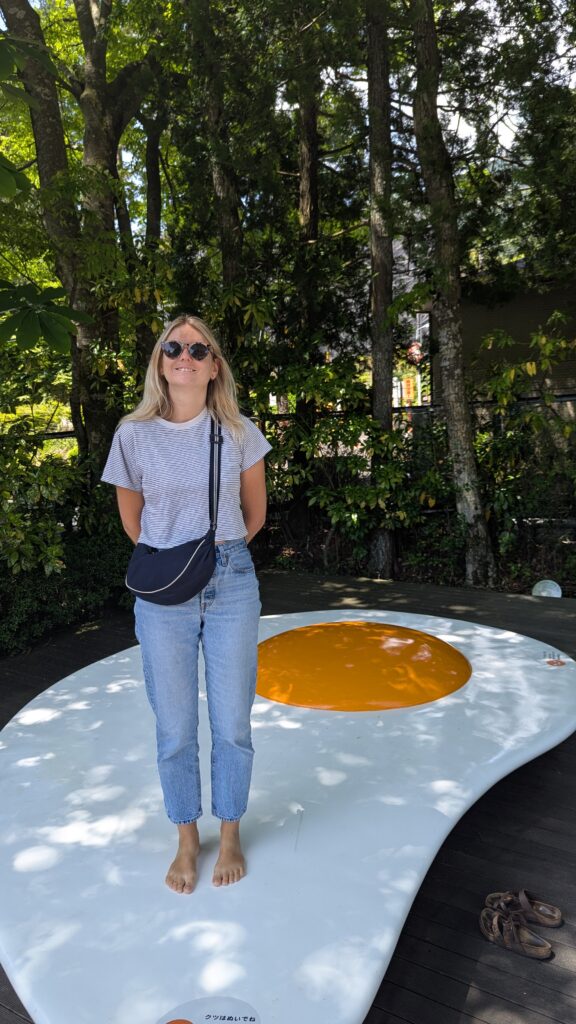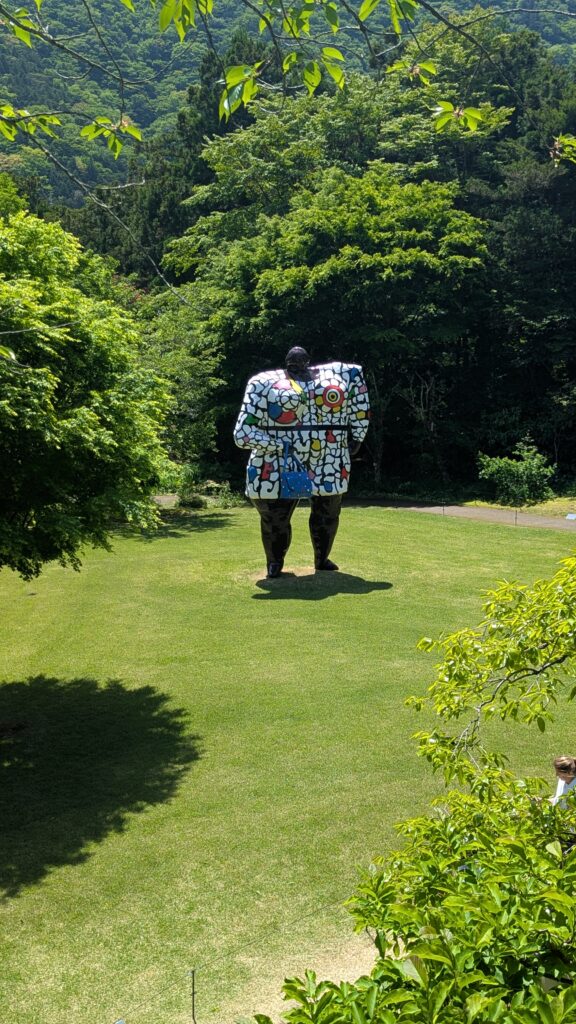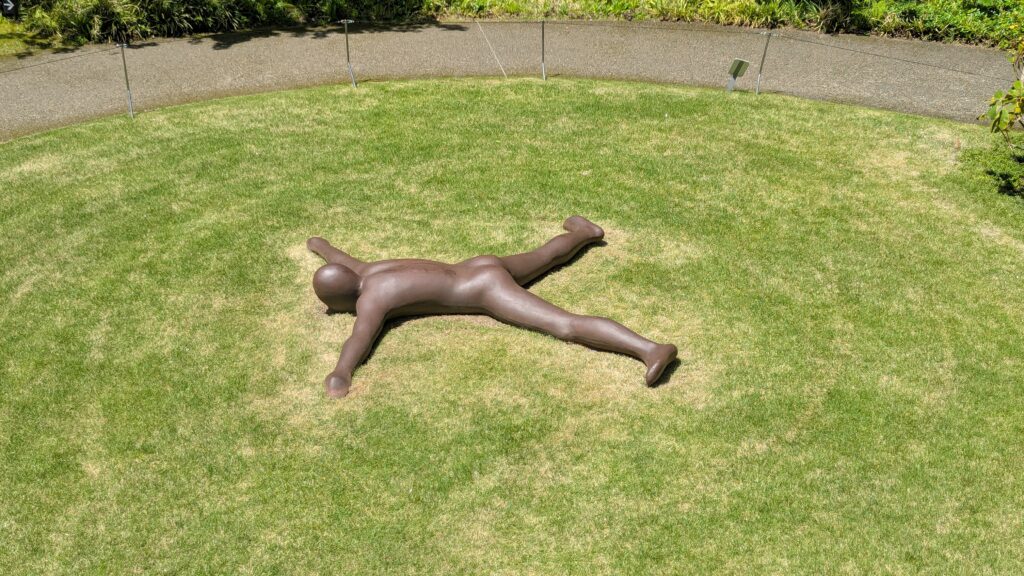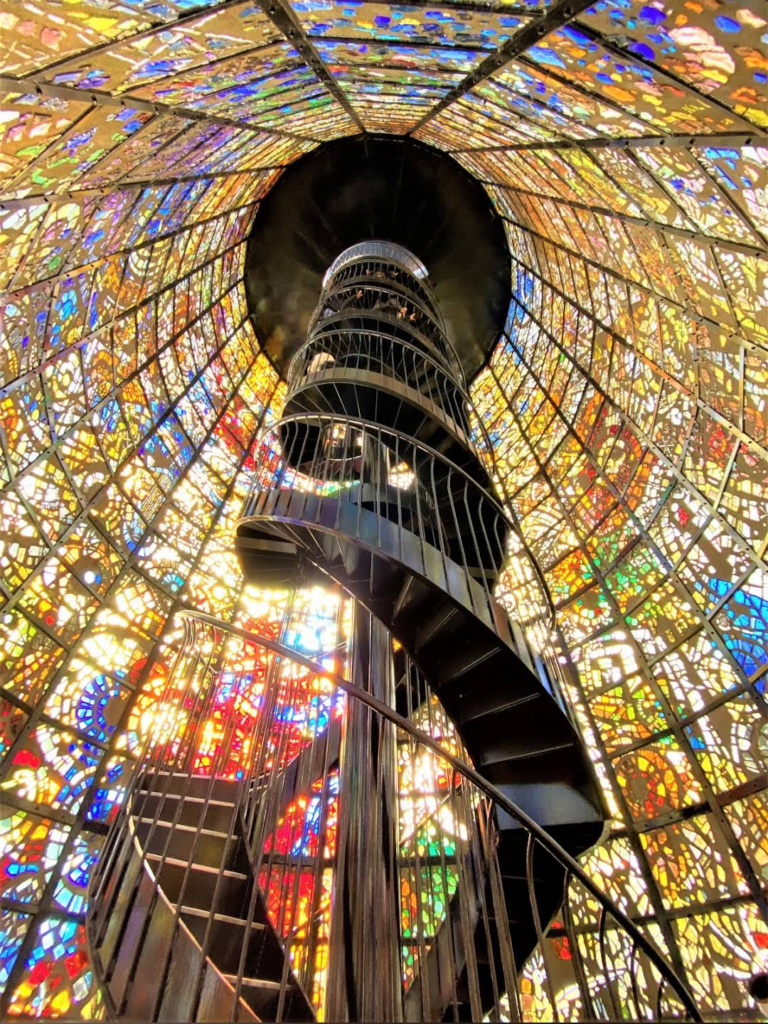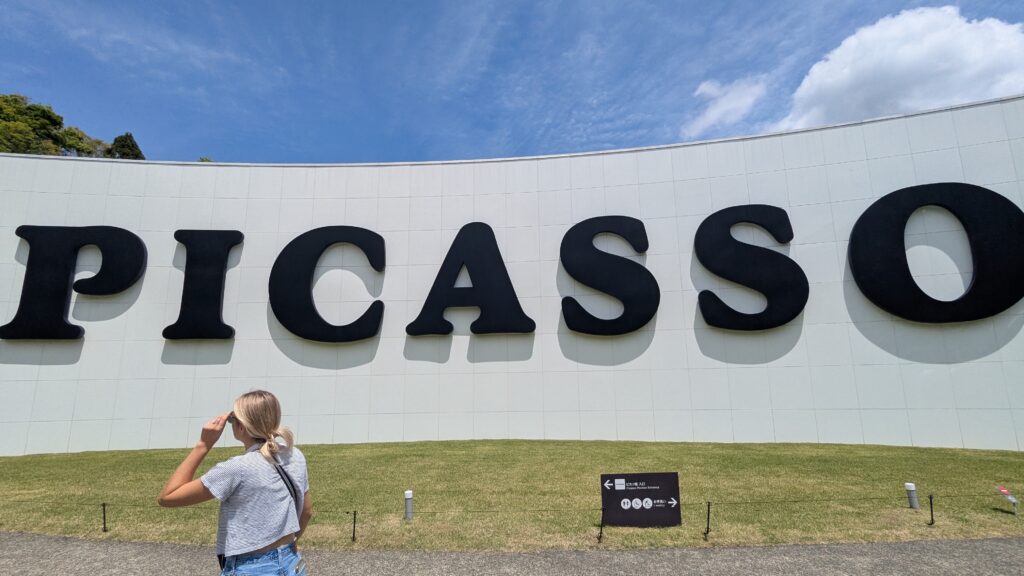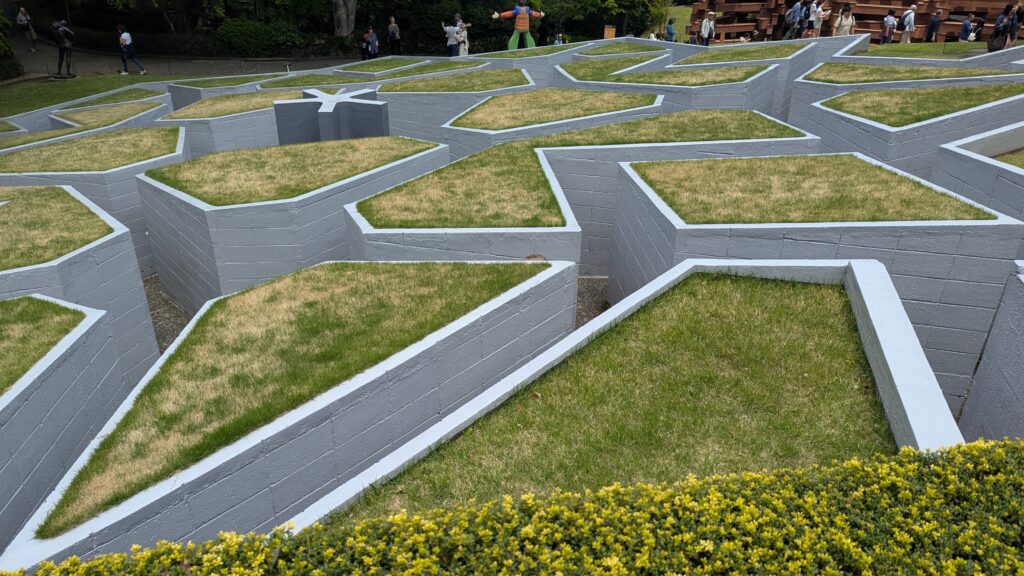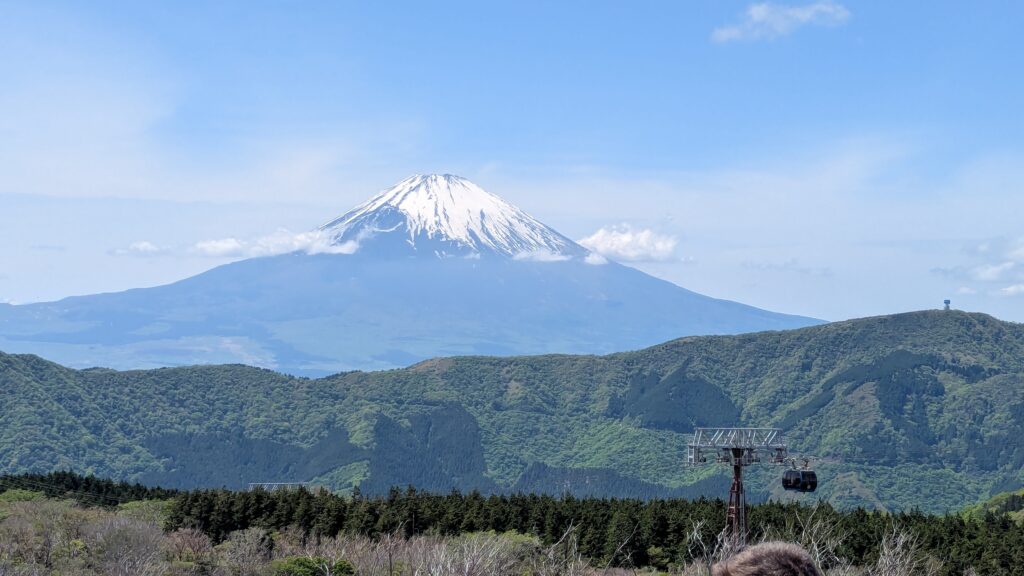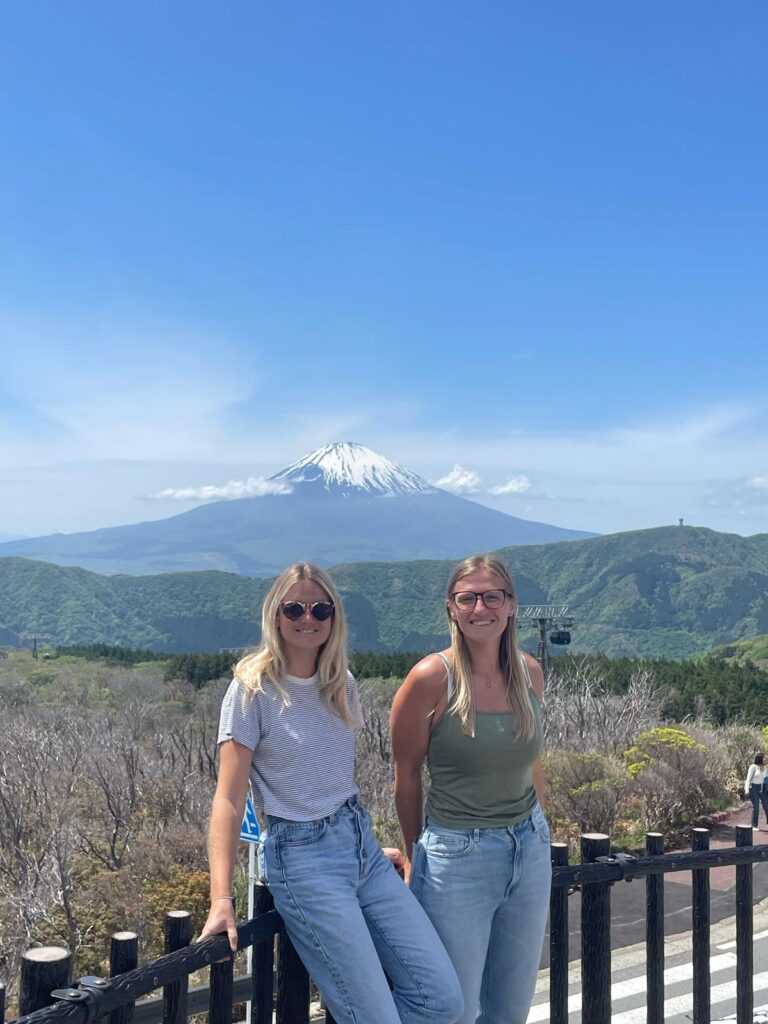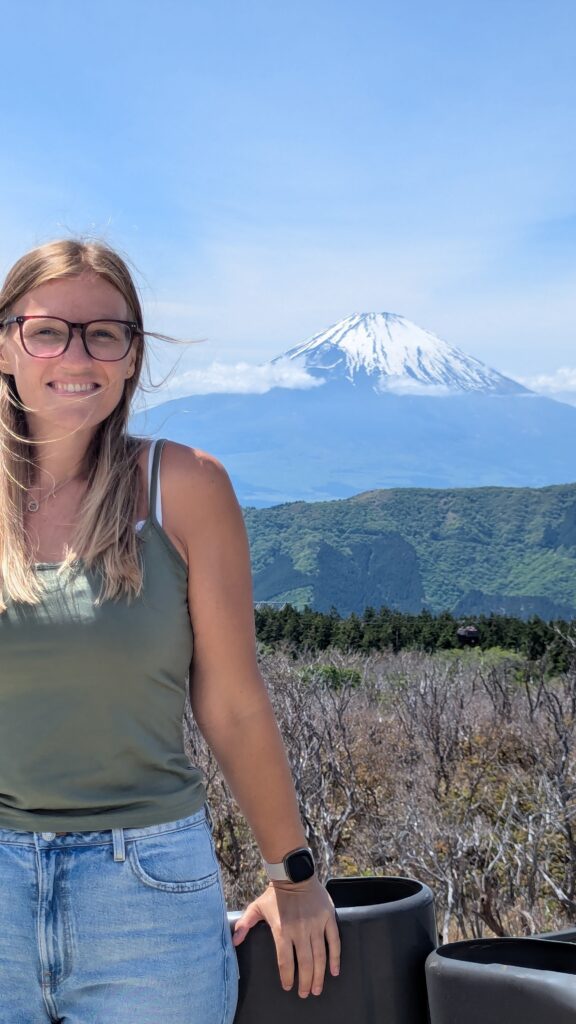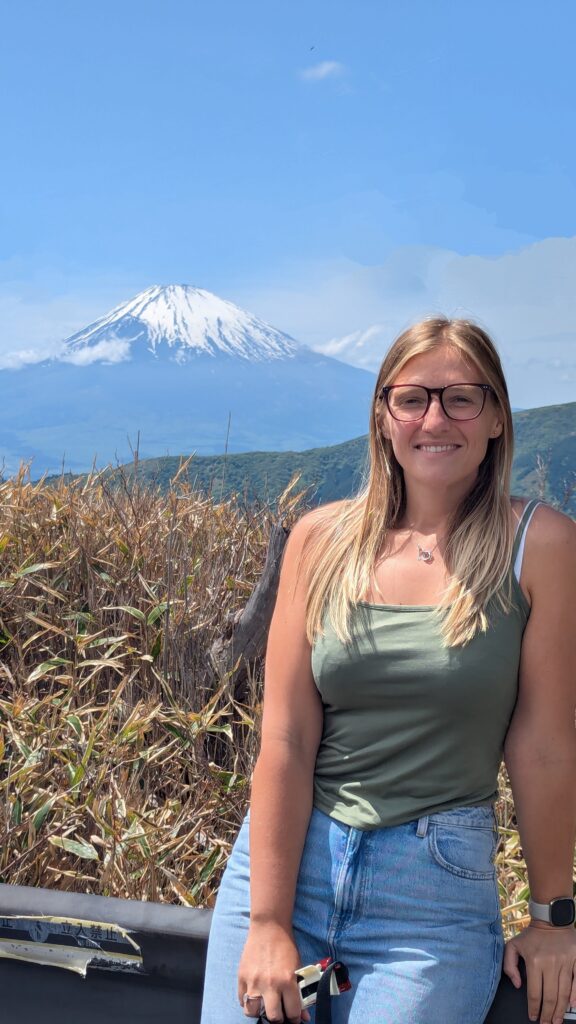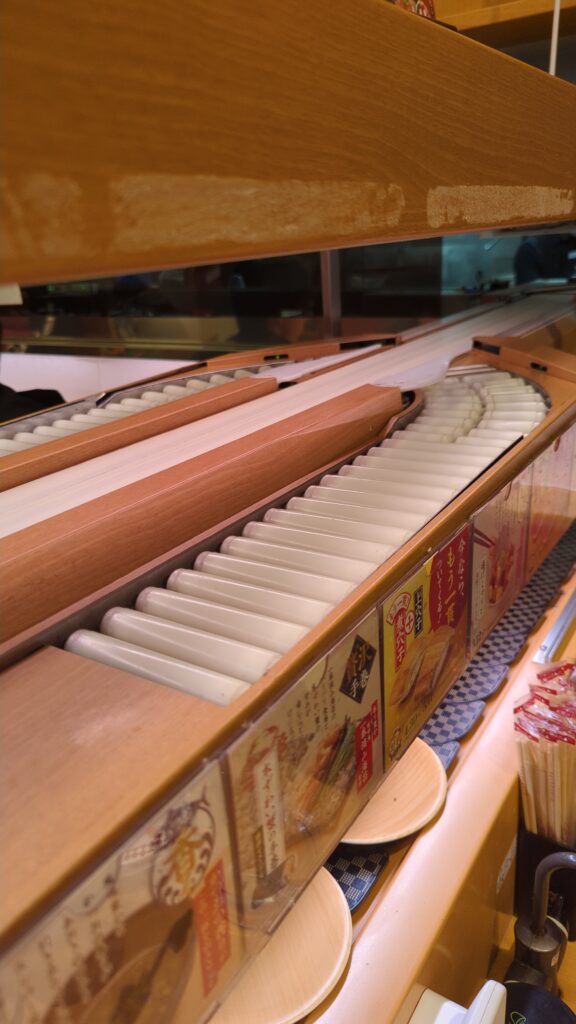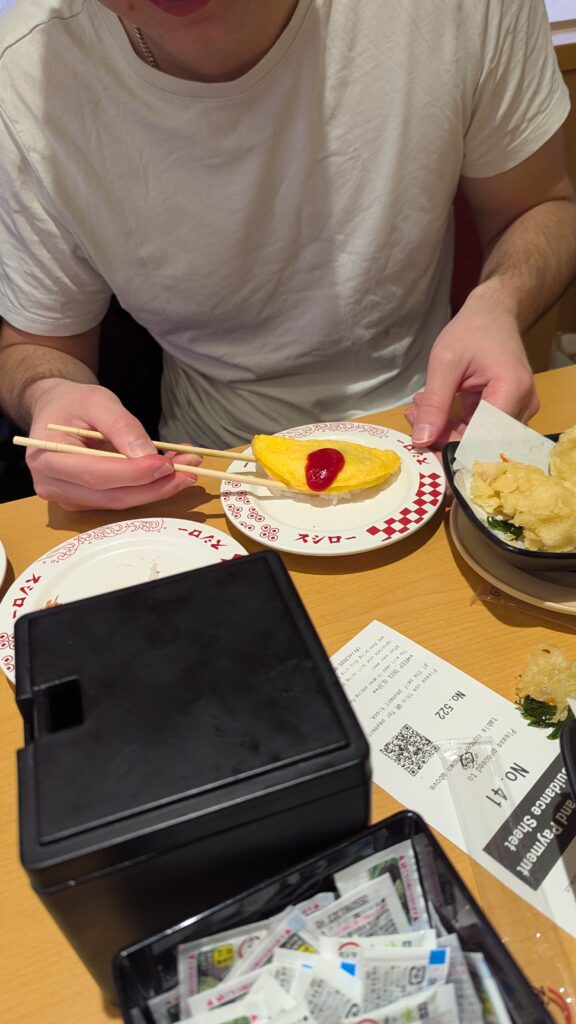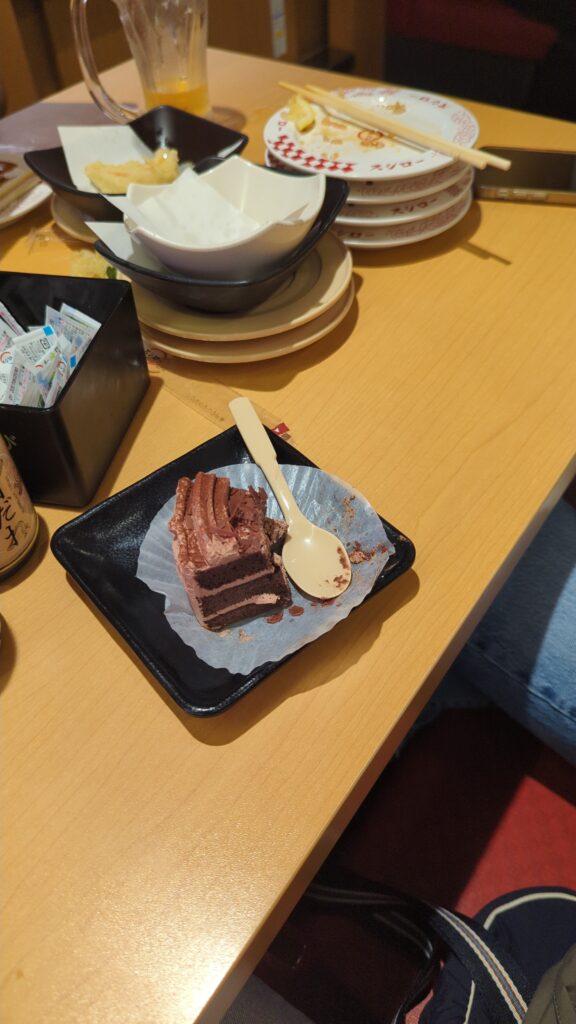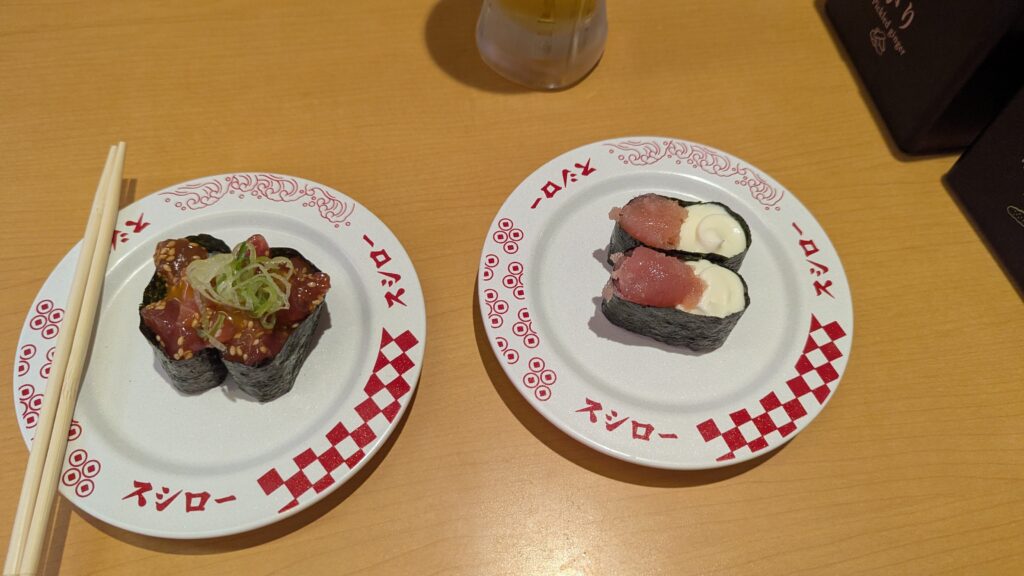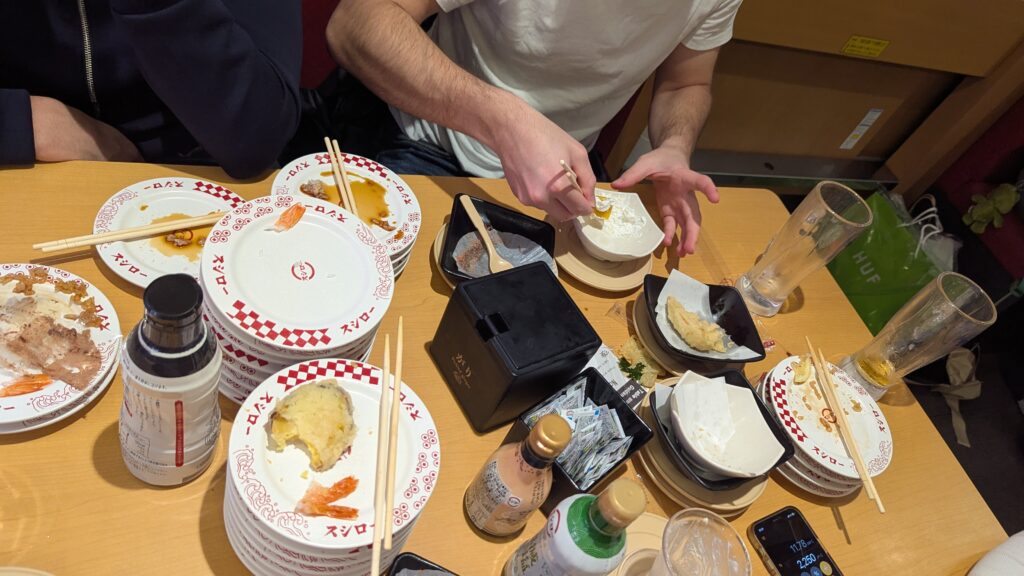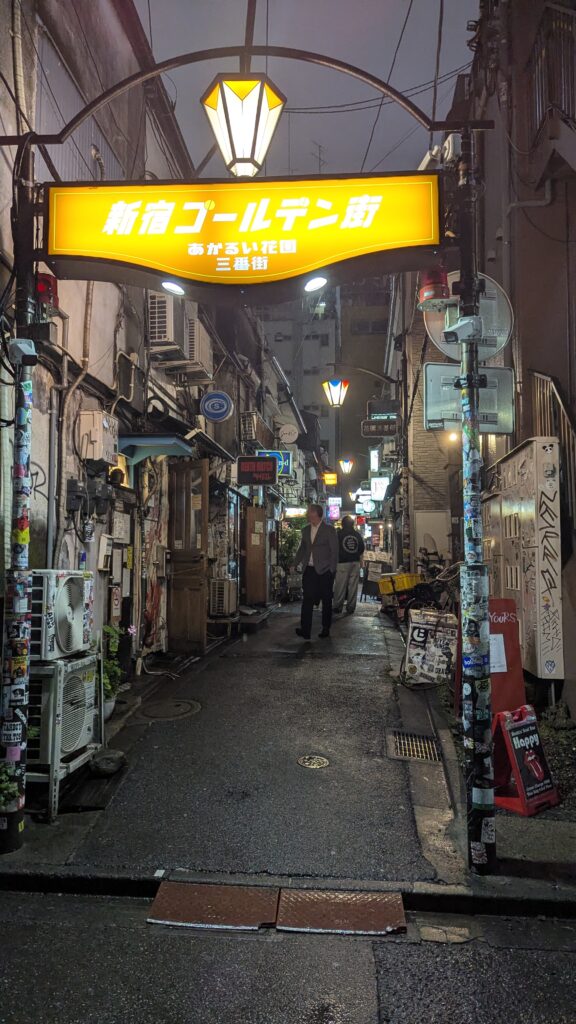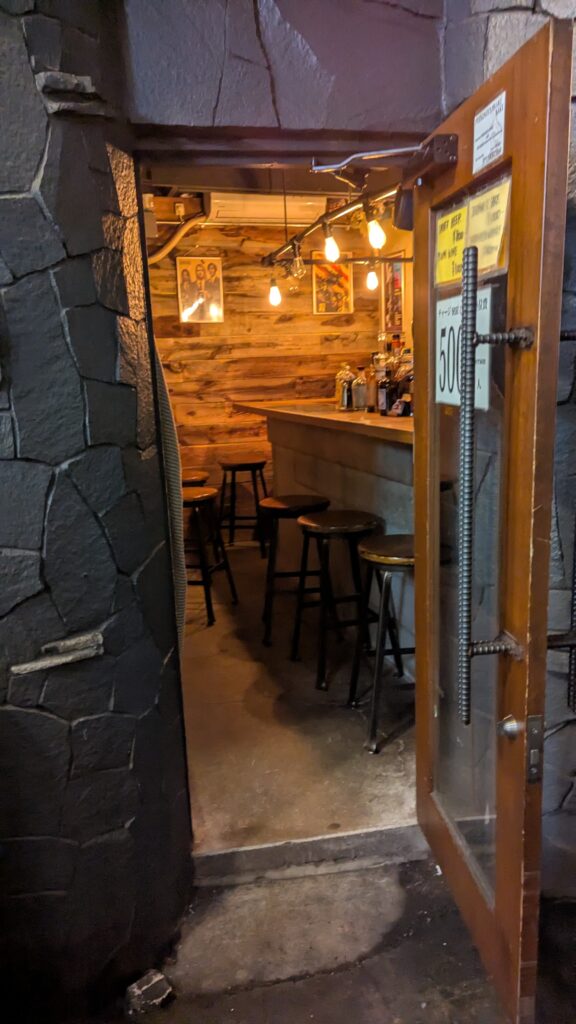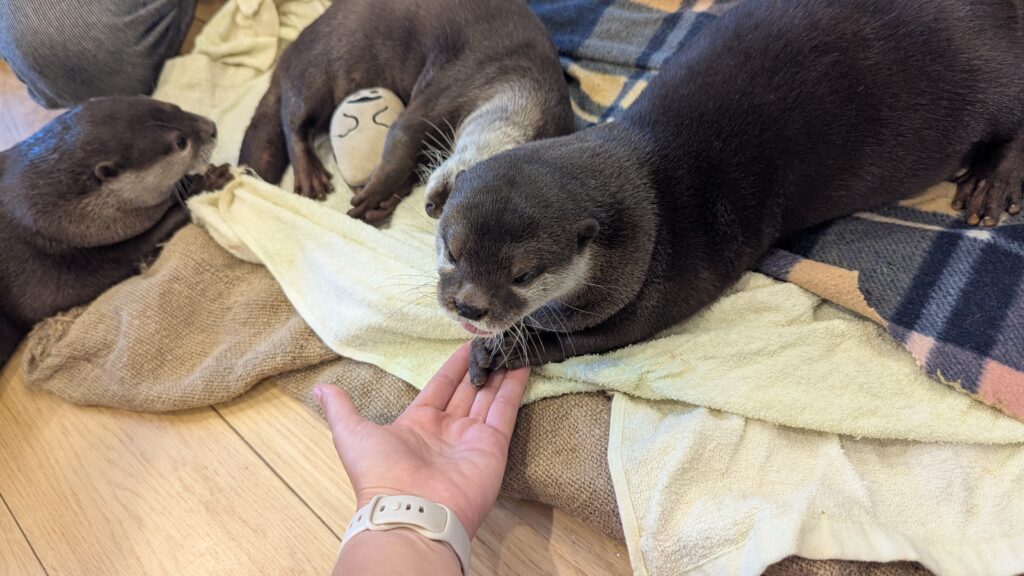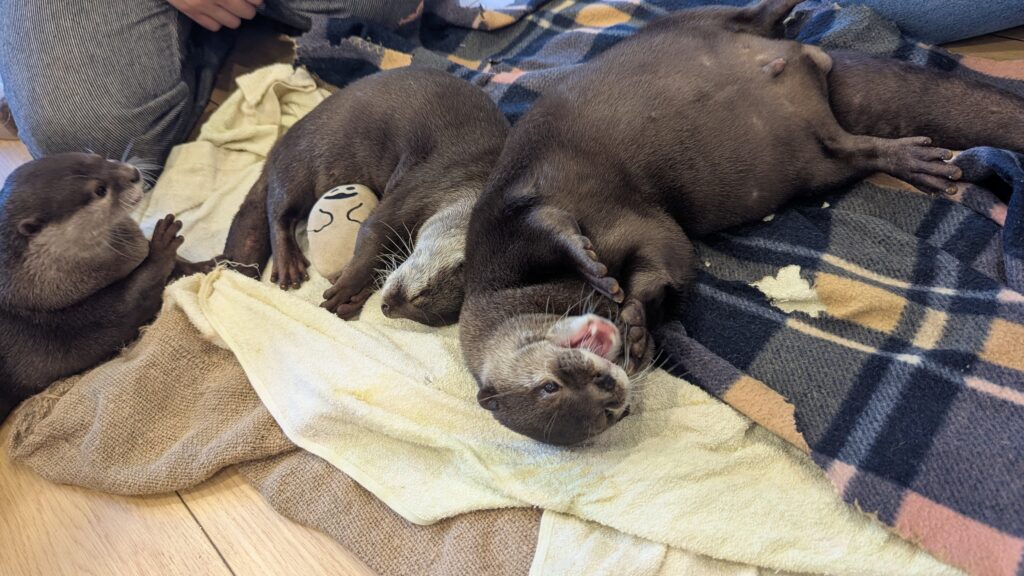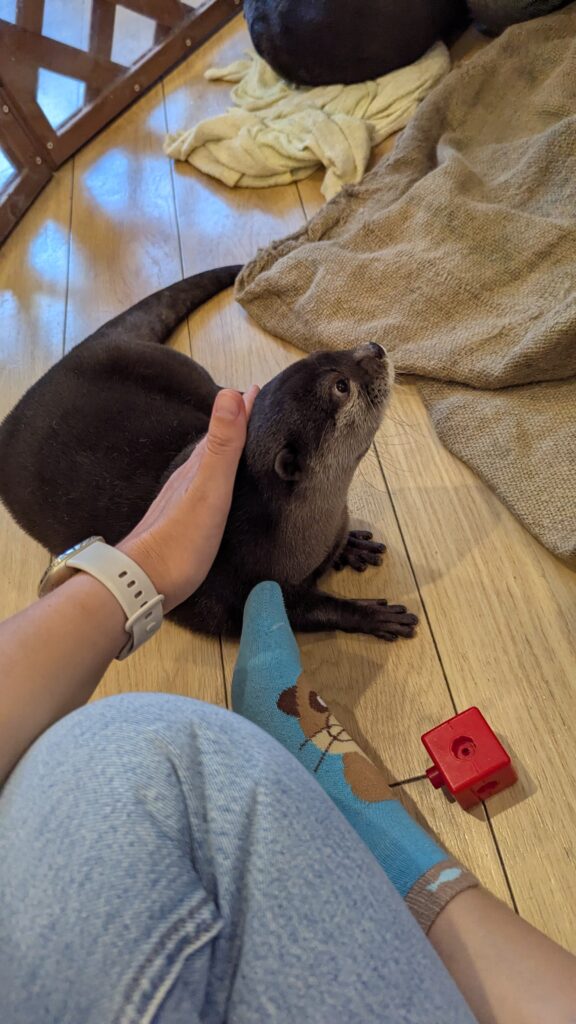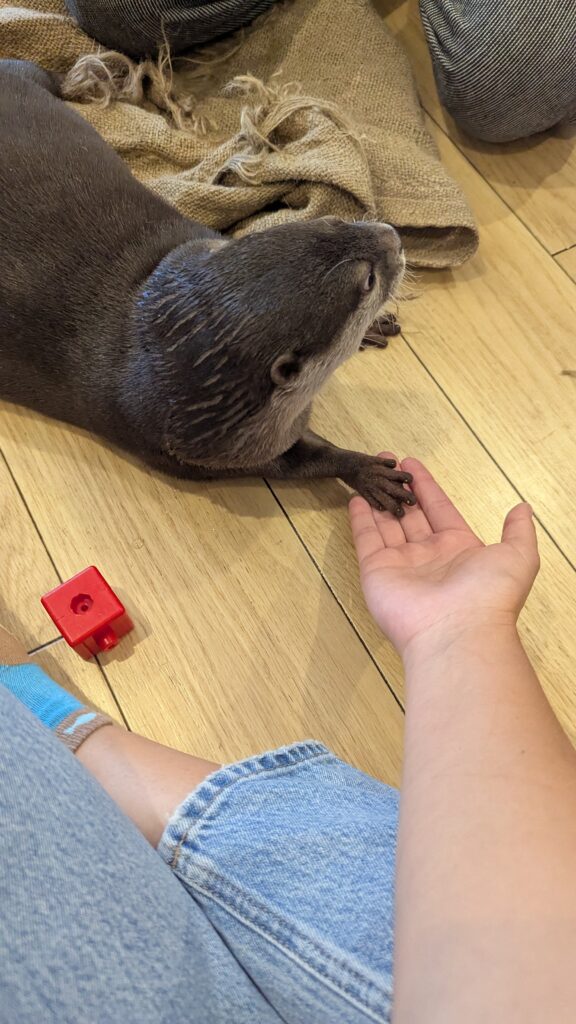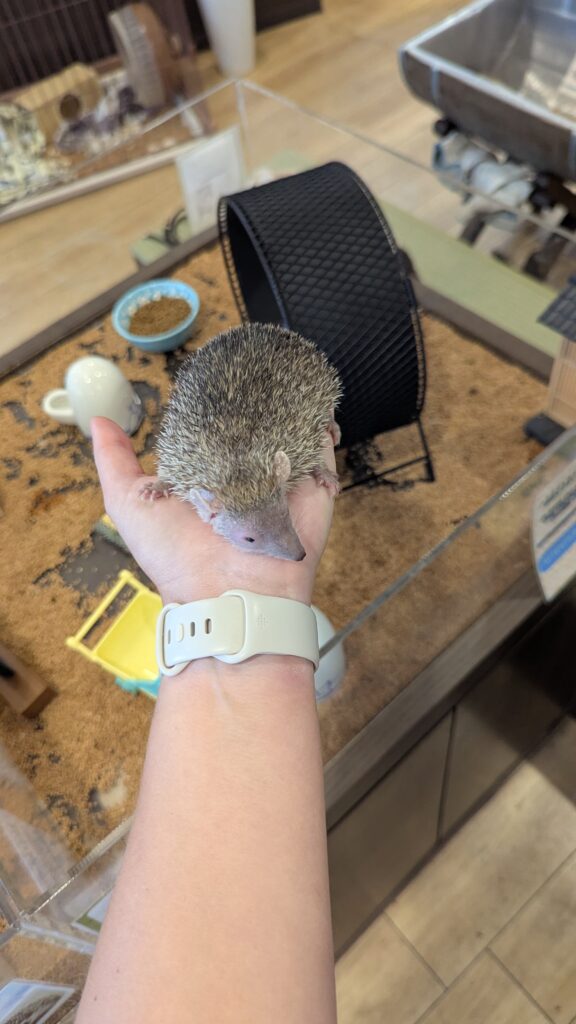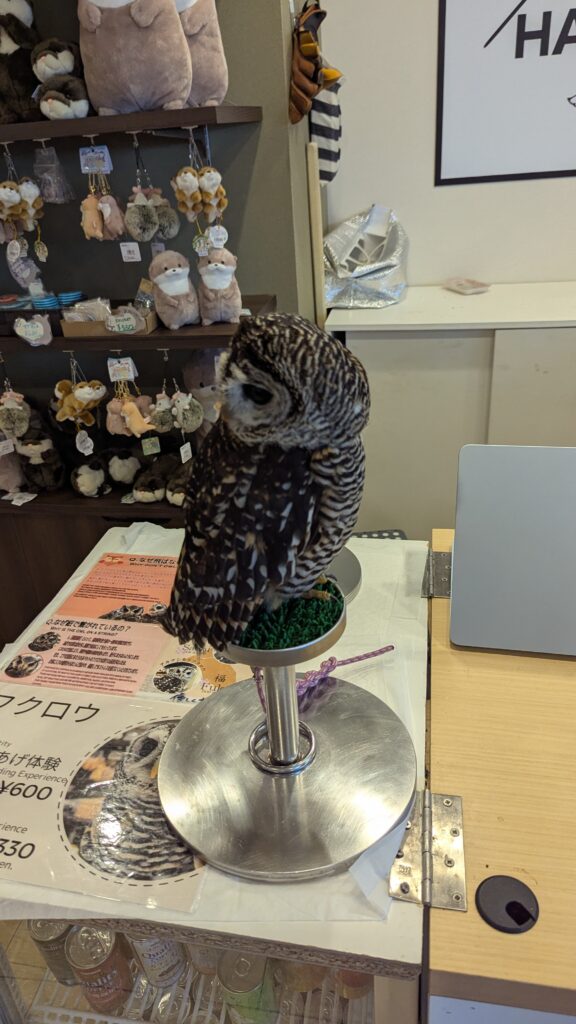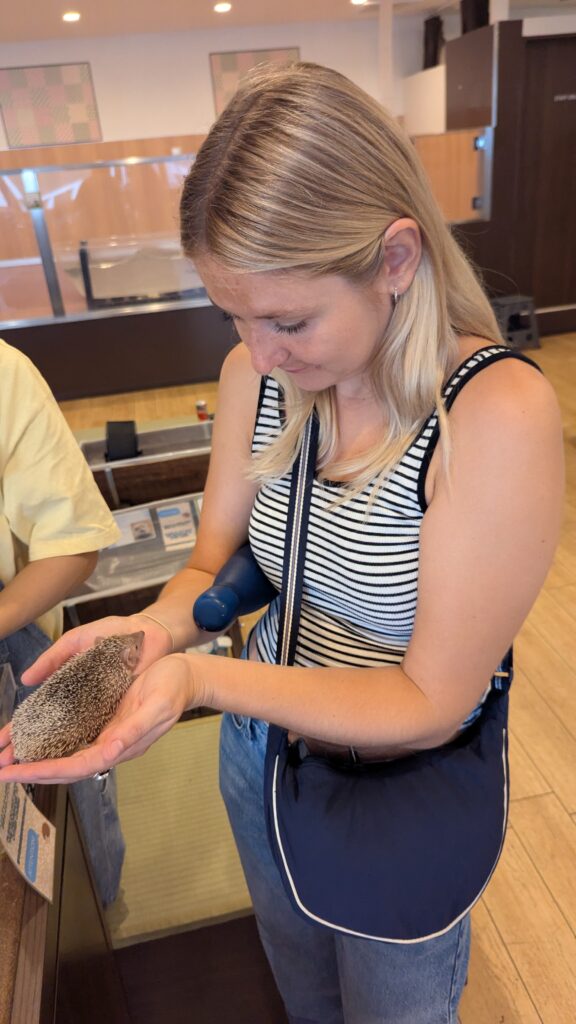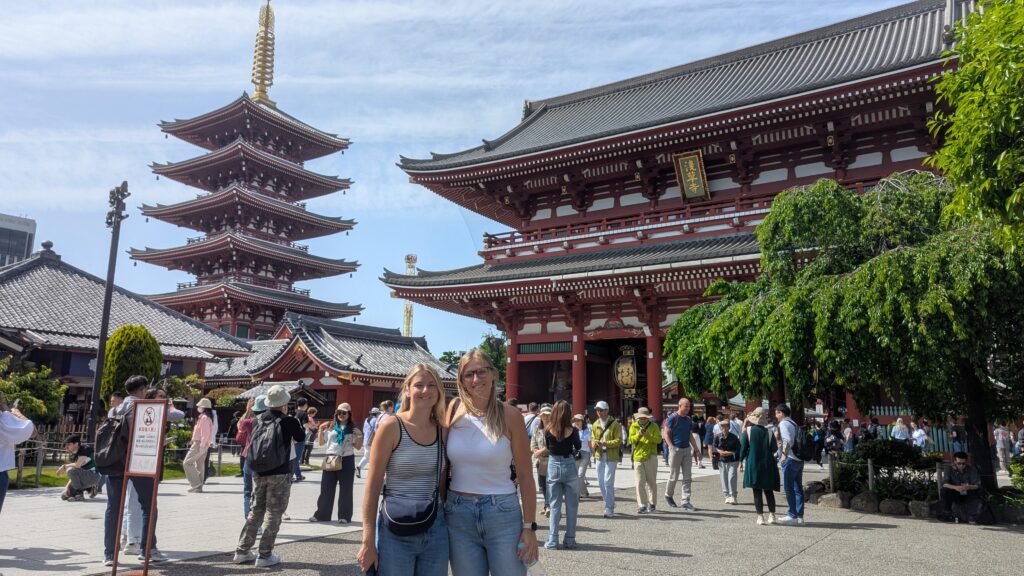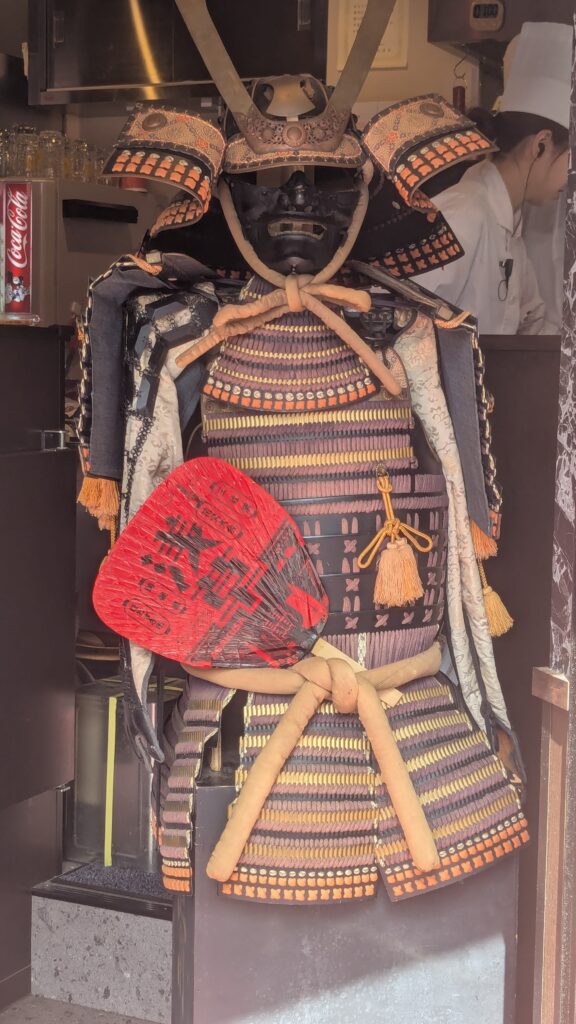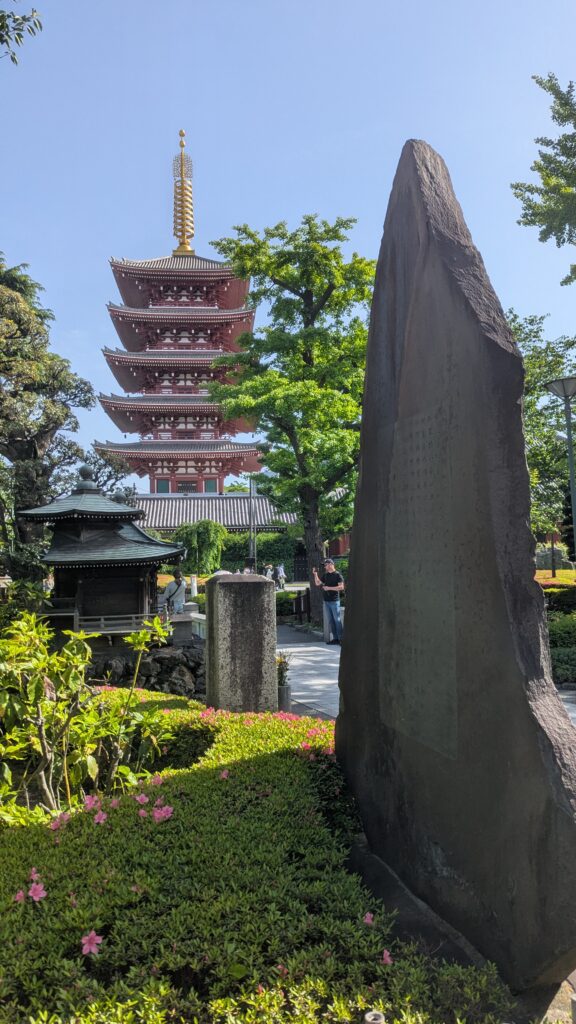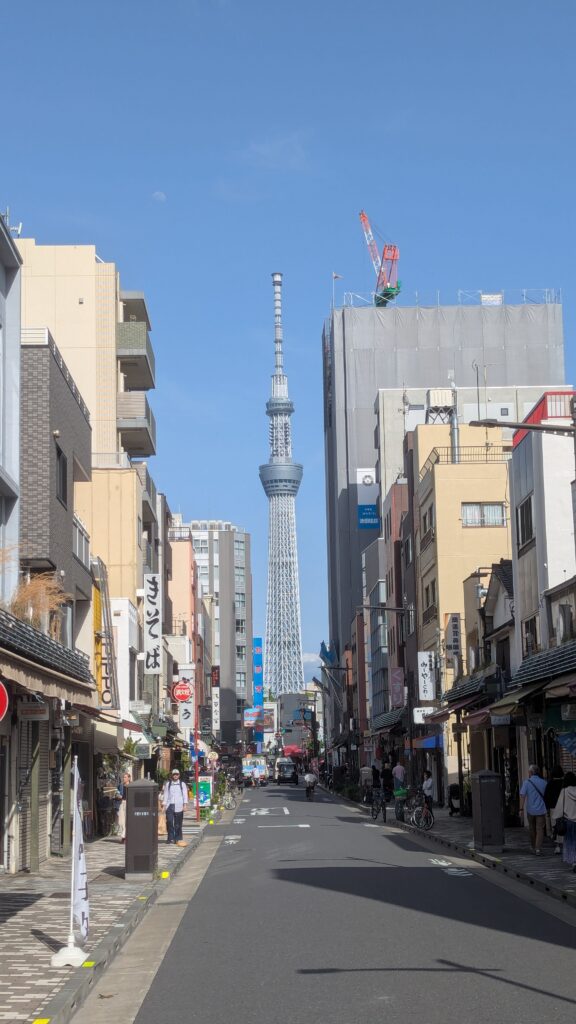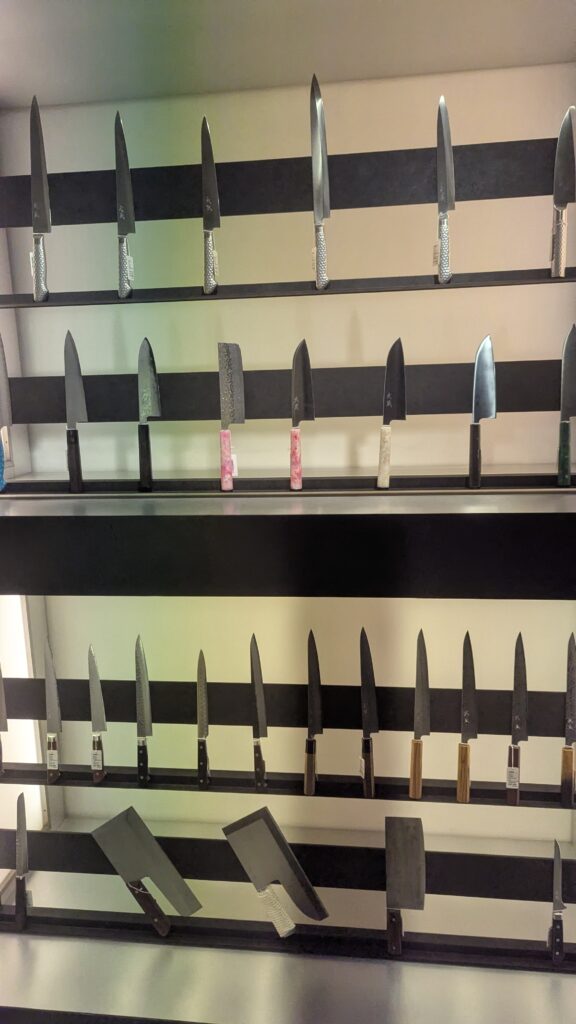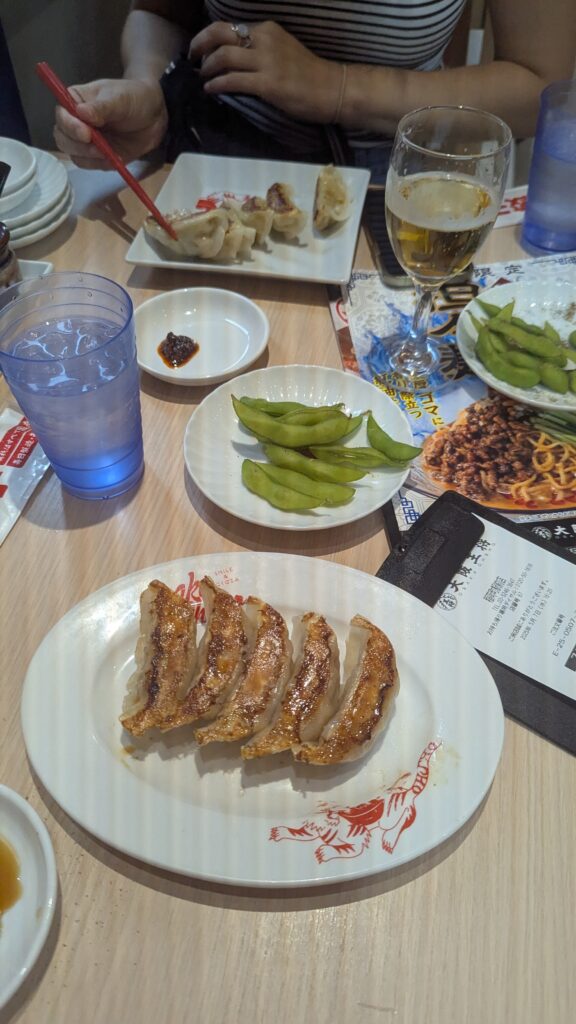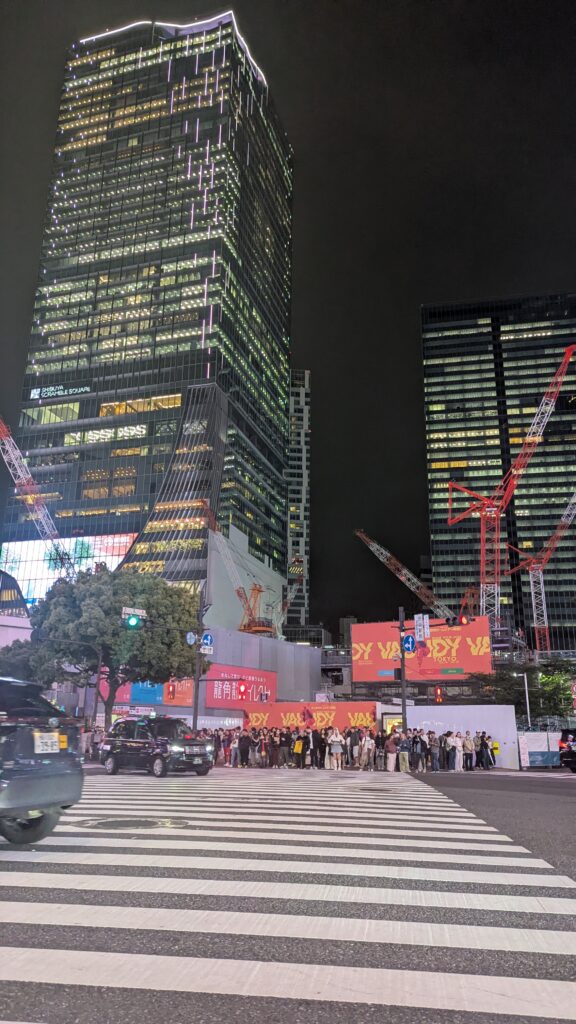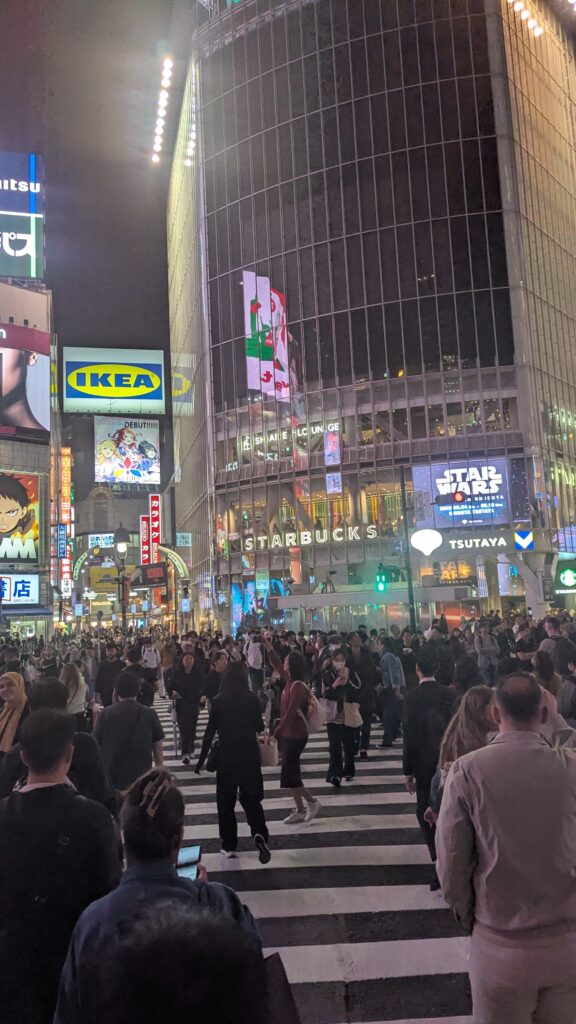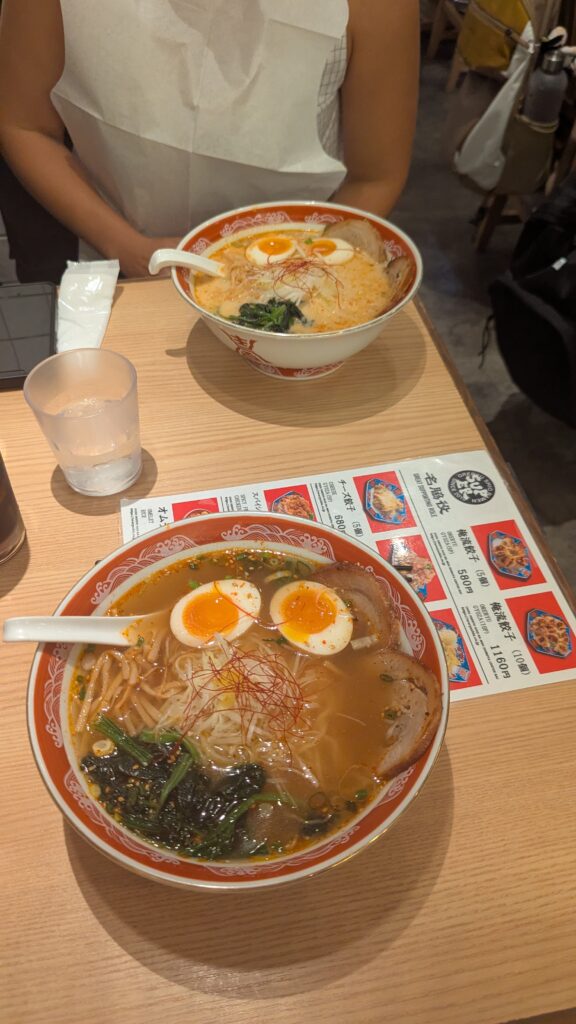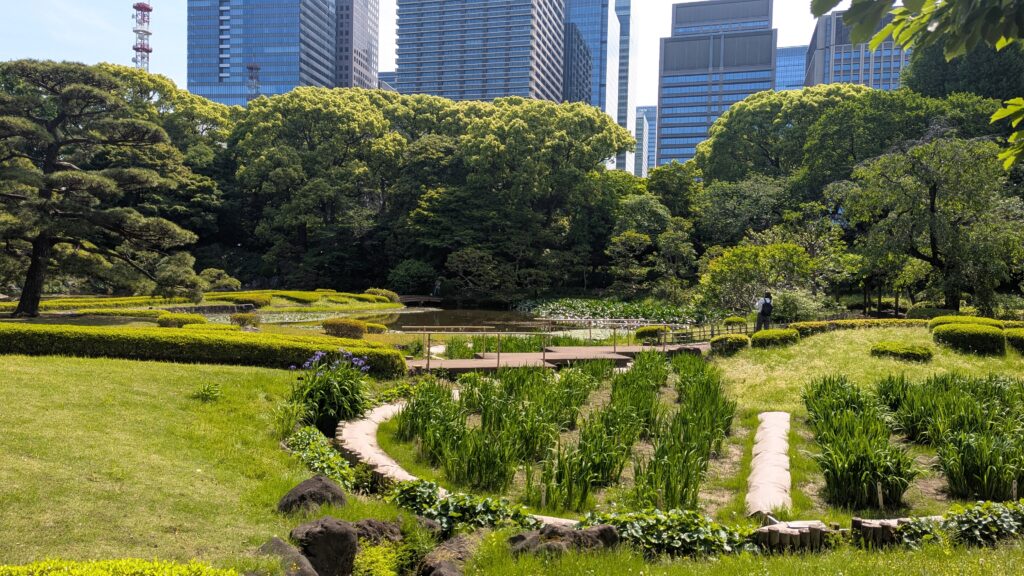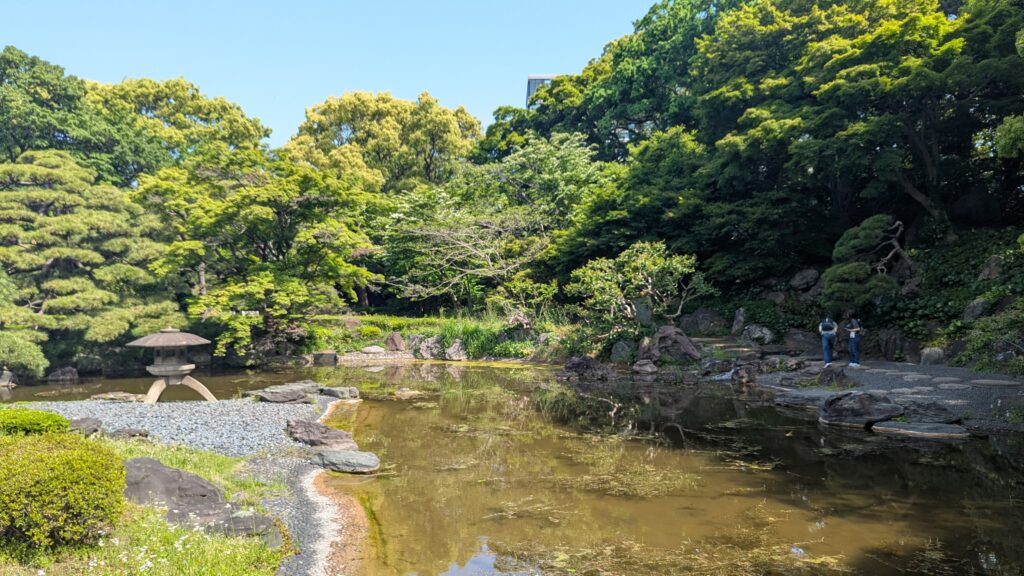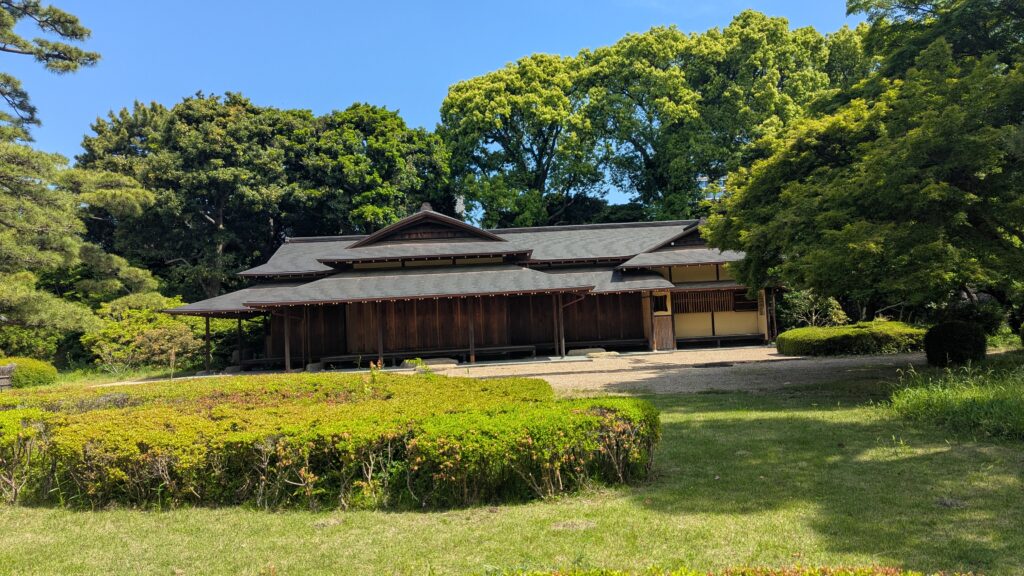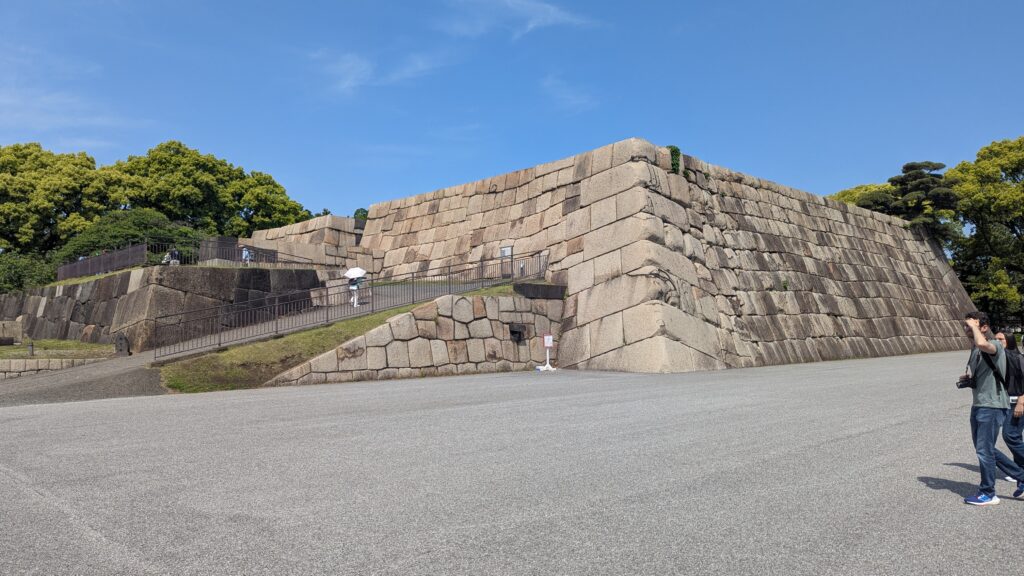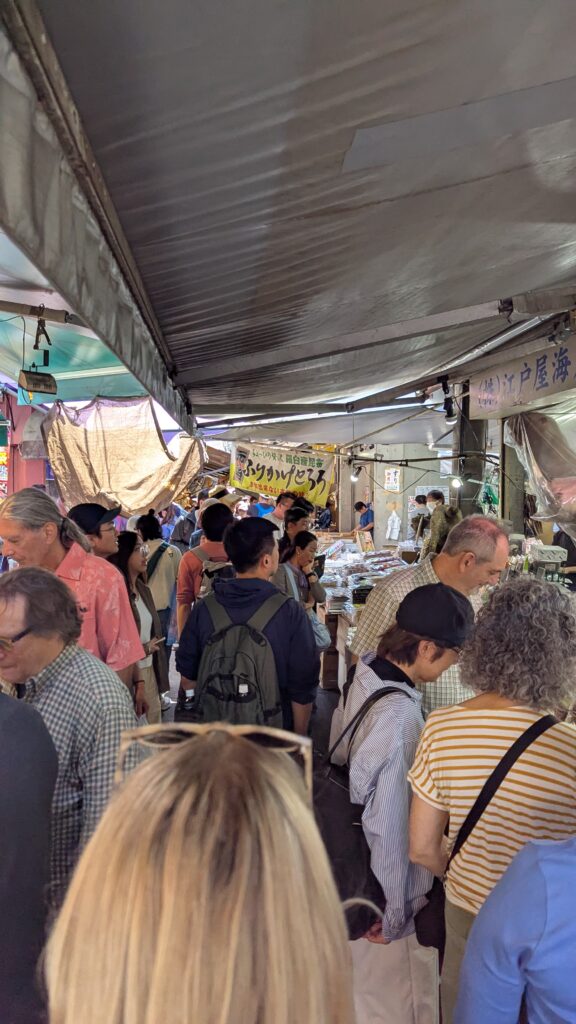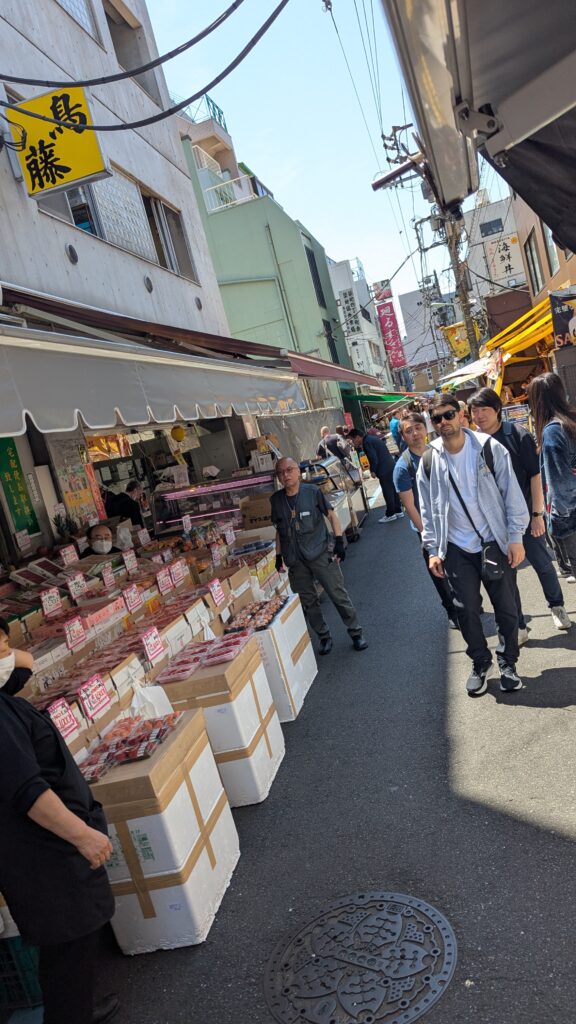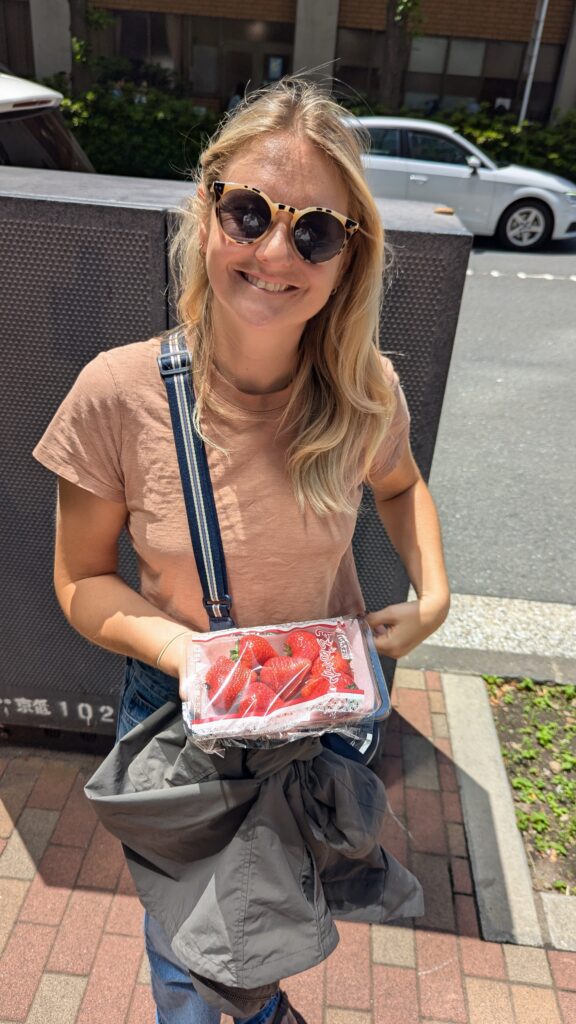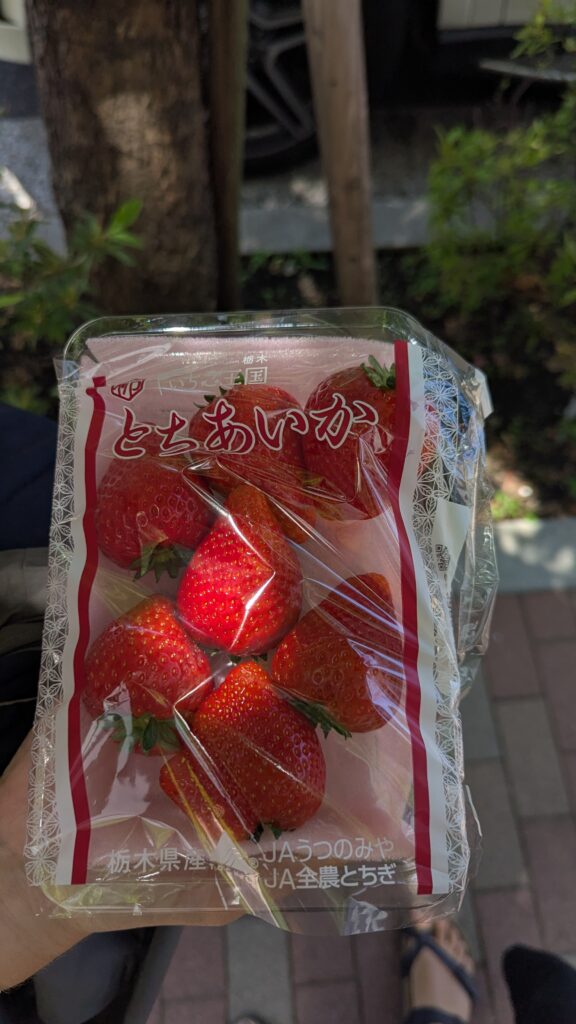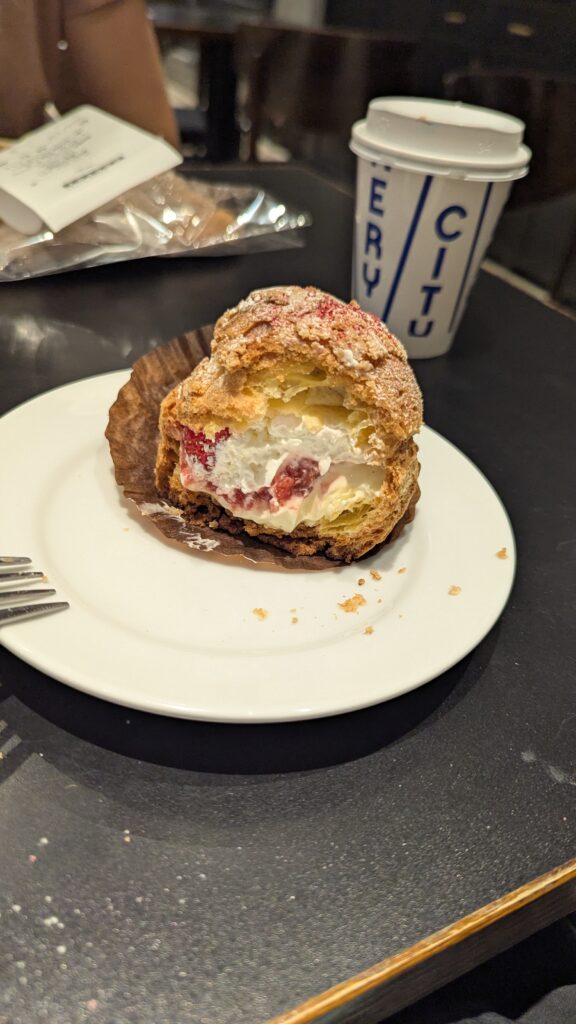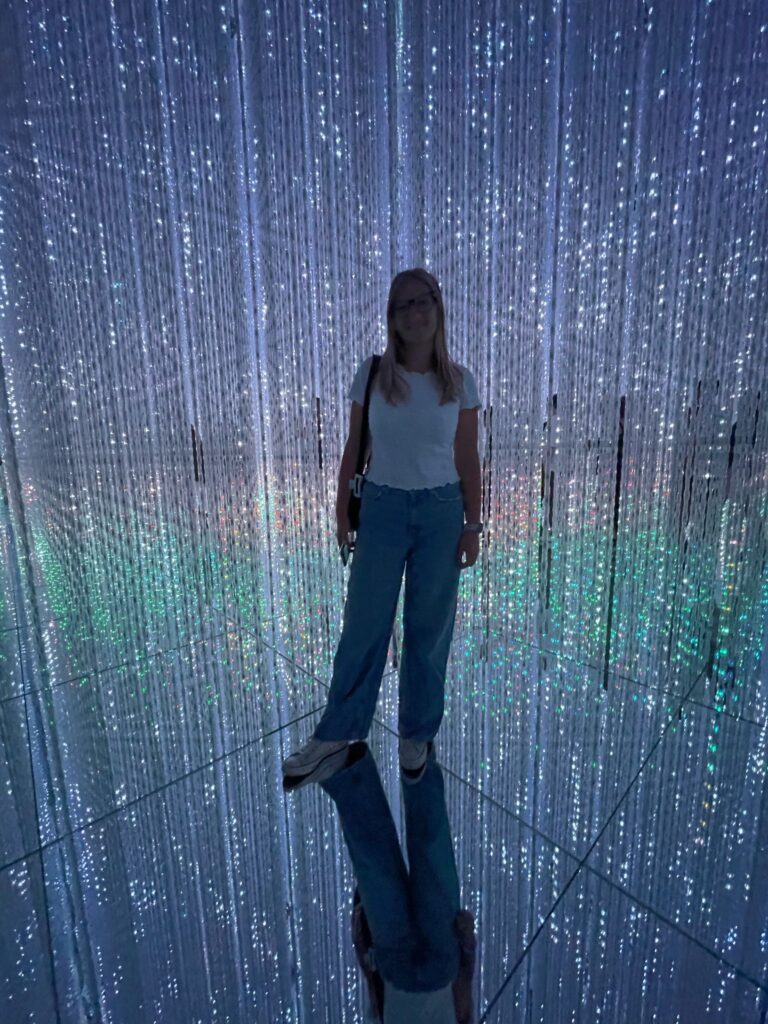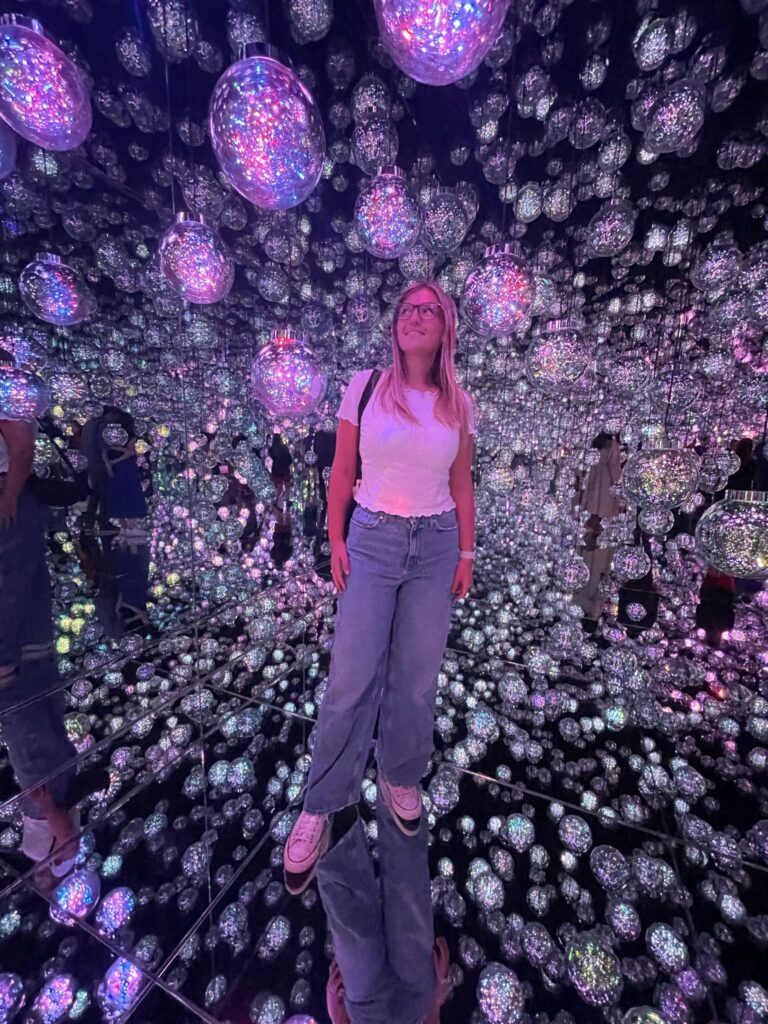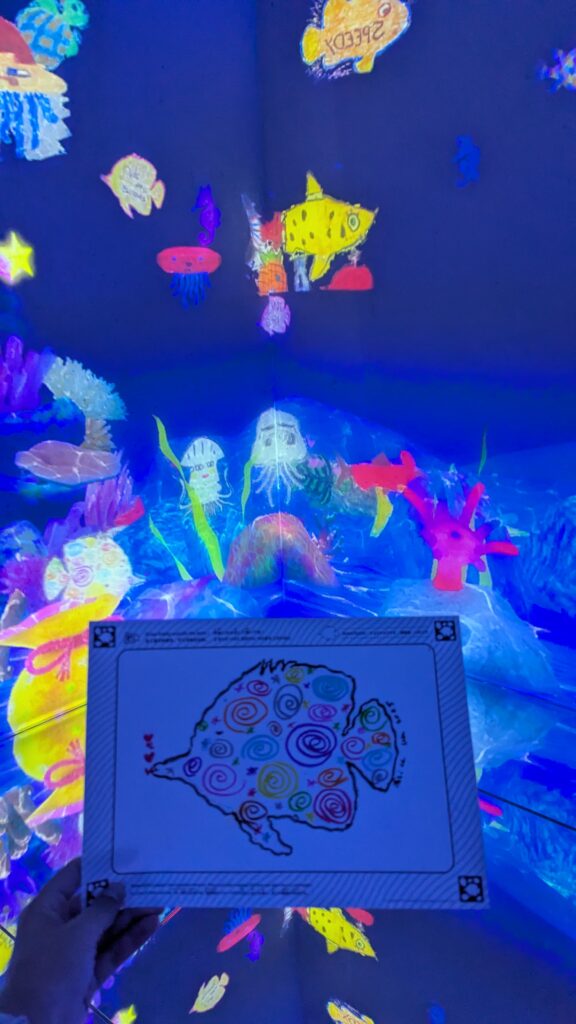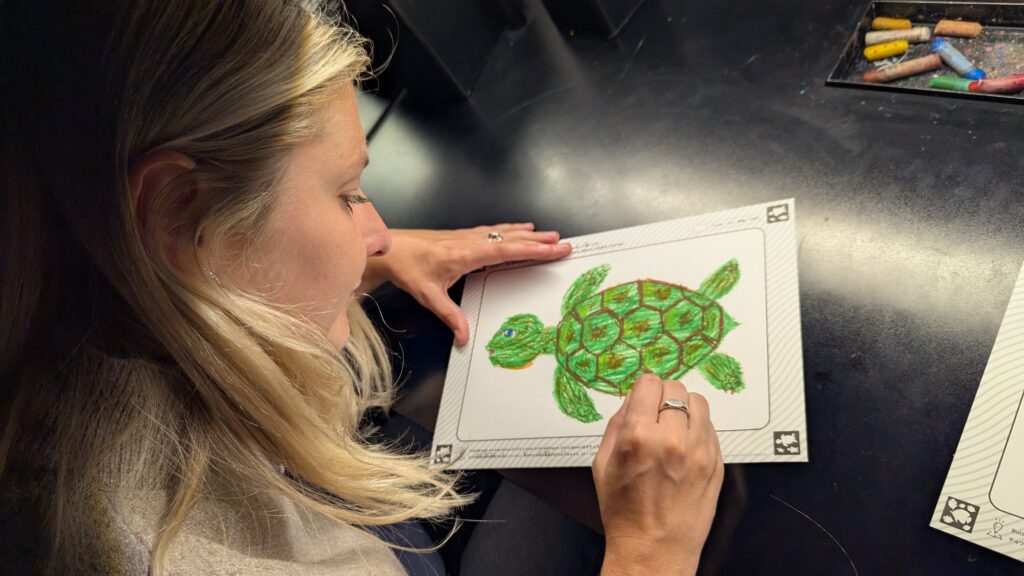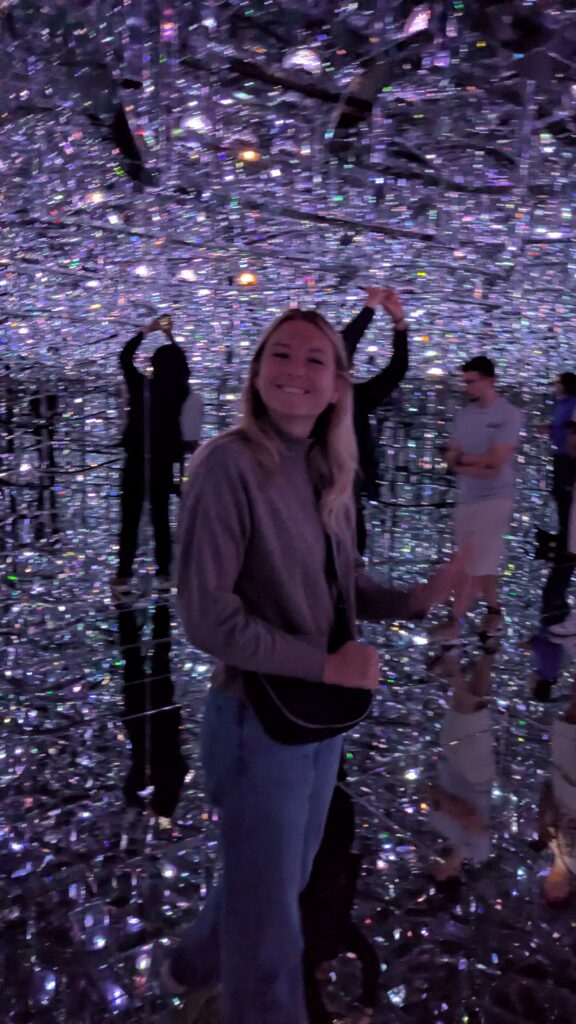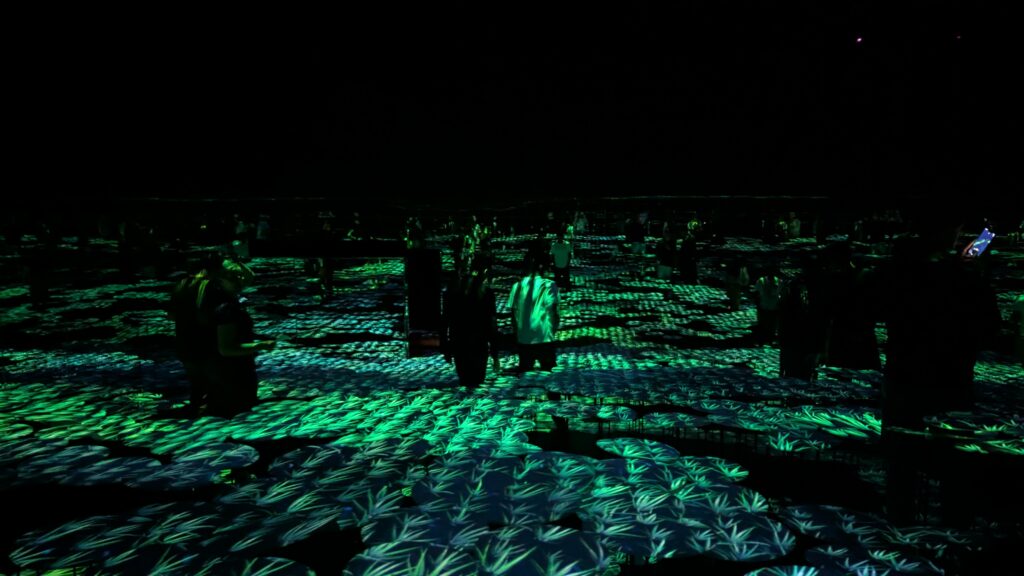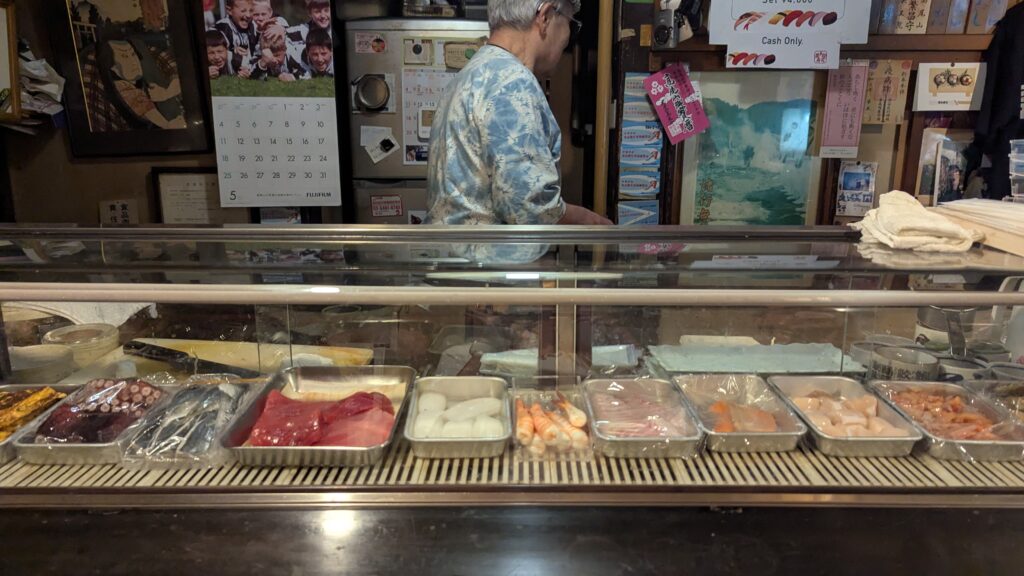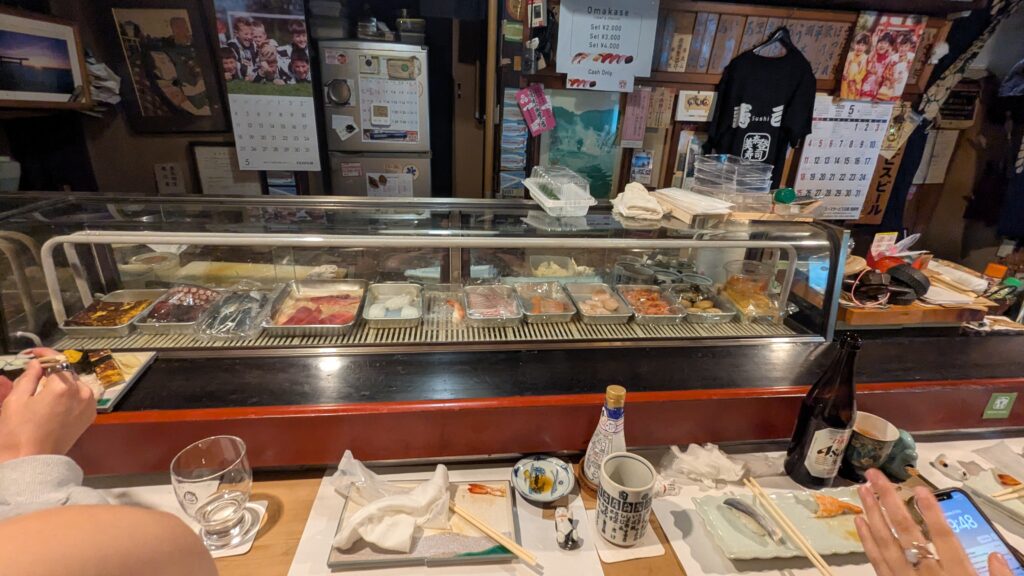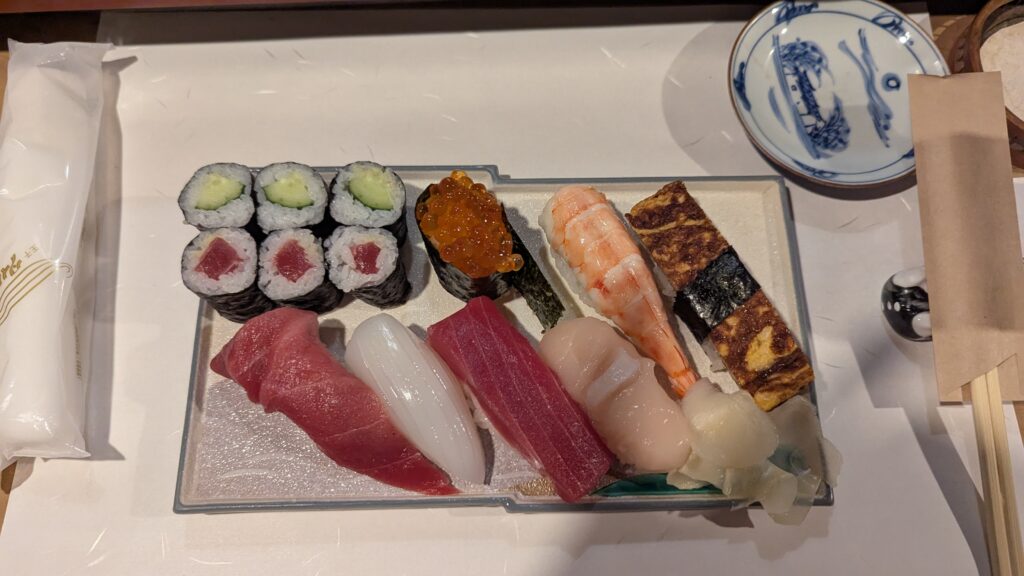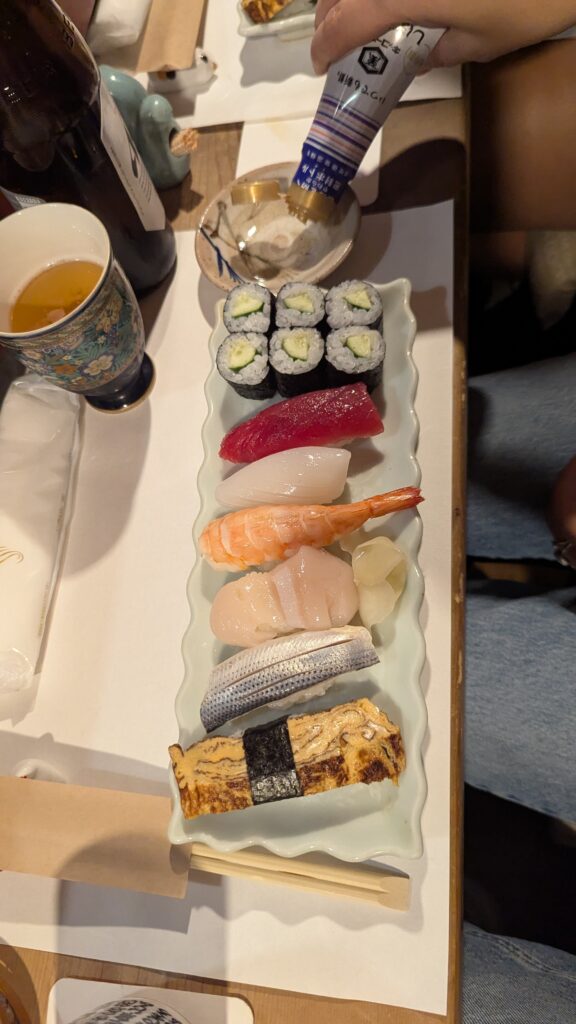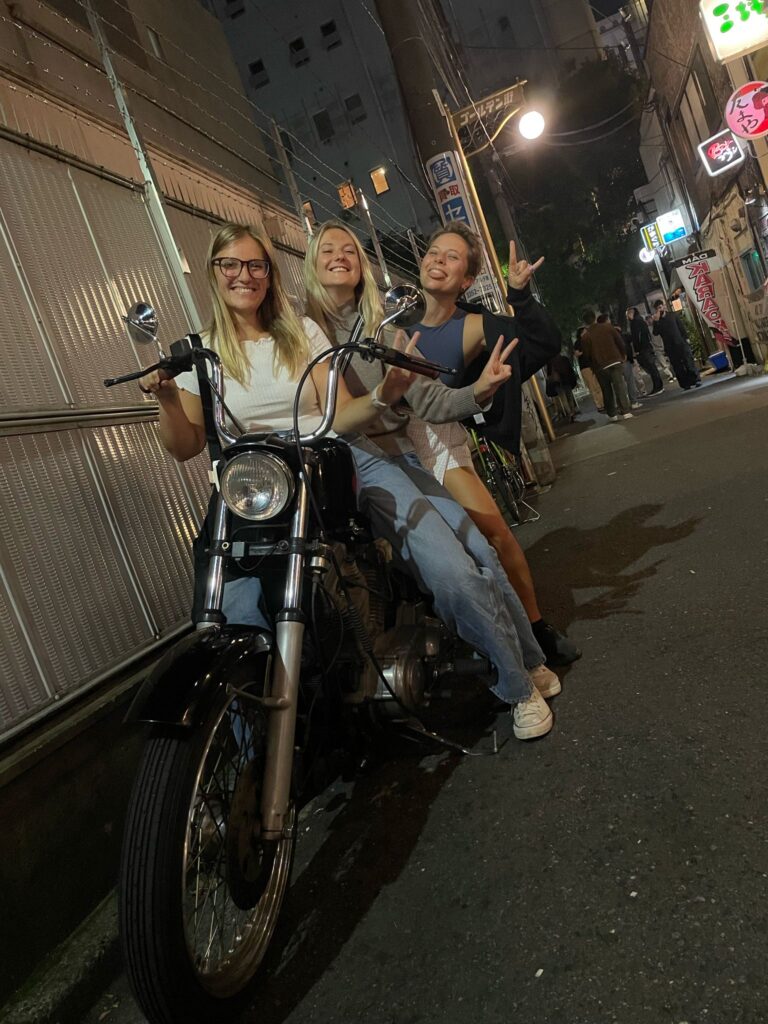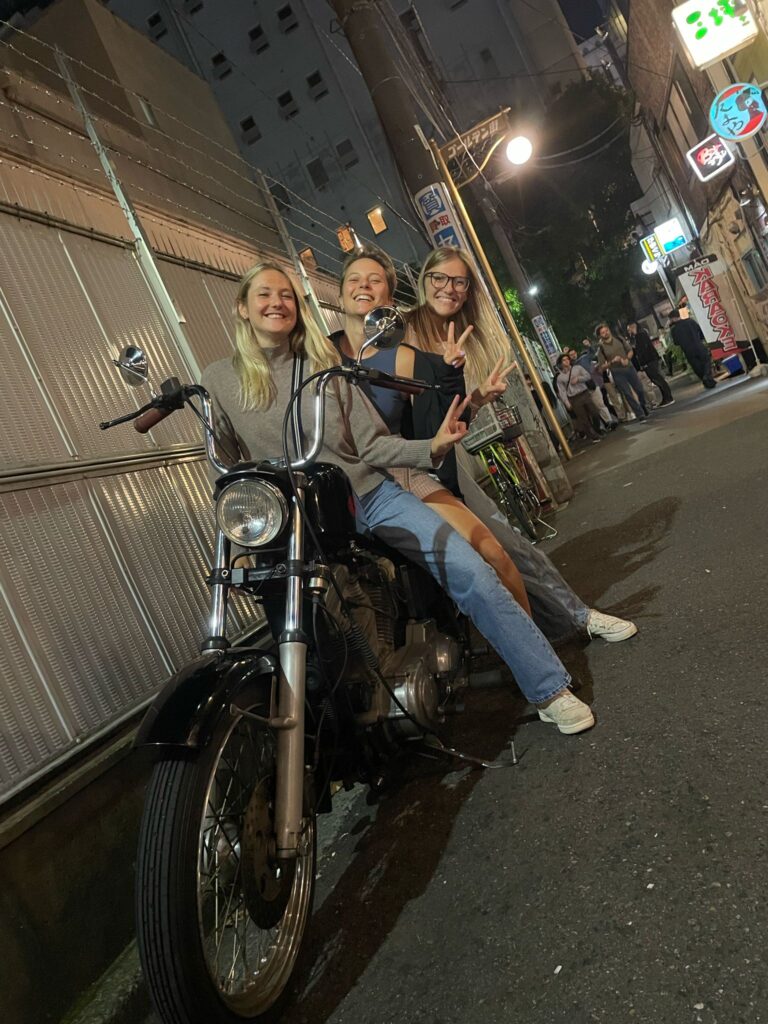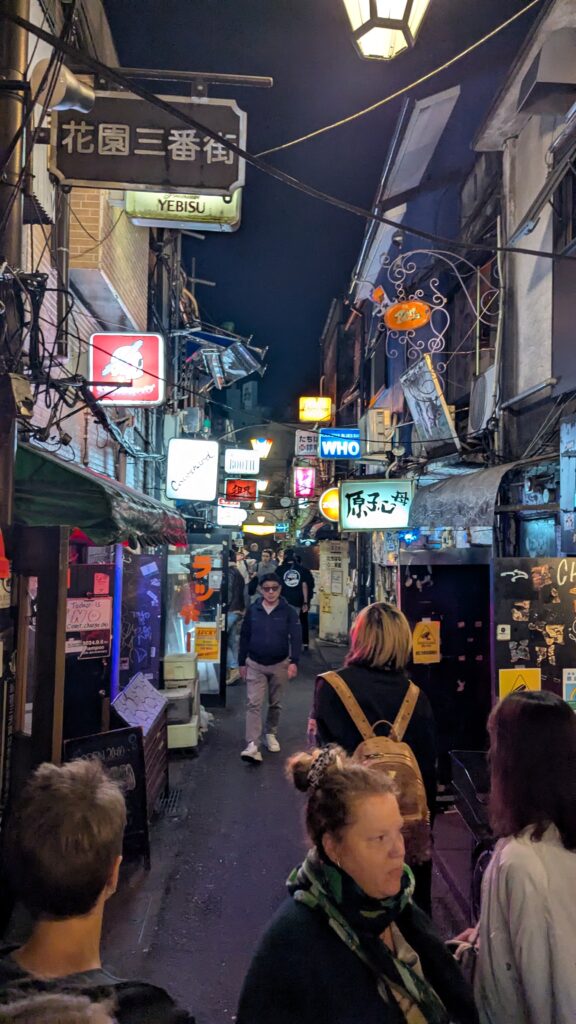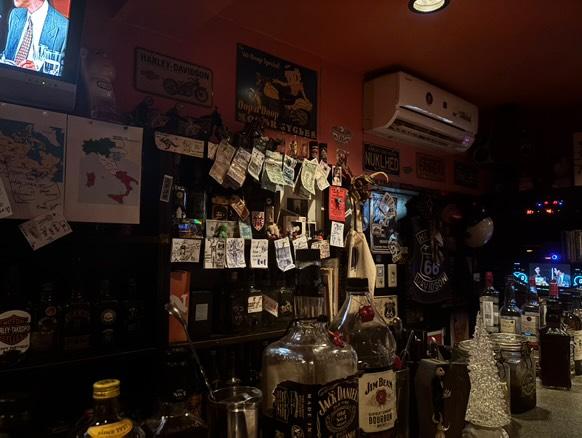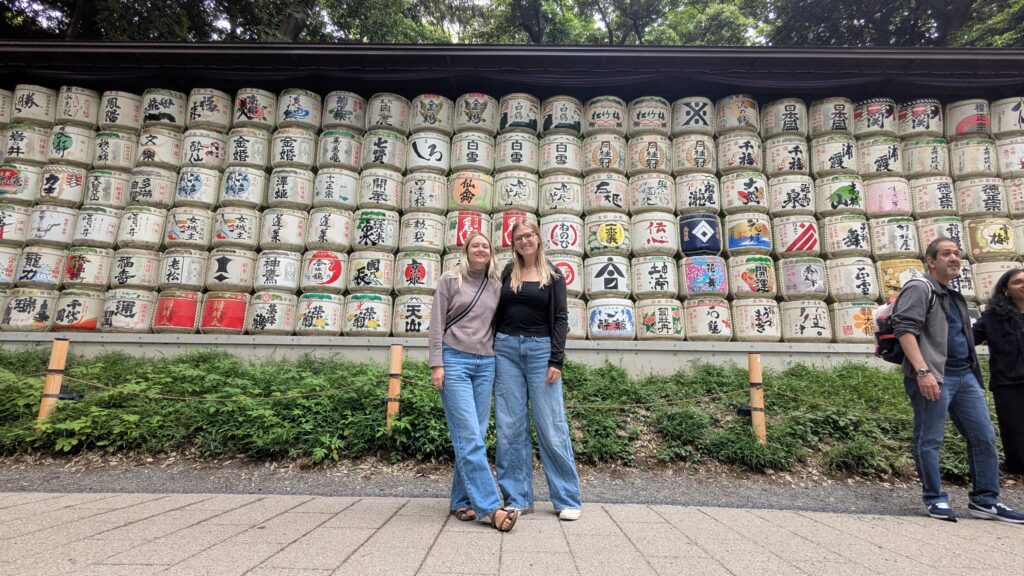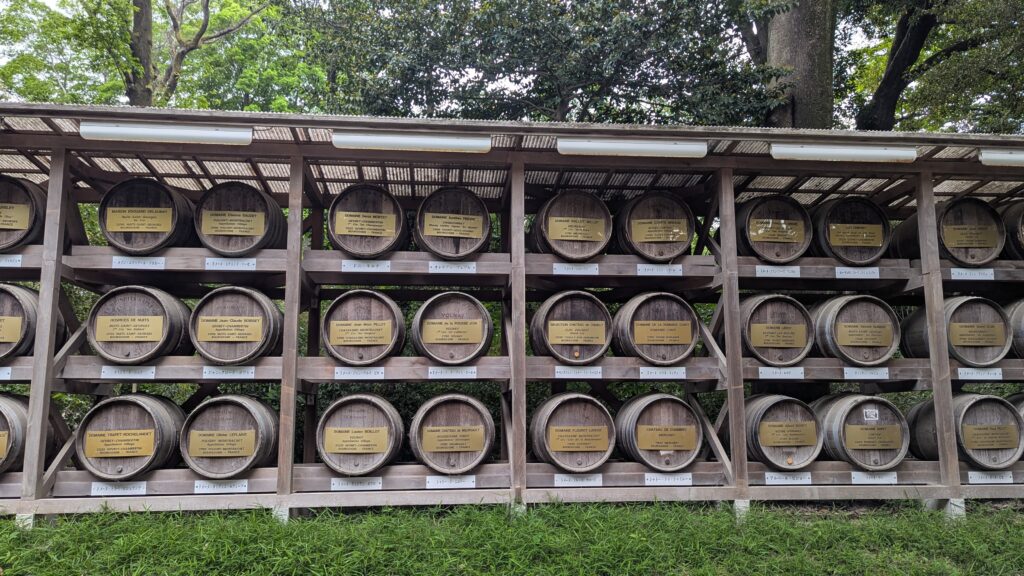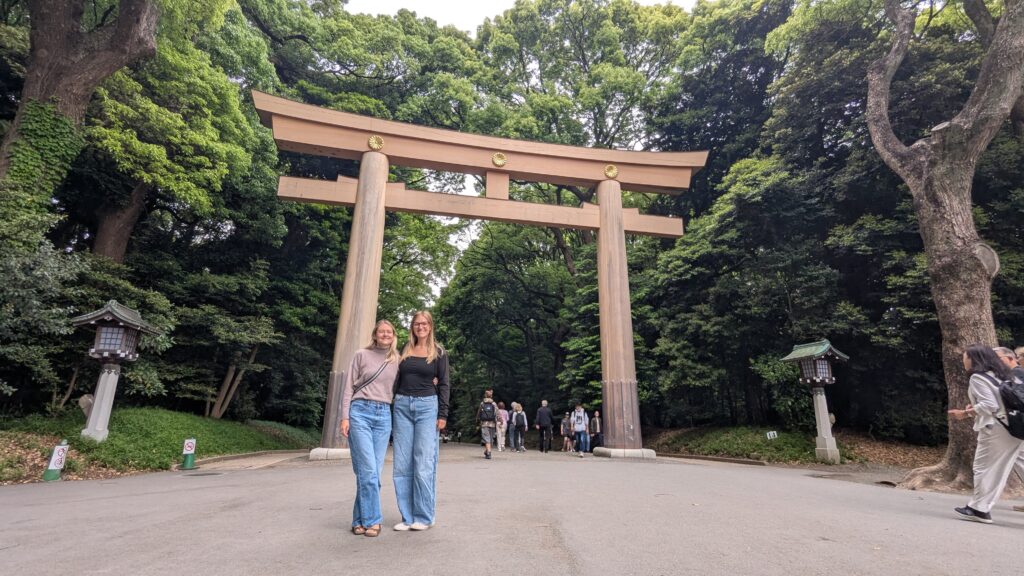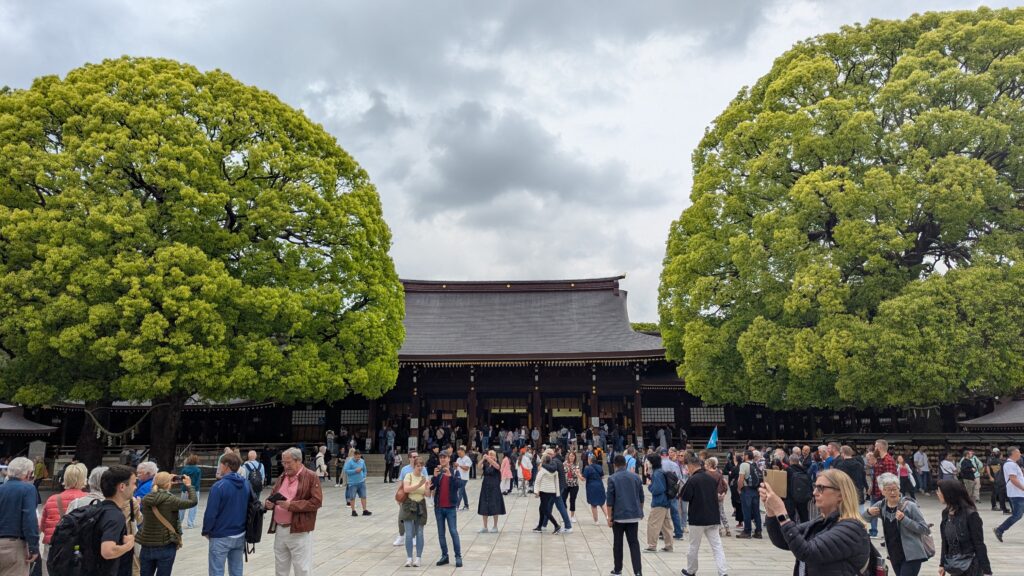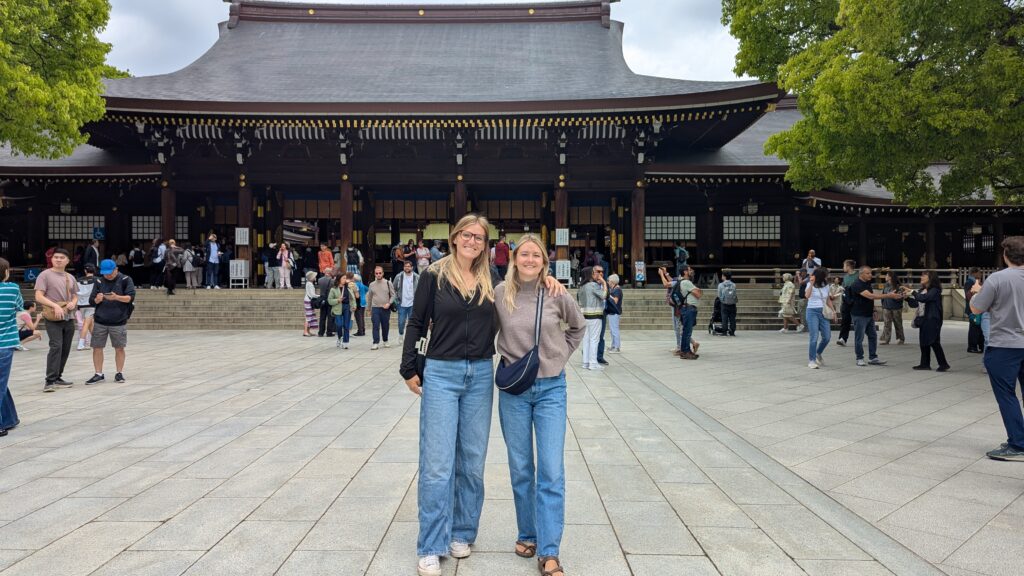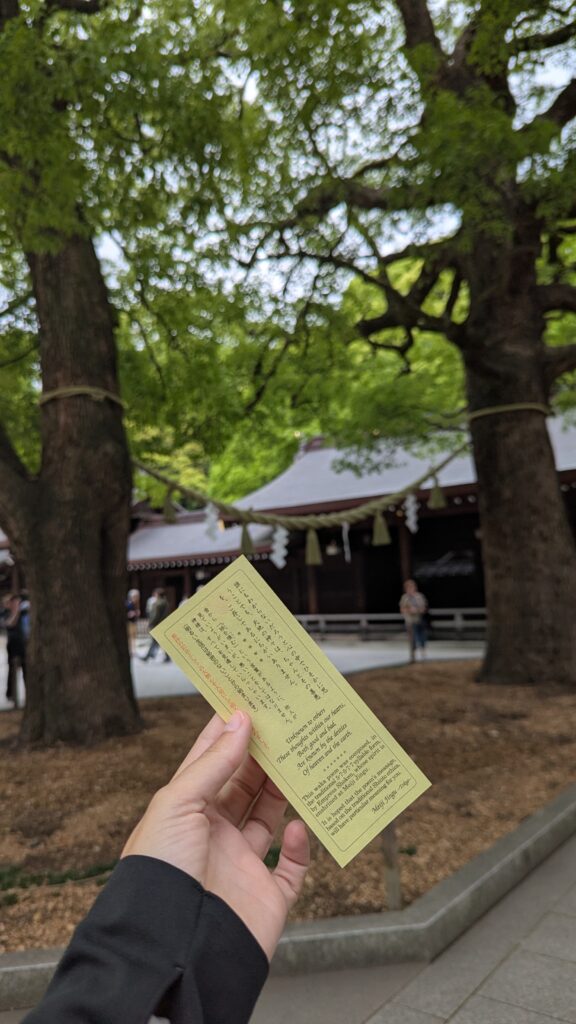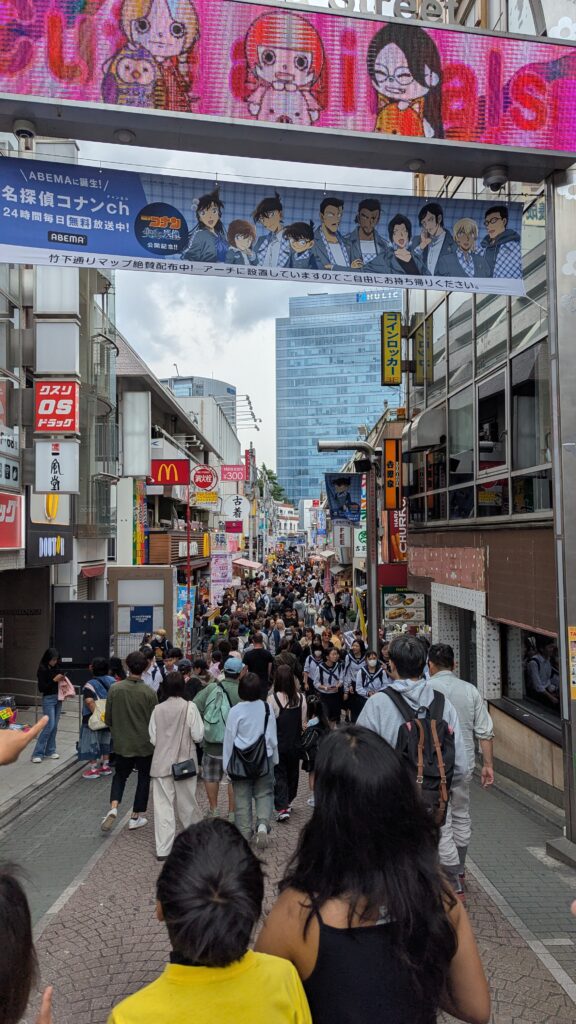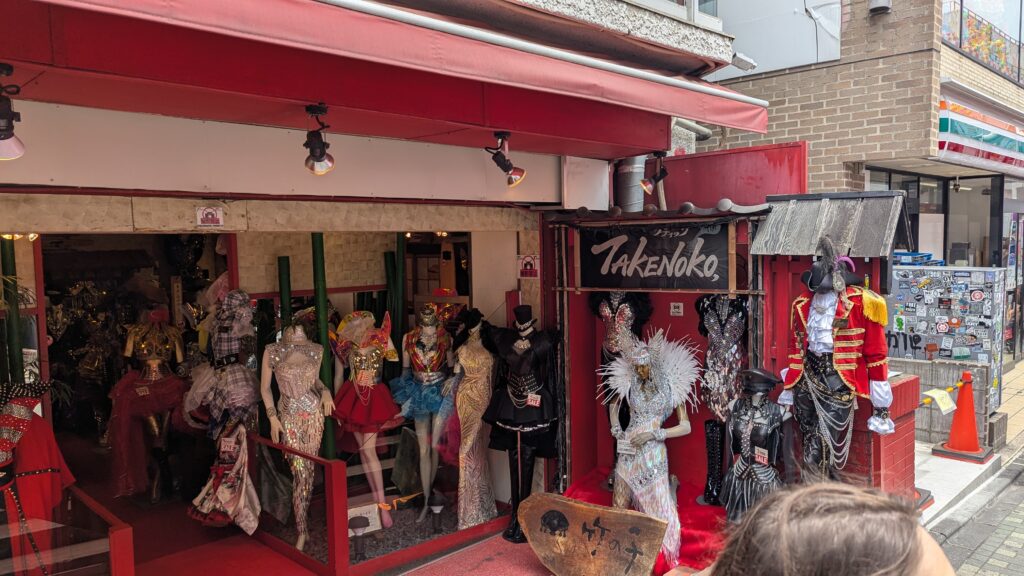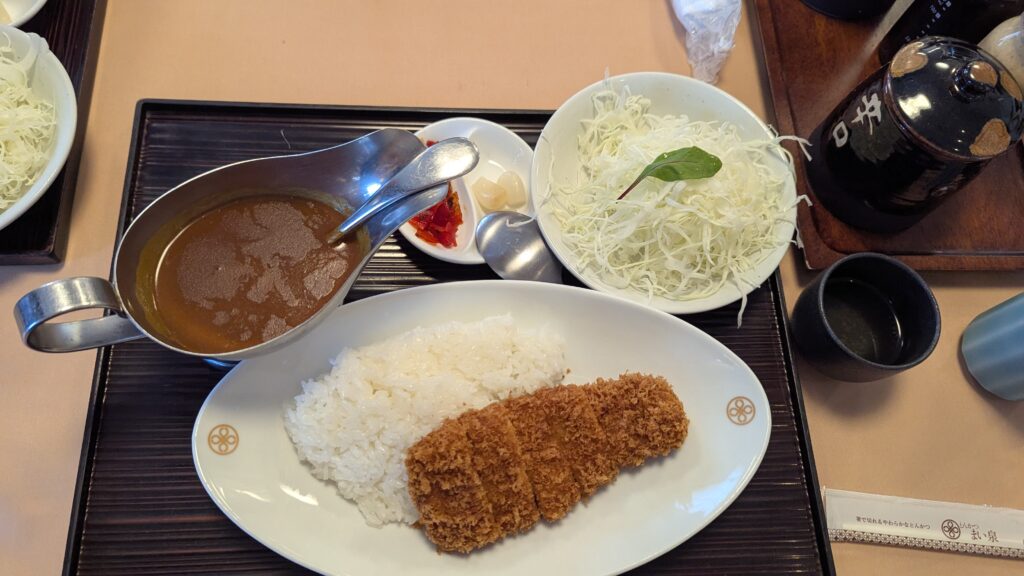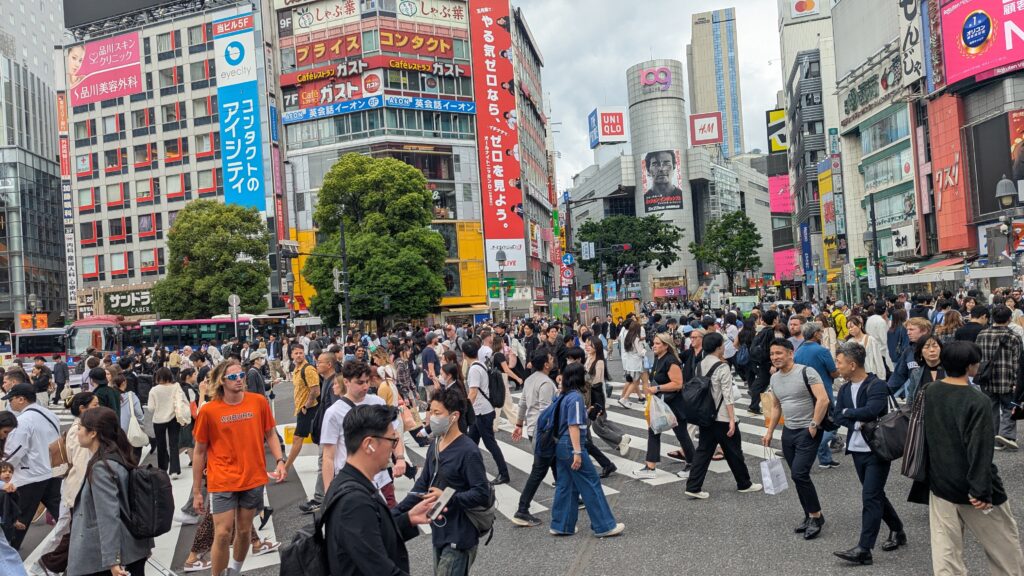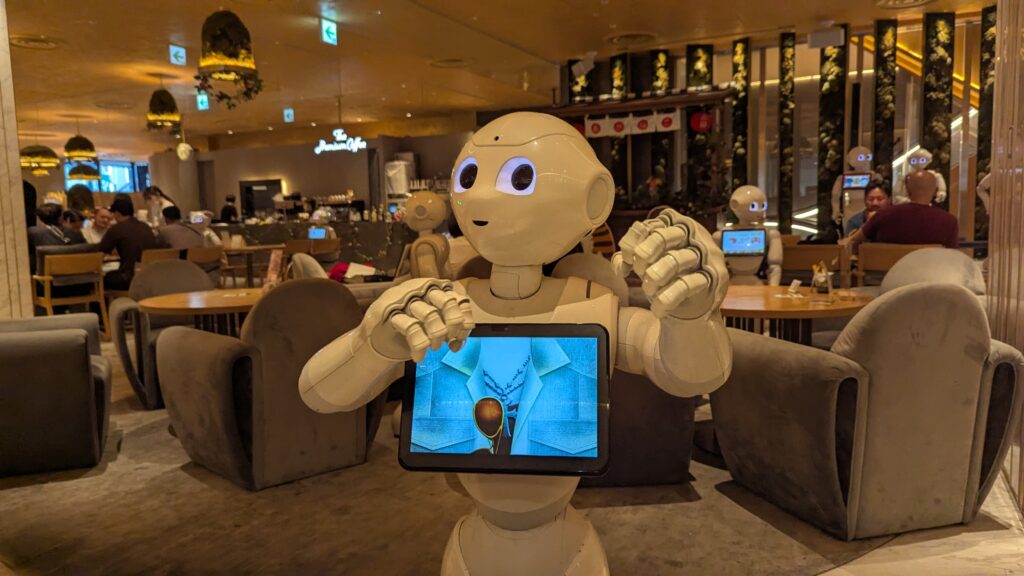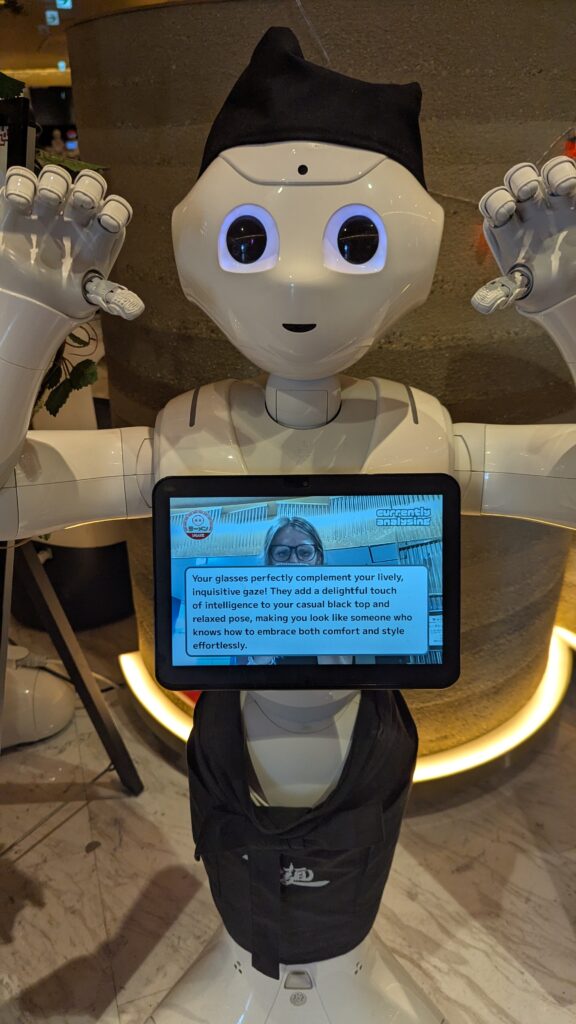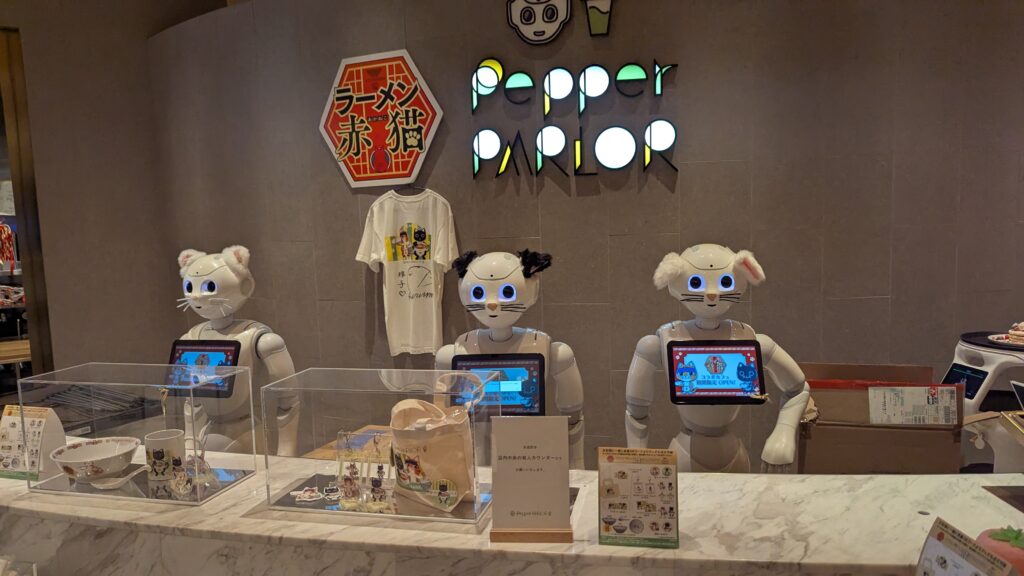After a very snazzy bullet train ride, we arrived in Hiroshima just in time for lunch and checked into our equally snazzy hotel—our home for the final three nights of the trip.
Not wanting to waste the rest of the afternoon, we headed straight back out in search of lunch. Unfortunately, we seemed to have picked the wrong time and the wrong part of town. Even though it was only 12:30, all the restaurants were either packed with businessmen or completely sold out of food. In the end, we reluctantly settled for pizza—very tasty, but not very Japanese for one if our final meals here!
After lunch, we visited the Hiroshima Peace Memorial Museum. Built to commemorate the victims of the atomic bomb and to educate visitors about the horrors of nuclear warfare, it was one of the most powerful and moving museums I’ve ever experienced. It was harrowing. I found myself in tears multiple times. The museum covered everything: the lead-up to the bomb, the reasons Hiroshima was chosen, survivor accounts, the scientific development of the bomb, and its devastating aftermath. Photos of victims were few and far between as they are so horrific and yet some of the most haunting exhibits were drawings from survivors—childlike sketches that somehow managed to convey more emotion and horror than any photograph ever could.
Even so, the few physical remnants on display were enough to make your stomach turn—melted metal, vaporised shadows etched into stone, and personal belongings charred beyond recognition. One particularly upsetting section explained how survivors were silenced and ostracised, their radiation-related illnesses misunderstood or deliberately covered up. The pain didn’t end with the blast; it lingered in bodies, families, and memories for generations.
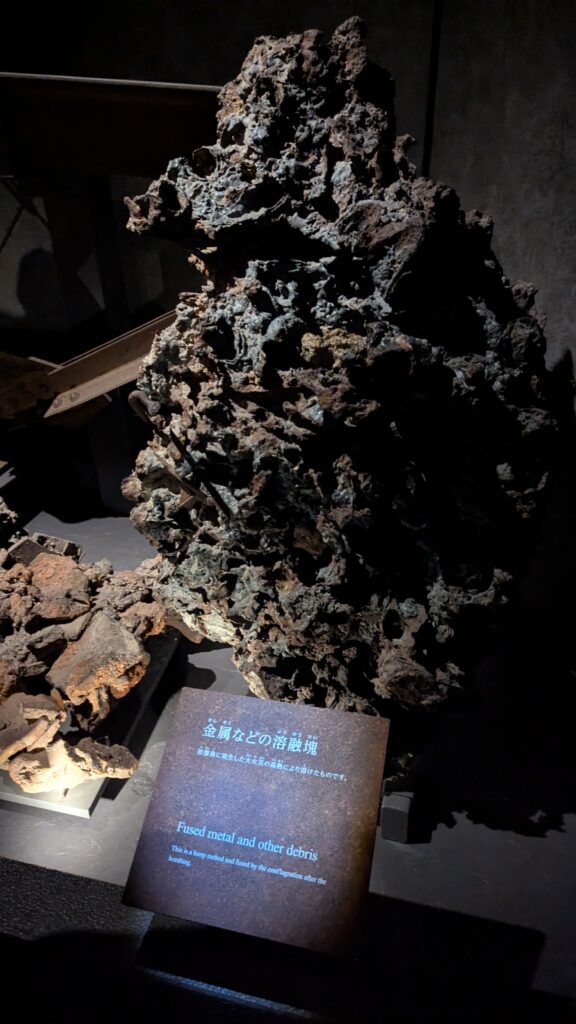

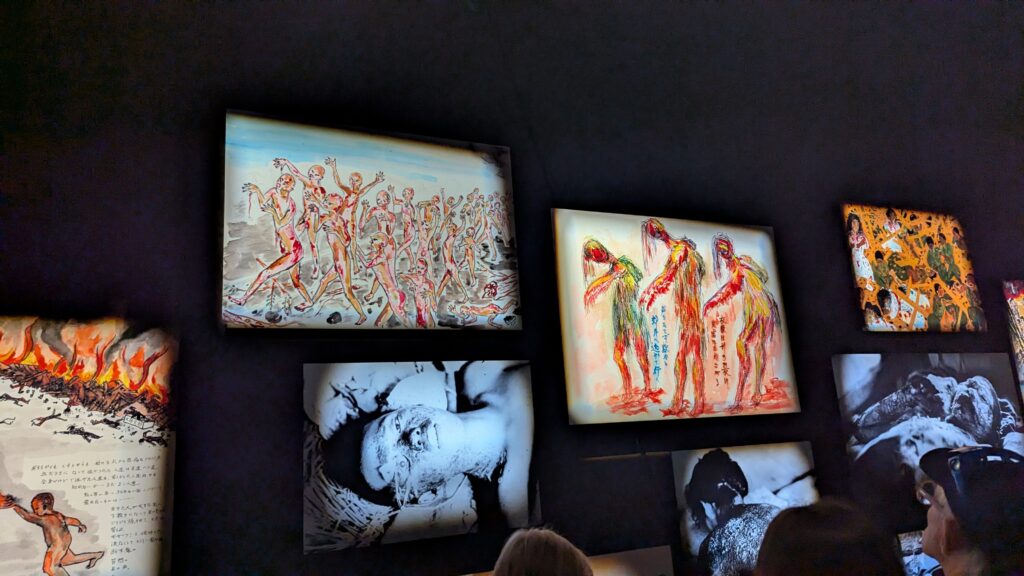
After that heavy experience, we took a quiet walk around the Peace Park to clear our heads, then returned to the hotel for a much-needed drink. We’d been given some novelty gold coins to use at the hotel bar, which made us feel like pirates counting our treasure. We cashed them in for cocktails on the rooftop bar, the city stretched out below us, and the sky slowly turning golden.
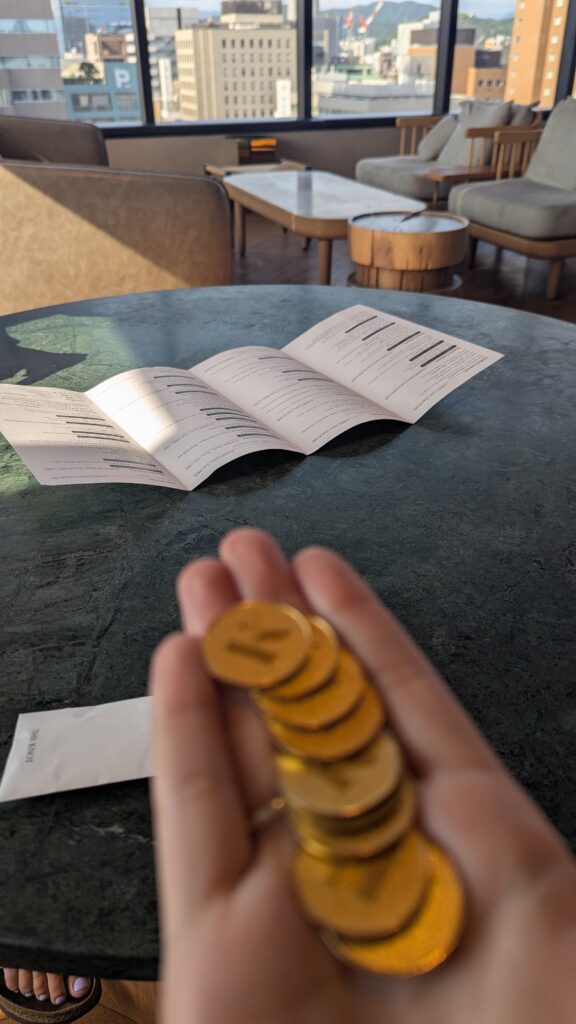
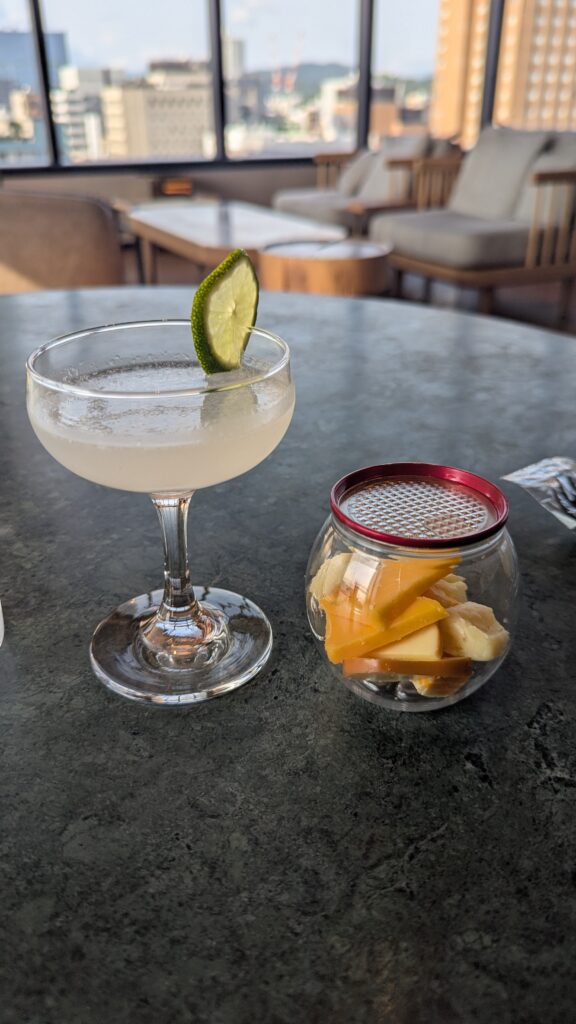
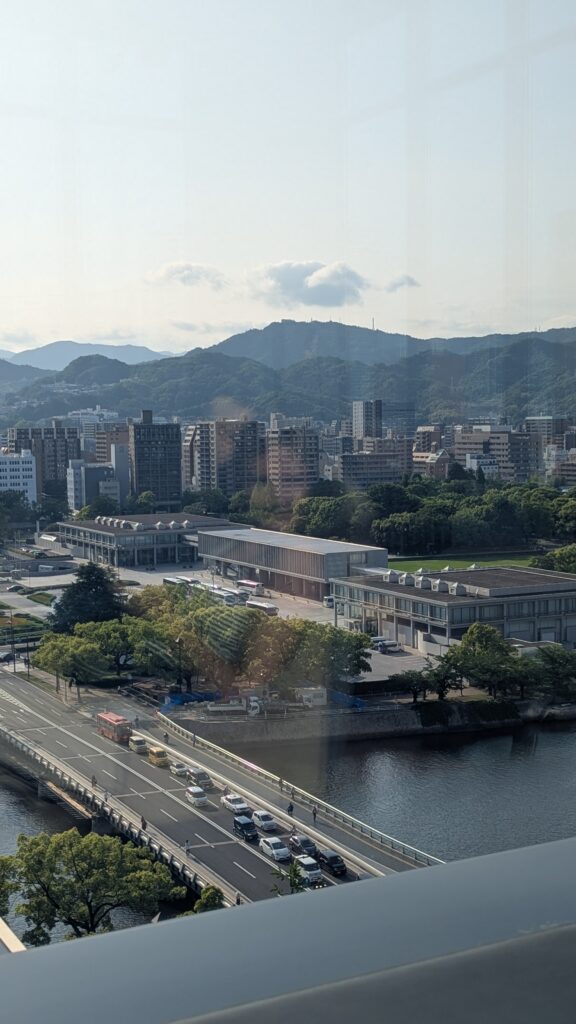
For dinner, we found a cosy gyoza place and ordered a generous plate of dumplings along with a spicy dan dan noodle soup to share. The soup gave us a bit of a scare at first—Szechuan pepper has a numbing effect that makes your lips and tongue feel like they’re numb and tingling—but once we realised we weren’t having allergic reactions or strokes, it was actually delicious.
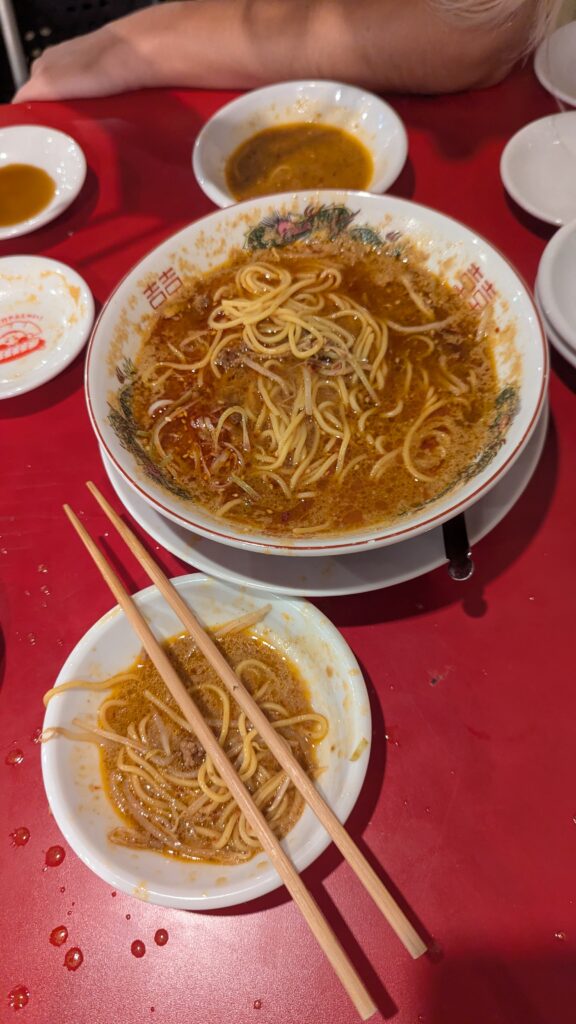
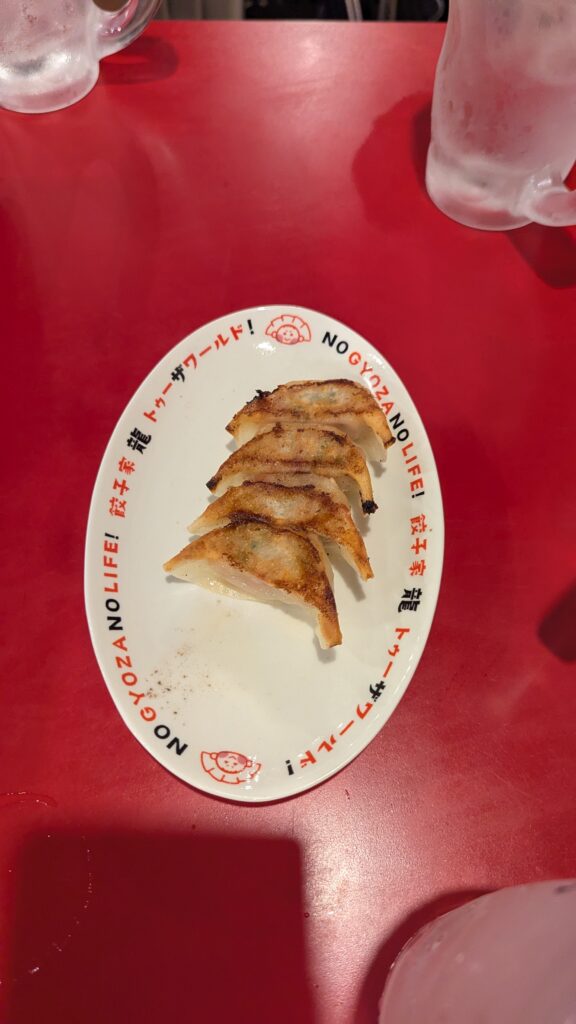
Back at the hotel, we got changed into the free but wildly unflattering pajamas provided in our room and settled in to watch a bit of Japanese TV. It’s hard to explain if you haven’t seen it, but everything is so exaggerated, loud, and brightly coloured—it feels like children’s programming for adults. We gave it about 15 minutes before deciding sleep was the better option.
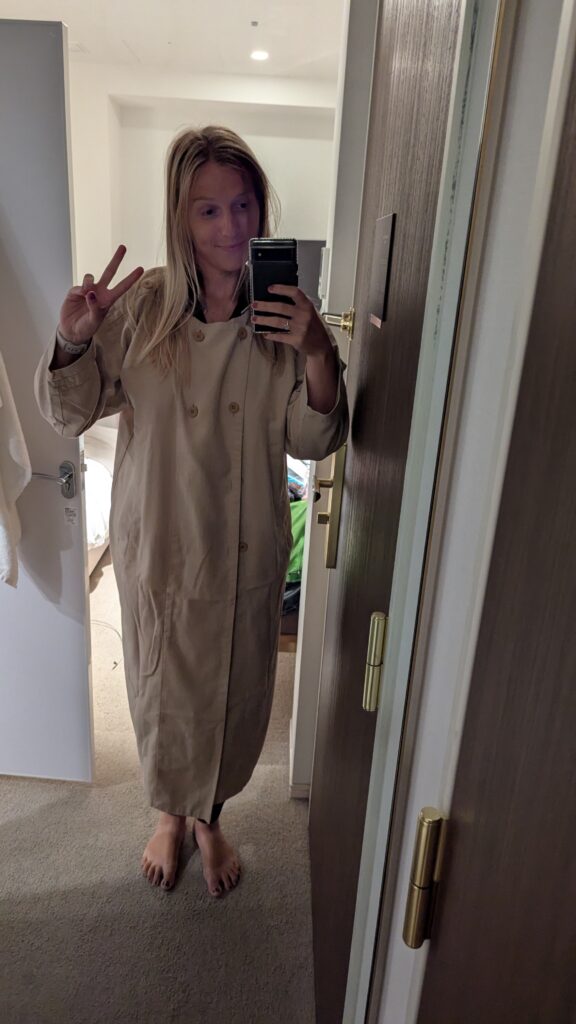
The next morning was our final walking tour of the trip. It took us around the monuments in Peace Park, starting with the Gates of Peace. After the bomb dropped, survivors described the sky going pitch black with ash and debris, and for over an hour no one could see anything. When visibility returned, all they could see was ruin—buildings flattened, people walking in a daze, their skin literally melting. Then came the infamous black rain. Many thought they had died and gone to hell. The Gates of Peace memorial symbolises Dante’s nine gates of hell—with one additional gate for peace.
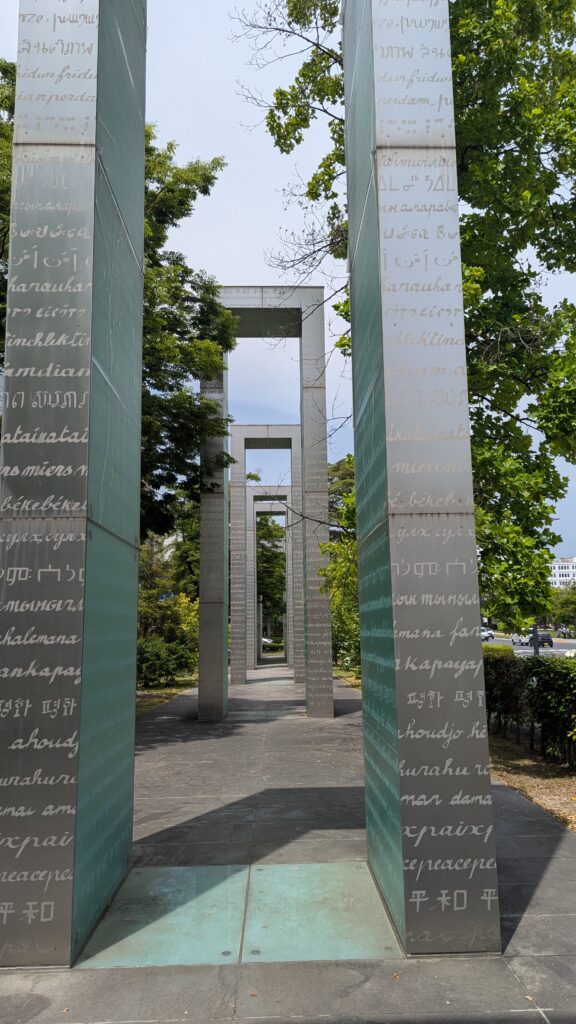
Next, we visited the Mother and Child statue, honouring the many women who died trying to protect their children, and all the babies who later died from radiation. Nearby, the Prayer Fountain gently flowed, inspired by survivor stories of people begging for water in the days after the blast. It represents the wish to finally give peace to the souls of the dead. All around Hiroshima, we noticed people leave bottles of water at memorials—small, touching gestures that feel deeply human.
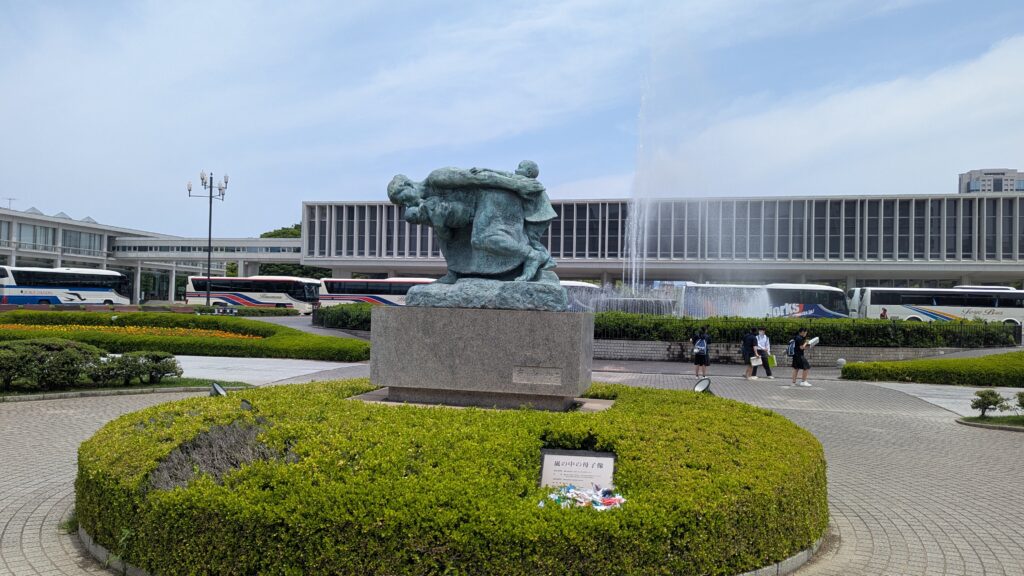
We continued to the Peace Memorial Hall, where a 360° panoramic engraving recreated the destroyed city using 140,000 tiles—one for each life lost. The real number is likely higher, but exact figures are impossible due to the complete obliteration of records and bodies, there are still posters asking for information on some missing people presumed dead.

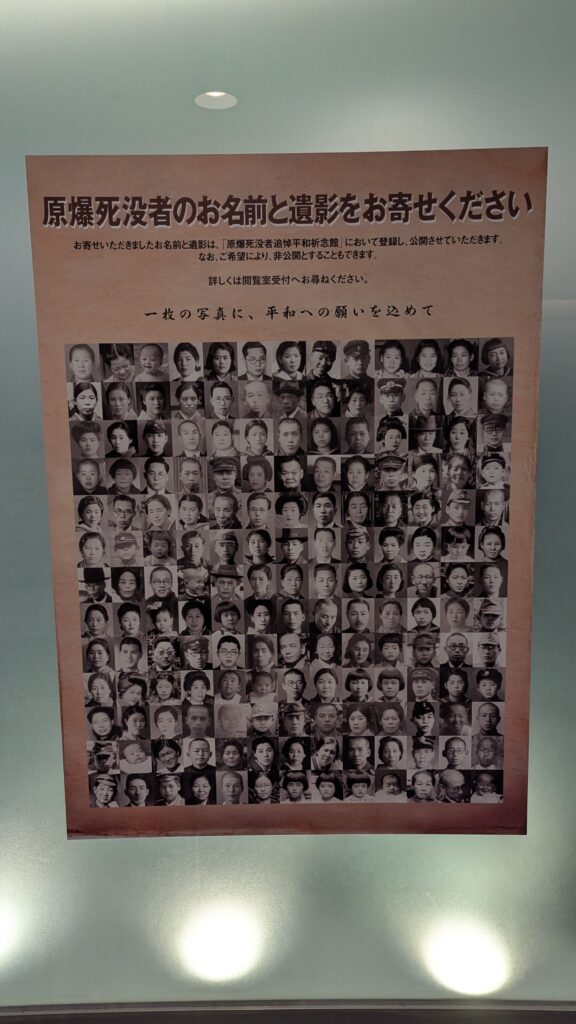
From there, we saw the cenotaph and the Flame of Peace, lit from a Buddhist monastery fire that has been burning for centuries. The flame will remain lit until nuclear weapons are eradicated—an act of both hope and quiet defiance.
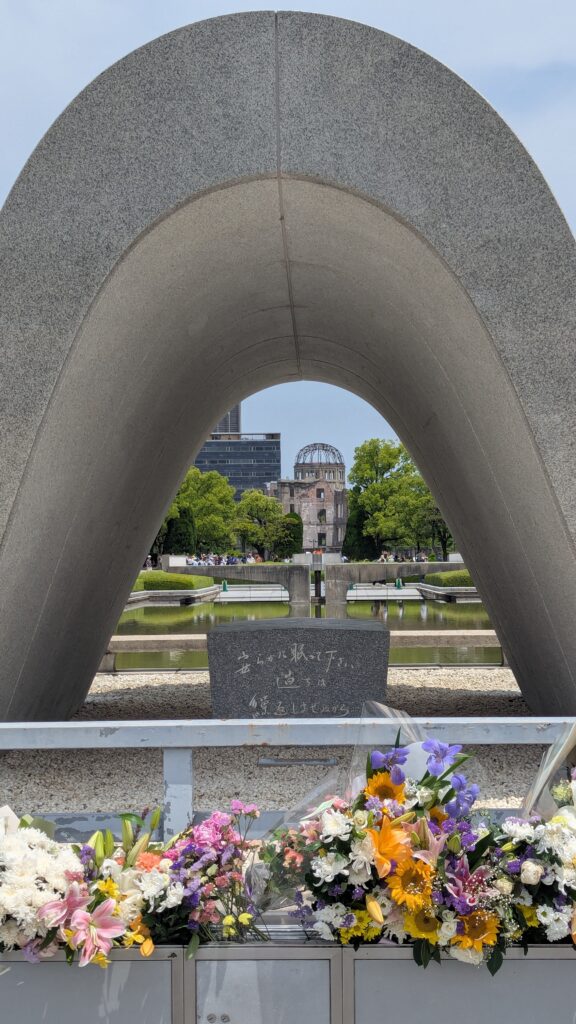
One of the most emotional sites was the Children’s Peace Monument, dedicated to a young girl who initially survived the bomb but later died of leukaemia. She believed in the old tale that if you folded 1,000 paper cranes, your wish would be granted. Despite completing the cranes, she passed away, and now schools across Japan send paper cranes each year in her memory.
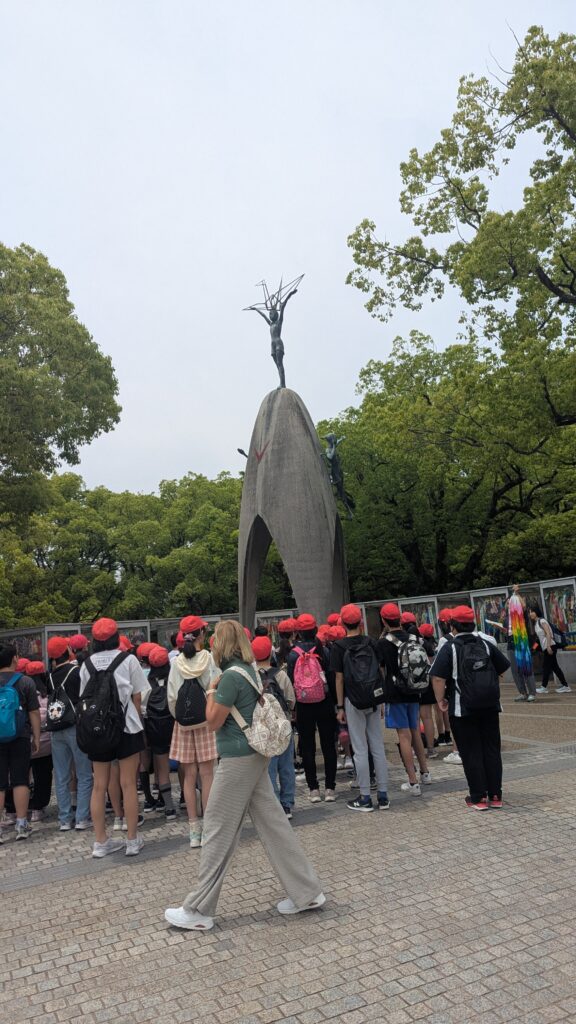
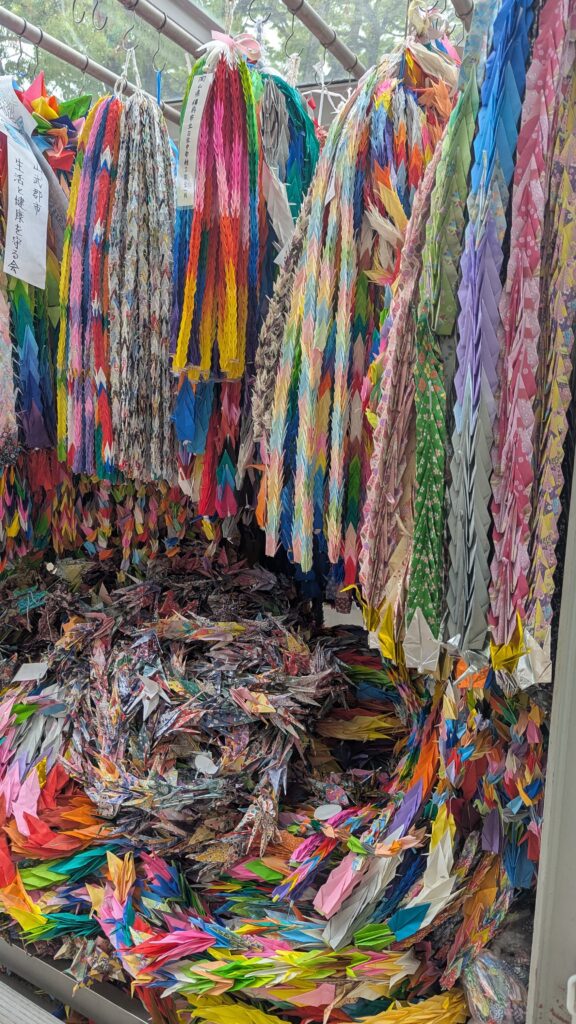
We also saw the burial mound of ashes, which holds the remains of tens of thousands of unidentified victims—heartbreakingly high and solemnly still. As well as the bell of peace.
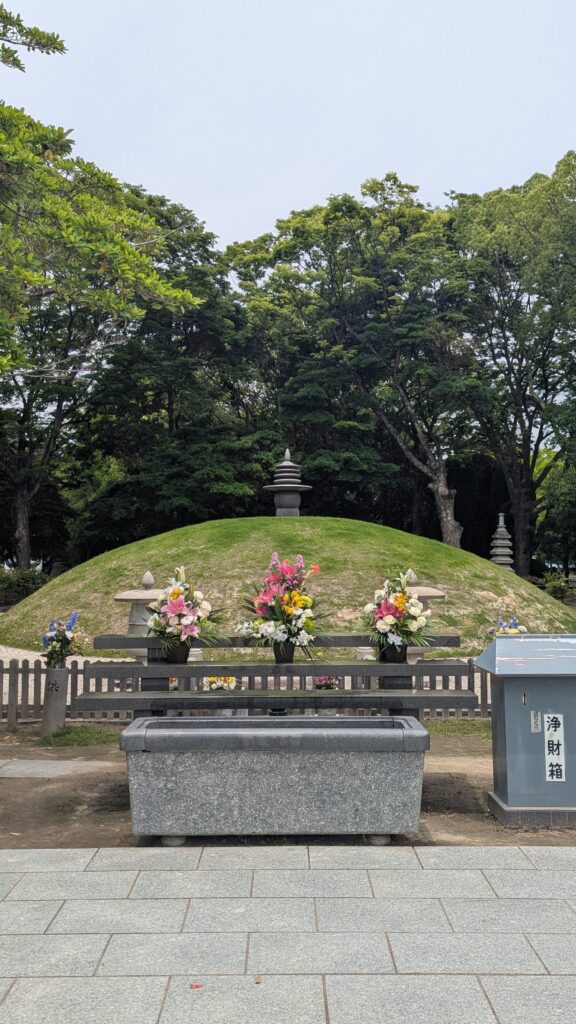
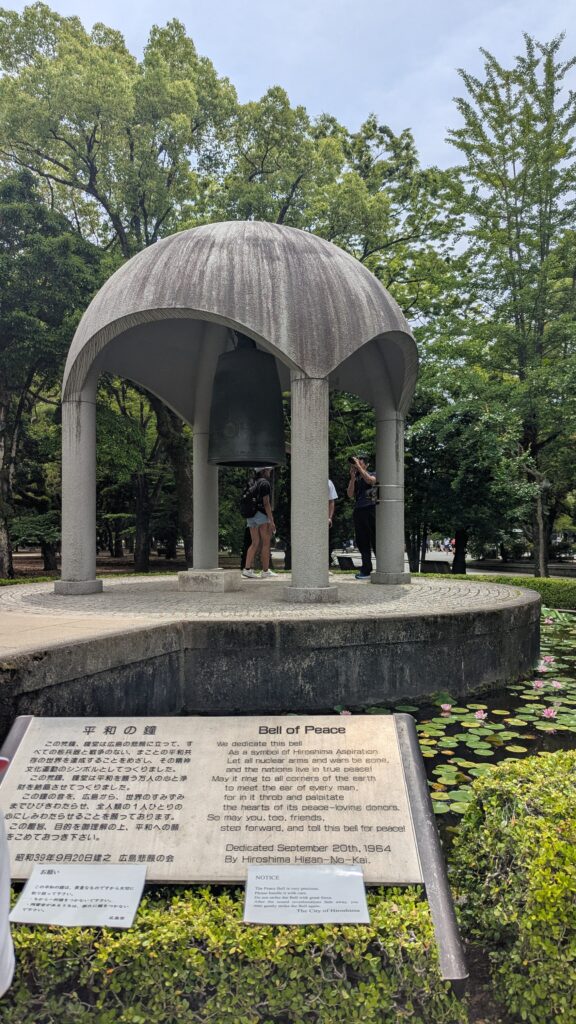
Our final stop was the iconic Atomic Bomb Dome. One of the few buildings left standing after the blast, it has been preserved in its damaged state and declared a UNESCO World Heritage site. Supported only by minimal structural reinforcement, it’s a haunting and essential reminder of what once happened here.
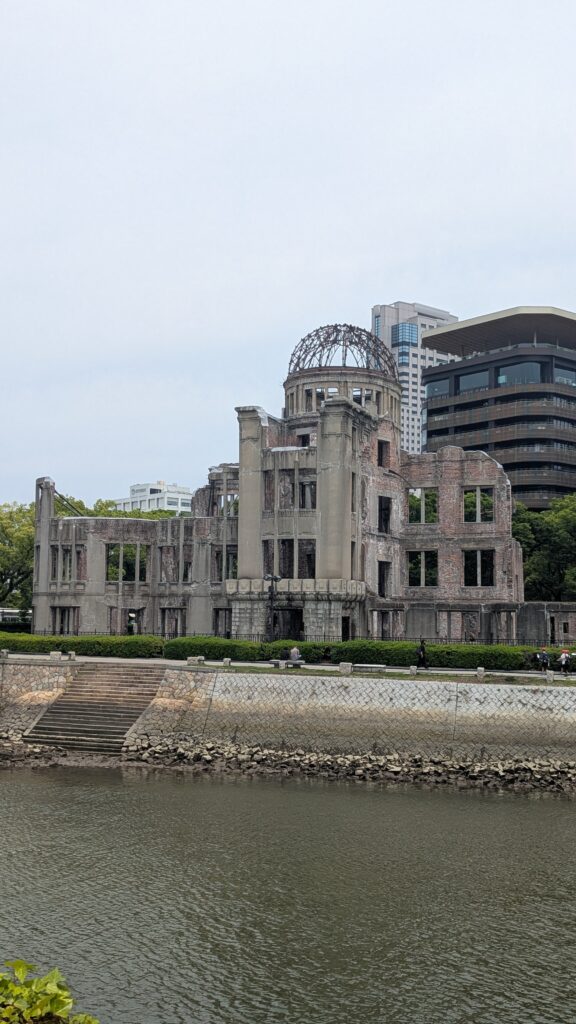
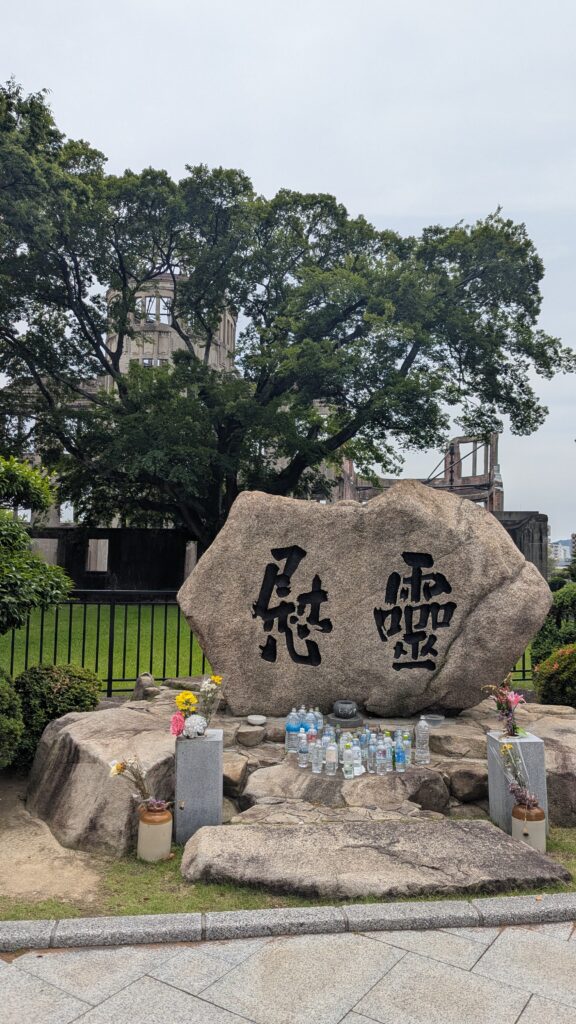
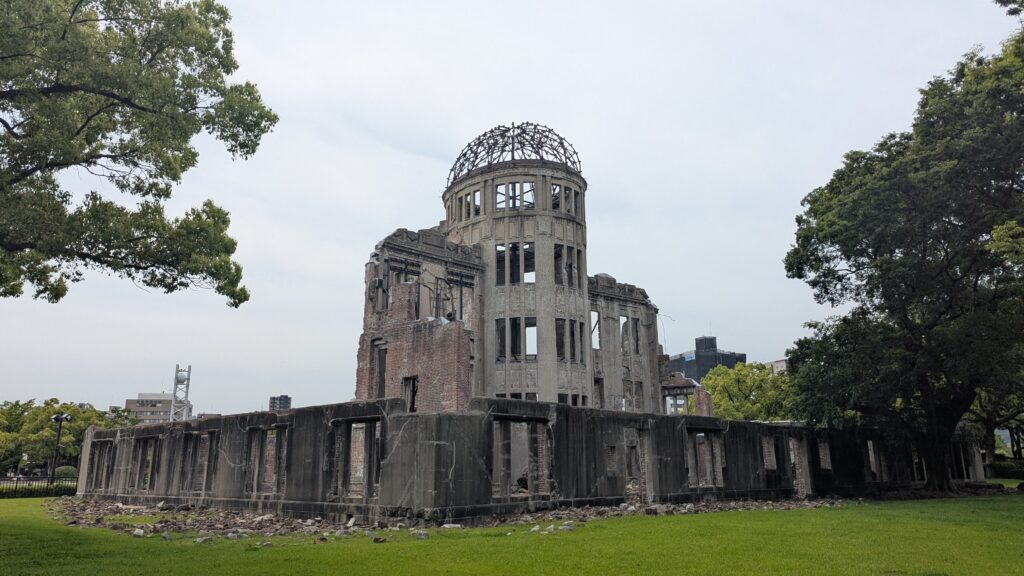
After the tour, we went for lunch at an okonomiyaki restaurant and shared a pancake and some soba noodles. It wasn’t quite as good as the one in Osaka, but still comforting and tasty. For dessert, I treated myself to my favourite 7-Eleven combo: strawberry milk and a custard doughnut. With only a few days left, I wanted to savour all the little things I’d come to love.
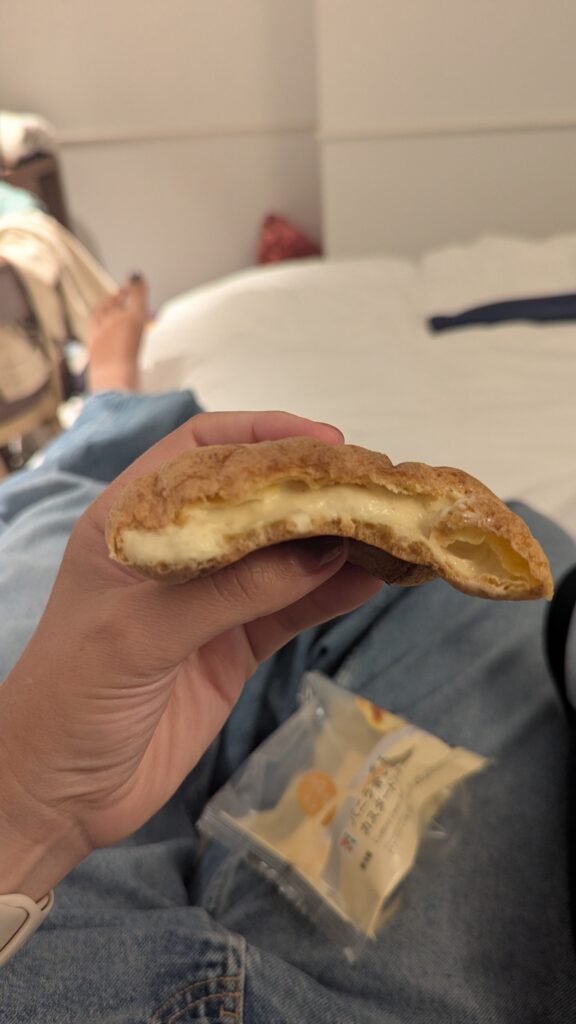
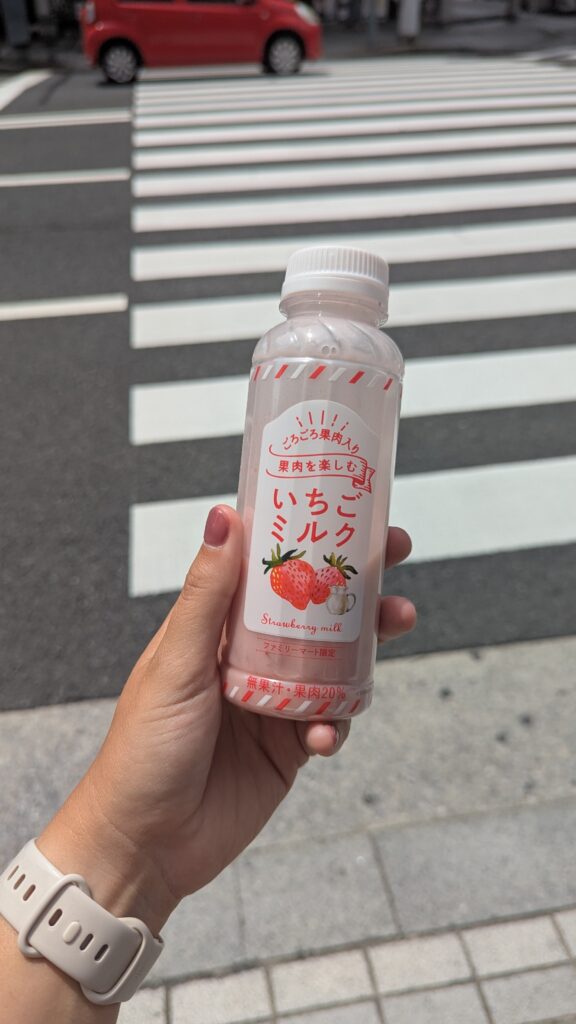
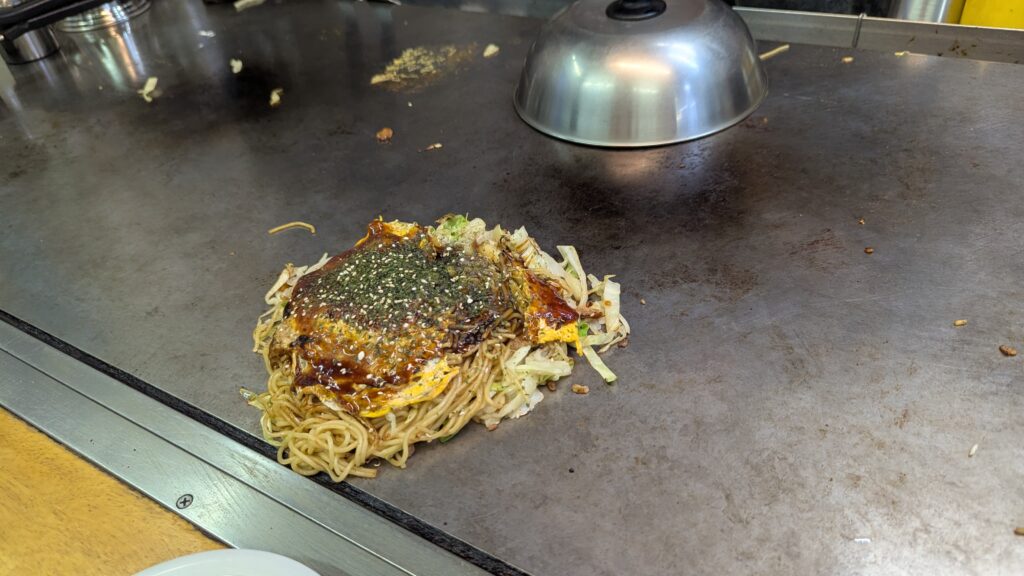
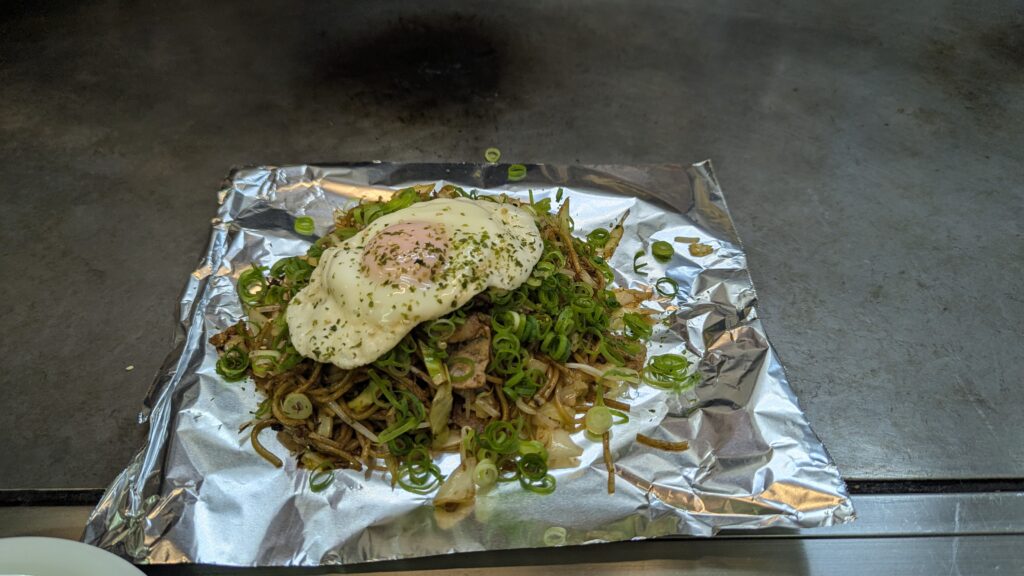
In the afternoon, we visited Hiroshima Castle. Structurally, it was similar to the others we’d seen on the trip, though this one had a clever second moat with a collapsible outer wall—designed to flood incoming attackers. There was also a samurai sword to try lifting (way heavier than it looks!) and a samurai helmet to try on (as heavy as expected).
That evening we had one final katsu curry—Grace’s favourite—ending the day the way all good days in Japan should end: full and content.
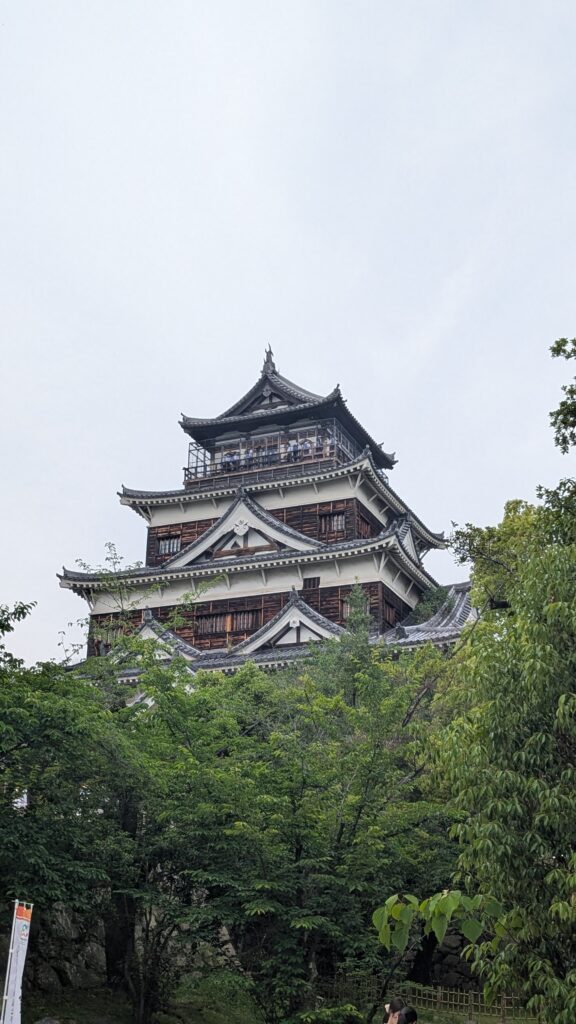
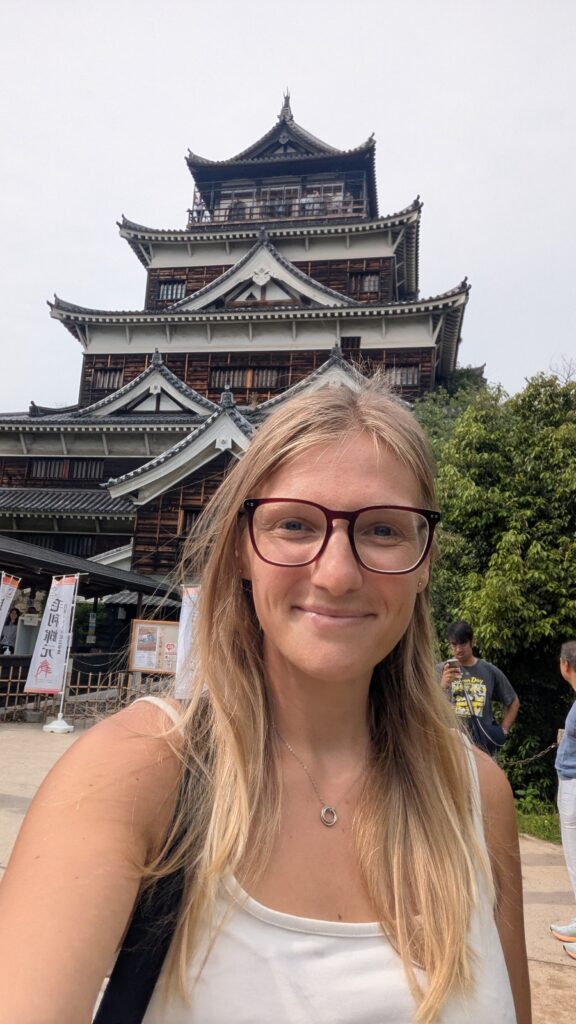
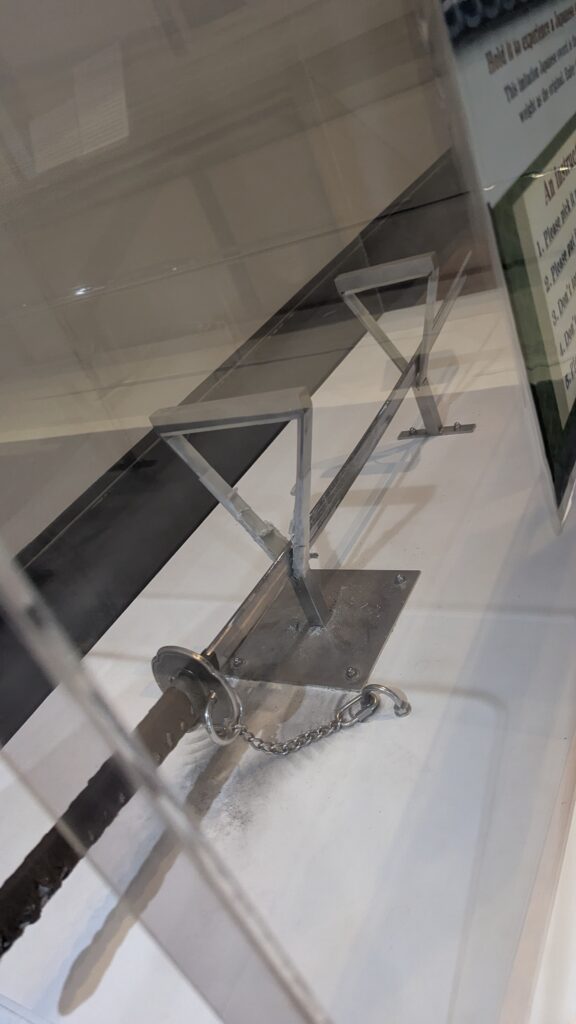
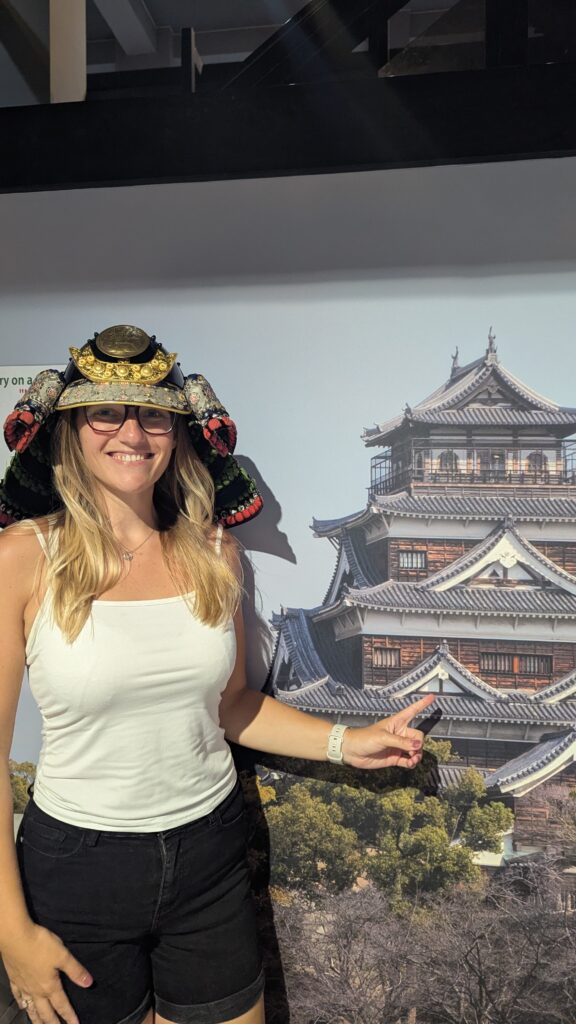
Unfortunately, our last full day in Japan was a rainy one, and since we’d done nearly every other indoor activity, we booked ourselves in for something a bit different: archery.We turned up completely soaked to a tiny indoor range, where we were taught traditional Japanese horseback archery. It’s quite different from Western-style archery—complete with special gloves, fancy outfits, and a very particular stance and technique. To draw the bow, you make an “OK” symbol with your hand and follow a multi-step process. It was much harder than we expected, and just as we thought we were getting the hang of it, we’d completely miss the target again.
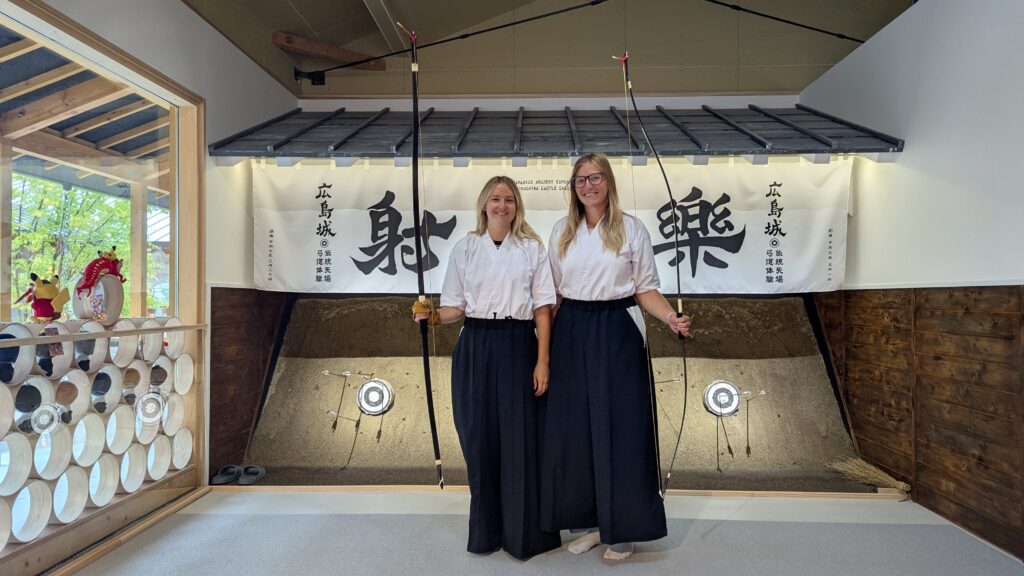
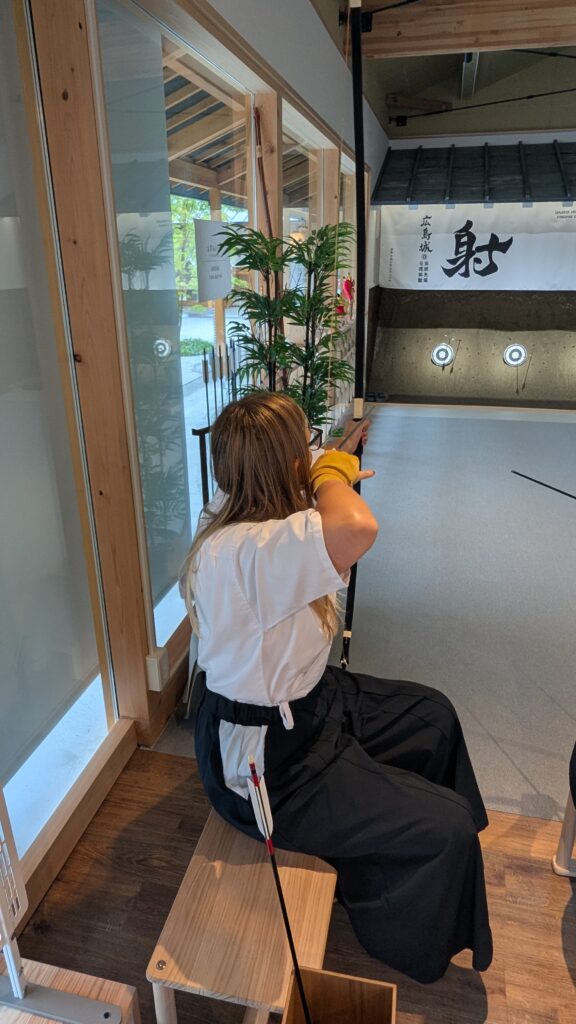

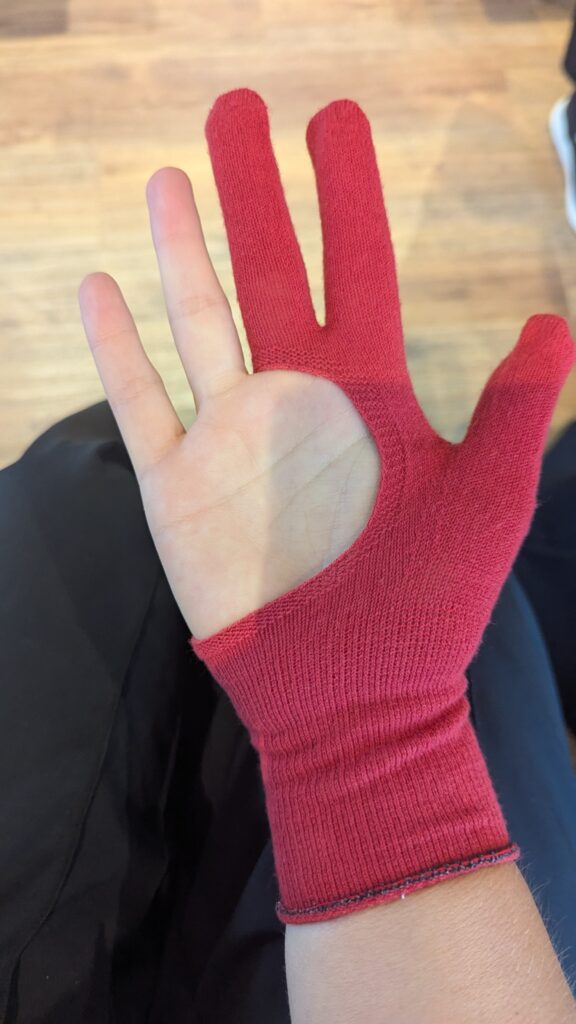
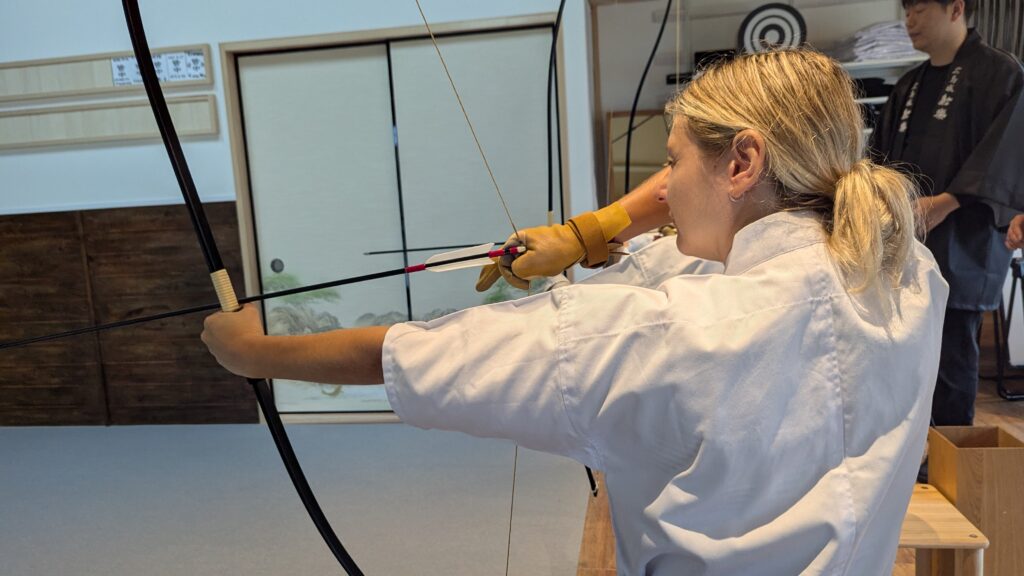
I hit the target first, but Grace quickly caught up and overtook me. By the final round, the score was 8–4 in her favour. We were both missing far more than we were hitting, so it’s safe to say we won’t be winning any medals anytime soon!

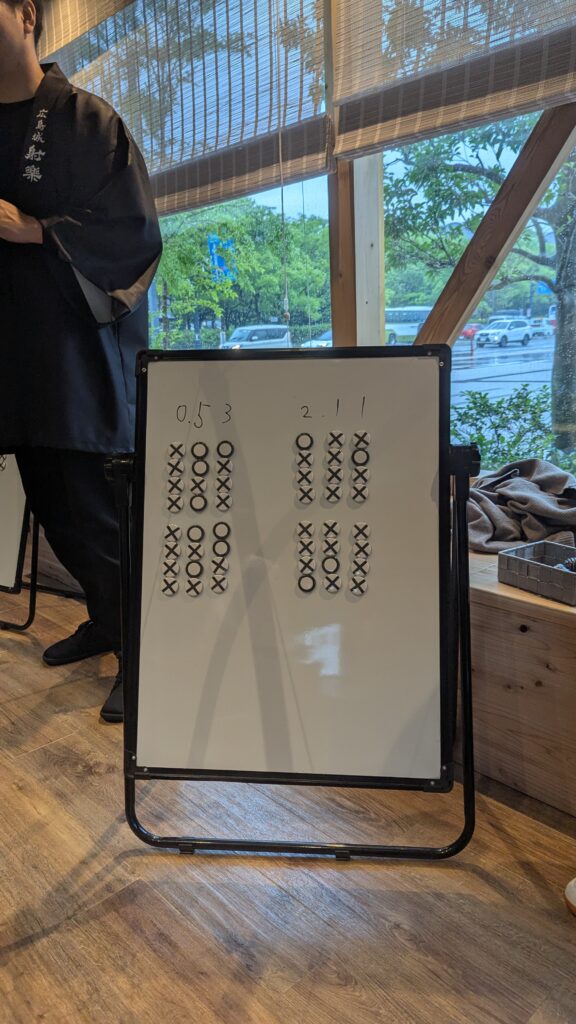
After that we perused some shops, mostly to get out of the rain, I brought some sake for Adam and we both bought and sent our last postcards of the trip before heading back to the hotel.
The final afternoon was a bit of a washout—literally. We’d hoped to spend the afternoon walking on a nearby island or exploring a canyon trail, but the rain put a dampener on that plan. Instead, we took it as a sign to slow down, pack our bags, and mentally prepare for the mammoth journey home.
We had, however, saved one last special treat for the evening: dinner at a fancy teppanyaki restaurant, the kind where the chef cooks everything in front of you on a sizzling metal grill. It was a small and intimate spot, with only ten seats at the counter, which made the whole experience feel quite exclusive. Unsure what to order, we went with the chef’s choice set menu—eight courses and unlimited drinks for just £55 each. And honestly? It was an absolute steal.
The meal was spectacular—dish after dish of beautifully prepared food, each more delicious than the last. The wagyu beef with red wine sauce might just be one of the best things I’ve ever eaten. It was so good, in fact, that we cheekily ordered an extra round of it, which only added £10 to the bill. Worth every penny.
Here’s what we had:
- Crab and salmon roe salad
- Thinly sliced raw fish sprinkled with gold
- Buttered asparagus with a rich aubergine sauce
- Grilled lobster
- Wagyu steak with red wine sauce
- Fresh sushi
- Miso and clam soup
- Another round of Wagyu
- Dessert: a thick pancake topped with syrup and ice cream
All accompanied by a very generous amount of red, white, and plum wine, paired to match the different courses. Nine dishes, five drinks, and a cooking show—all for £65 each. Unbelievable value, and the perfect note to end the trip on.

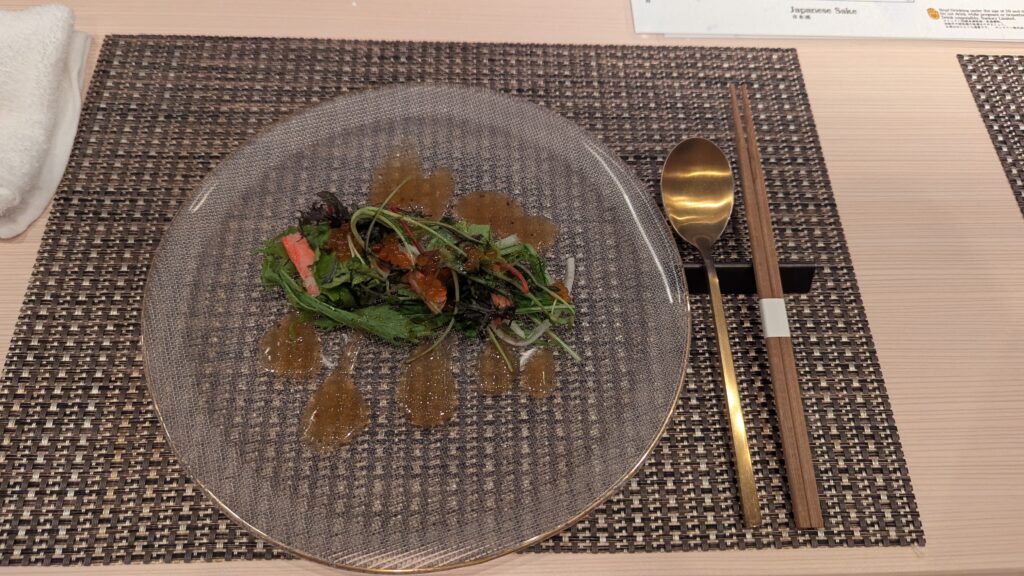
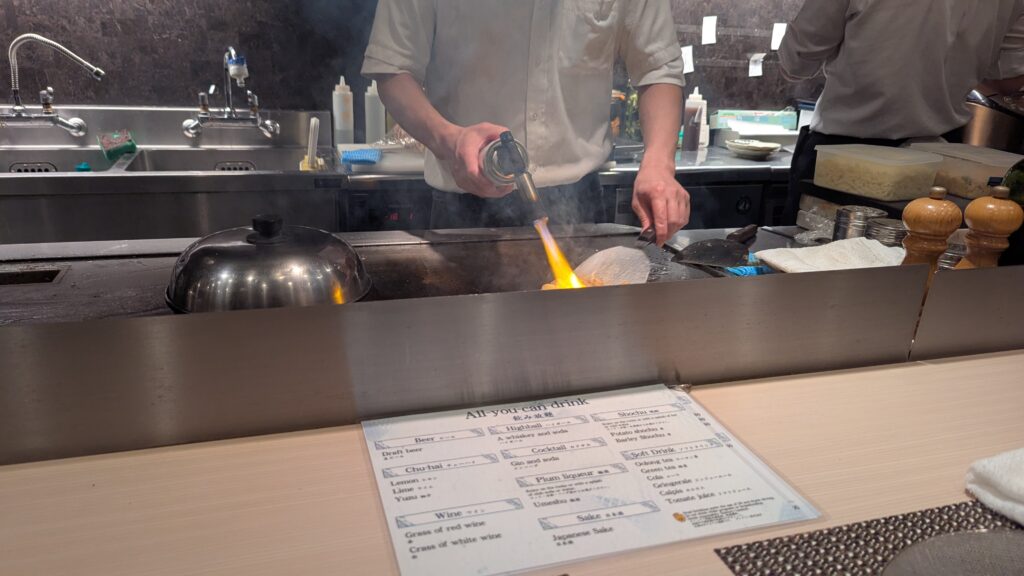
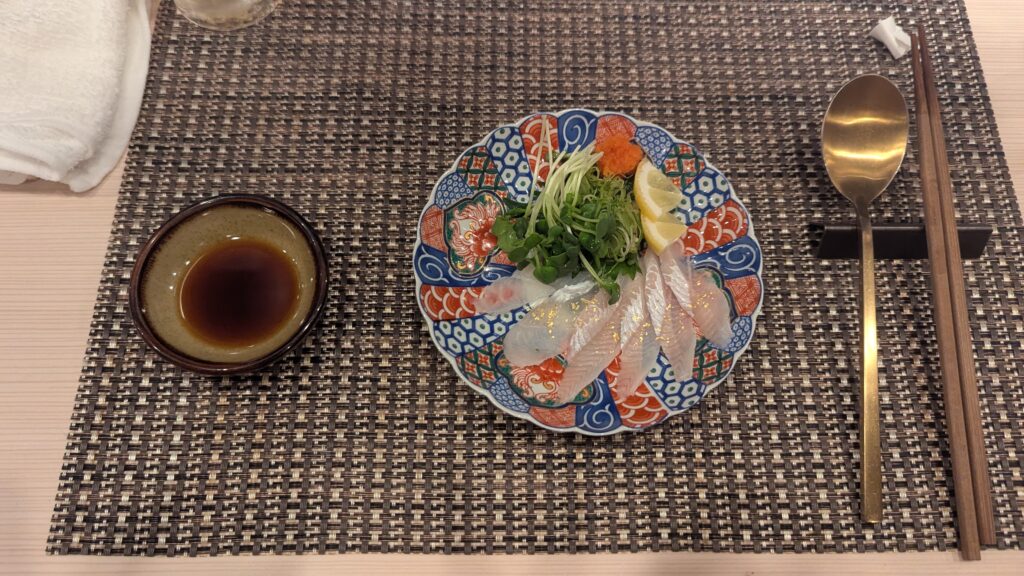
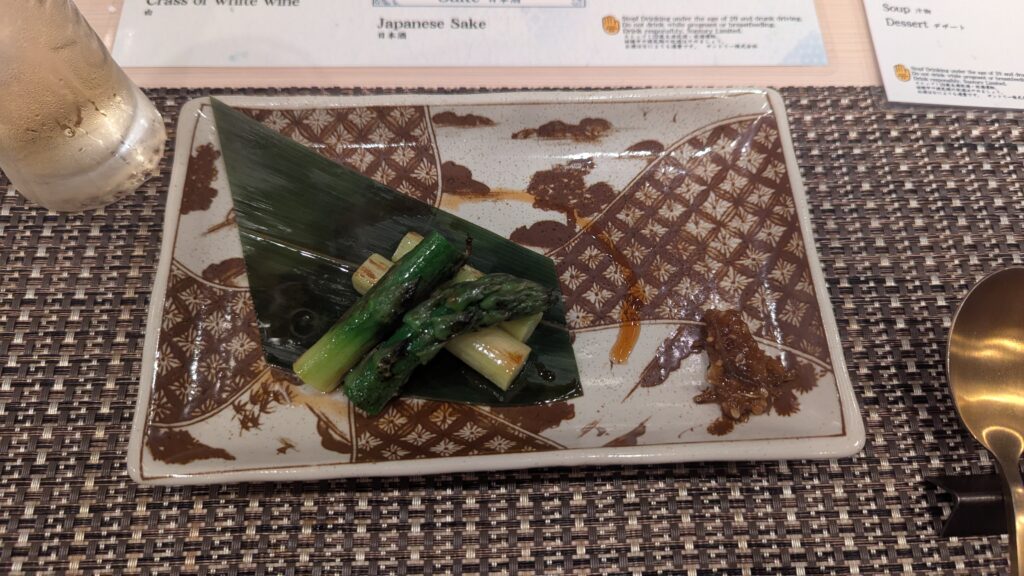
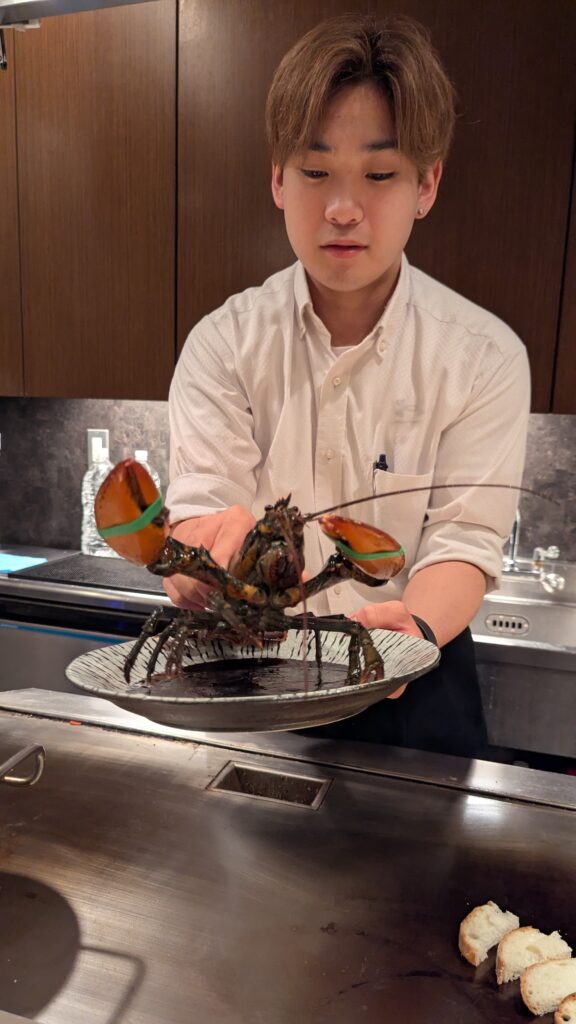
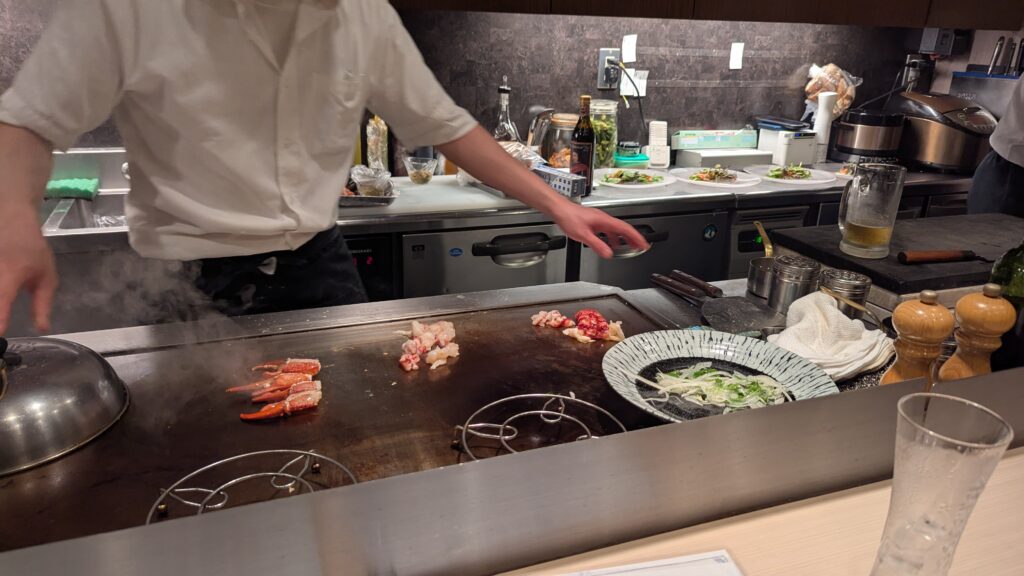
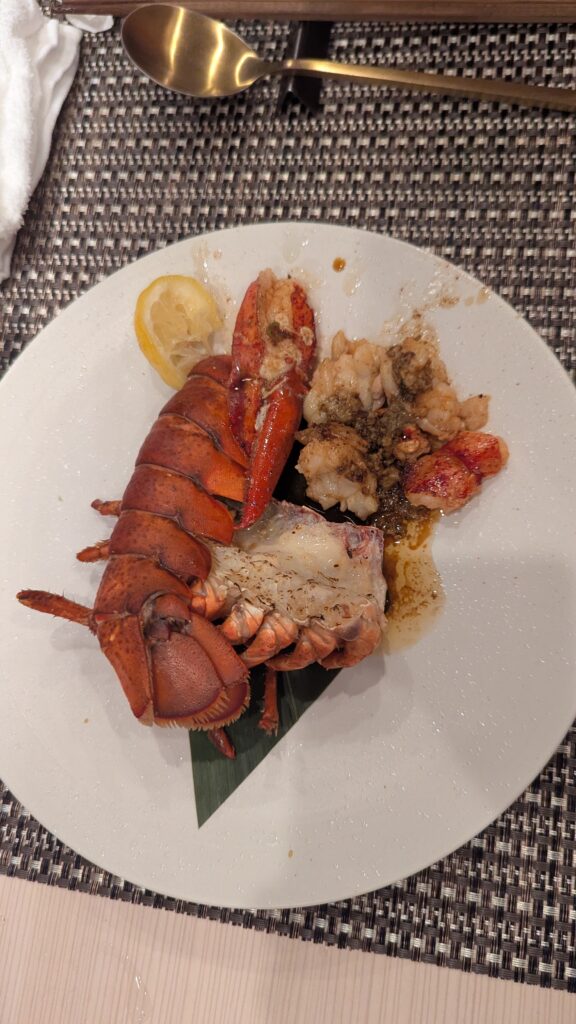
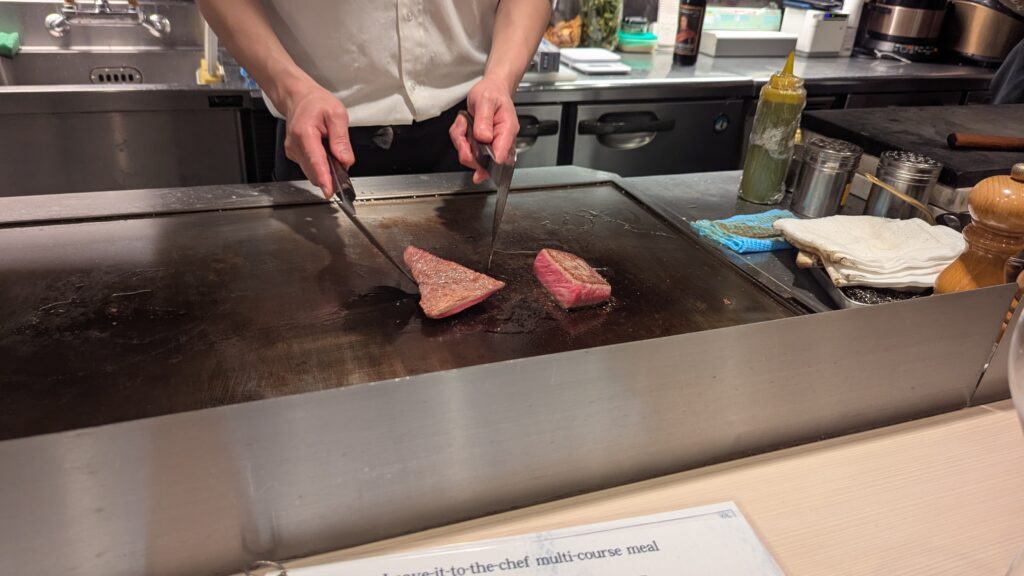
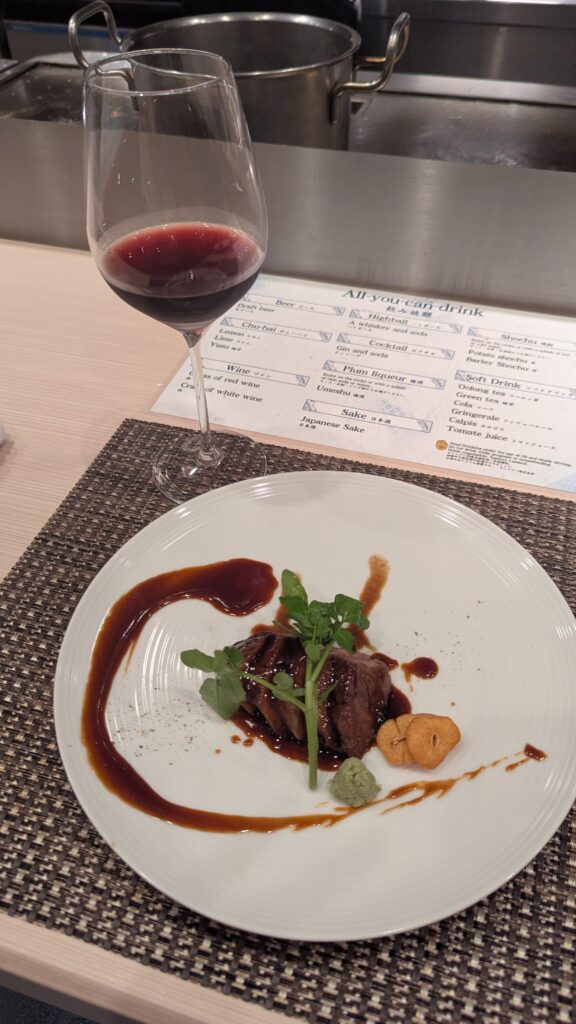
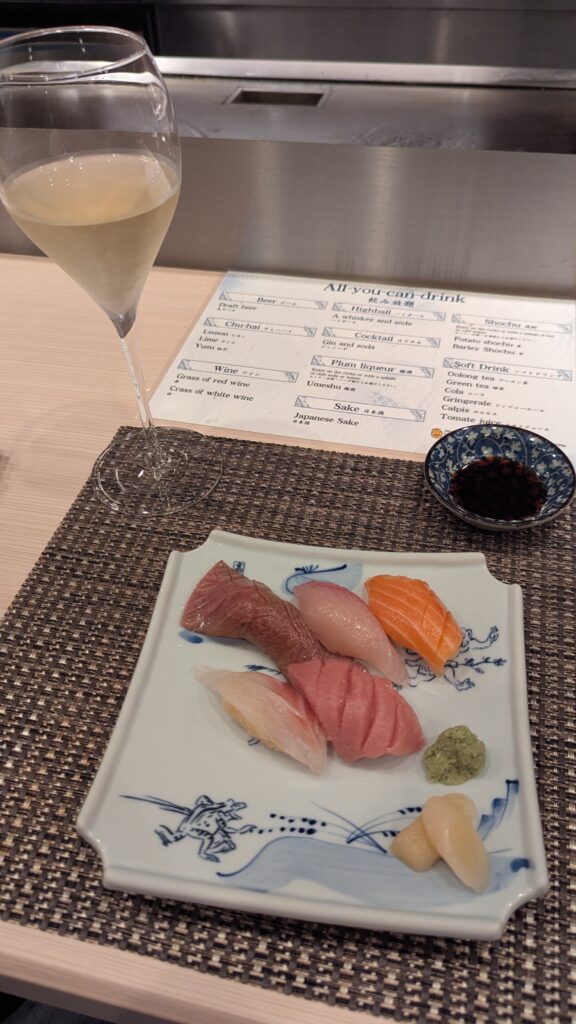
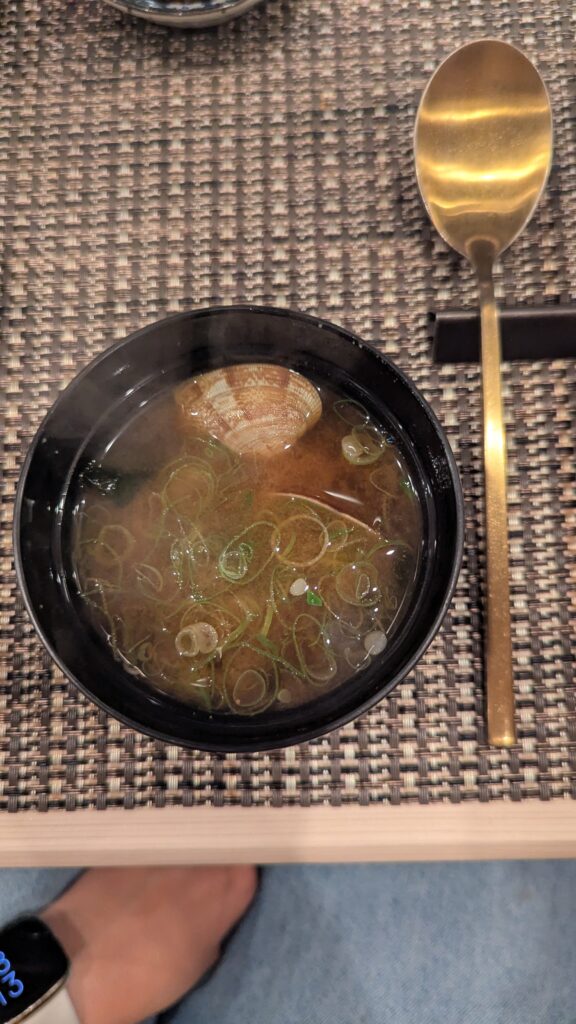
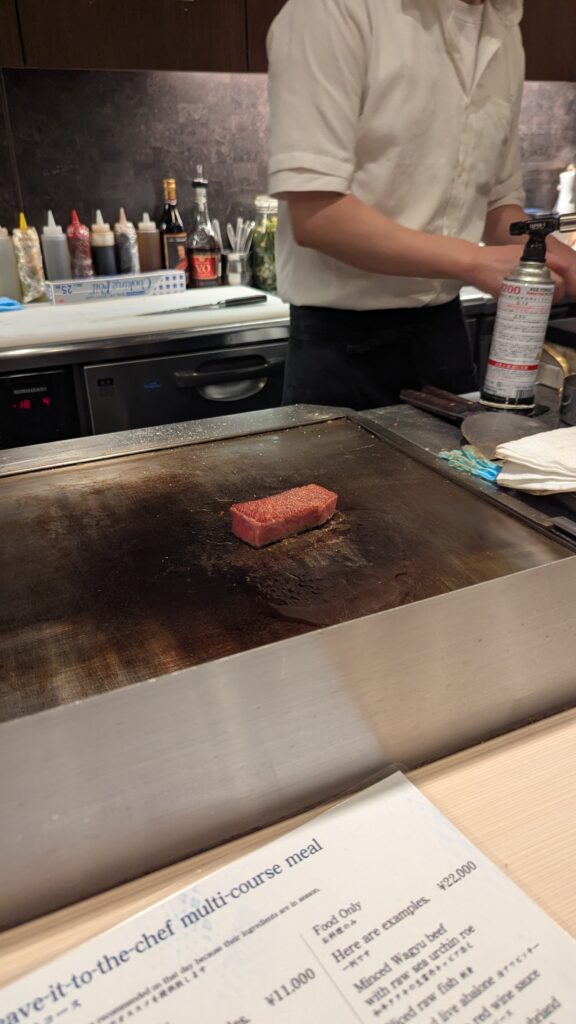
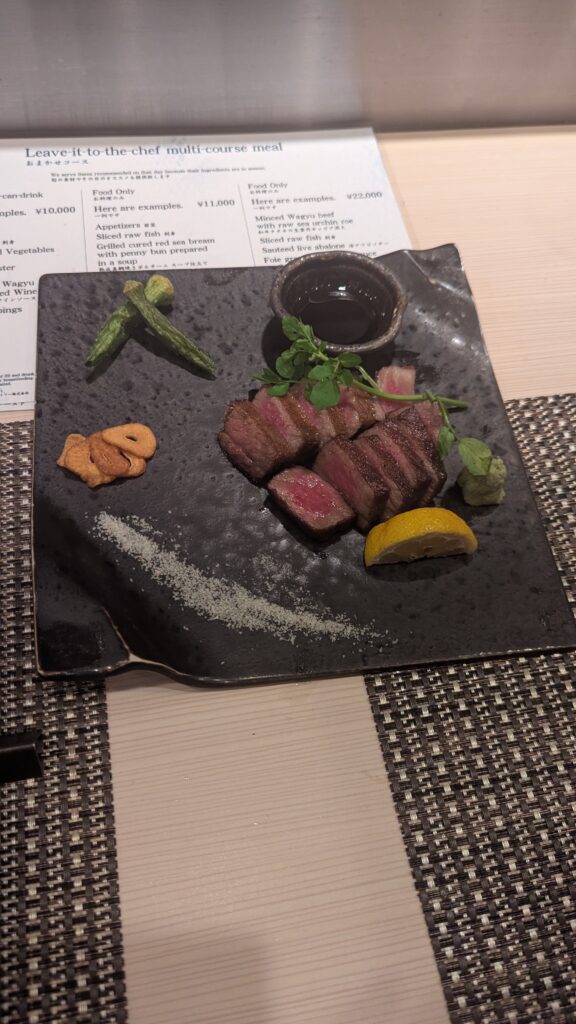

There was a moment (several glasses in) where we briefly considered one final karaoke night as a last hurrah—but thankfully, good sense prevailed.
When our alarms went off at 6:30am the next morning, we were extremely relieved not to be nursing hangovers while attempting to navigate Japan’s public transport system.And so, the long journey home began: bullet train to Osaka, a maze of underground transfers, two long-haul flights with a stopover, and finally, multiple trains from London to Cambridge… on a bank holiday, no less. Wish me luck! But honestly, despite the daunting trek ahead, I wouldn’t trade this trip for anything. It’s been an incredible three-and-a-bit months—packed with adventures, new experiences, and probably a few too many snacks. We’ve seen so much, done so much, and maybe spent a bit too much, but it’s been completely worth it.
So that’s it from me… for now. Until the next adventure—I’ll tell you all about it then.
Love, Alice x
